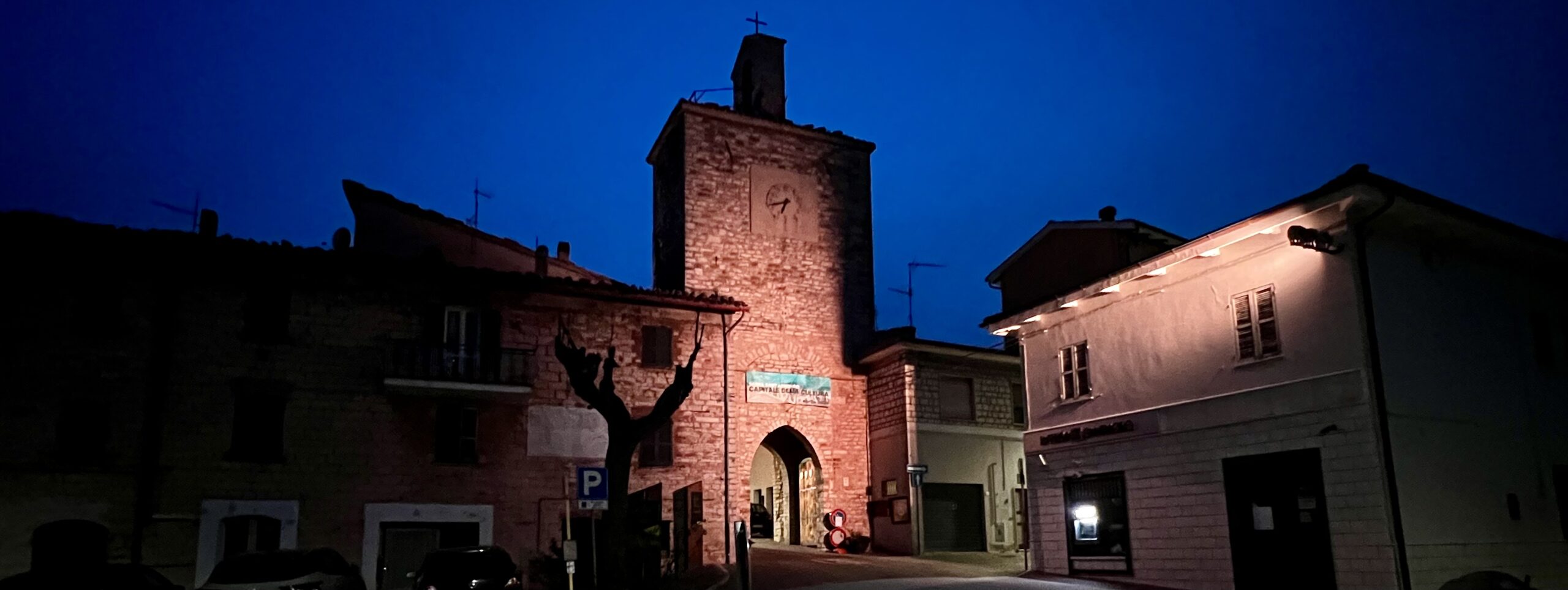28 March – 02 April 2024
We arrived in Serra in early afternoon. Serra’s notorious wind greeted us with a roar that sounded like continuous thunder. There was an extreme wind advisory, and Bonnie for the first time in her life was actually stopped dead in the street by the blasts.
But we managed to make the rounds and greet some Serrane we know—the next door neighbor Marcella, the baker who practices her English on Robert every morning, the Diamantini brothers at their general store, and the owner and her daughters at Zio Go, a nicely stocked alimentari Bonnie frequents for Coke Zero. As Bonnie pushed open the door of the store, Zio Go shouted “Bonnie!” and rushed up with a hug and kisses. So startling, but so lovely.
Intermittent rain showers and wind made things chilly indoors and out. The Sabbatini house is occupied only on holidays, so the upper floor was cold when we arrived. Gino and Adriana arrived a few days earlier and heated the main floor with the big fireplace and a nifty space heater that uses a fuel powered by electricity.
For the upstairs bedrooms, we used the wood stove in the hallway. Bonnie and Robert prefer cool nights, but Luciana fretted. (Are you SURE you don’t need a heater in your room?) Italians are convinced that cold air will make you sick. Robert told the Serrane that the wind at night was music for making dreams.
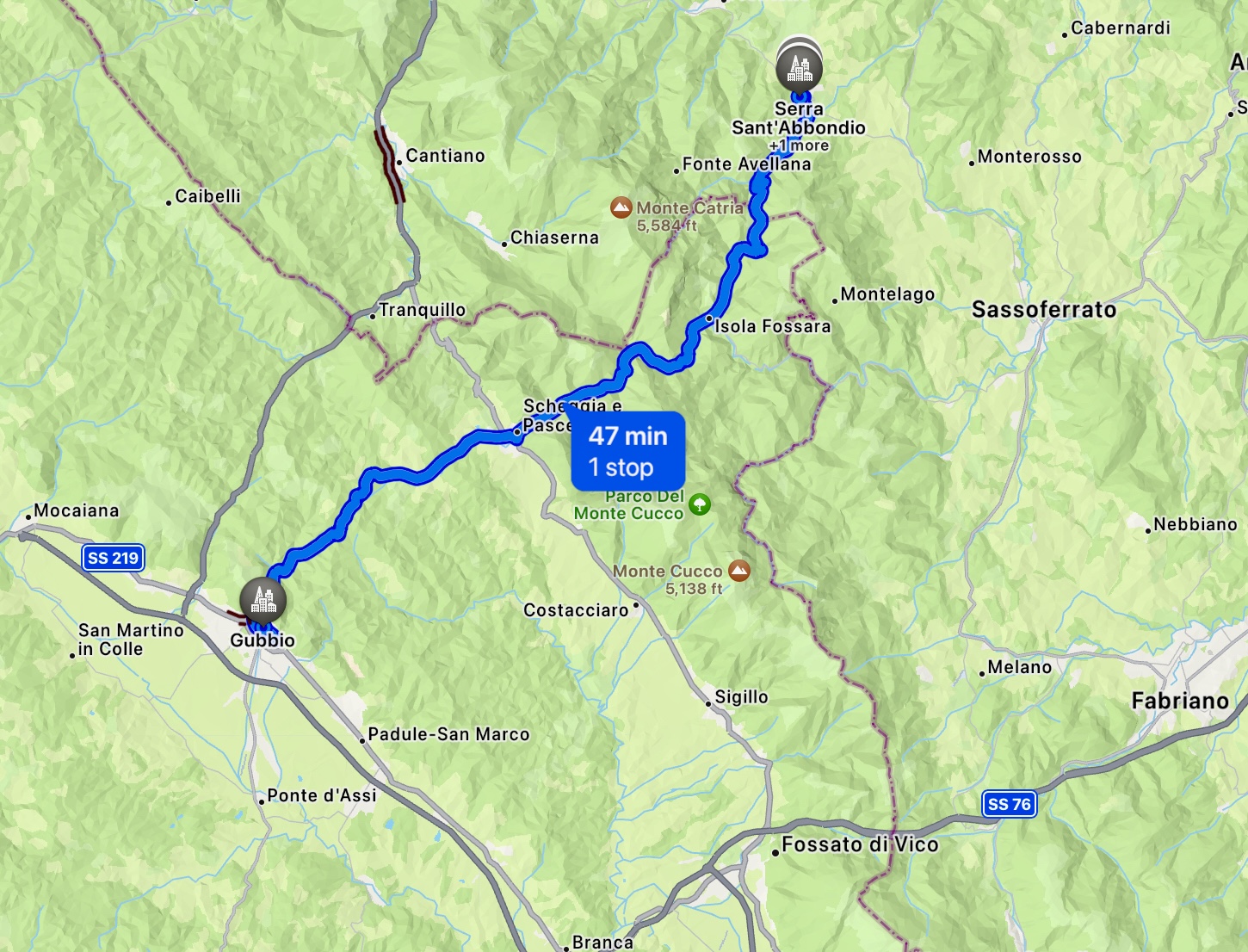
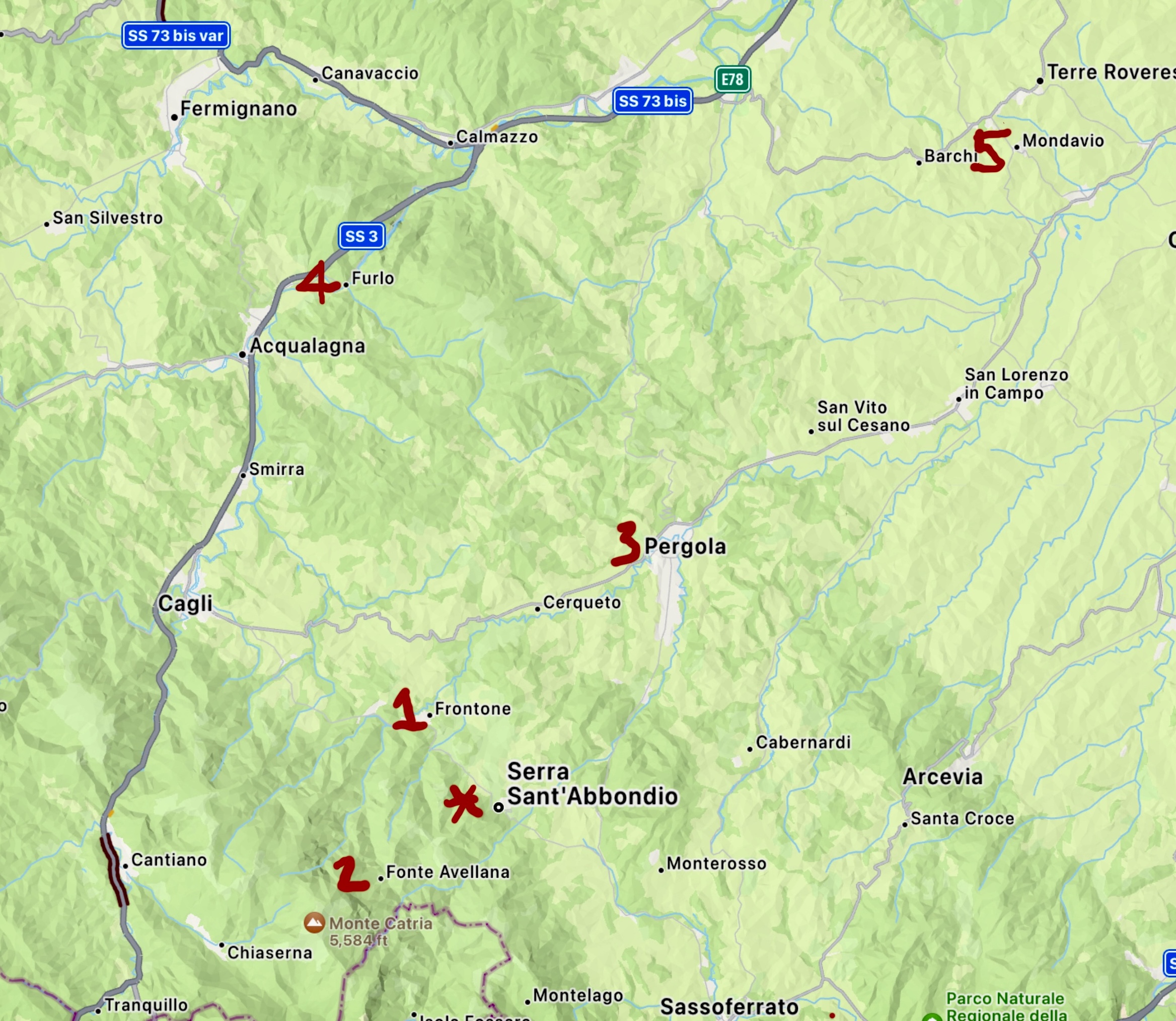
A Bit of Context and History
Serra Sant’Abbondio is a comune of 1,000 in the province of Le Marche, very close to the Umbrian border. Robert’s grandmother (a Berardi) came from Isola Fossara just across the Umbrian border. Serra Sant’Abbondio lies within the region of Pesaro Urbino (PU). In the early 1950s the population was more than twice what it is today, but as the Italian economy recovered after WWII, many left for Rome and other cities.
At an altitude of 523 meters Serra has occasional snow. Robert’s dad often remembered the three feet of snow he trudged through in January 1929, when, at age fifteen, he left Serra to go to Pennsylvania for work.
A settlement existed here at the edge of the Appenine Mountains during the Iron Age, later came under the rule of Gubbio, and became free at the end of the 13th century. Its location was strategic because it was on shortest route from Umbria through the mountains to the Adriatic coast. In 1384, Serra came under the rule of the Duke of Urbino.
In 1476, Duke Federico da Montefeltro commissioned the architect Francesco di Giorgio Martini to build a fortress and to enclose an enlarged town behind a wall (see the imagined illustration below). This took about ten years and was celebrated by the inhabitants. The architect recorded the plans in his manuscripts. In fact, while Robert was studying at UC Berkeley (1968-1972), he found the diagram in the College of Environmental Design Library and sent copies to Serra. Robert is still remembered in town for this discovery.
On this trip, we read that the duke used this unusual strategy throughout his territory—building fortifications within a town rather than outside, assuring the residents of their safety while under attack, rather than building a fort outside the town that seemed separate and in control of the residents. Unfortunately, Serra’s fort was demolished by a later duke so it would not fall into the hands of Cesare Borgia. Two of the four gates remain today and fragments of the wall.
Today, Serra has no restaurants in the town, although there are three nearby. There is one tobacconist, two bars, one butcher shop open three days a week, an alimentary, a general store that also carries a full range of appliances, two hairstylists, a B&B, and a great bakery. Robert remembers when there were two hotels and three bars, one which in 1962 had the only television and telephone.
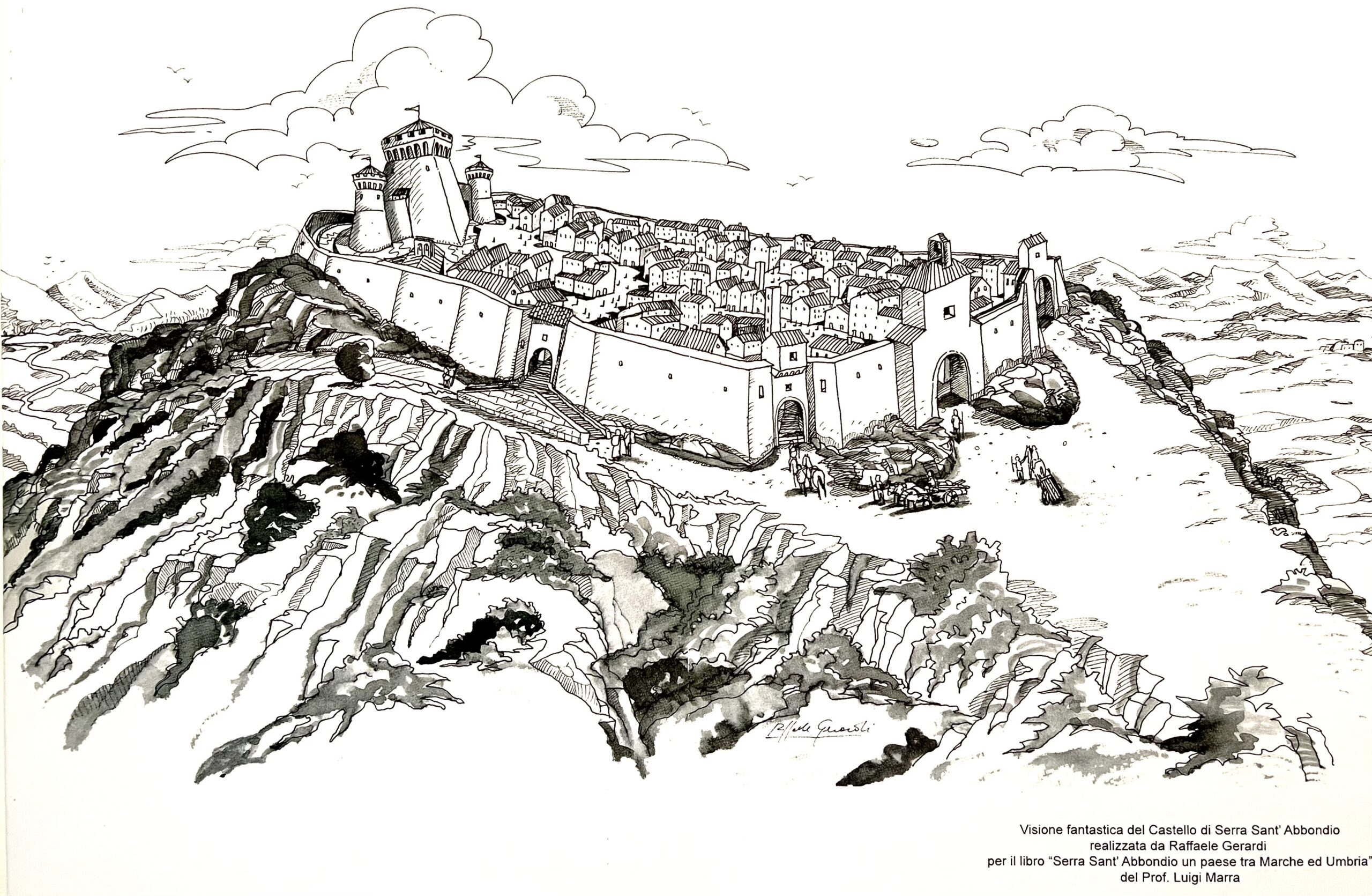
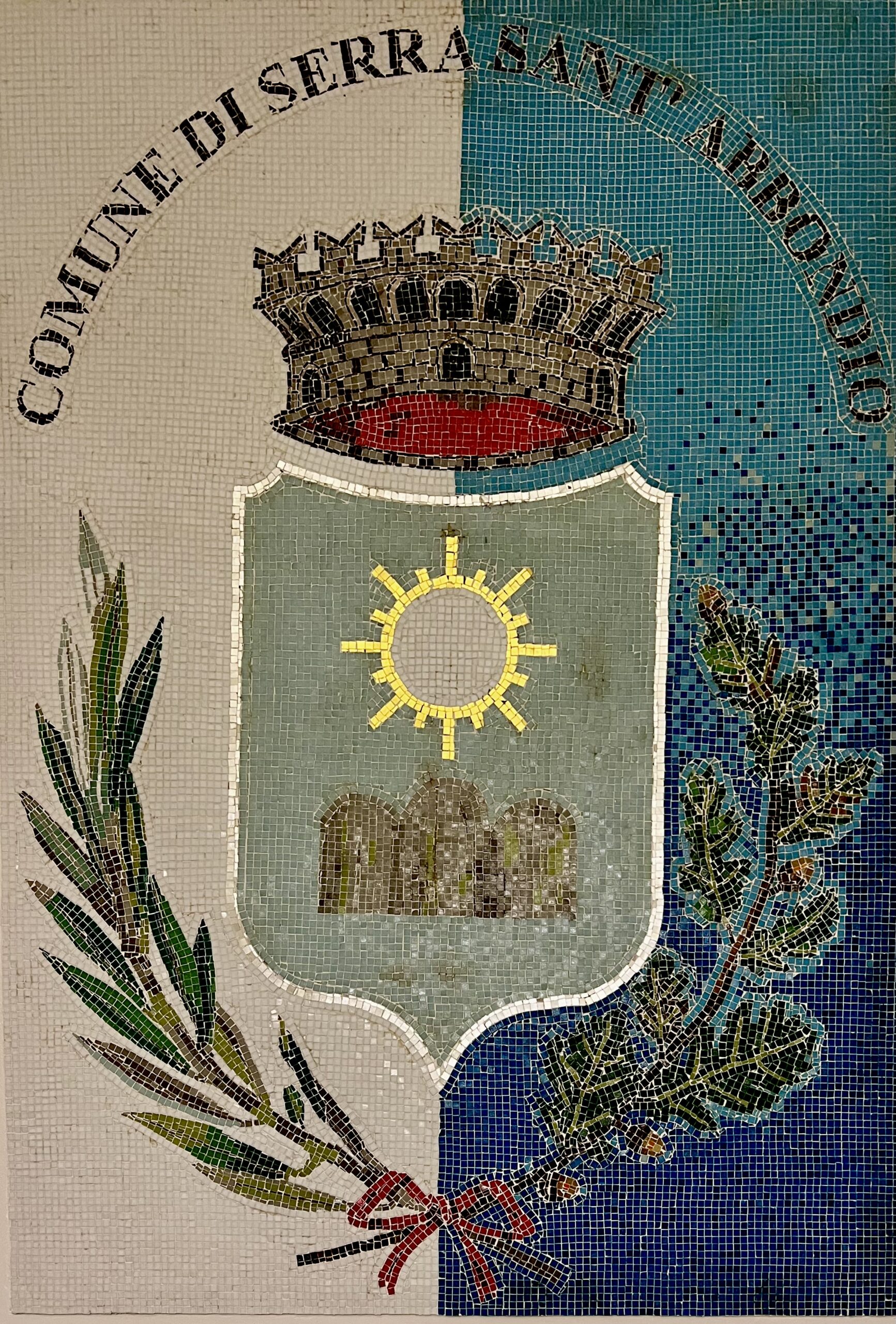
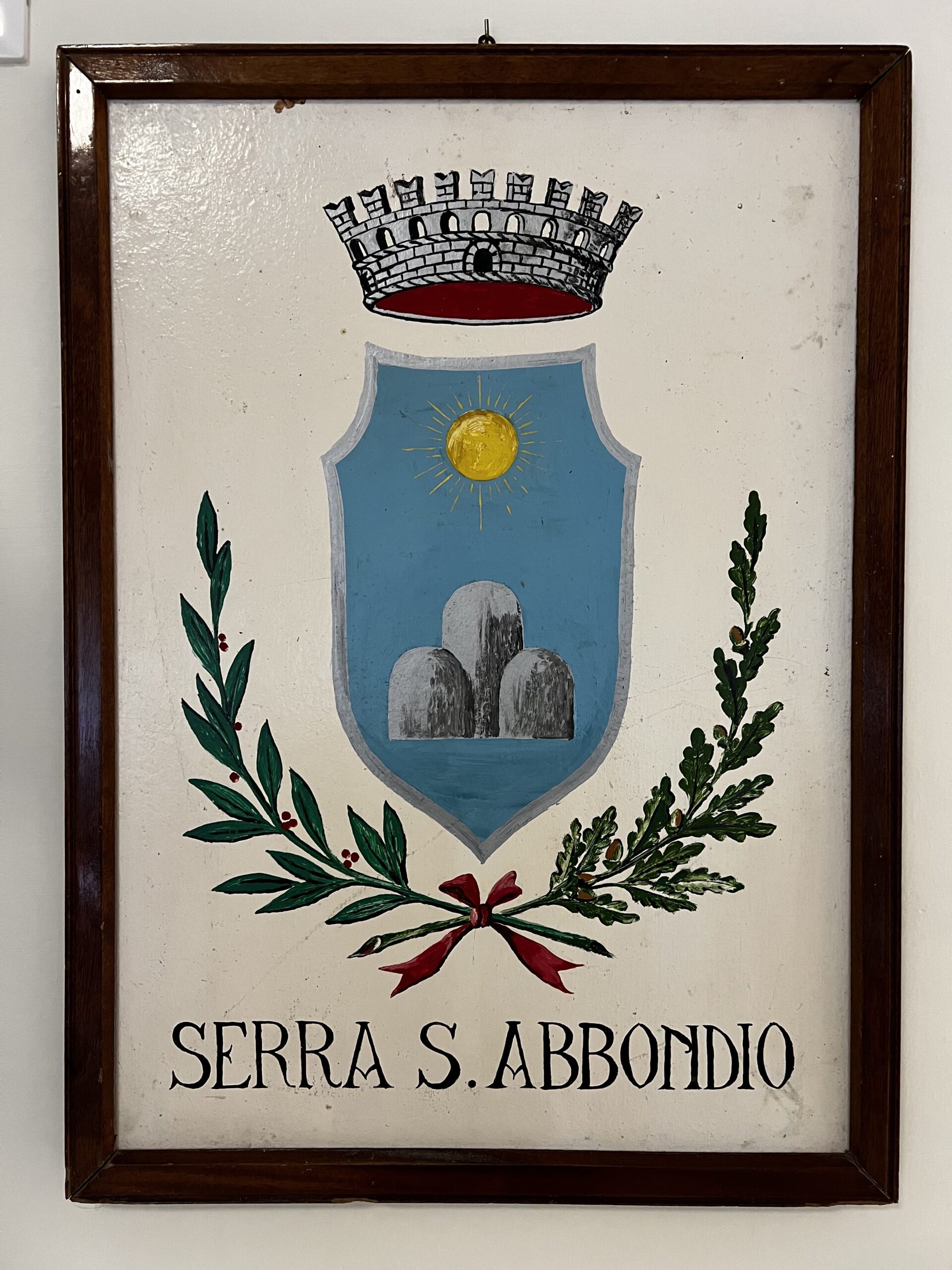
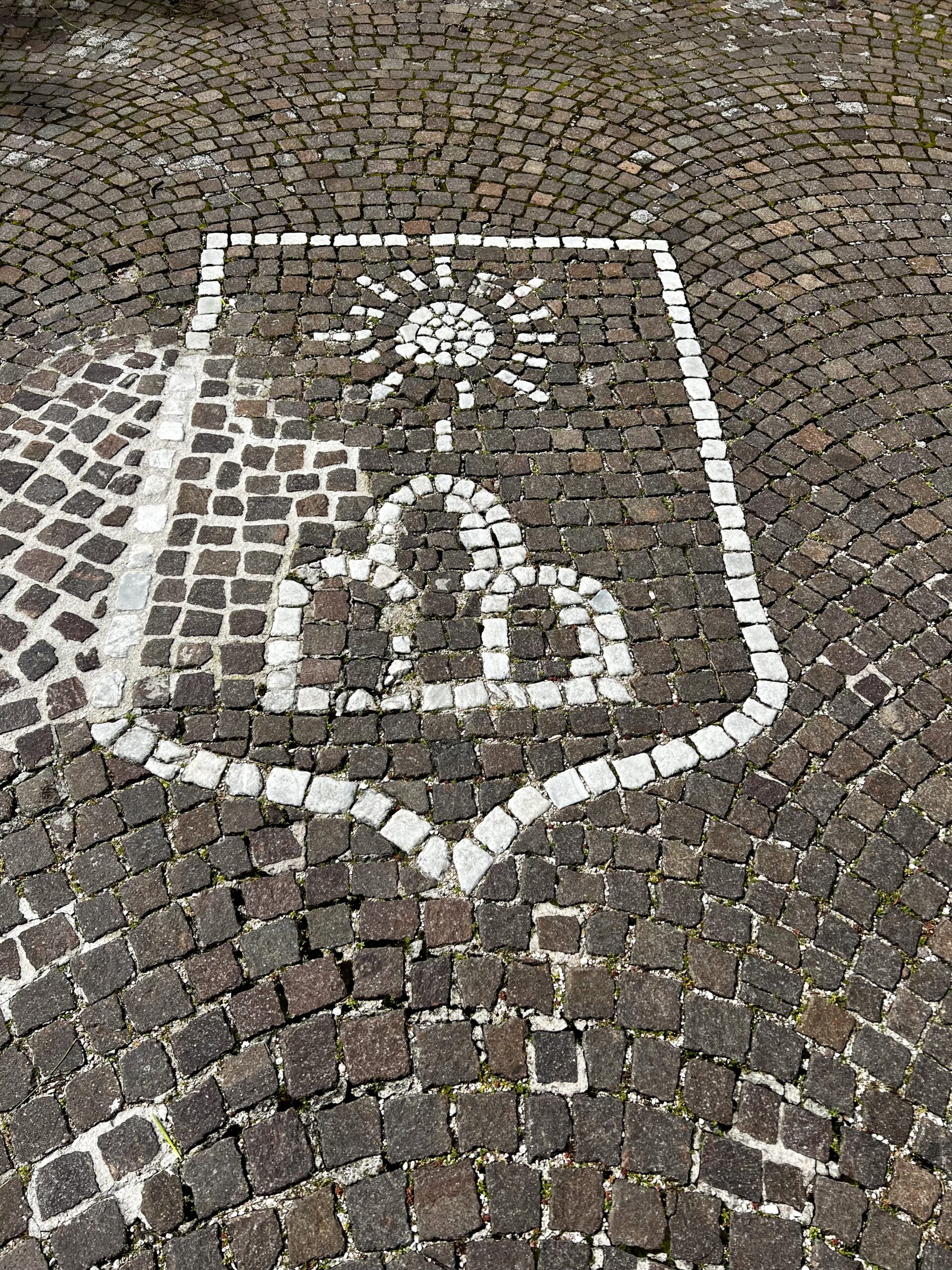
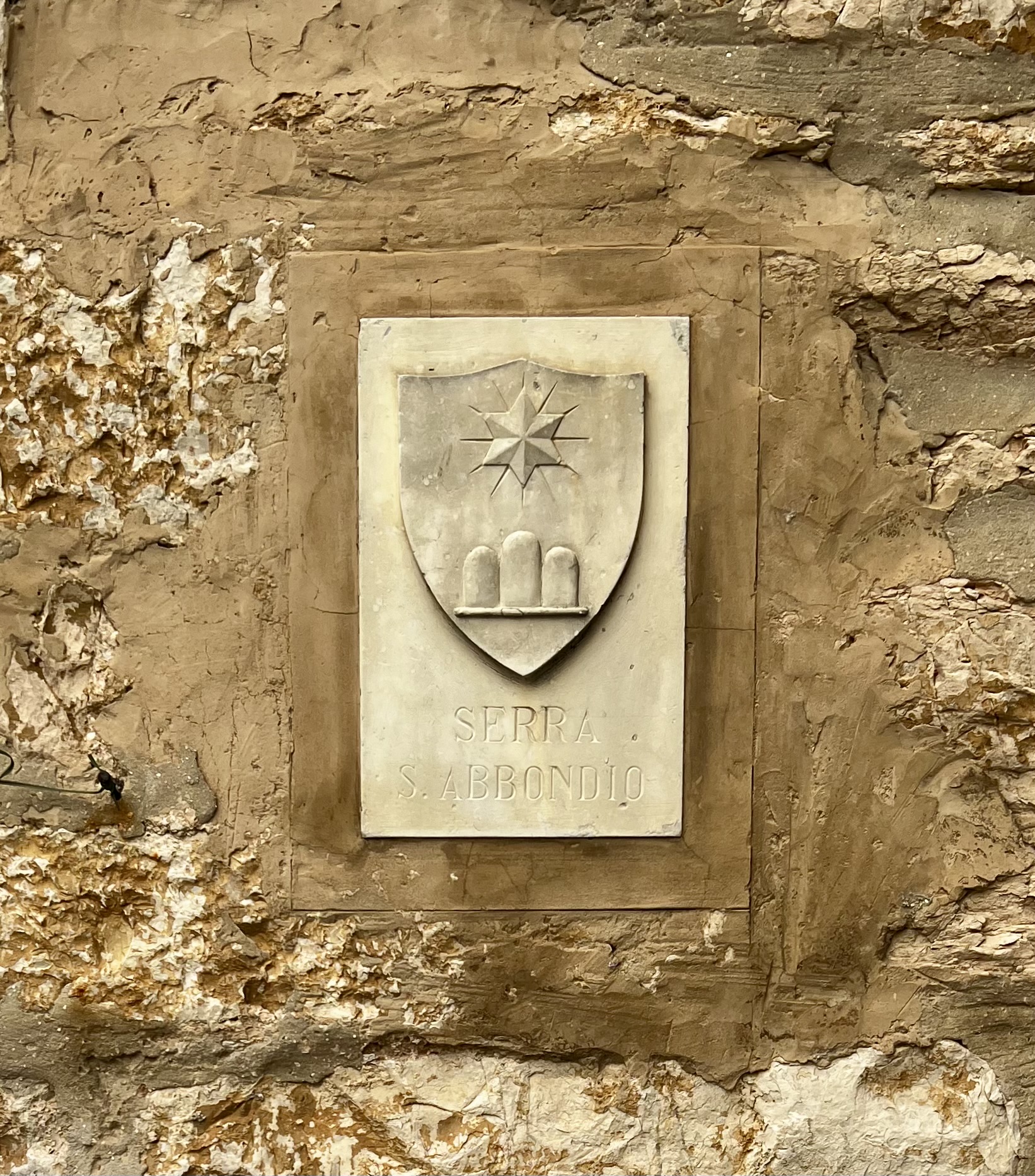
Serra
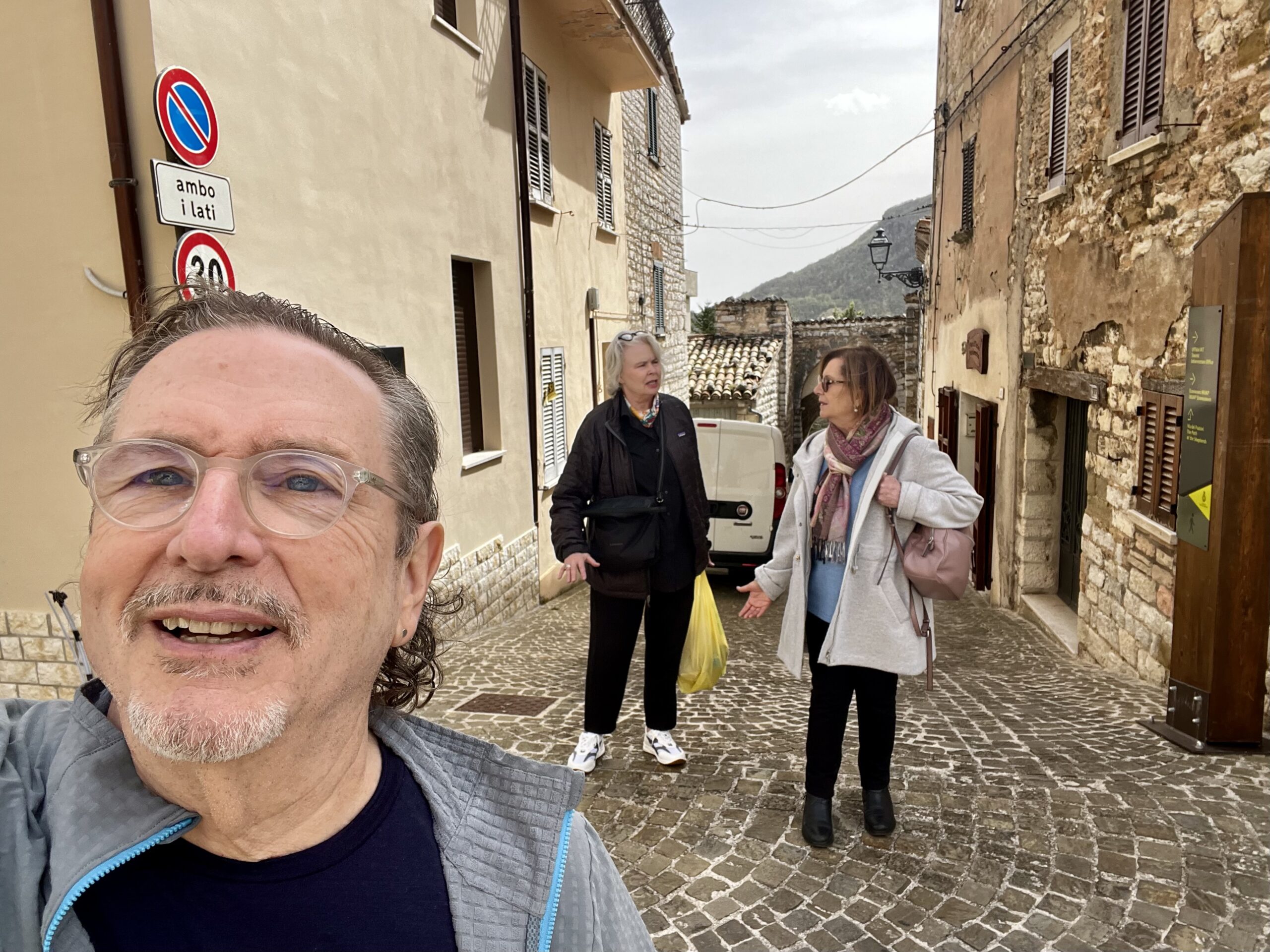
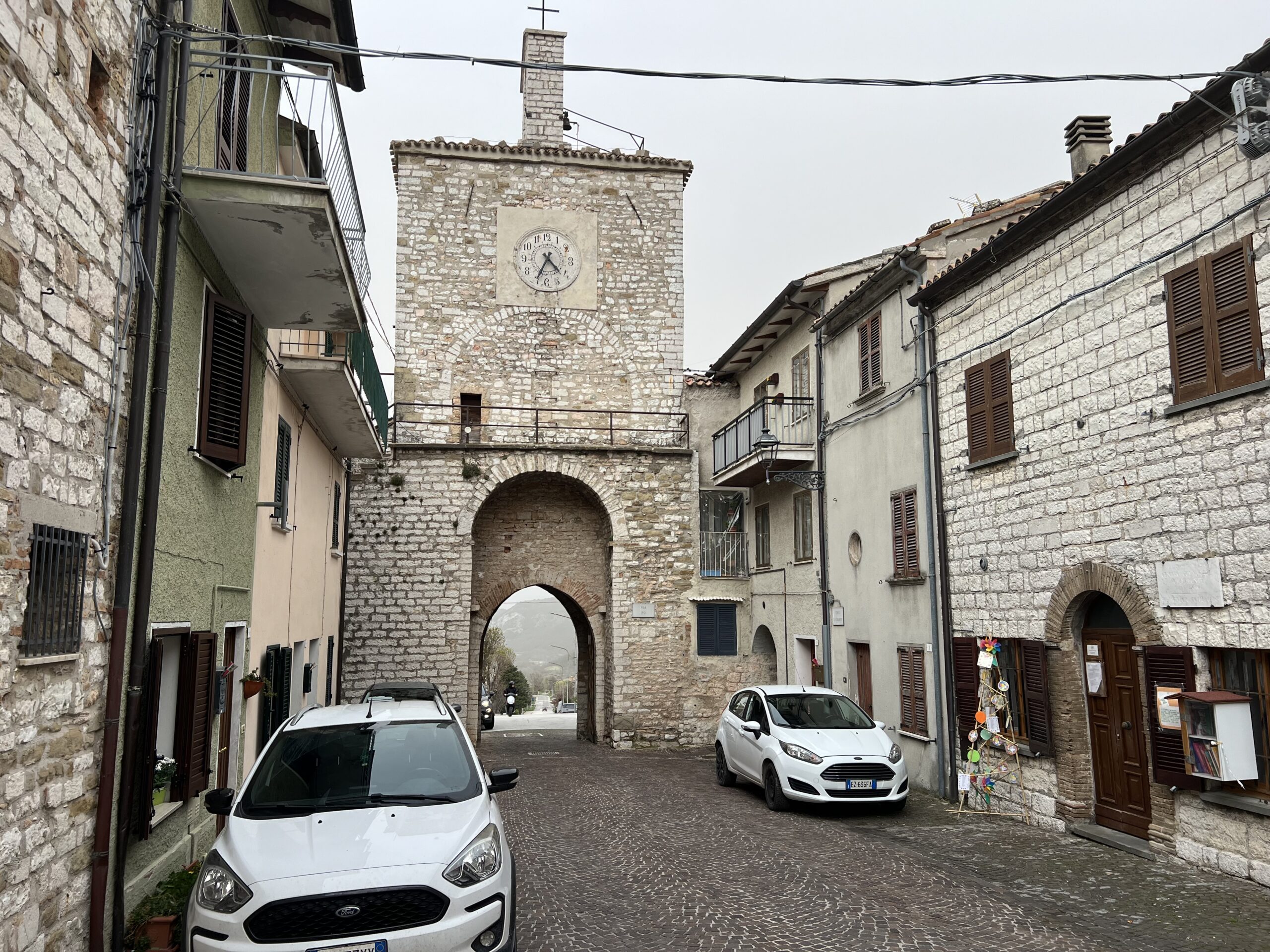
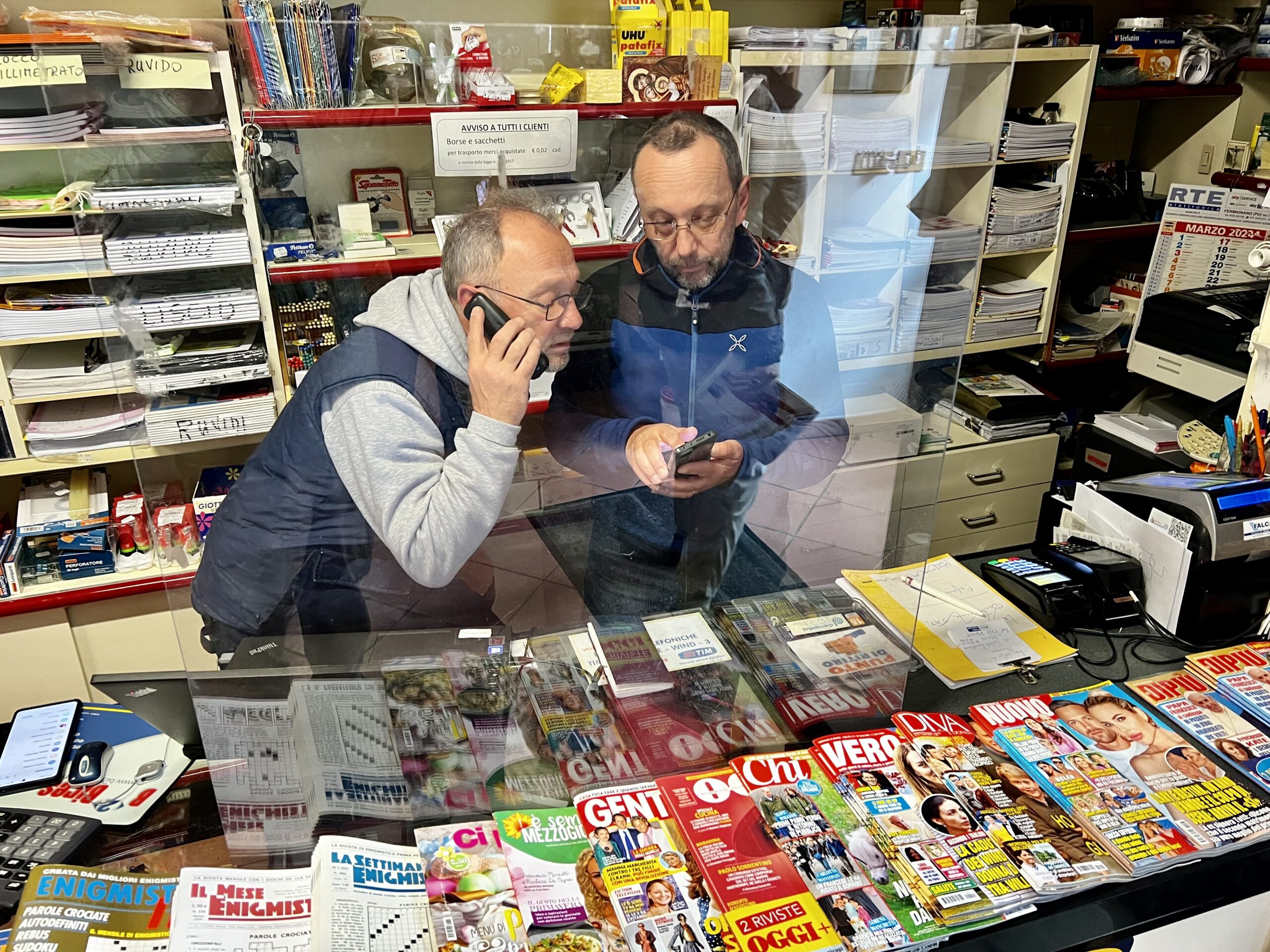
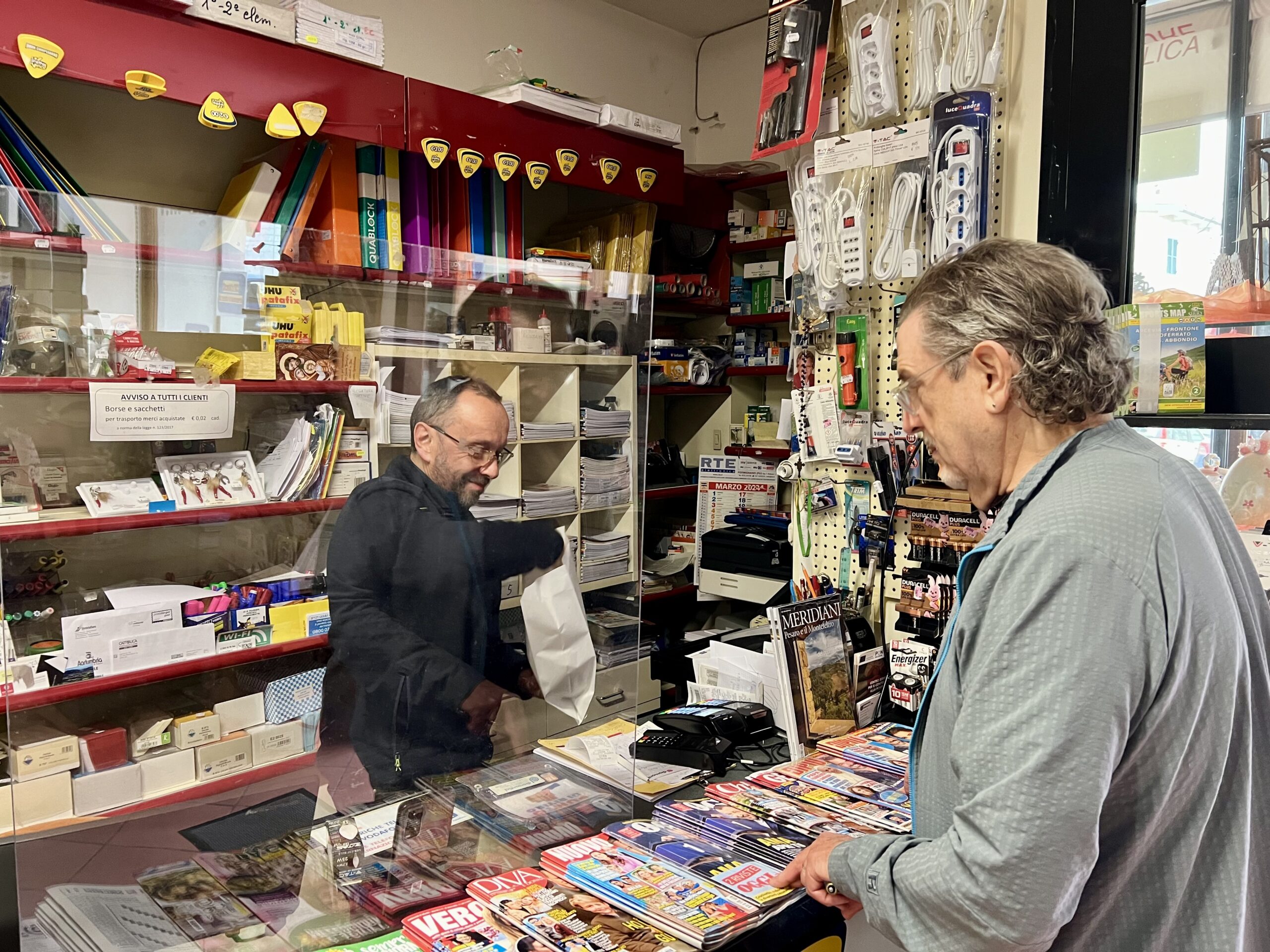
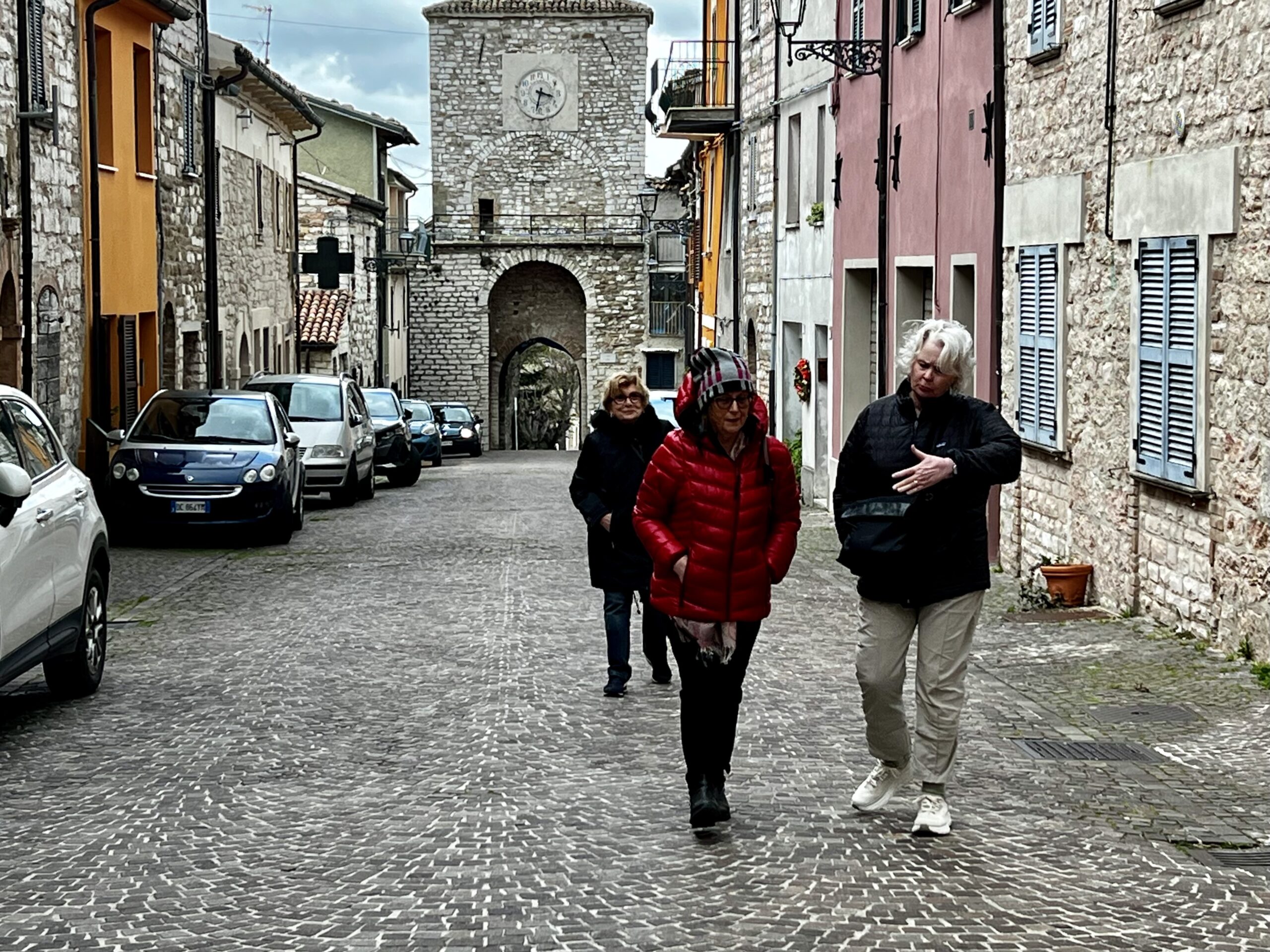
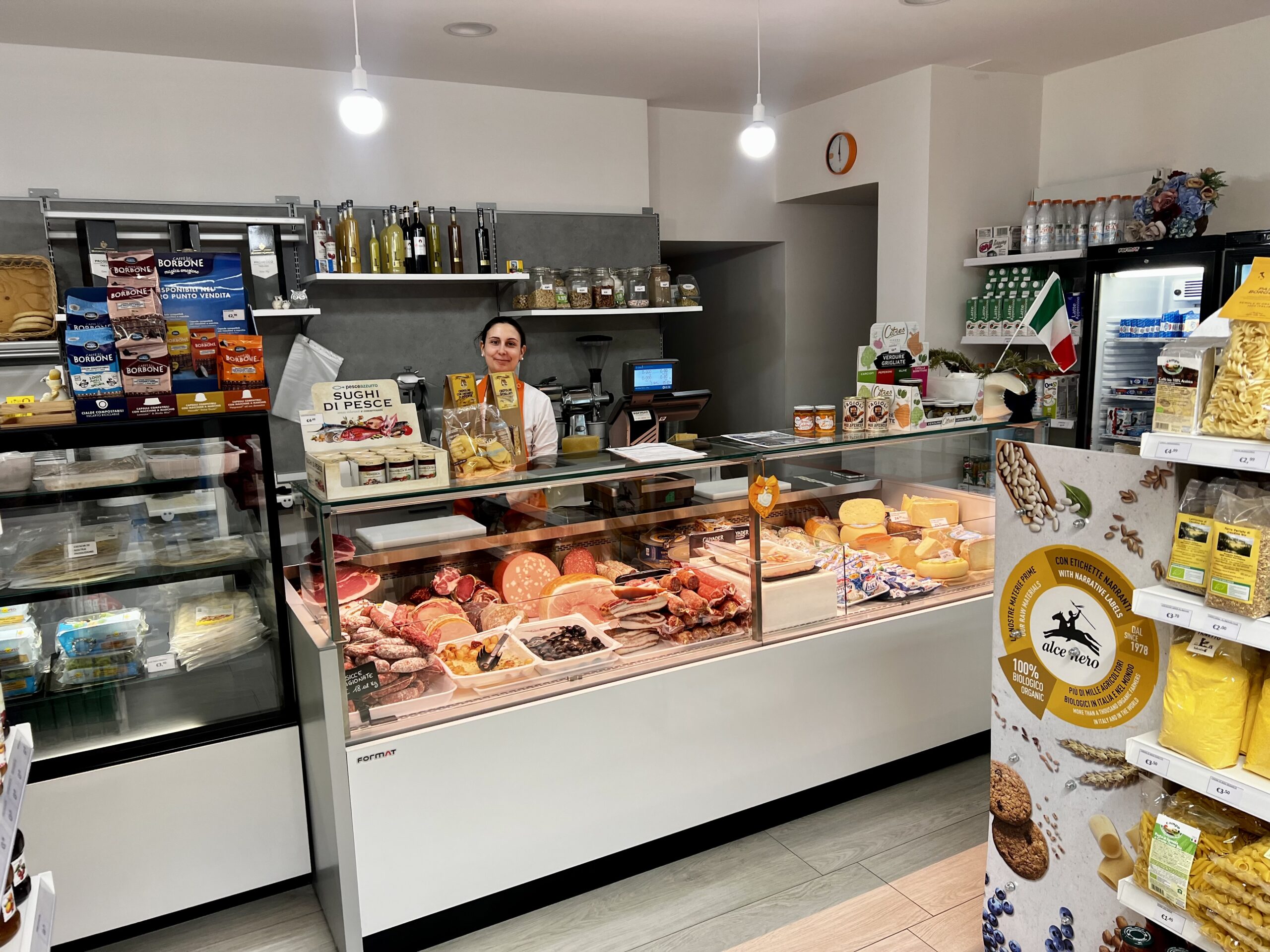
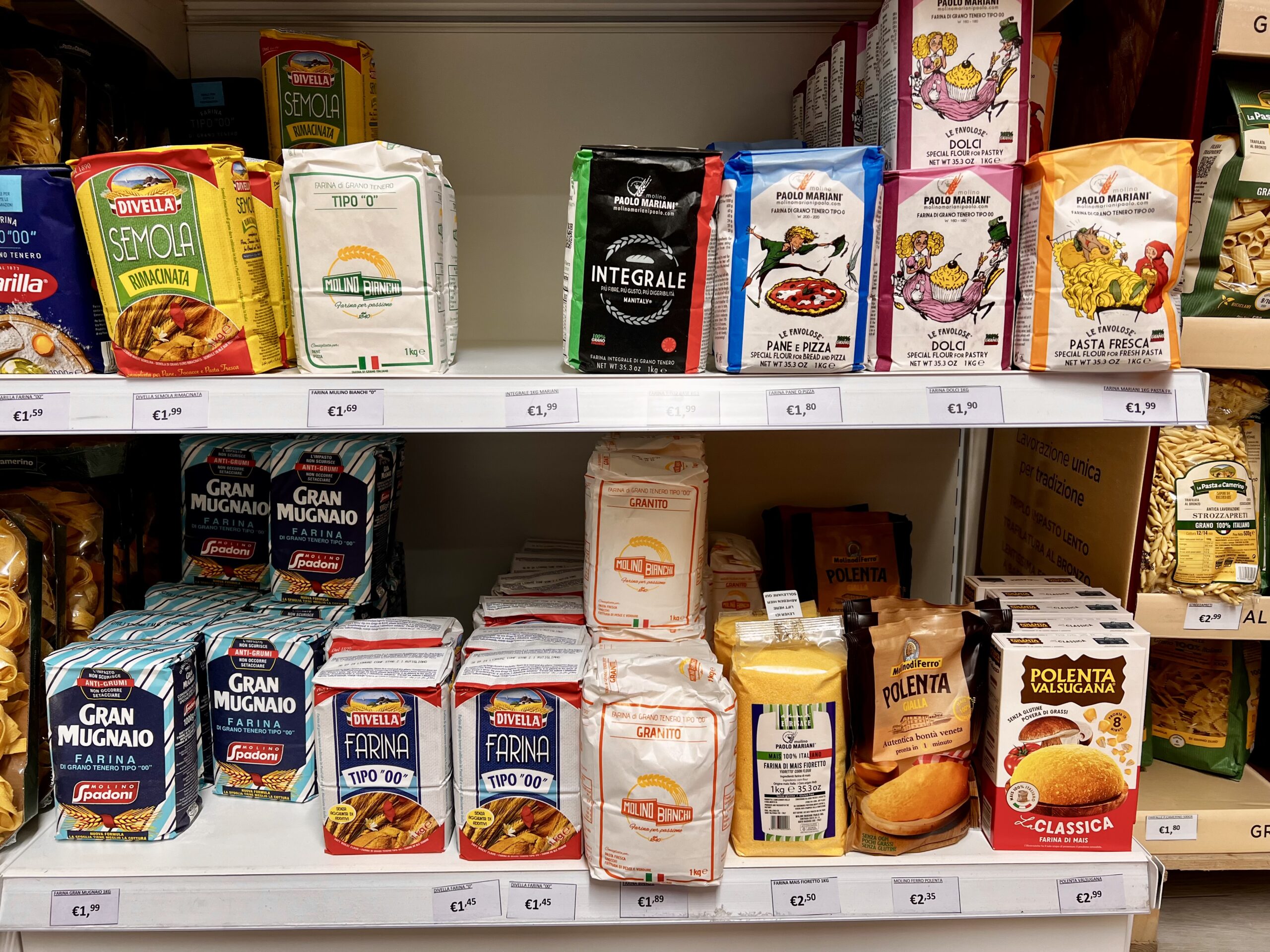
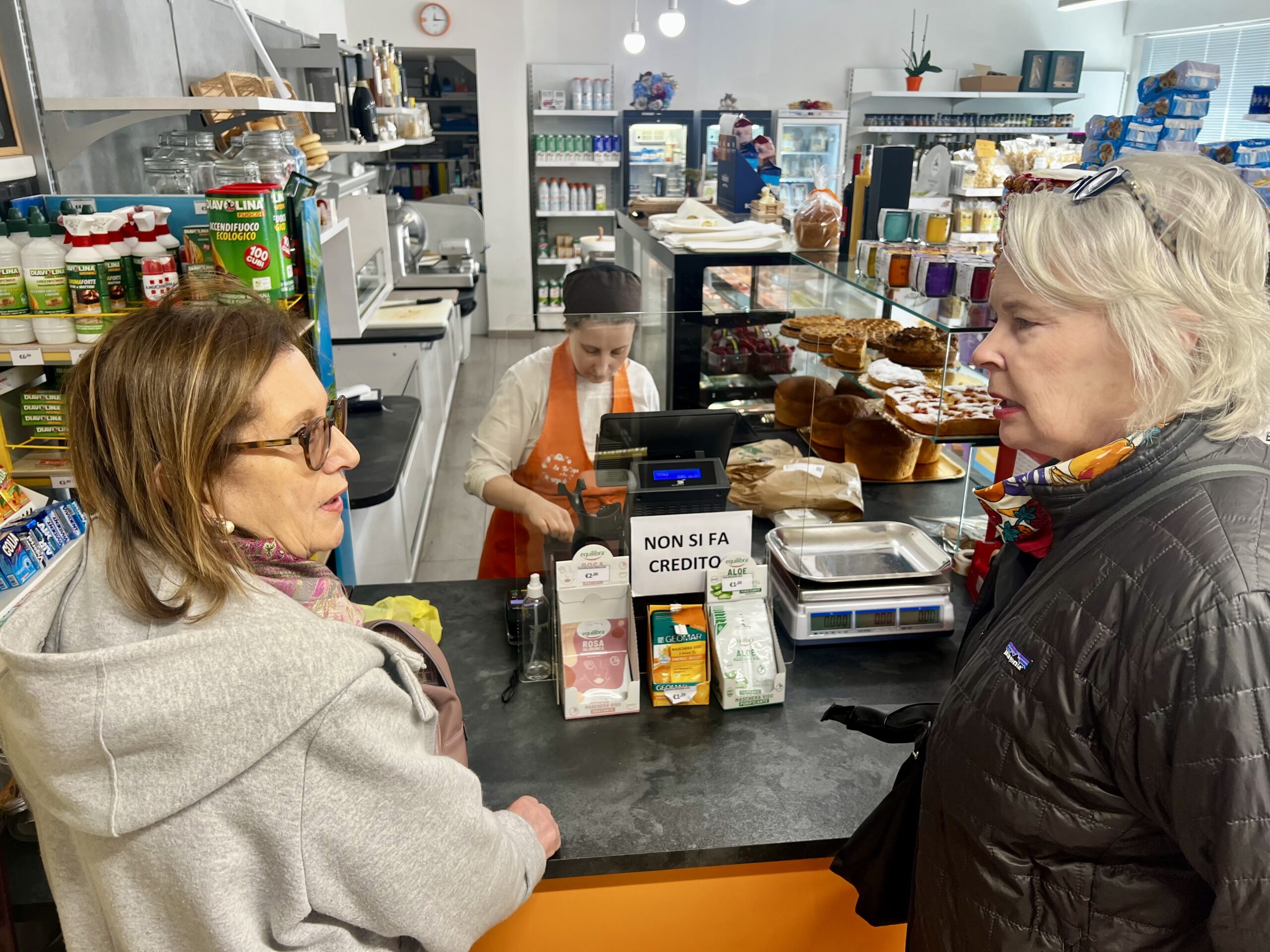
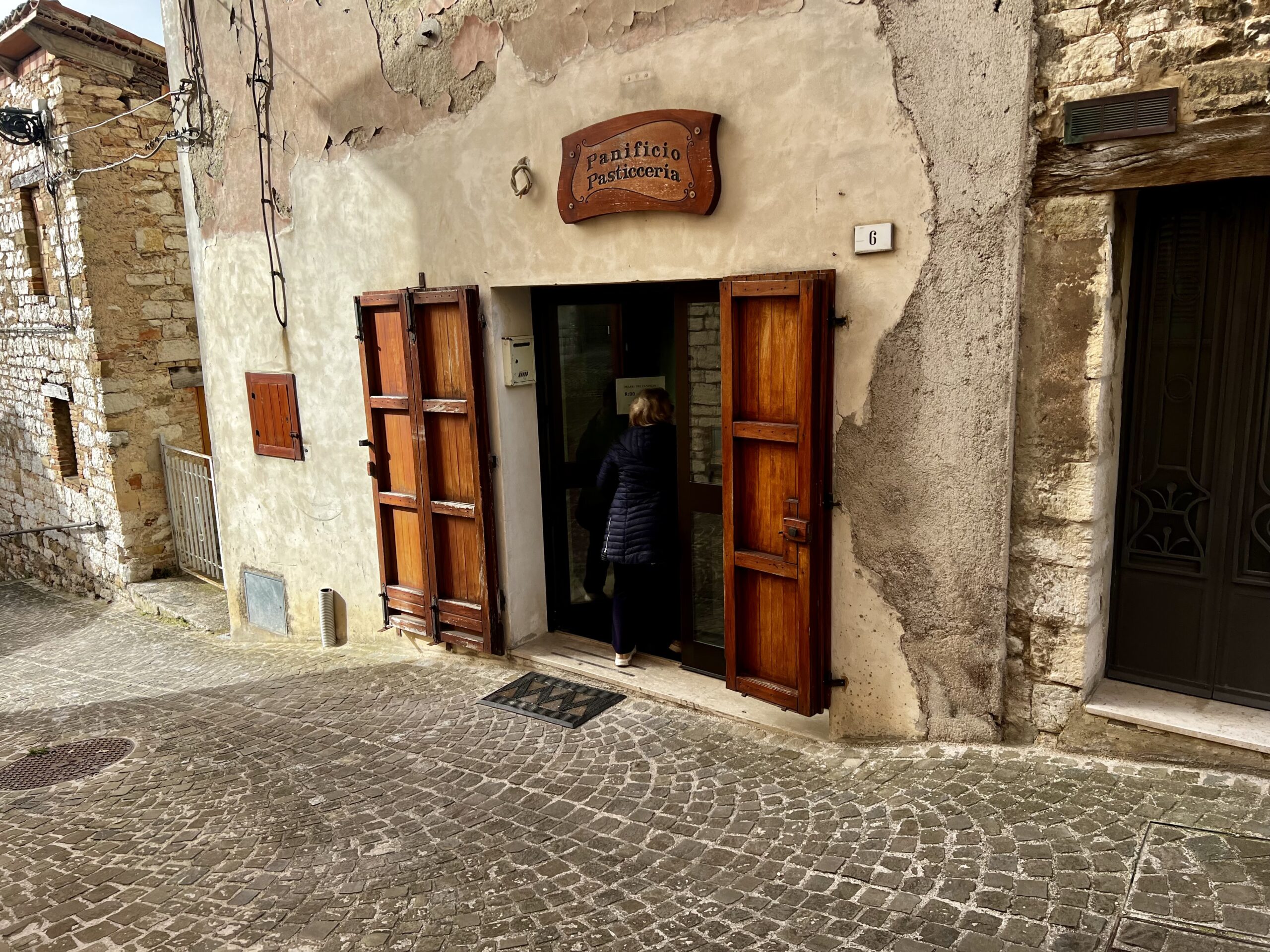
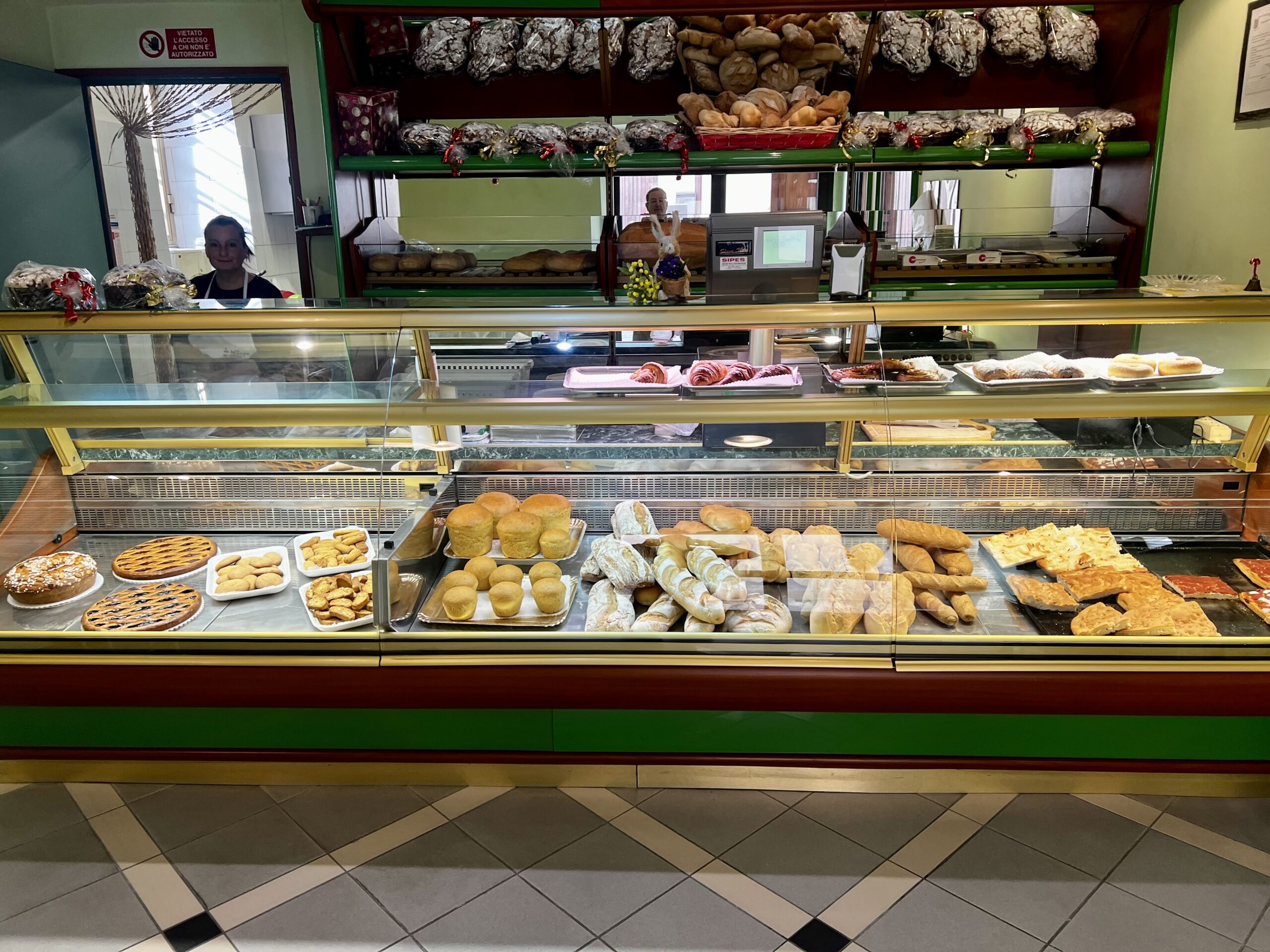
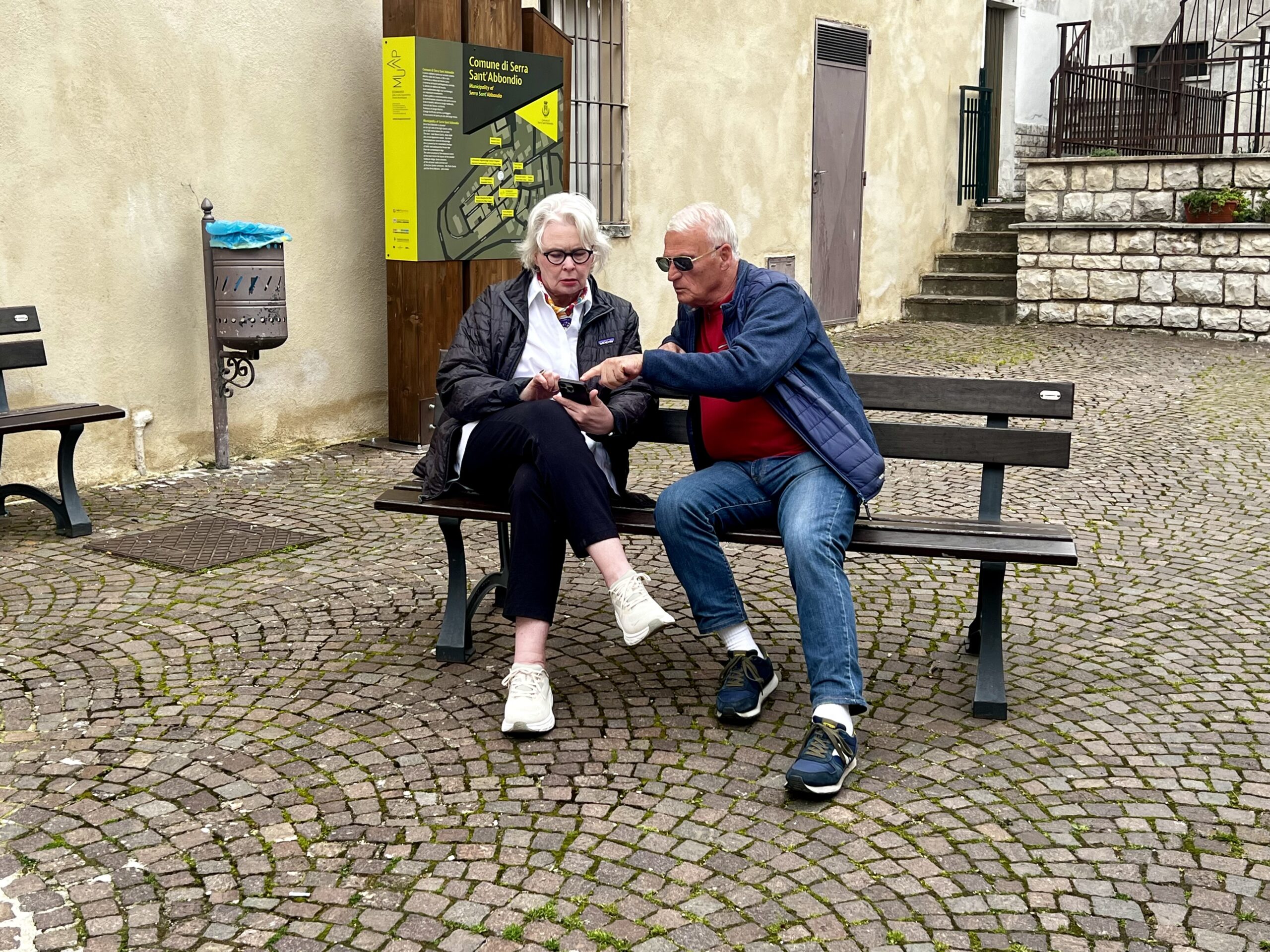
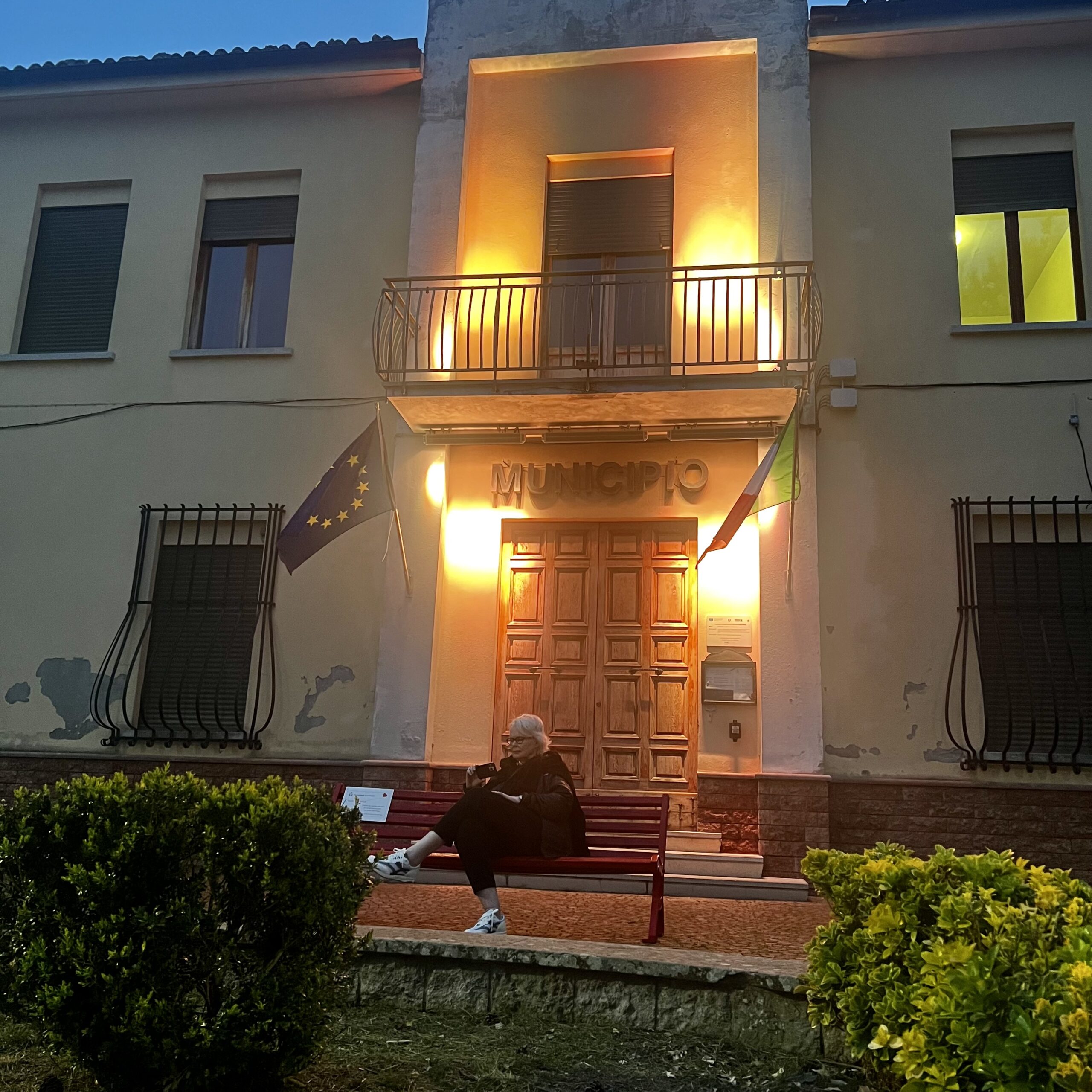
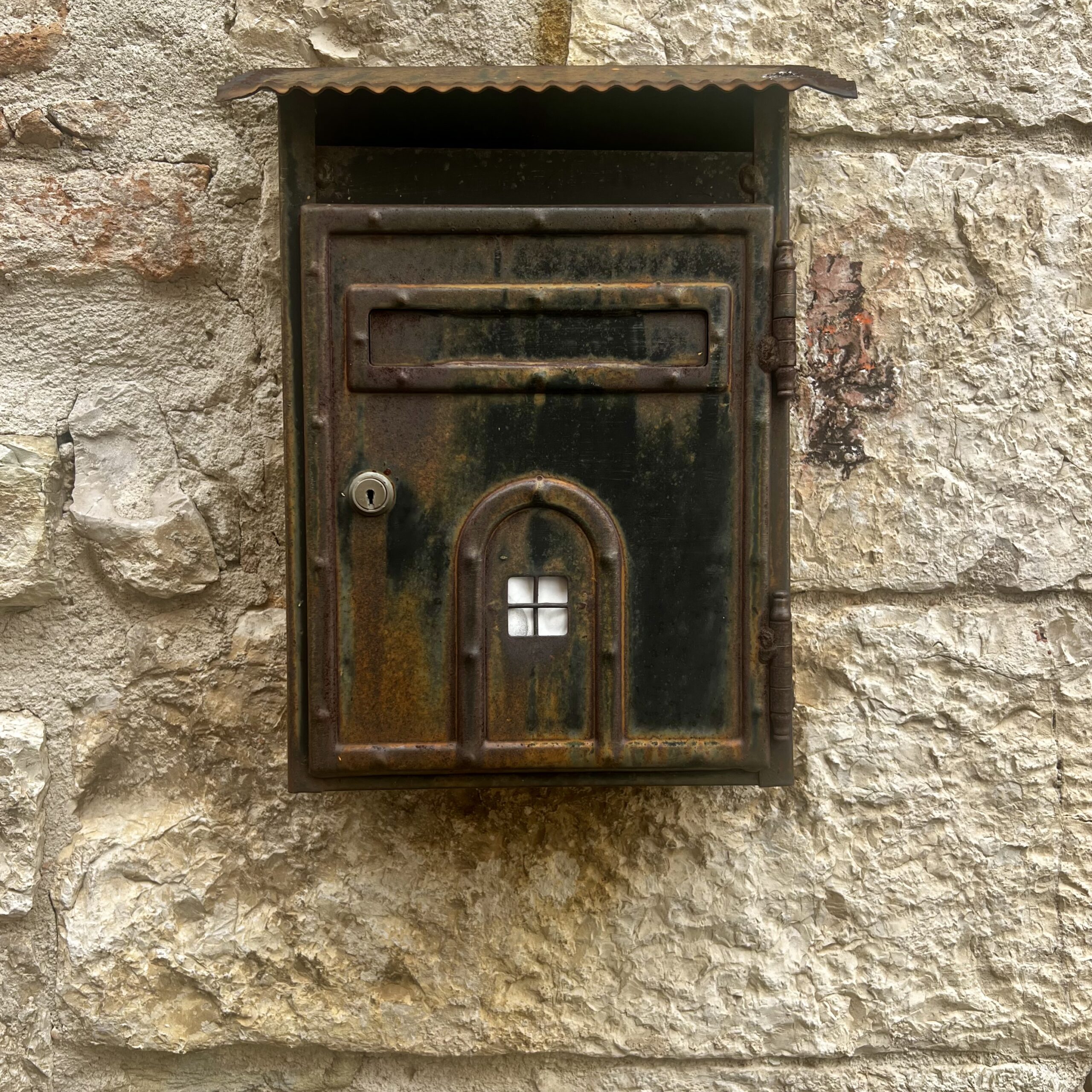
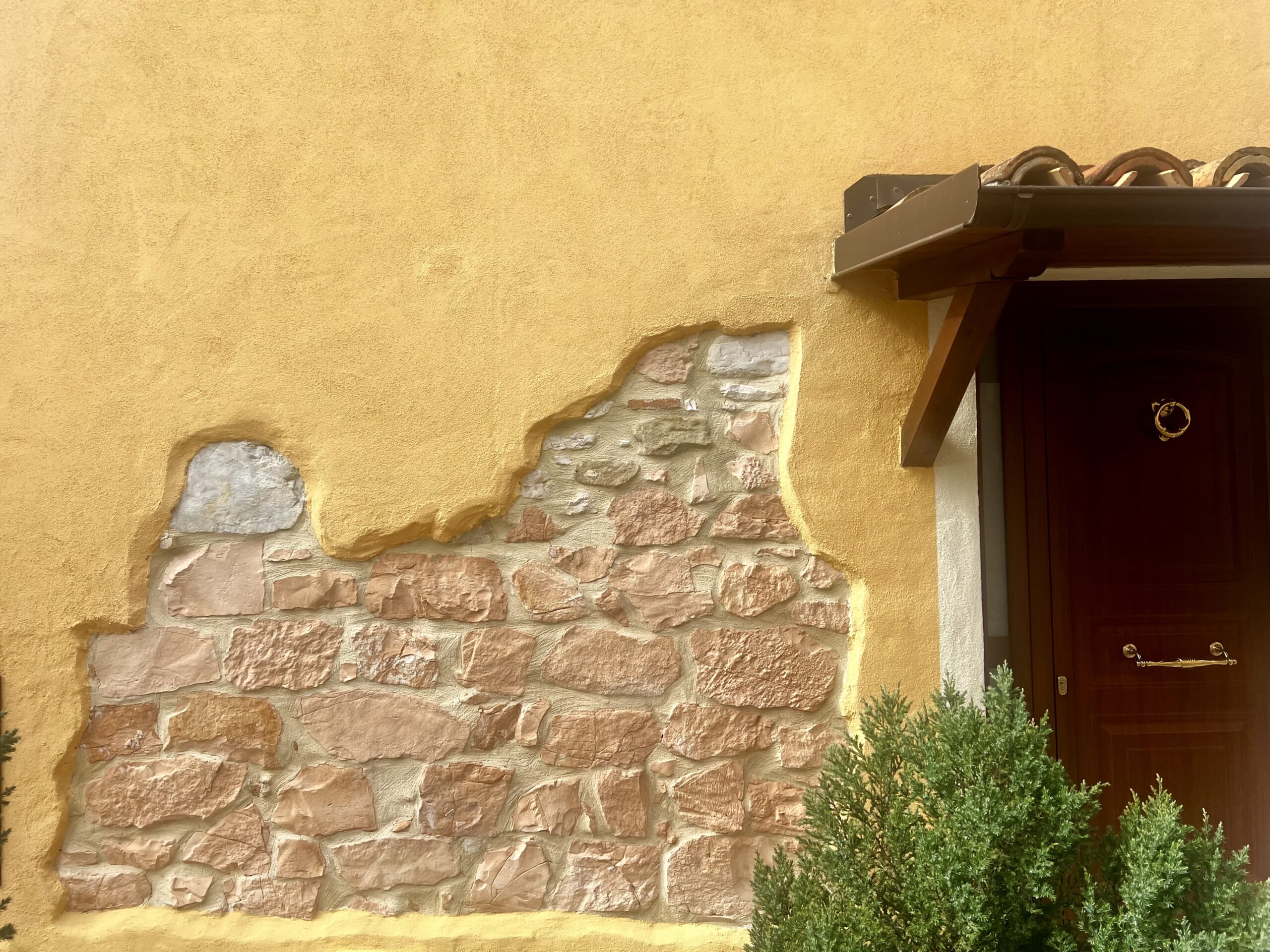
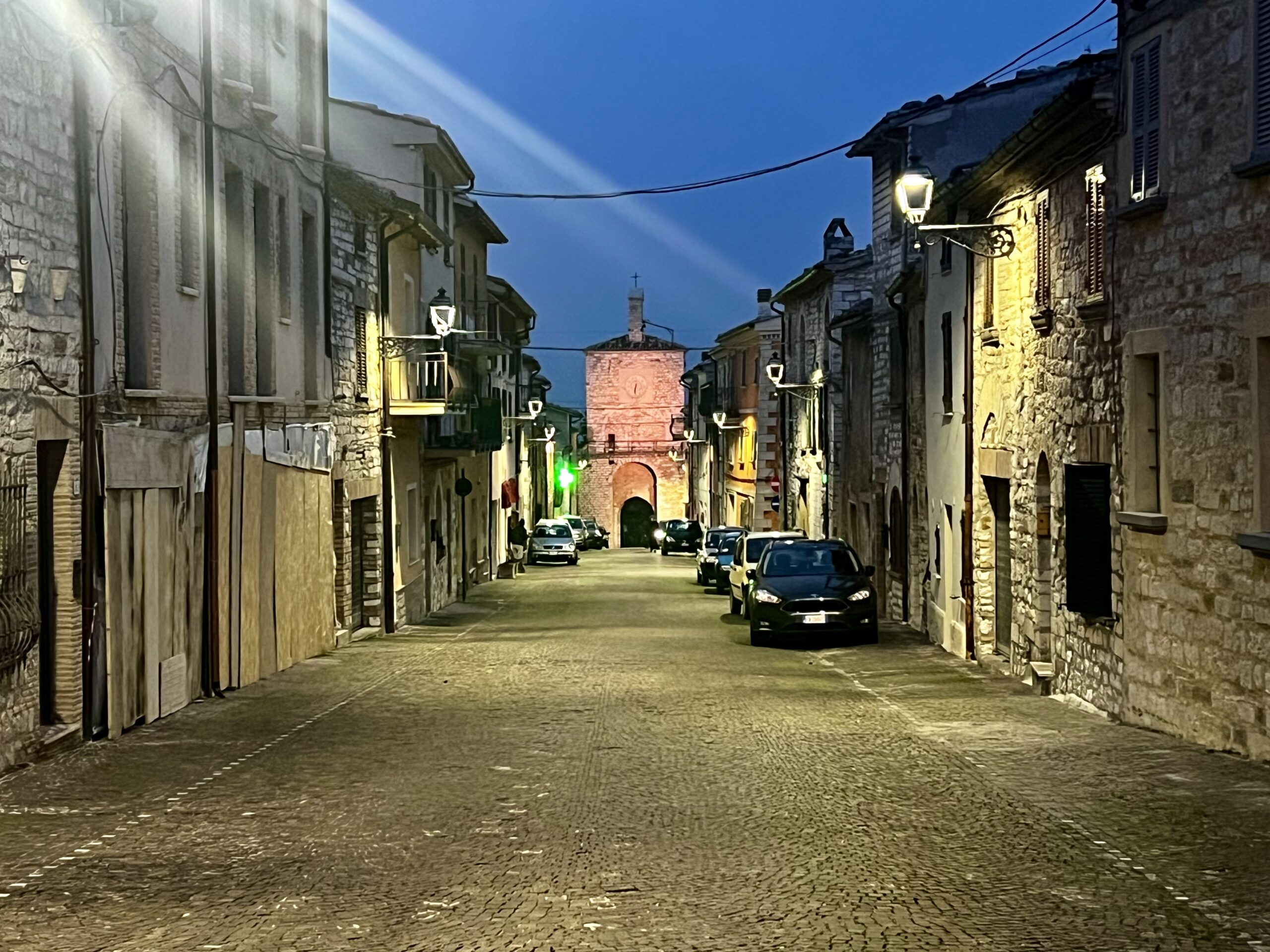
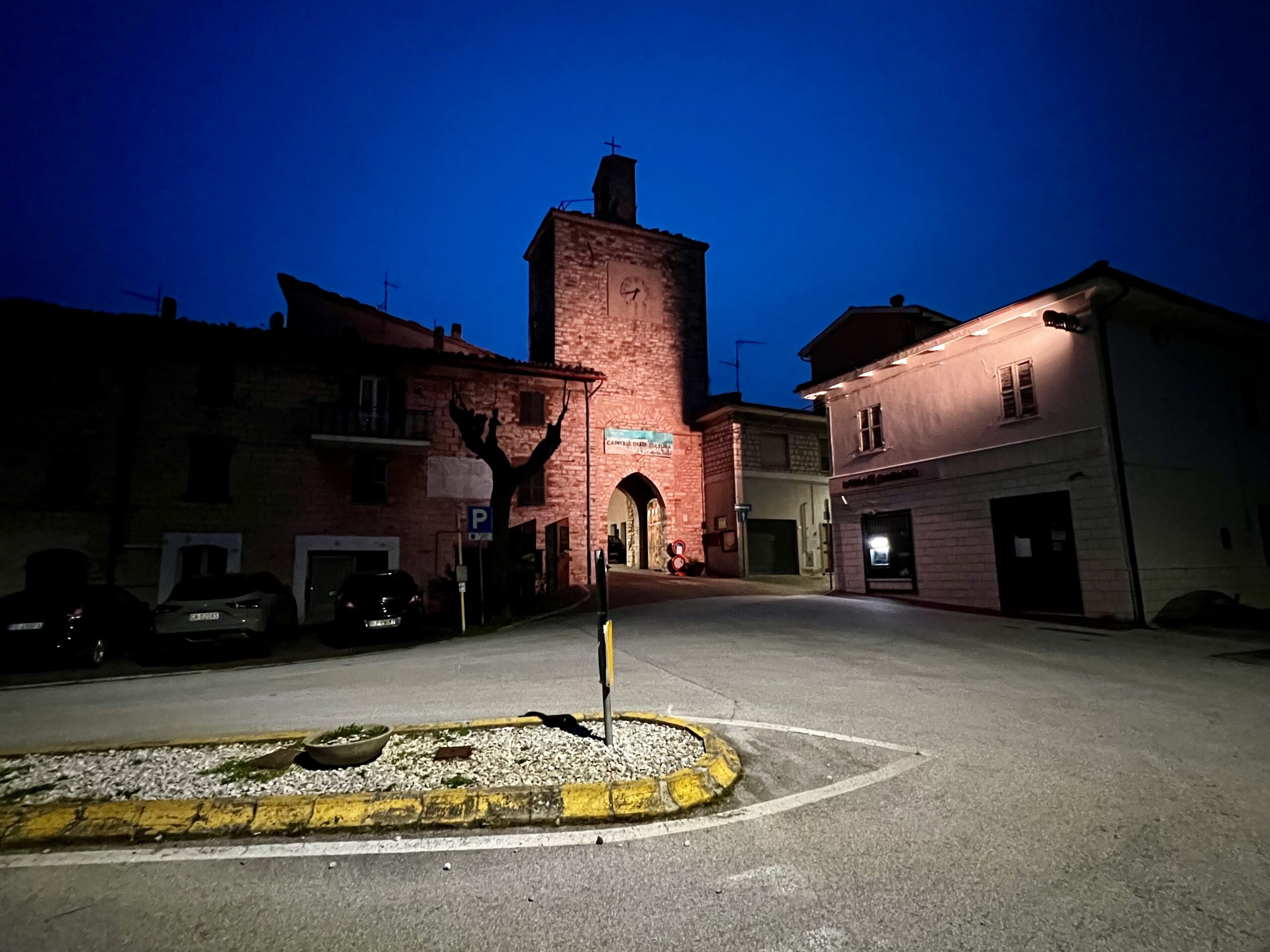
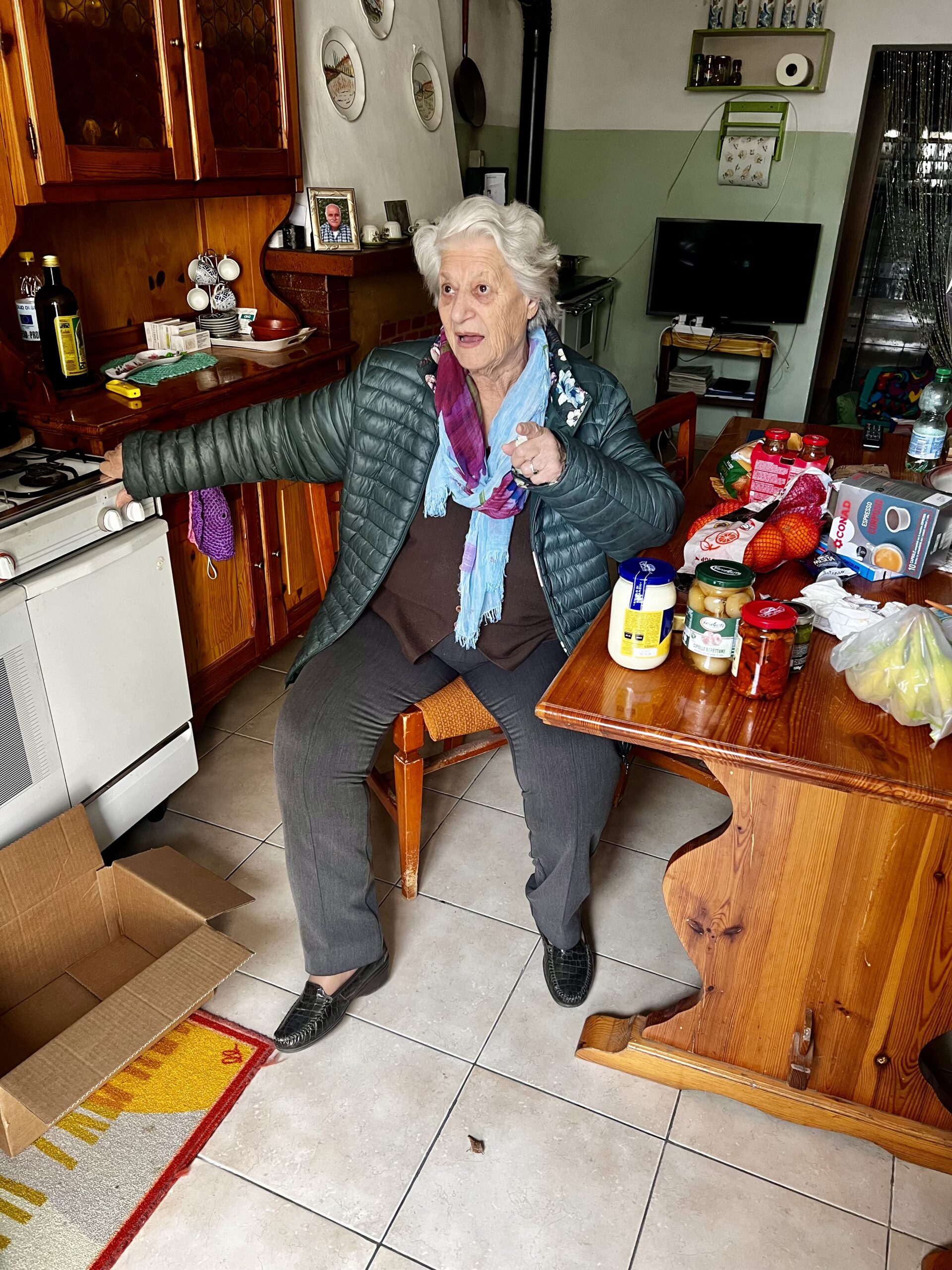
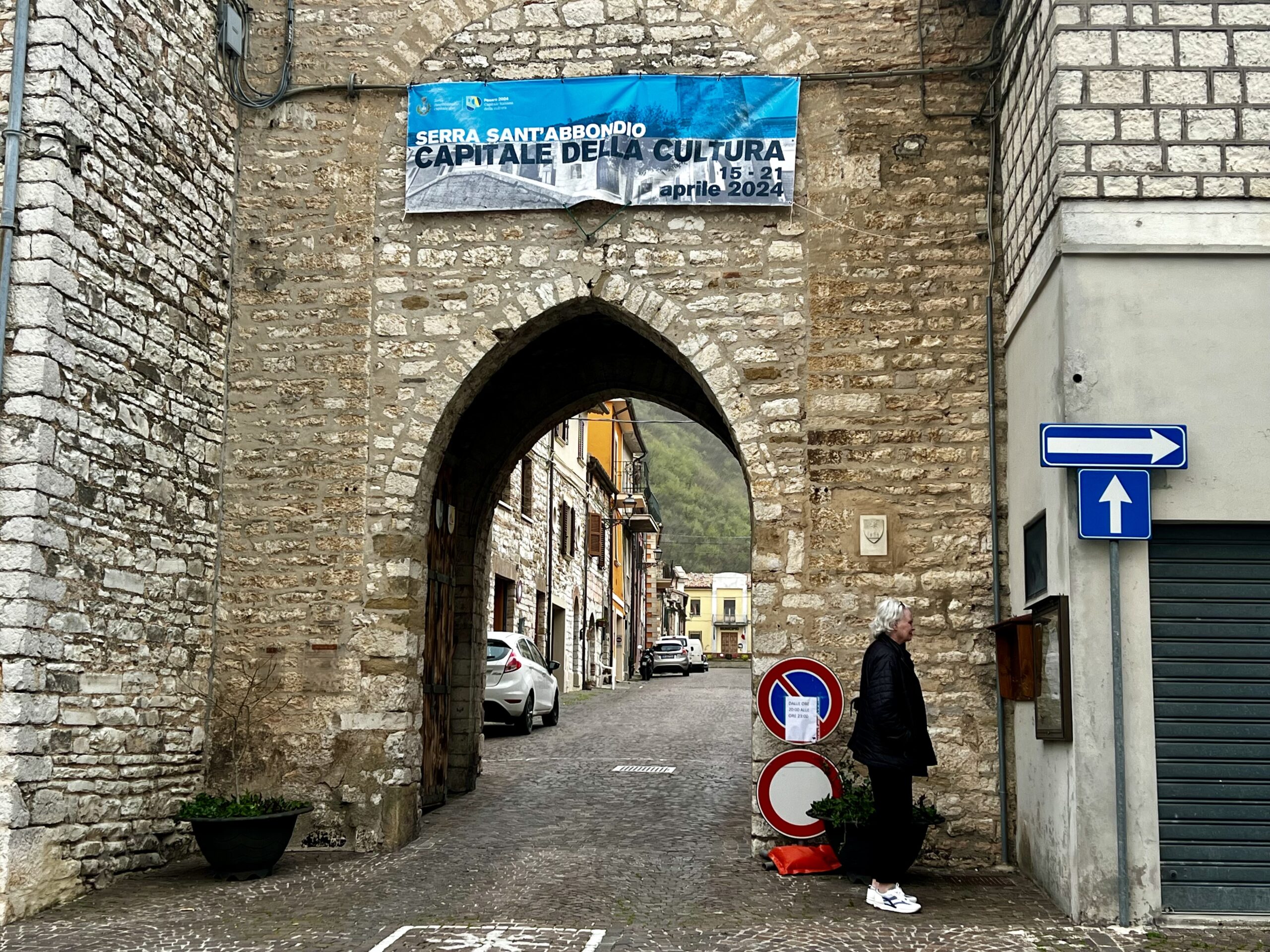
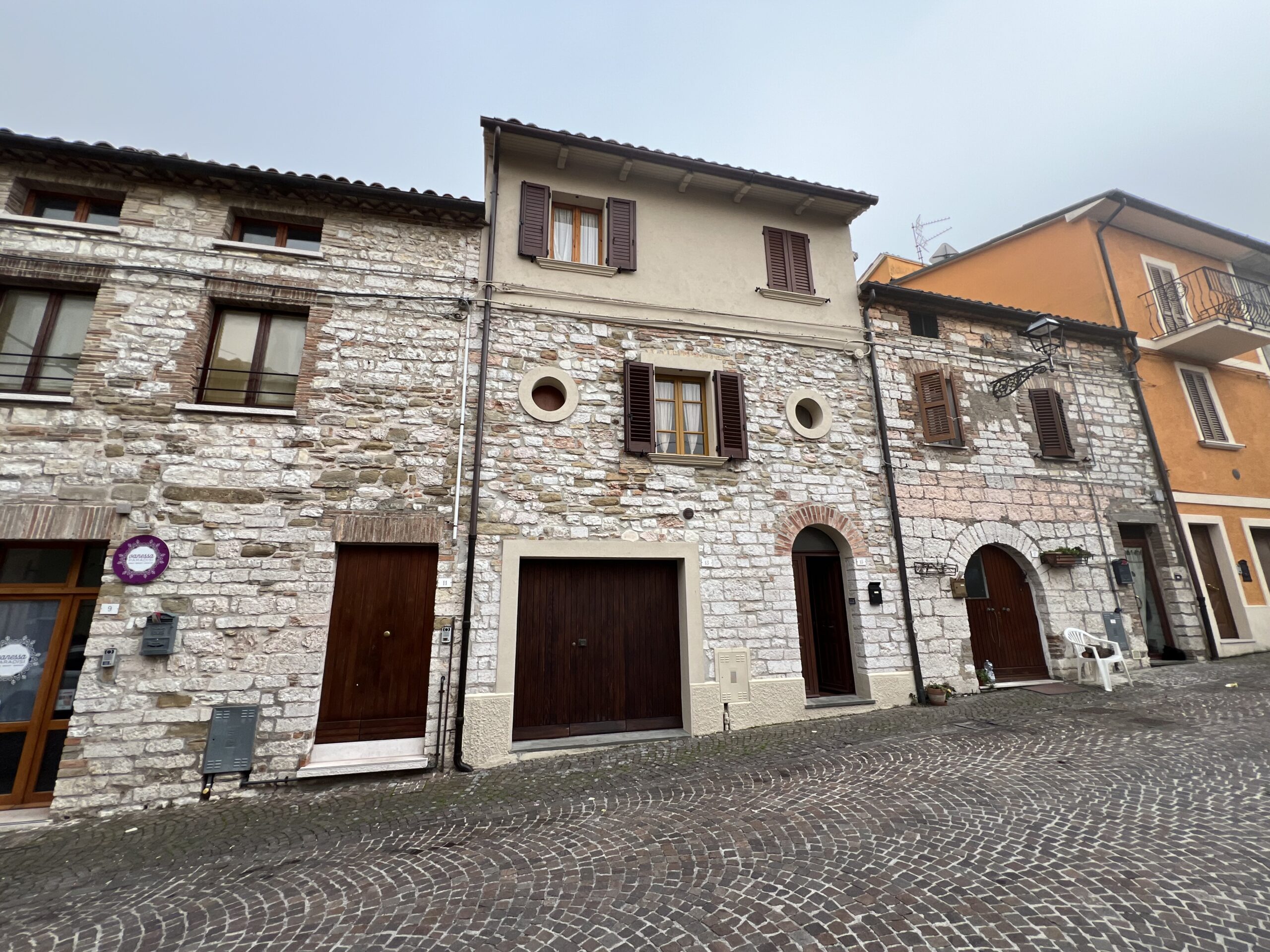
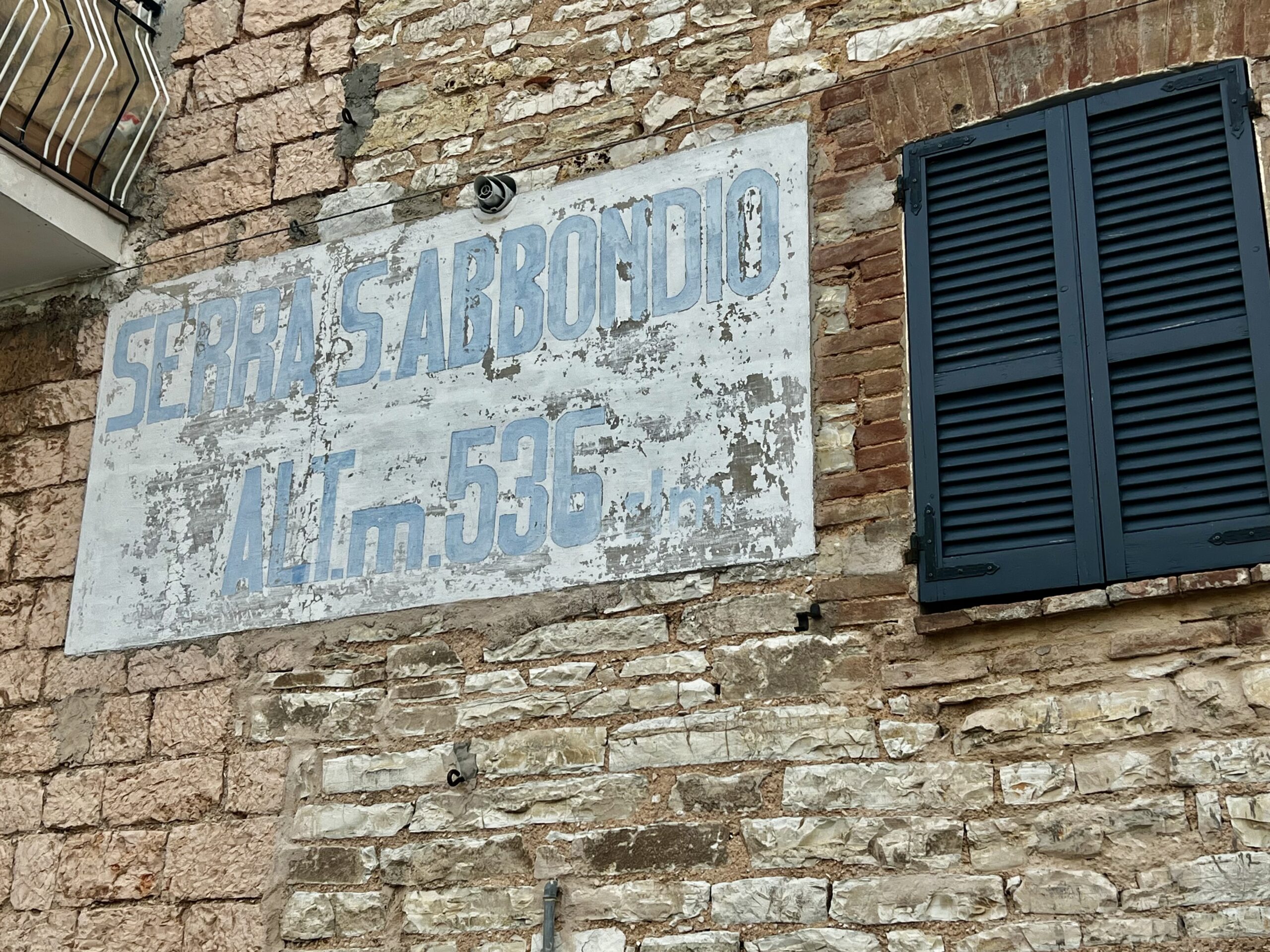
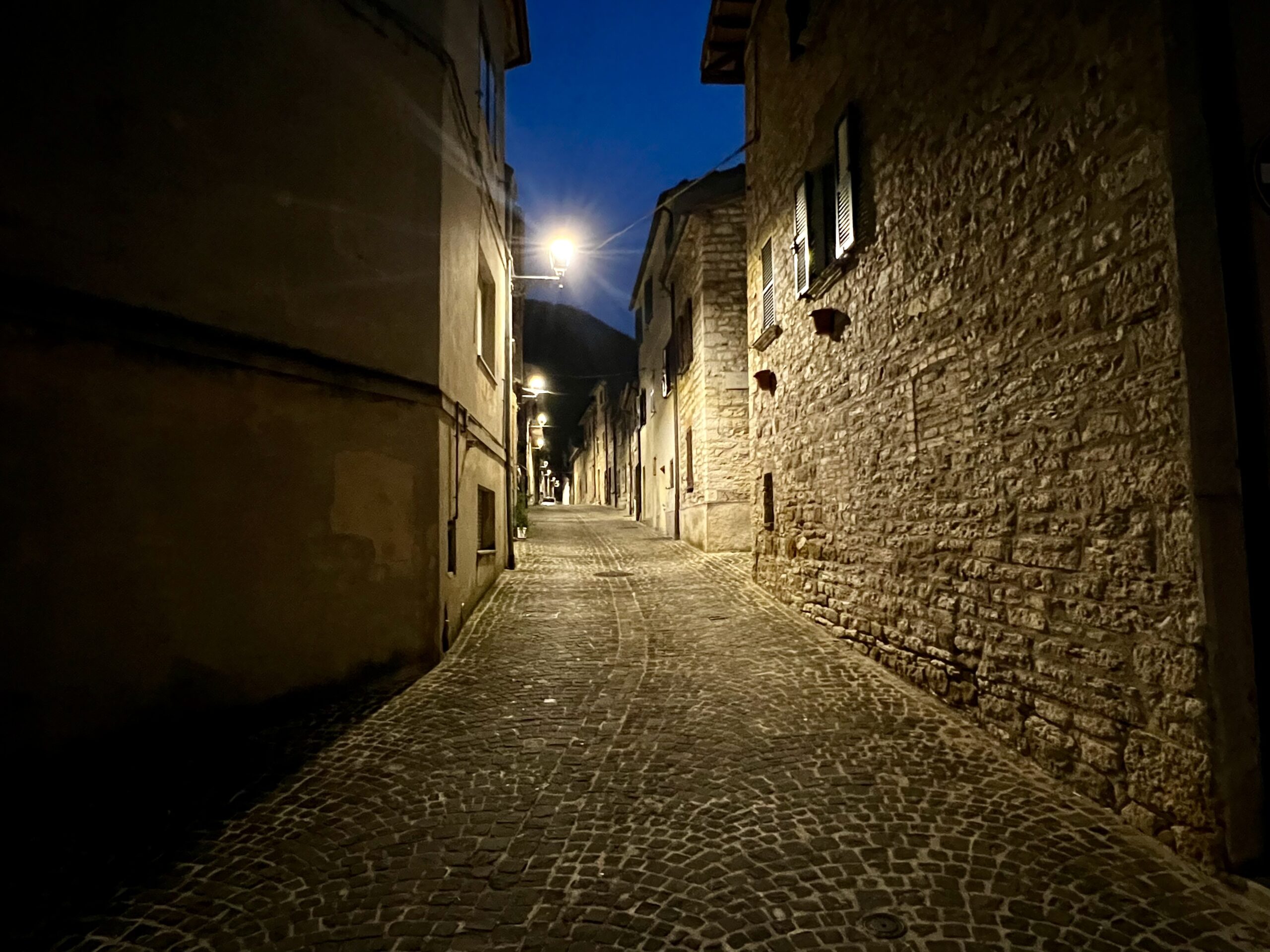
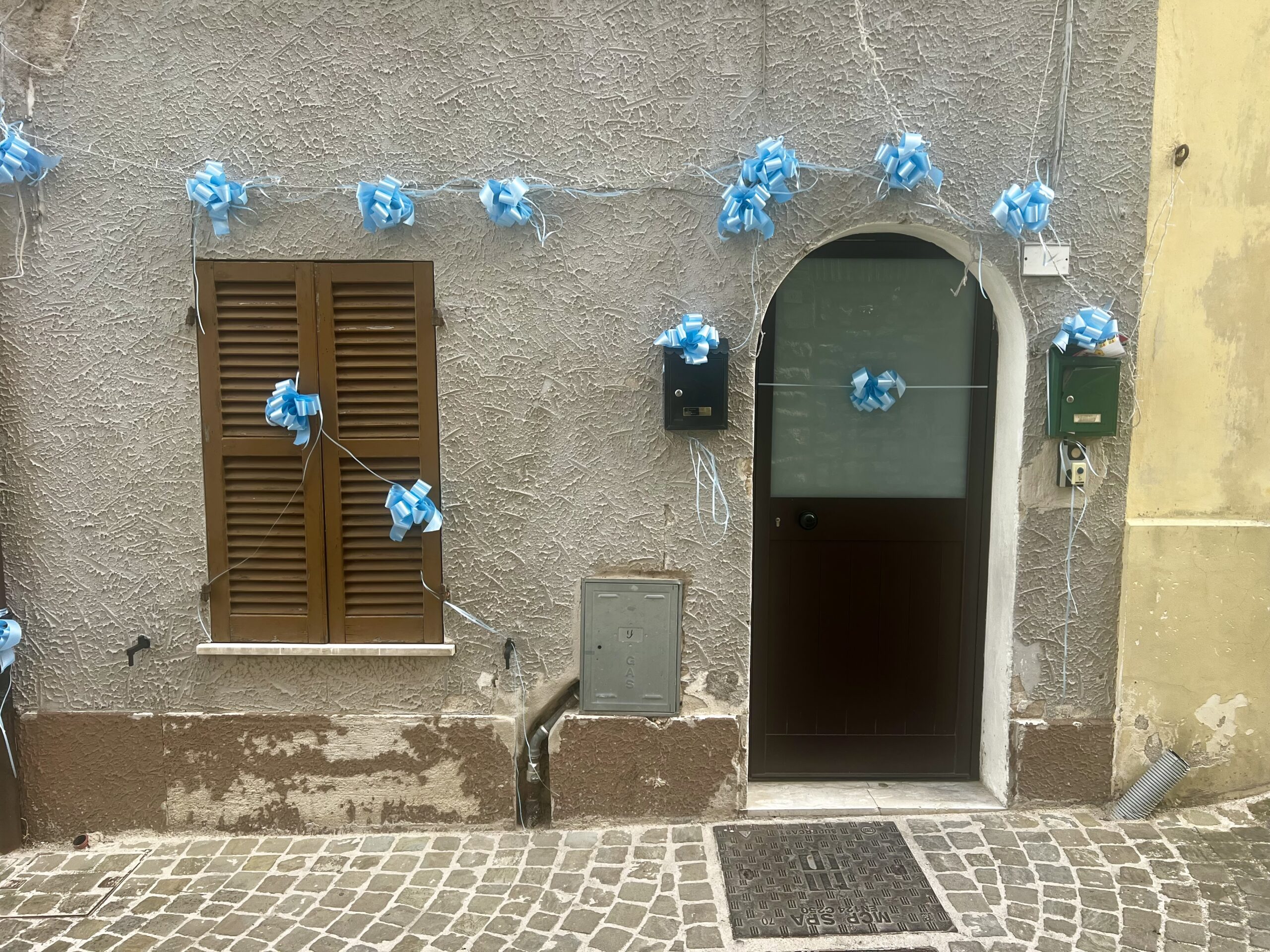
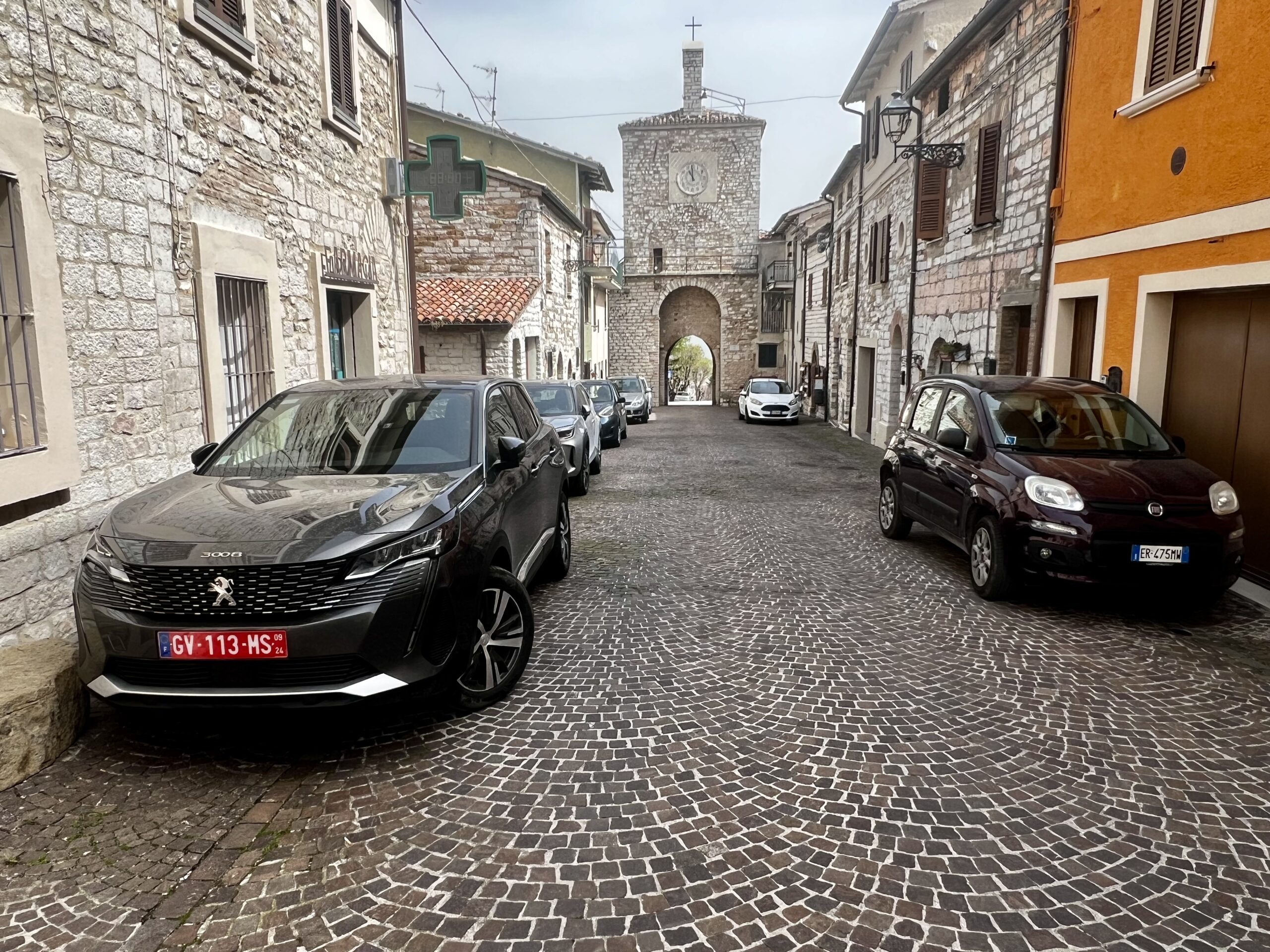
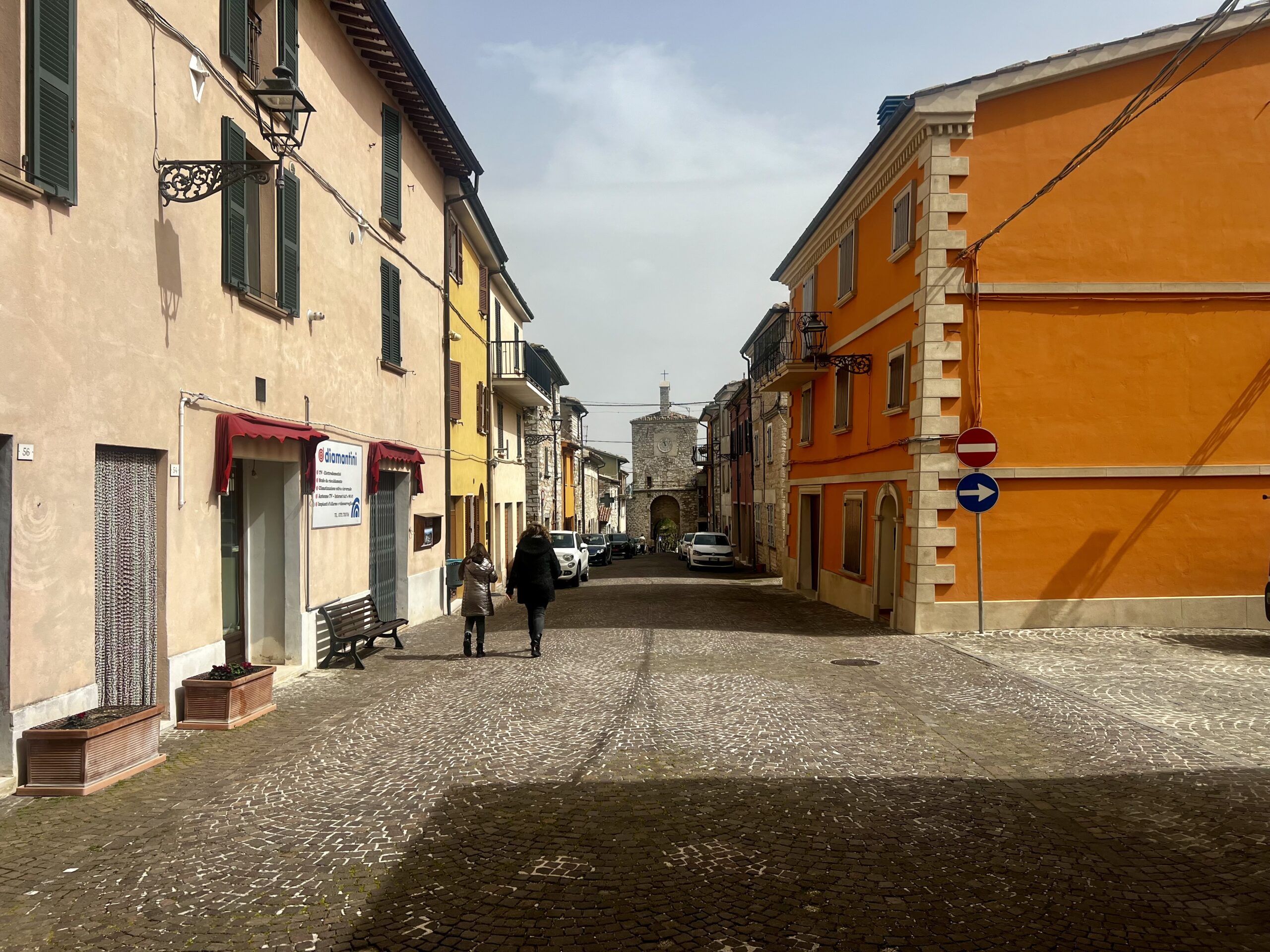
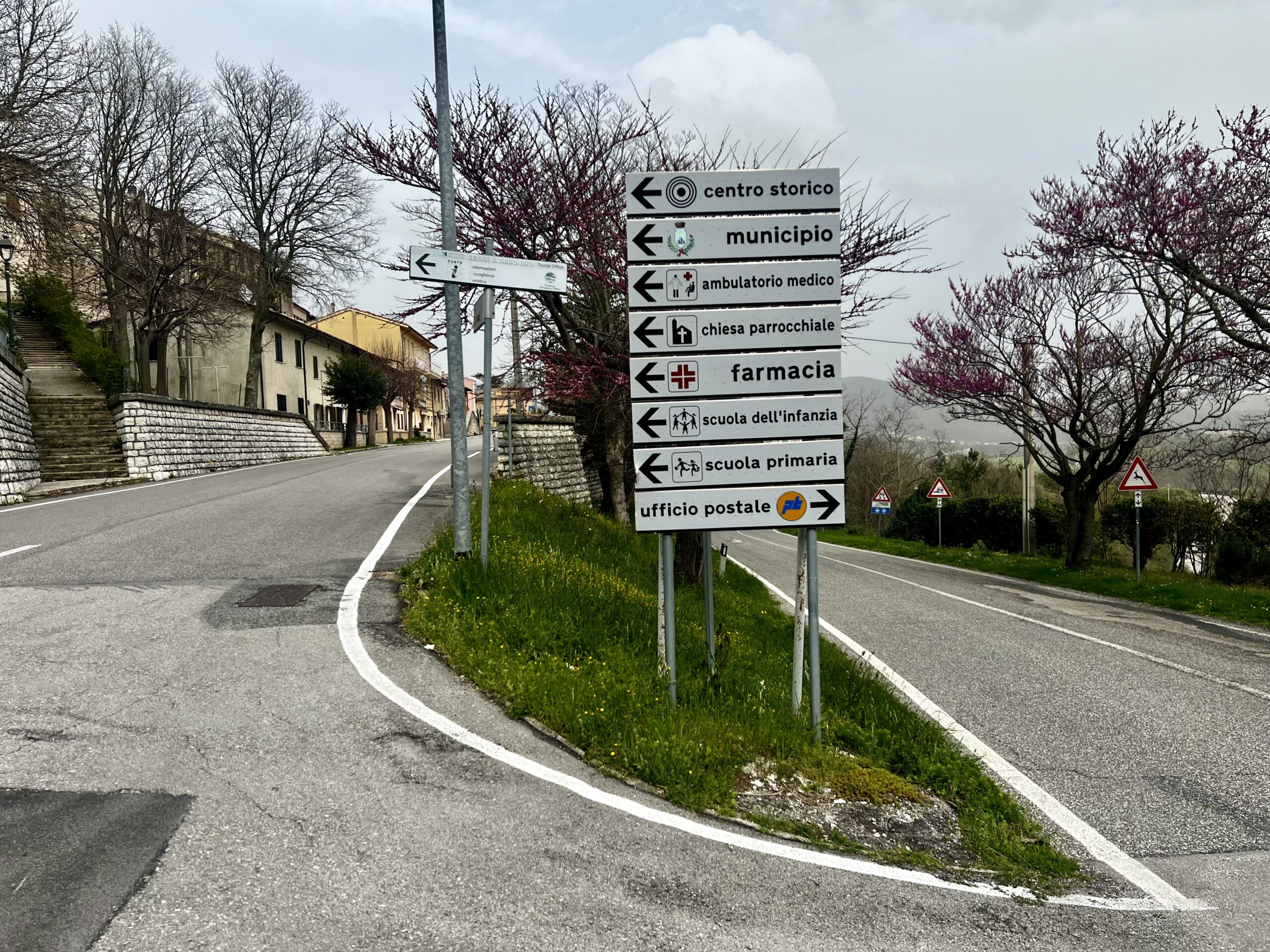
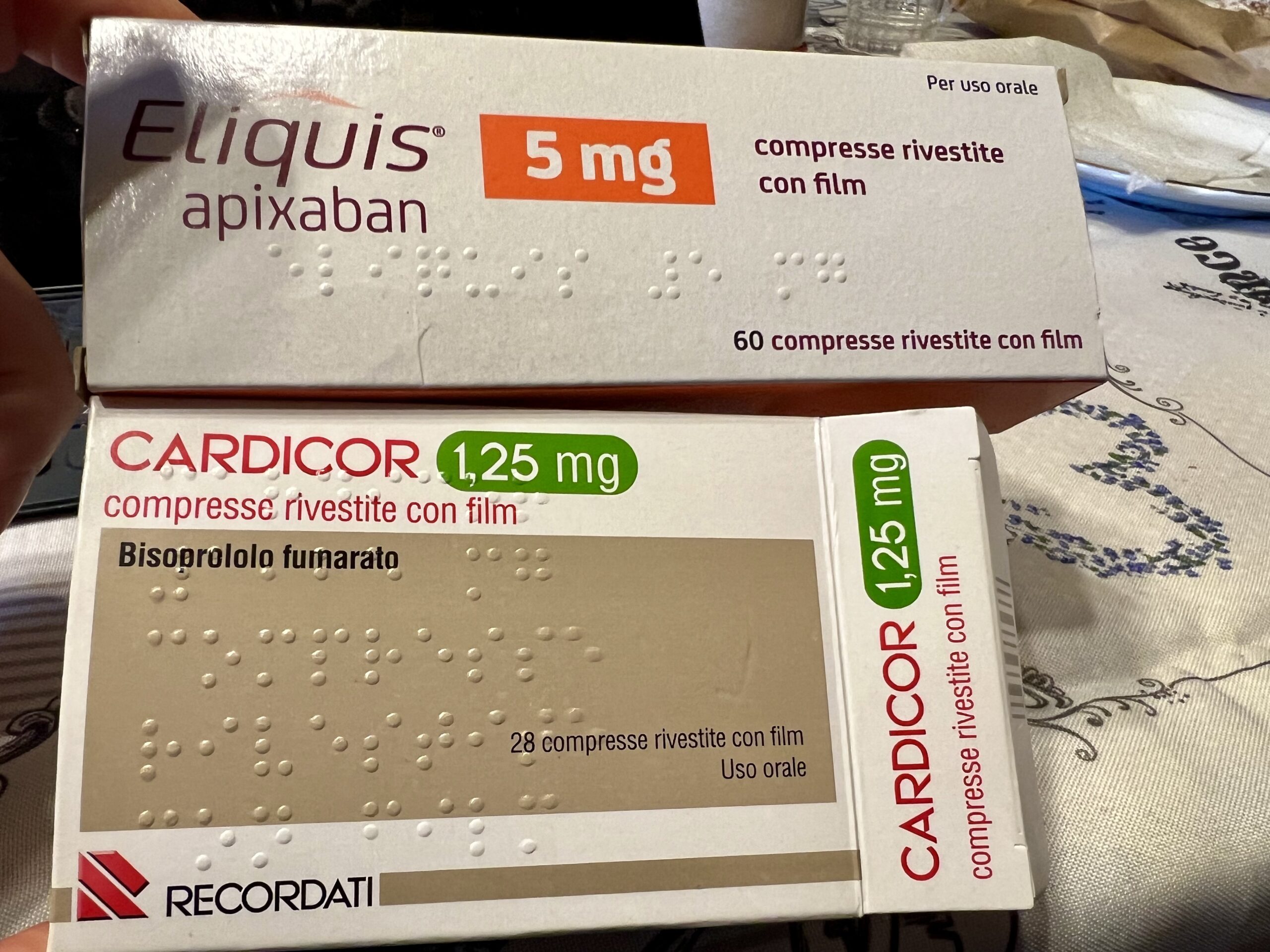
Of note is that each package includes text in braille.
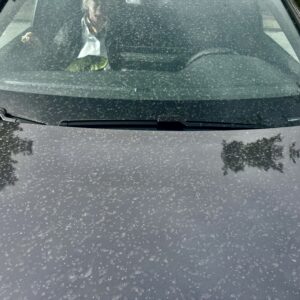
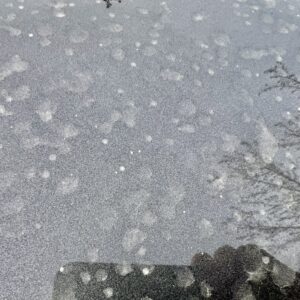
The Flood of 2022
Shortly after we left Serra in 2022, an extremely intense weather event hit the area with heavy rains and flash floods. It caused landslides and rivers to overflow their banks destroying homes and roads. Caused by a stable weather cell (15-16 September), some areas received nearly 16 inches of rain in a few hours. While the old town of Serra was not affected, adjacent areas were. Some road repair still needs to be done.
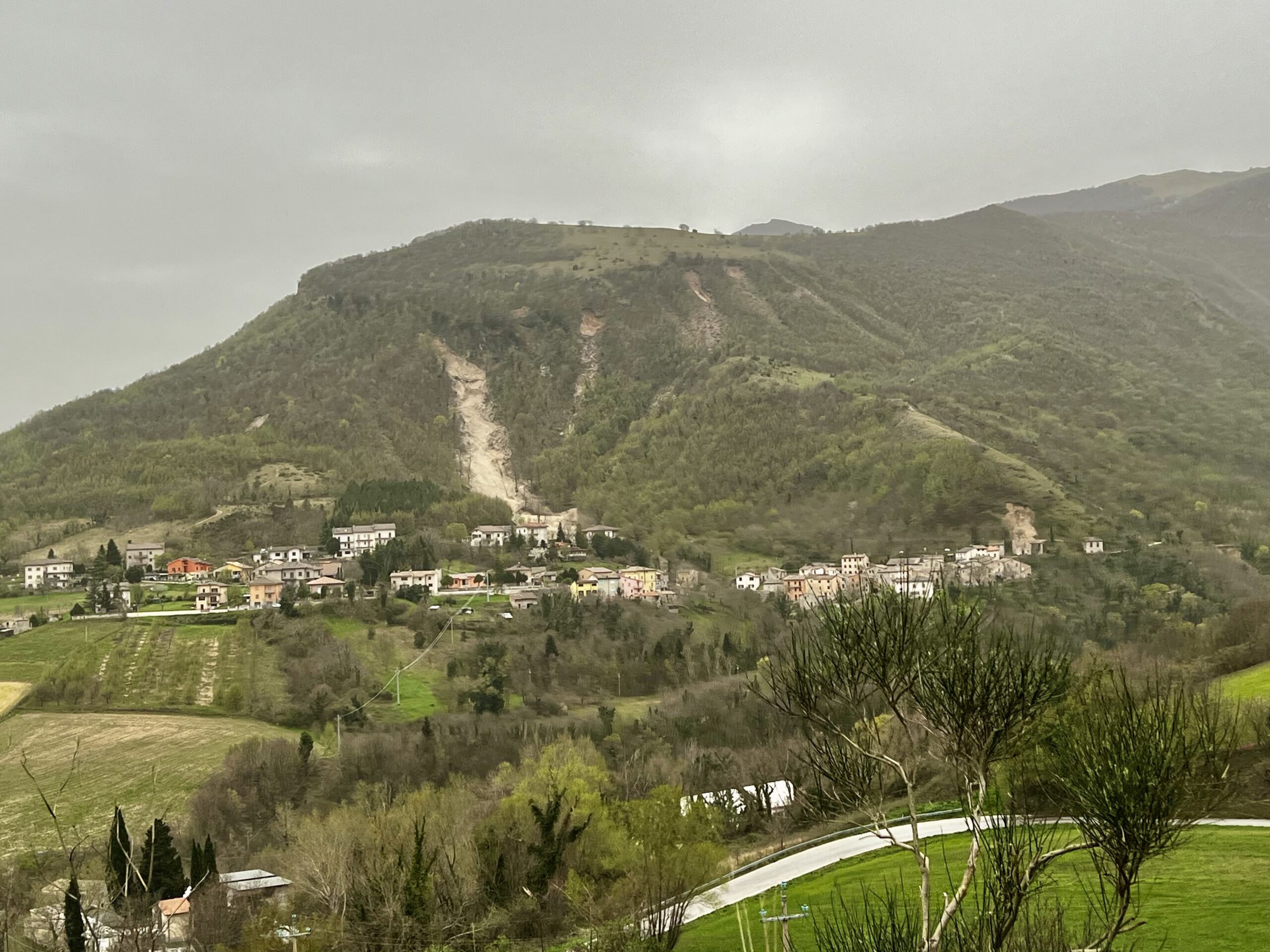
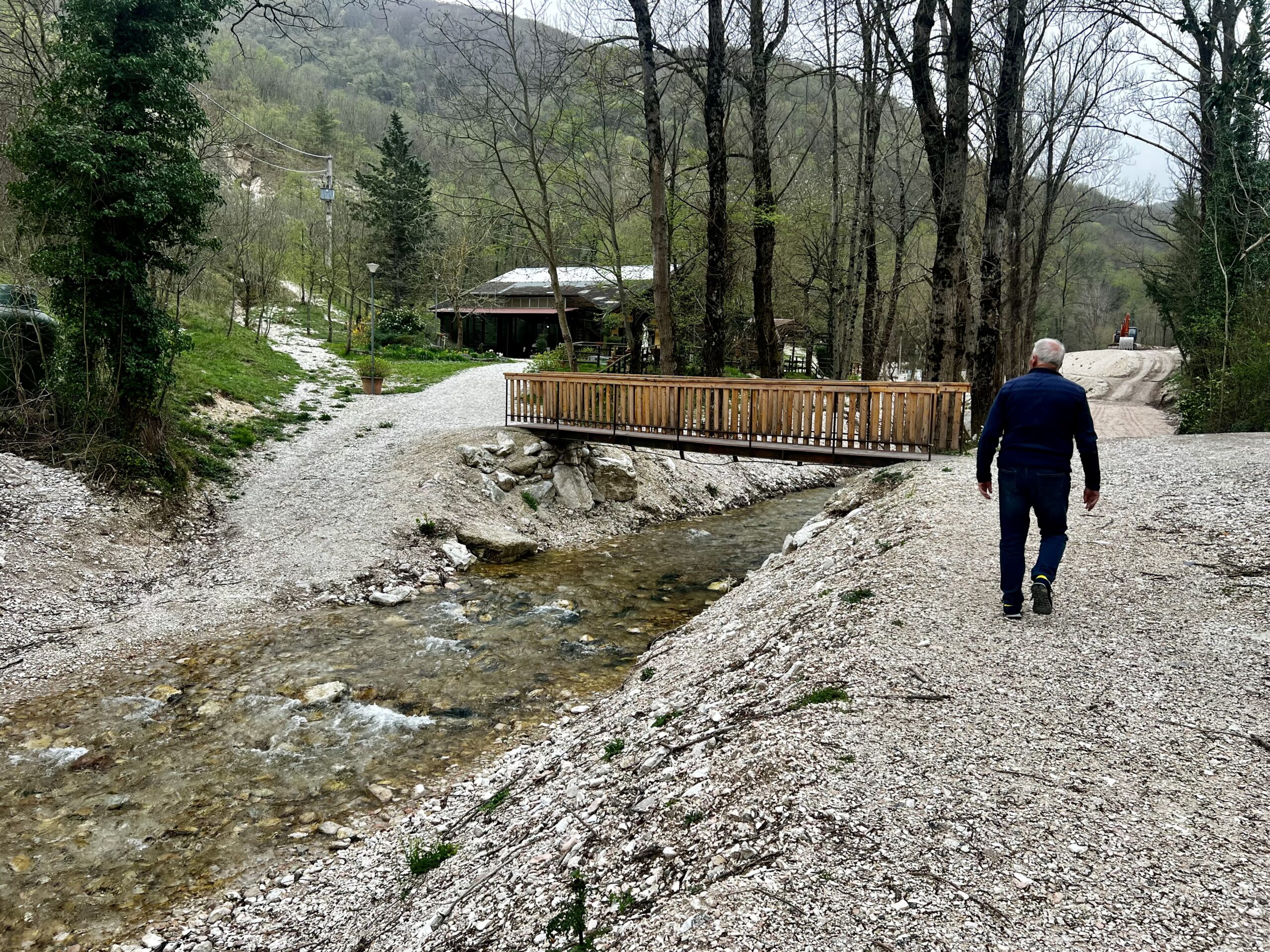
Cimitero e La Chiesa di San Biago
Serra’s cemetery lies outside of town in a small valley. In the past, they buried the dead in the ground but would exhume the bones after twenty-five years and place them in a common vault. For the past fifty years or so they have used a mausoleum. Robert can find the names of relatives here. Many of the family names are also common family names familiar to Robert from where he grew up.
The church/chapel dedicated to San Biagio, the patron saint of Serra, has a series of frescoes that have deteriorated badly over the years. Below it, dug into the hillside and hidden from view is another much older place of worship. Some believe it dates back to the 4th or 5th century. Some of the columns are thought to be from Roman pagan temples.
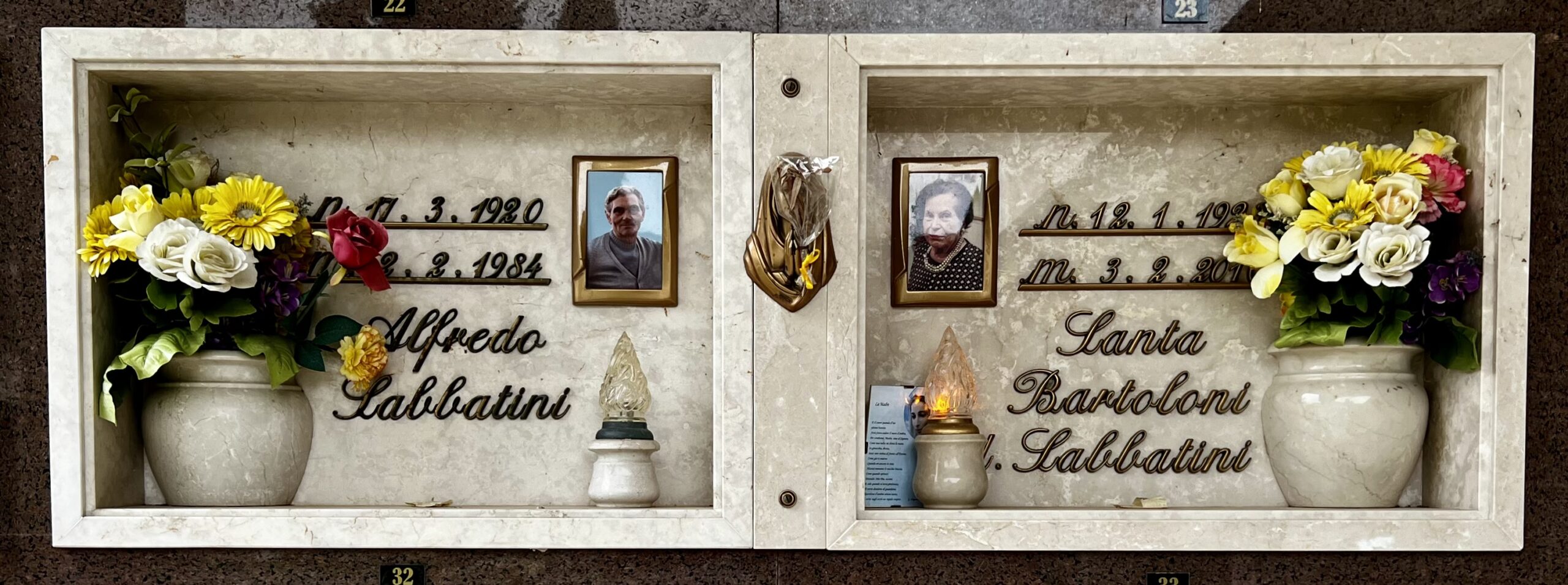
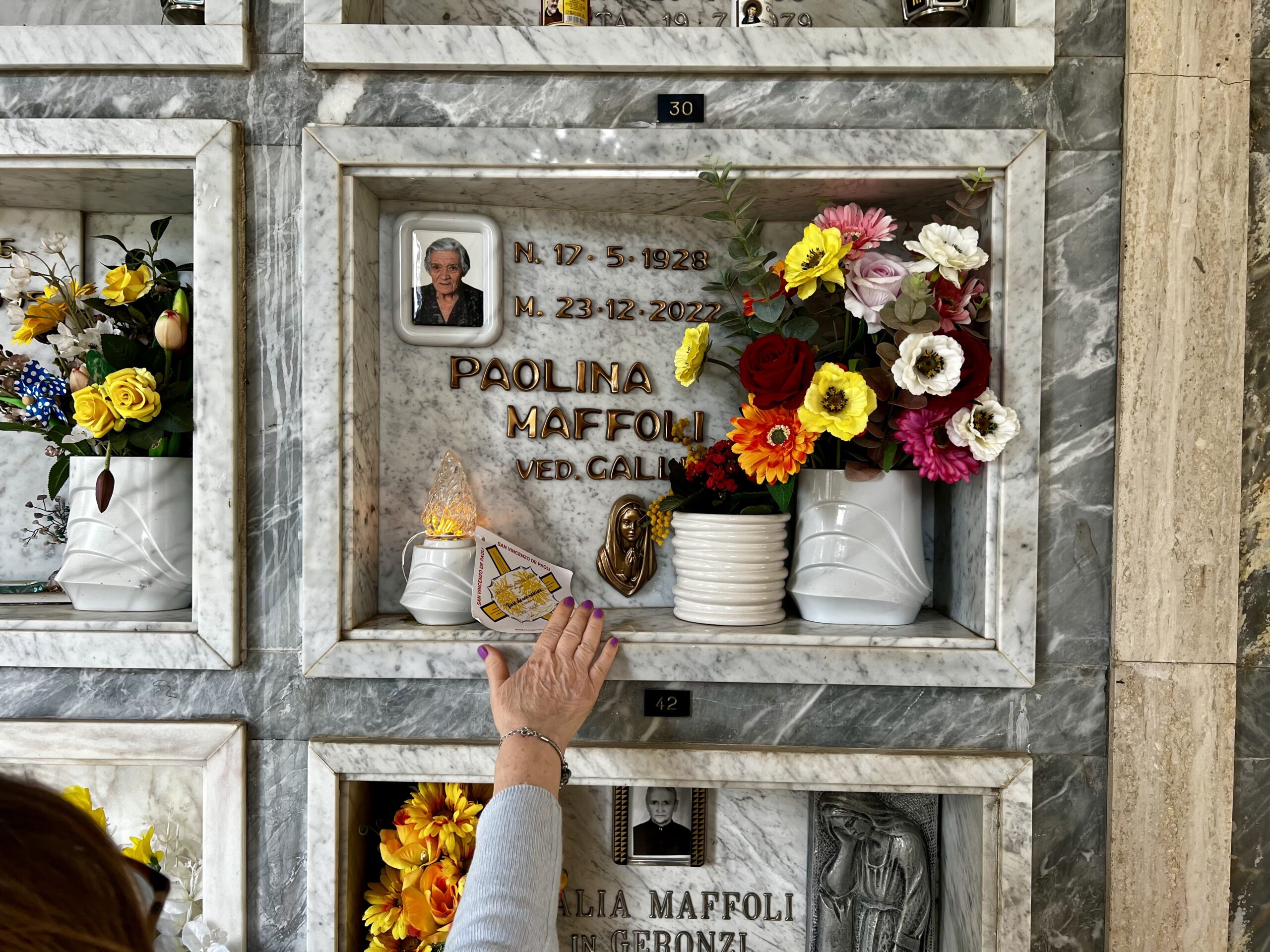
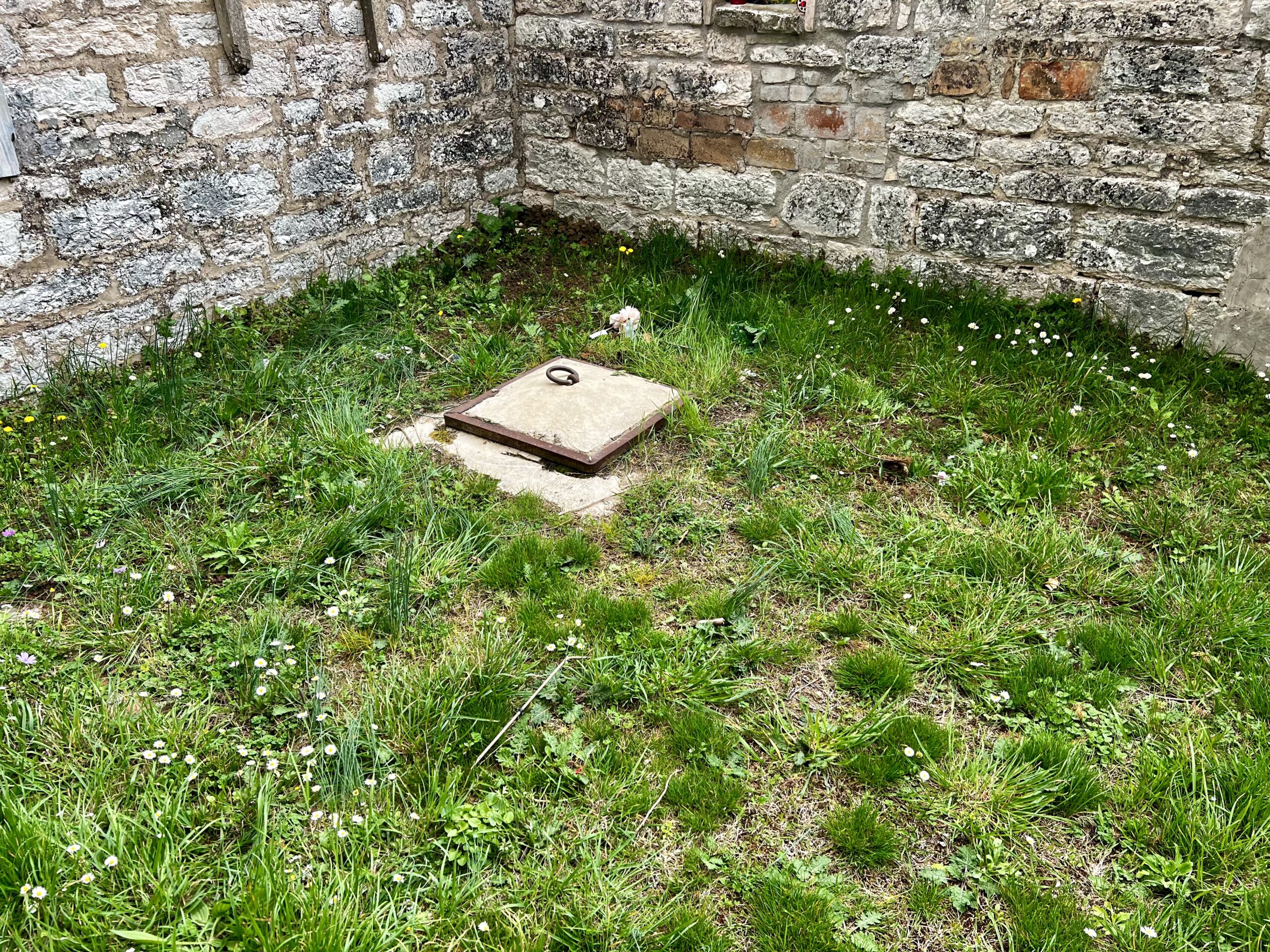
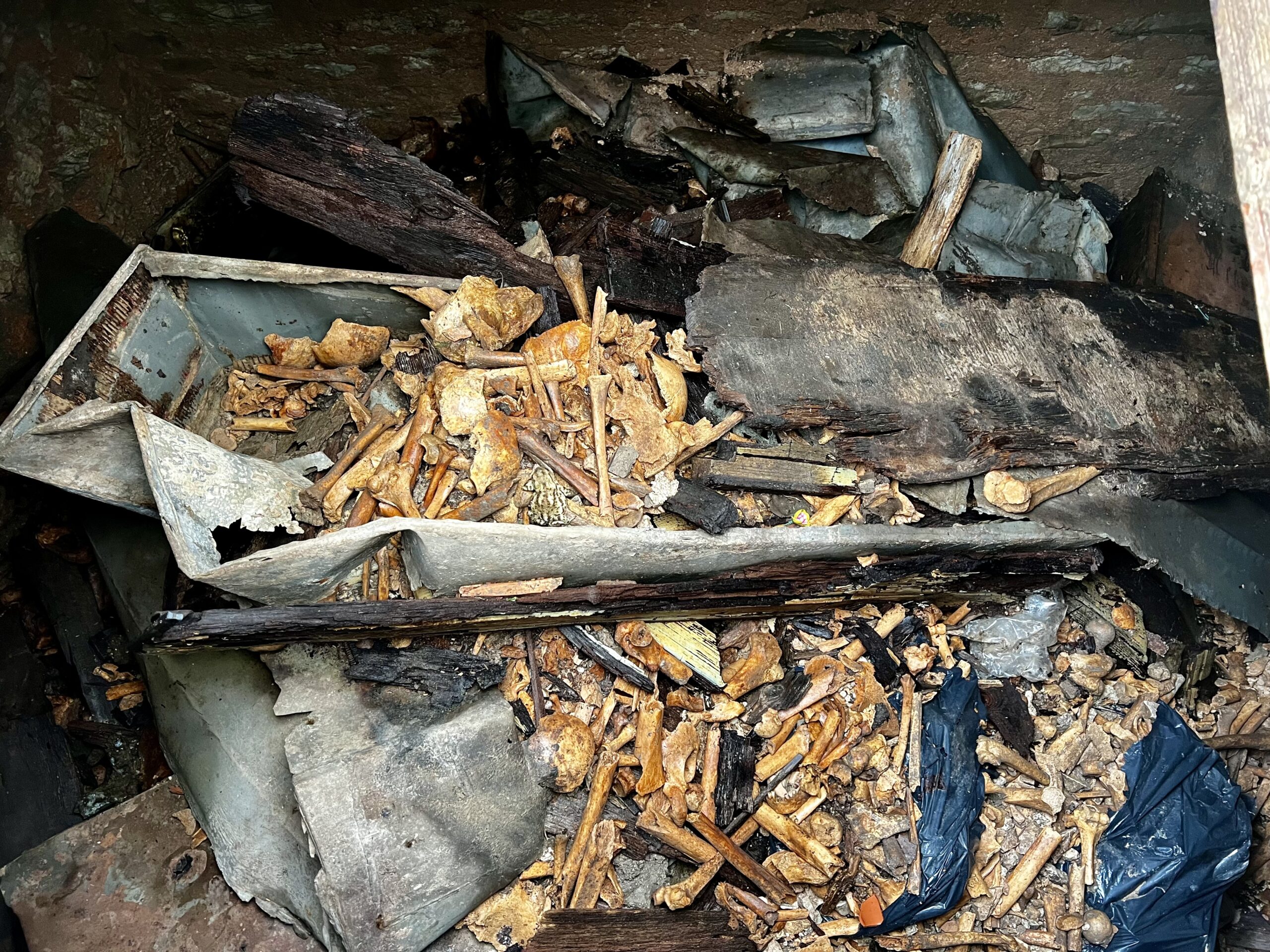
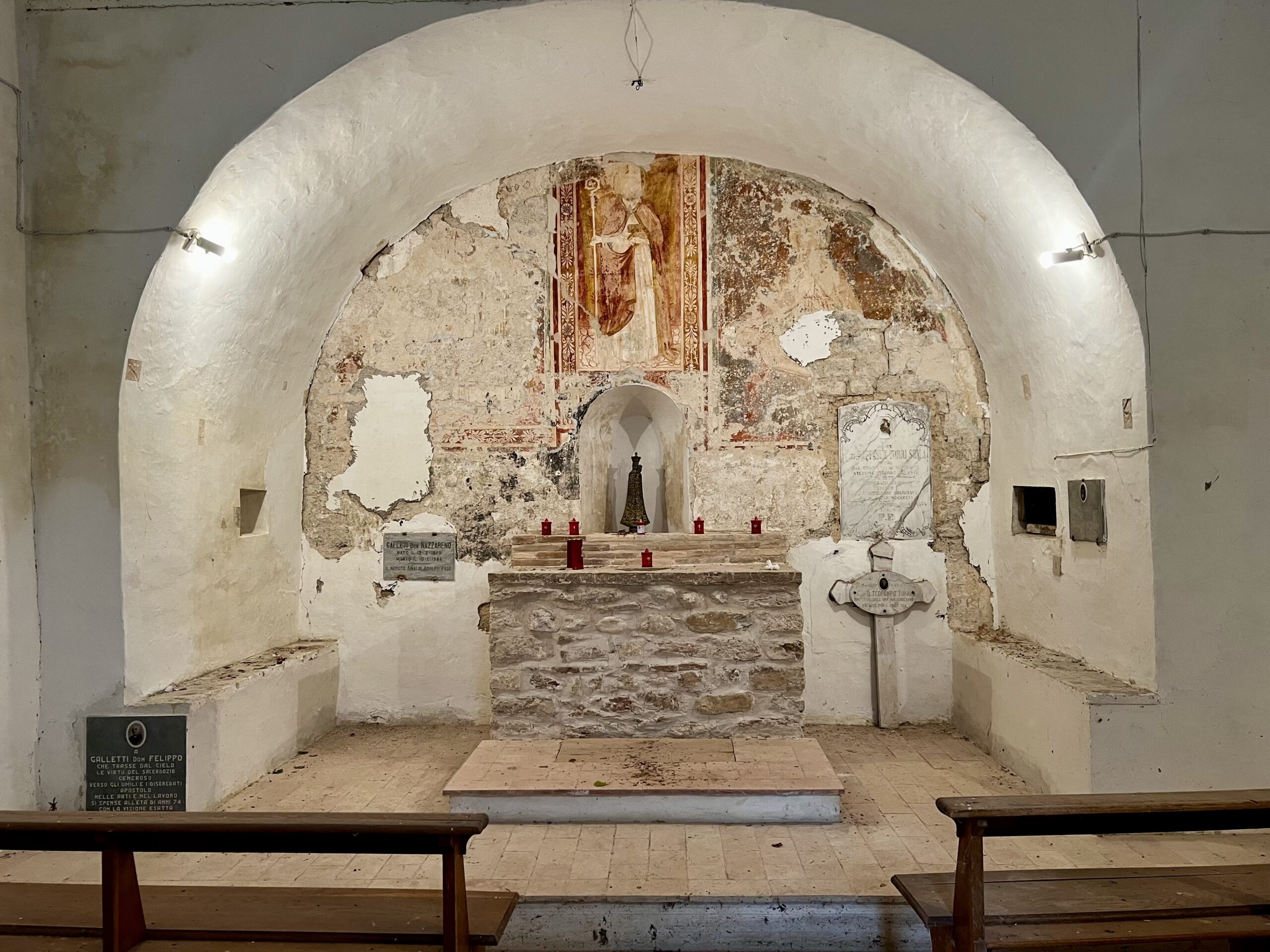
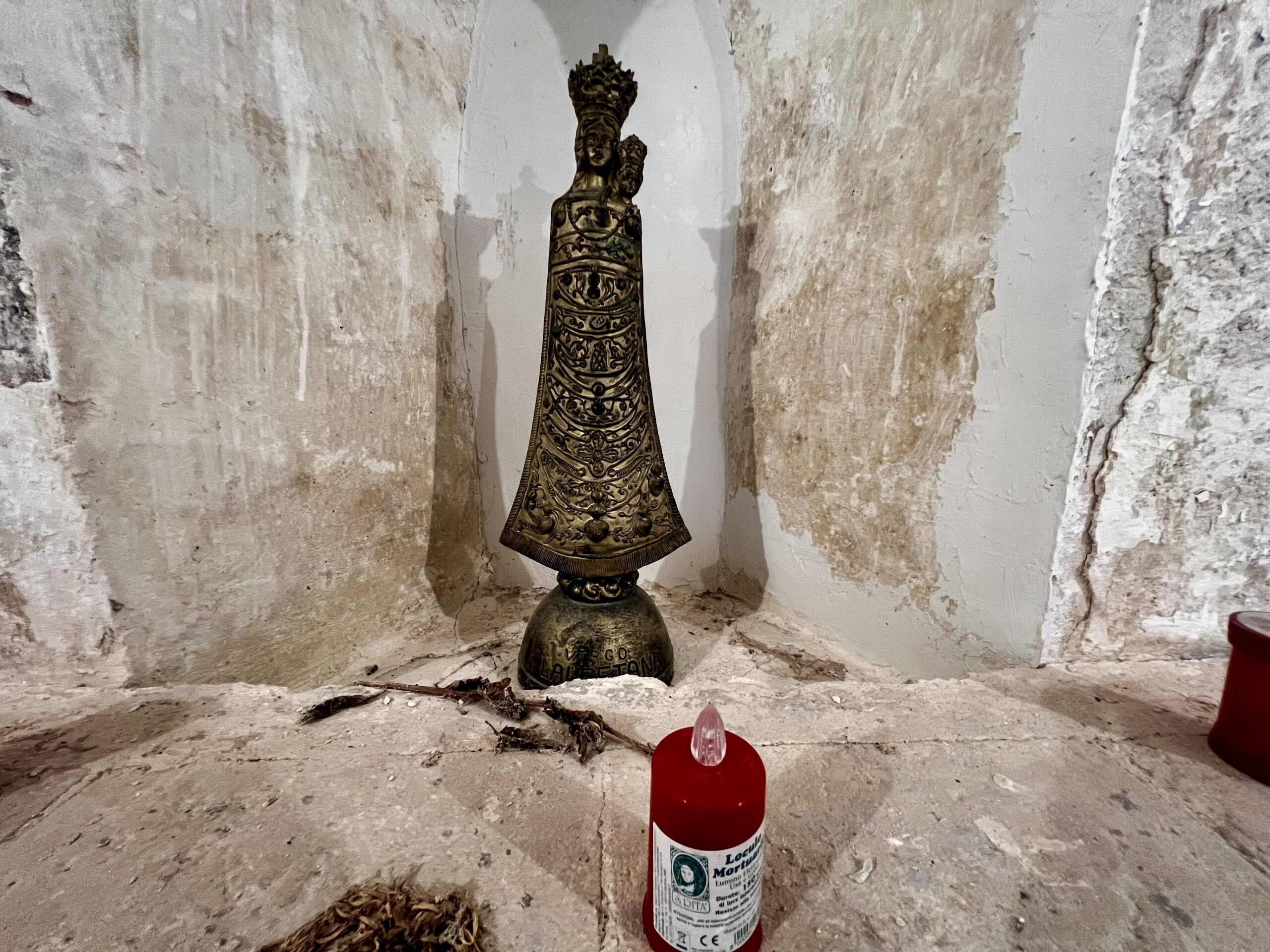
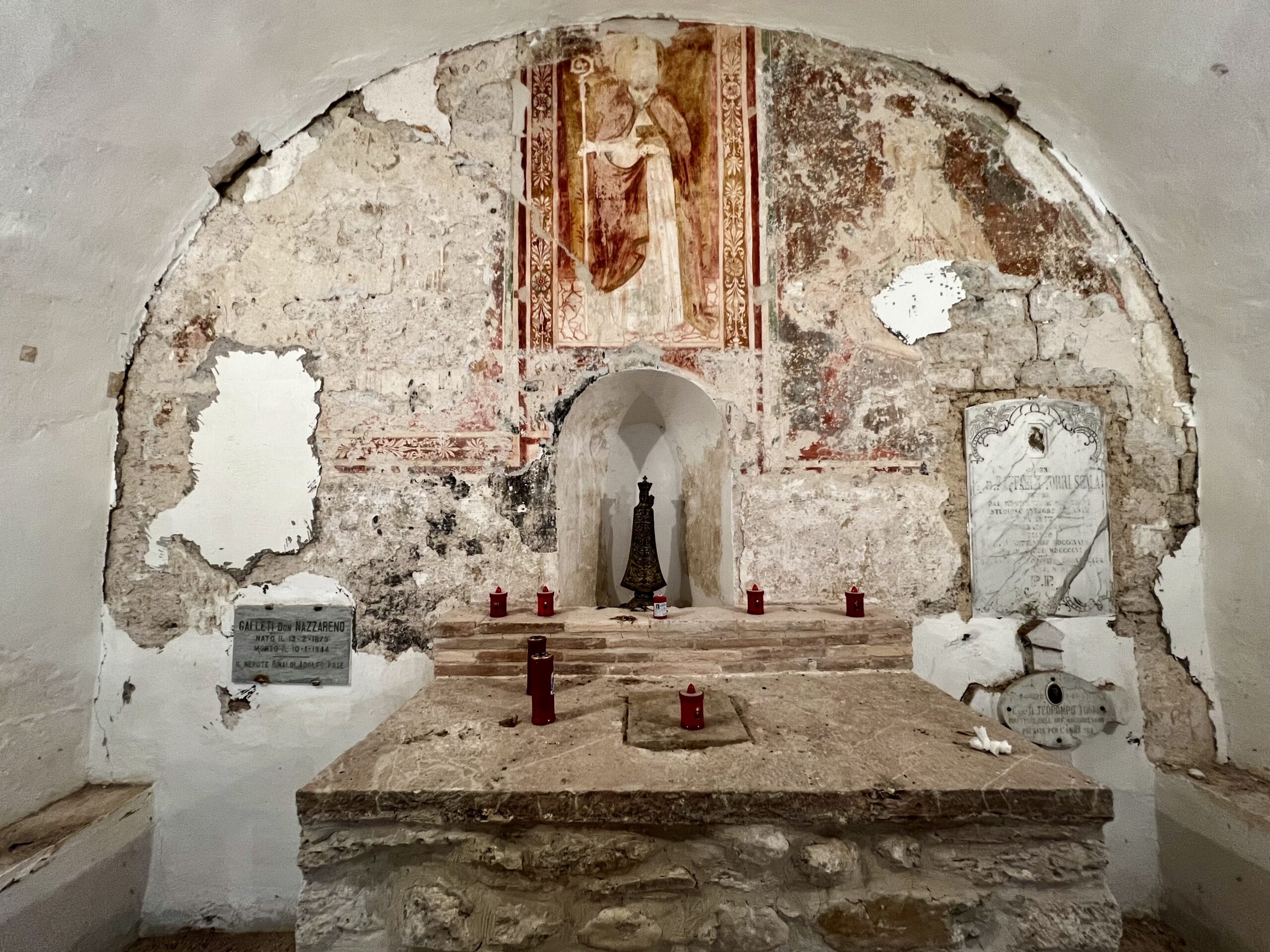
Style Notes
Simple white sneakers are still the footwear of choice in Rome. Even for fashionable cousins like Bruna meeting us at a nice restaurant. Mature women might choose a white pair with metallic gold accents. Men often wear black sneakers or a dark neutral like forest green or brown. No crazy neon color combinations or bloated soles.
Employees of hotels, restaurants, and other businesses wear black shoes. Bonnie noticed that the clerks at the upscale Rinascente department store in Rome must wear black leather shoes. These might be boots, lace ups, or chunky loafers. Loafers are definitely returning. Many of the shoe stores along a main shopping street in Rome have disappeared. But Foot Locker and Skechers have arrived.
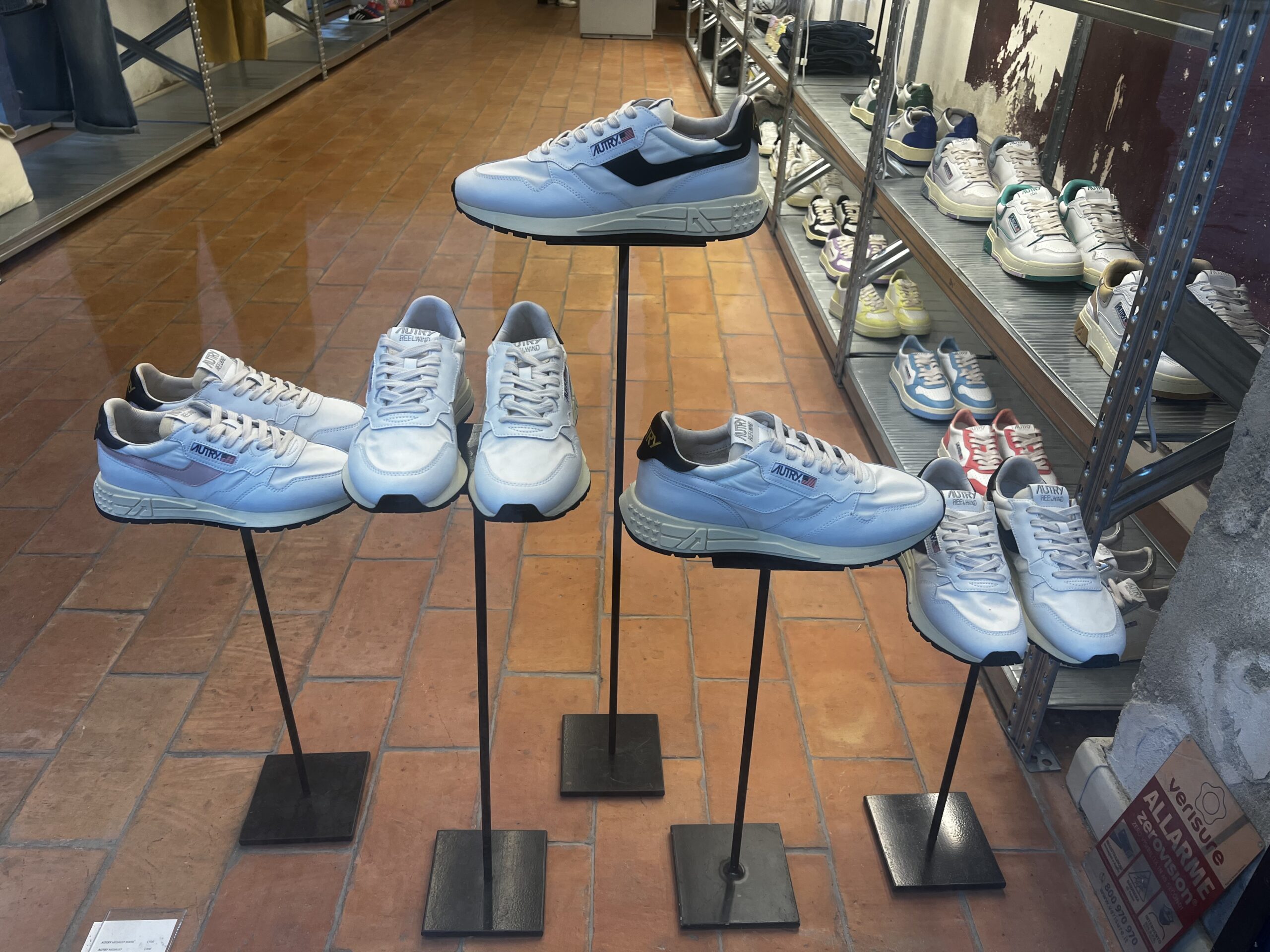
Travel Mechanics
We are new converts to compression packing cubes. Thank you, Richard Loyd. Robert picked up the Thule brand at REI just before we left home. They miraculously save space without much wrinkling of the rolled clothes inside.
To find places to stay, Bonnie starts research on Booking.com. Although we are open to hotels, apartments, or whatever, the one-bedroom apartments are usually the best rated, with the best facilities like kitchens and sometimes laundry, and at the best prices. If possible, we contact the owners directly. Elevators are rarely available in old buildings.
The toughest variable in searching for lodging is arranging parking for the car. We hope for a space not far from the apartment and not too expensive. But because so many cities have extensive ZTL (Zona Traffico Limitato) areas, we might have to roll our luggage as much as a mile over cobbled streets from parking lot to lodging.
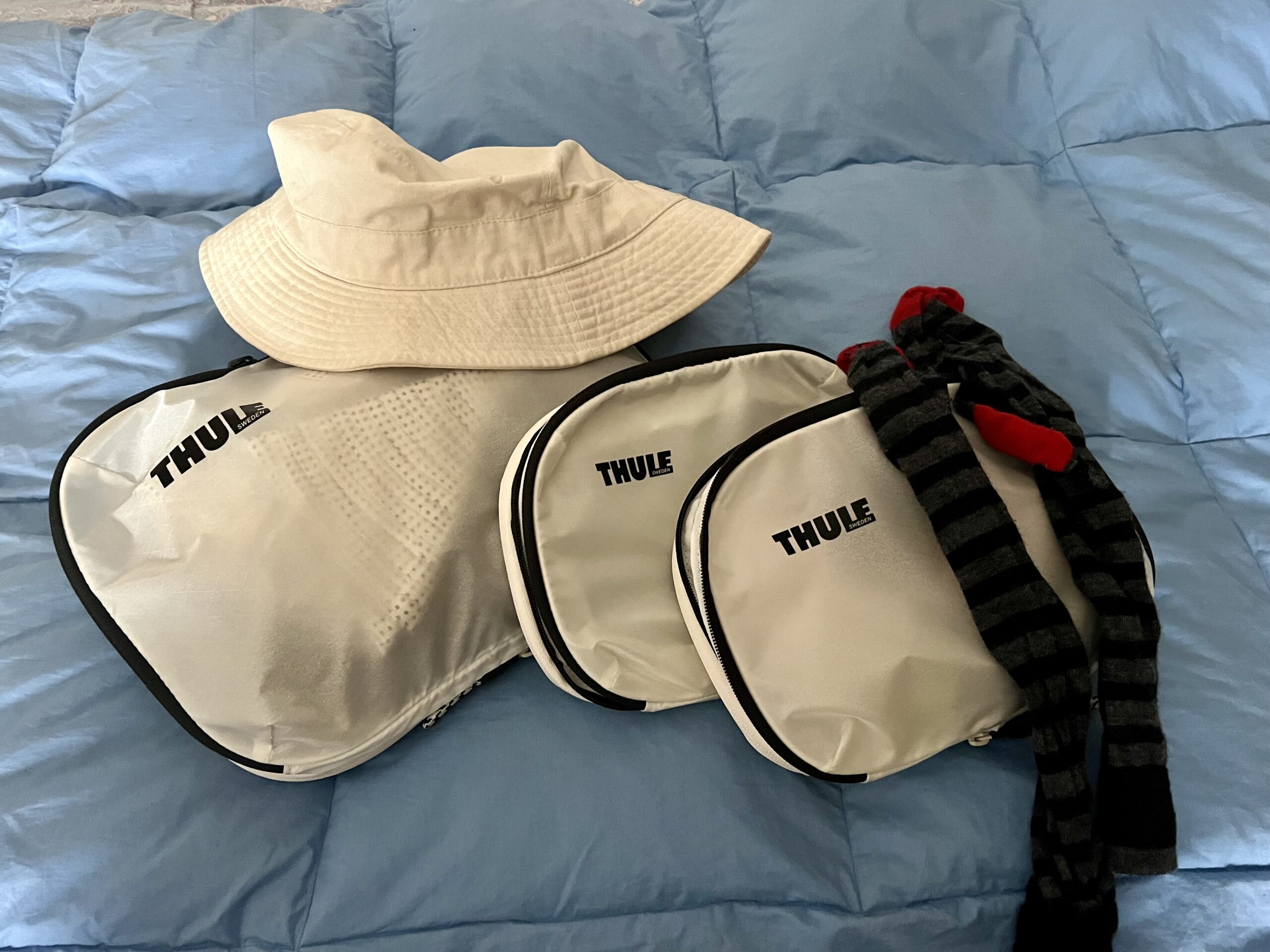
I Gatti di Serra
Don’t know how many more litters there were since we were here in 2022, but all the cats seem well fed. There must be more than one black cat too!
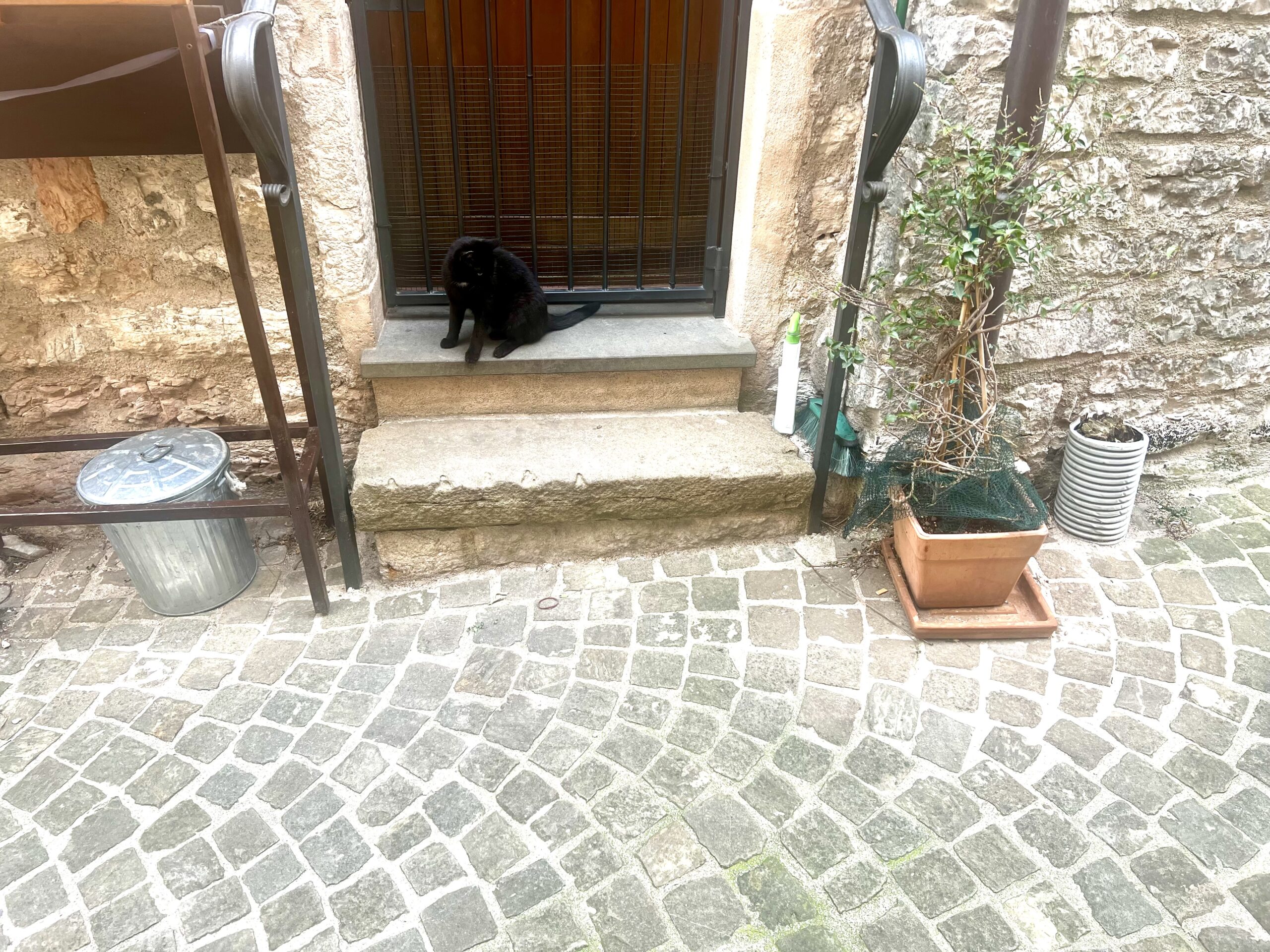
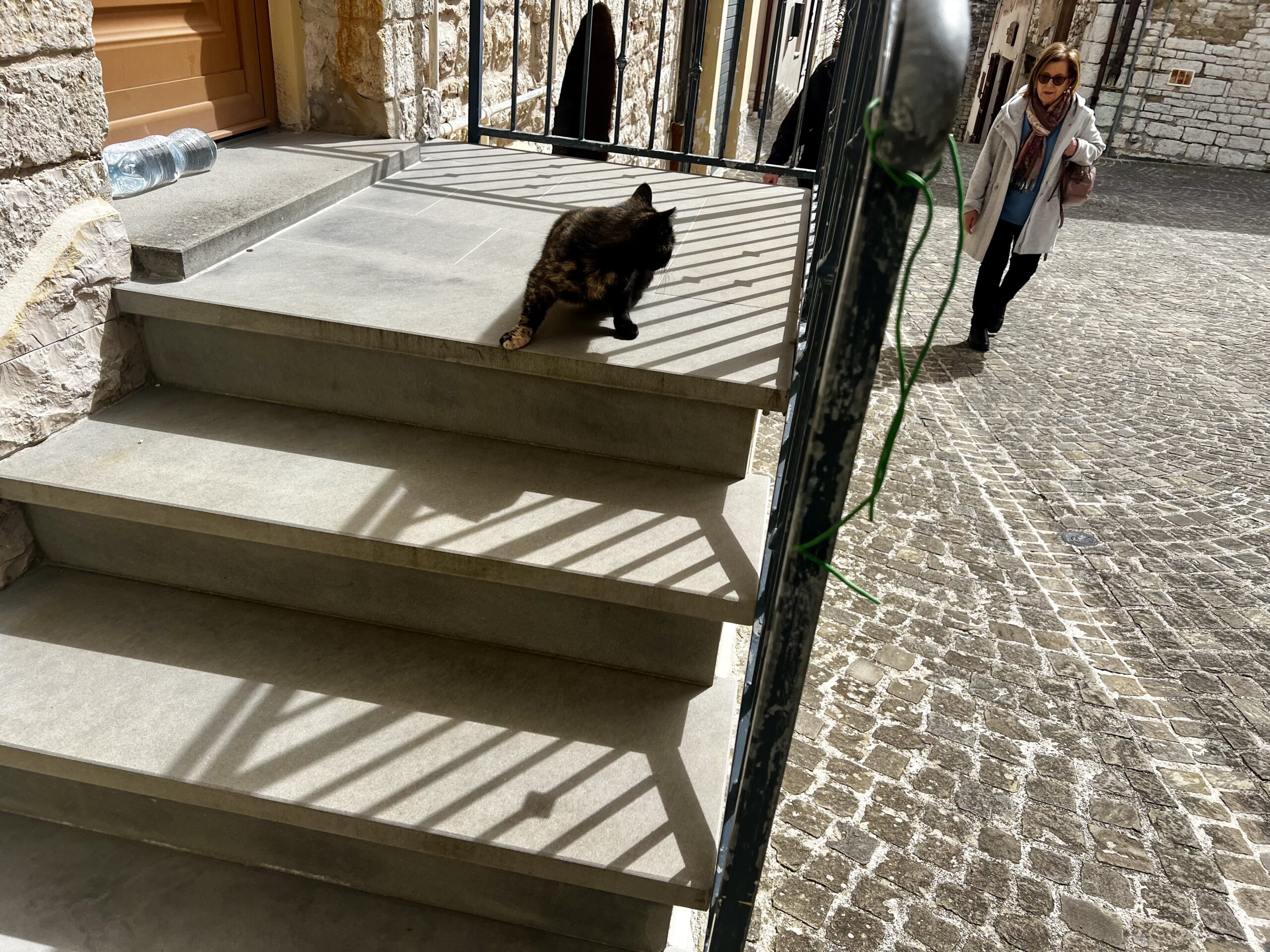
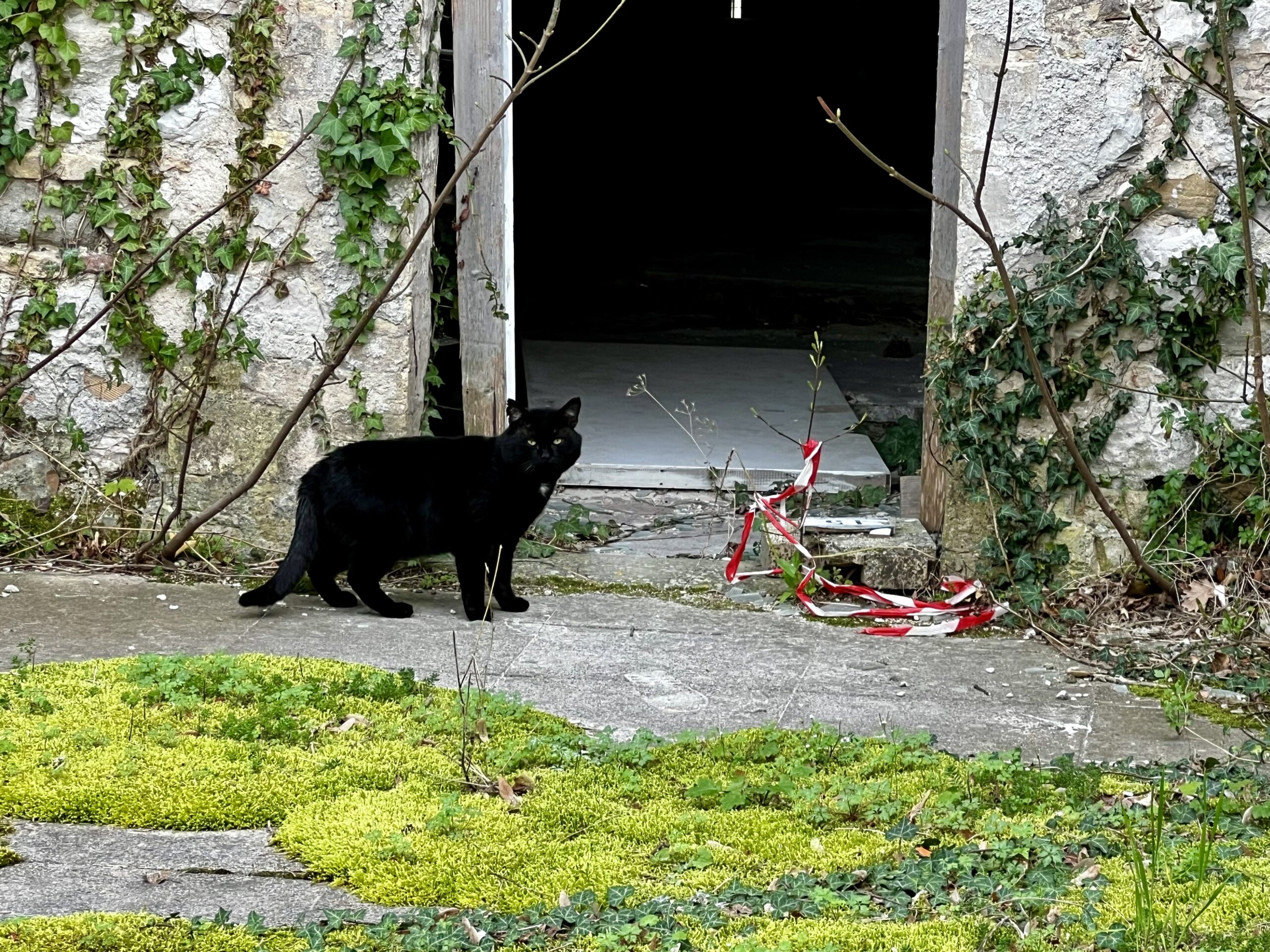
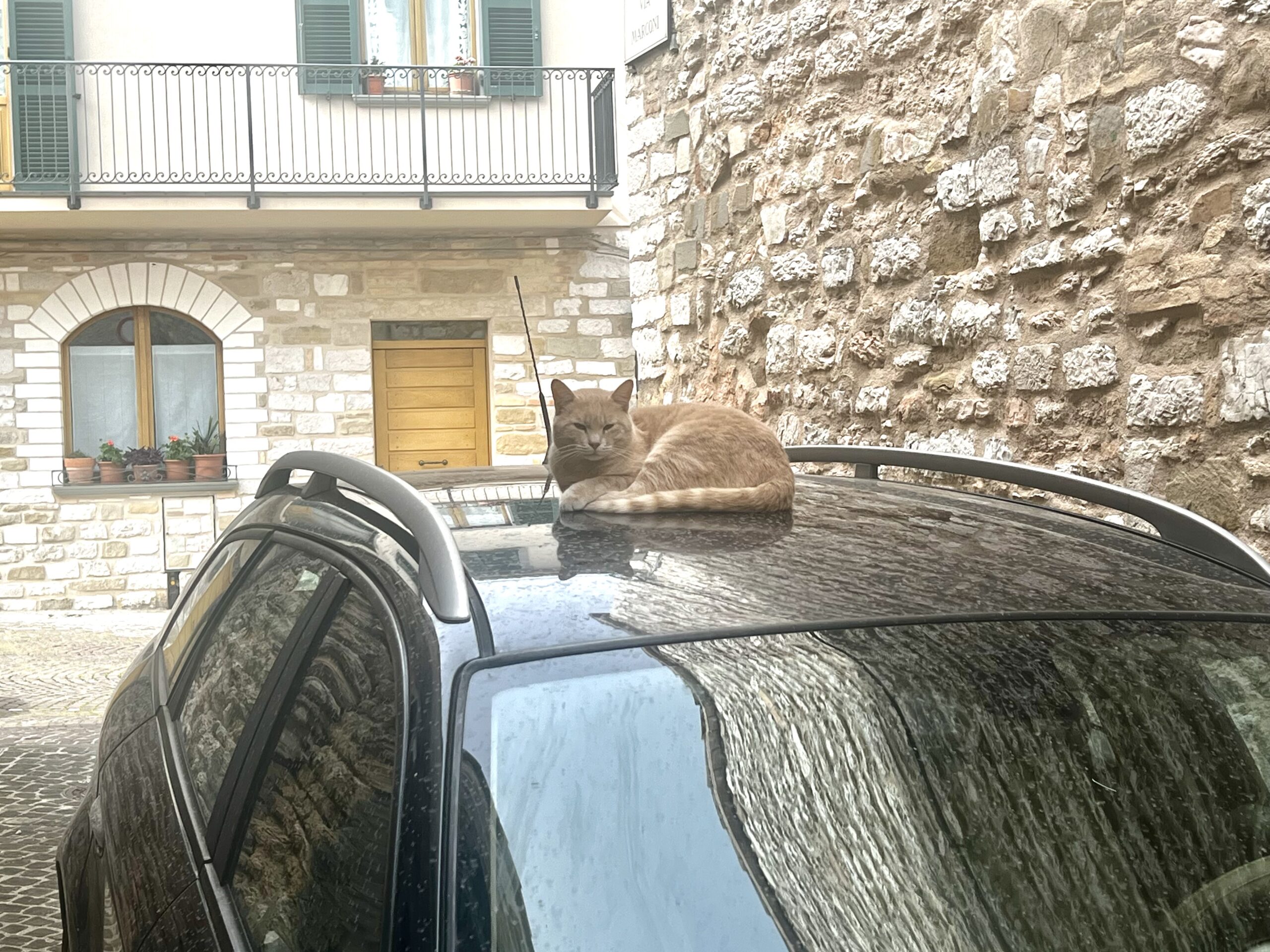
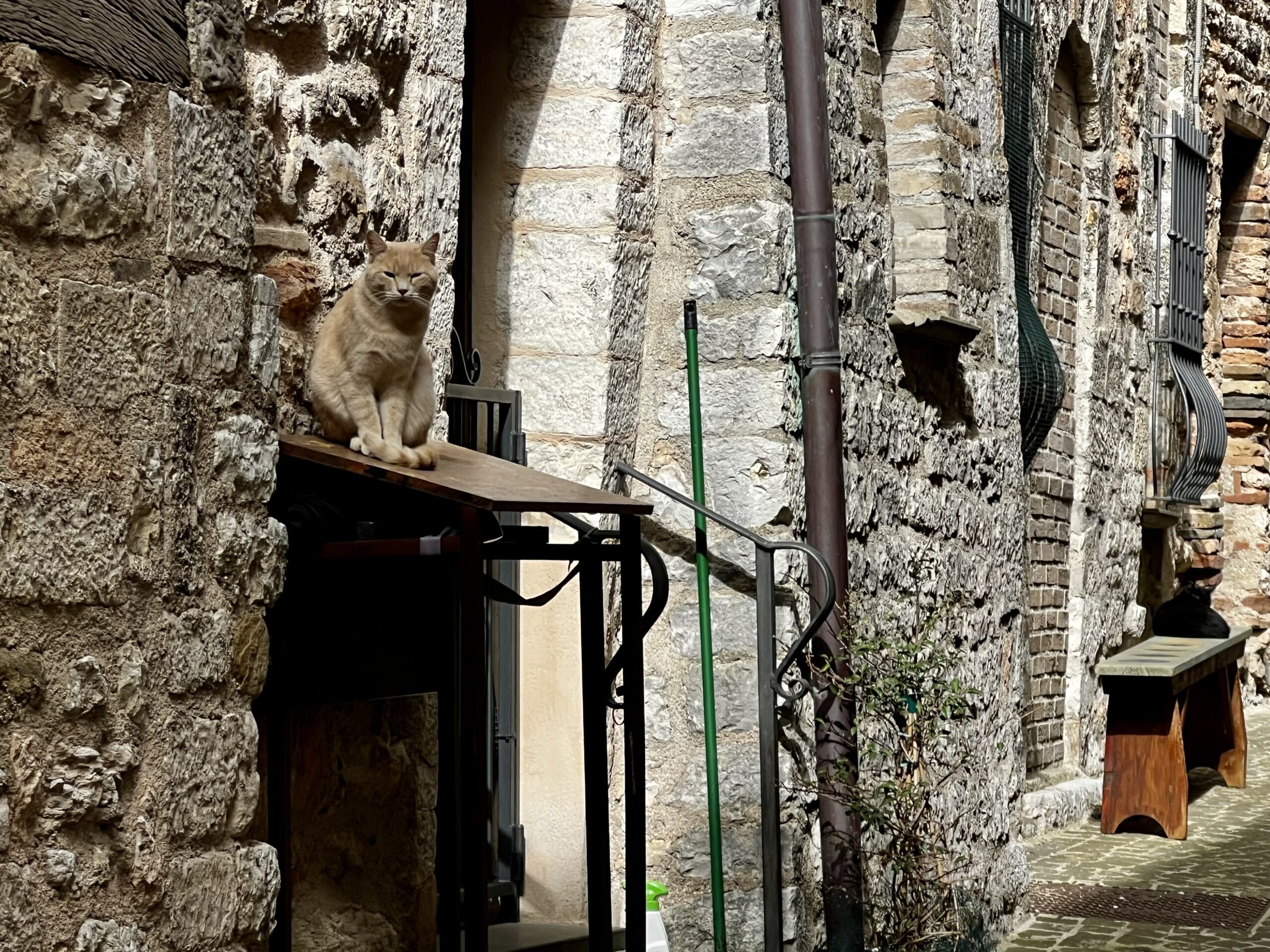
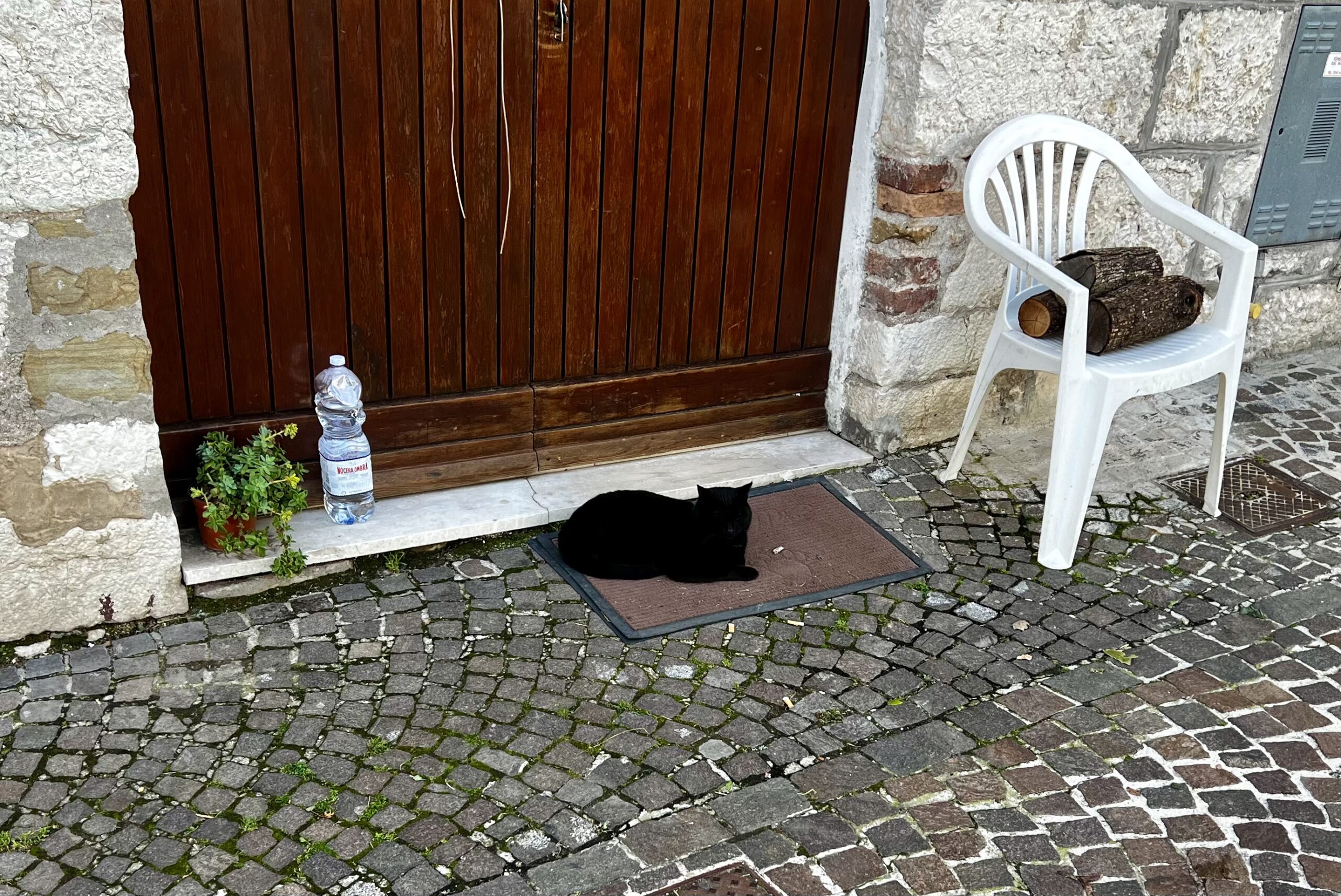
Pergola
Robert took a drive with Luciana to Pergola, about nine miles east of Serra. The Saturday market of outdoor booths was in full swing although many say it is no longer as large as in the past. Luciana always seems to run into someone she knows. A five-minute stroll often ends up to be one hour. This is a good thing. During the stroll through the market, Luciana ran into three friends, one of them the grandson of one of Nonno’s sisters. Another second cousin Robert had not yet met!
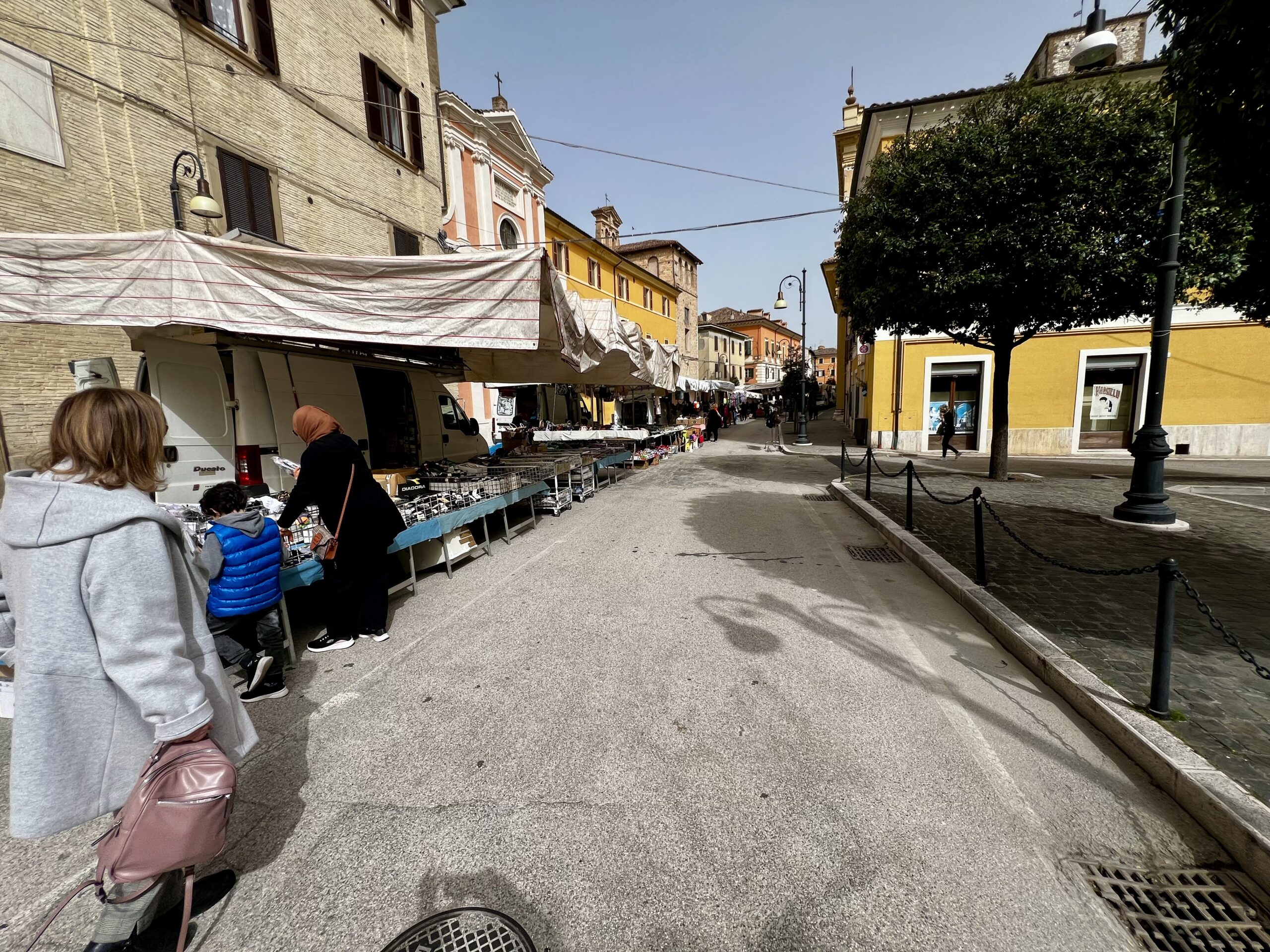
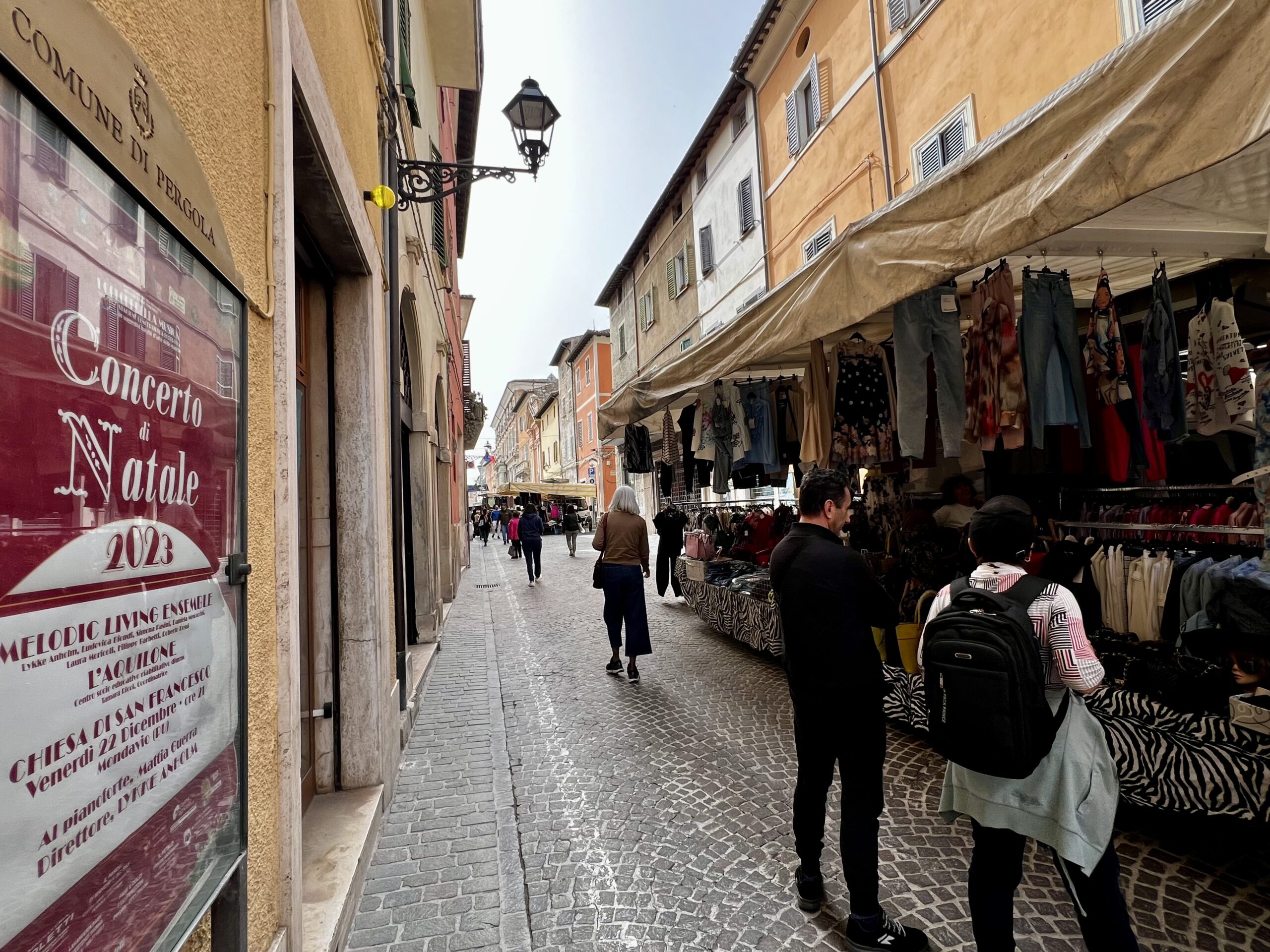
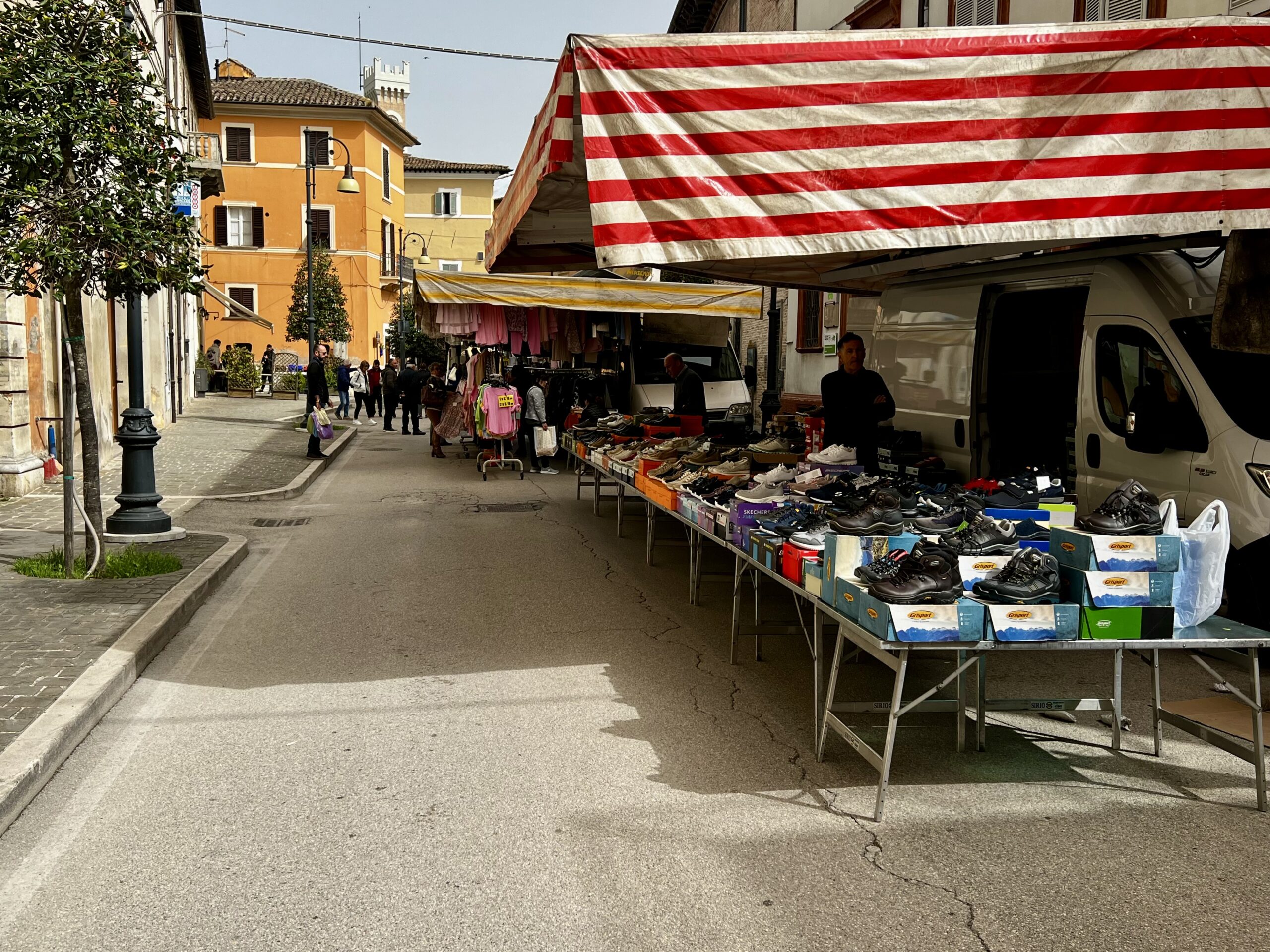
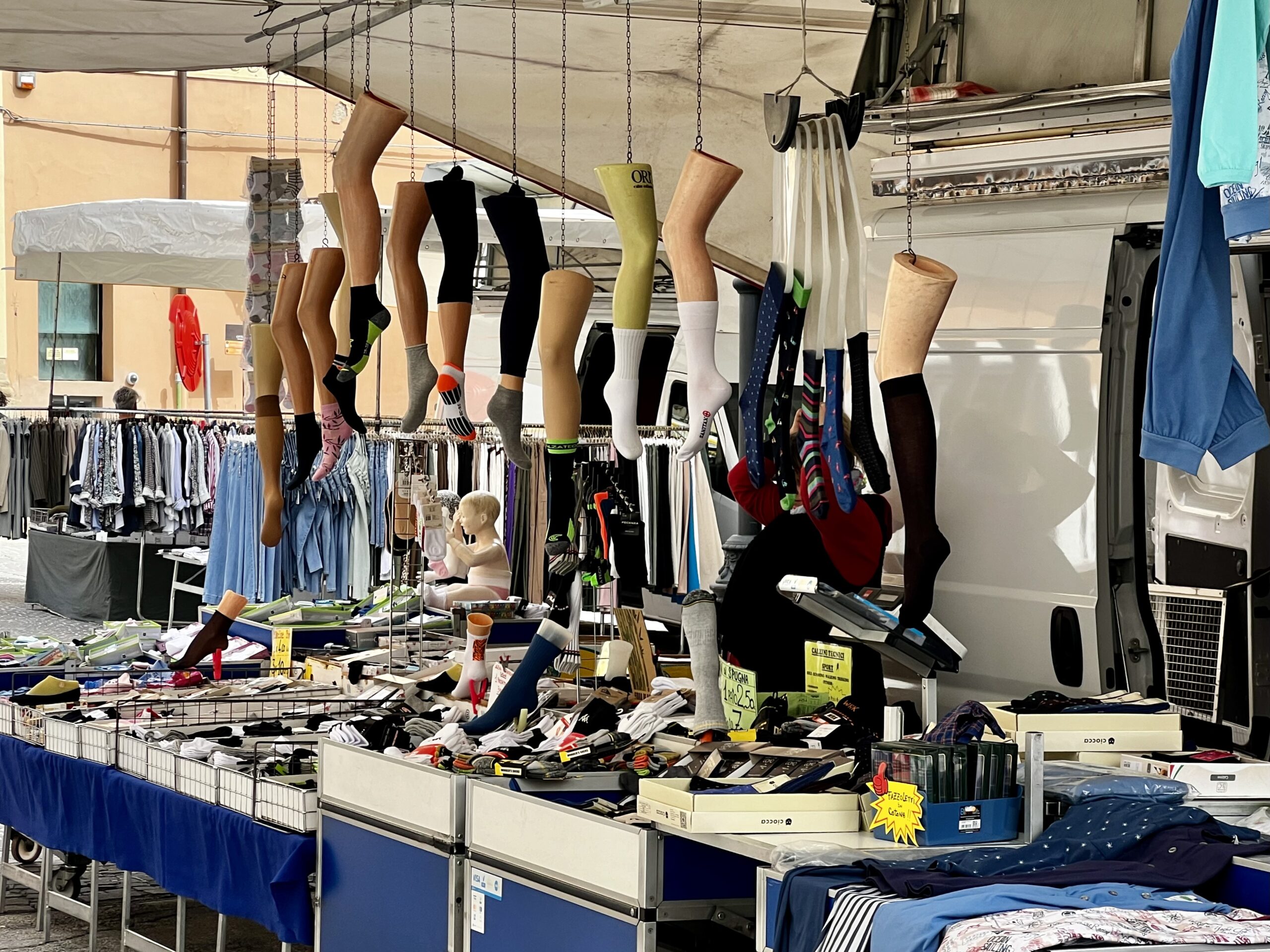
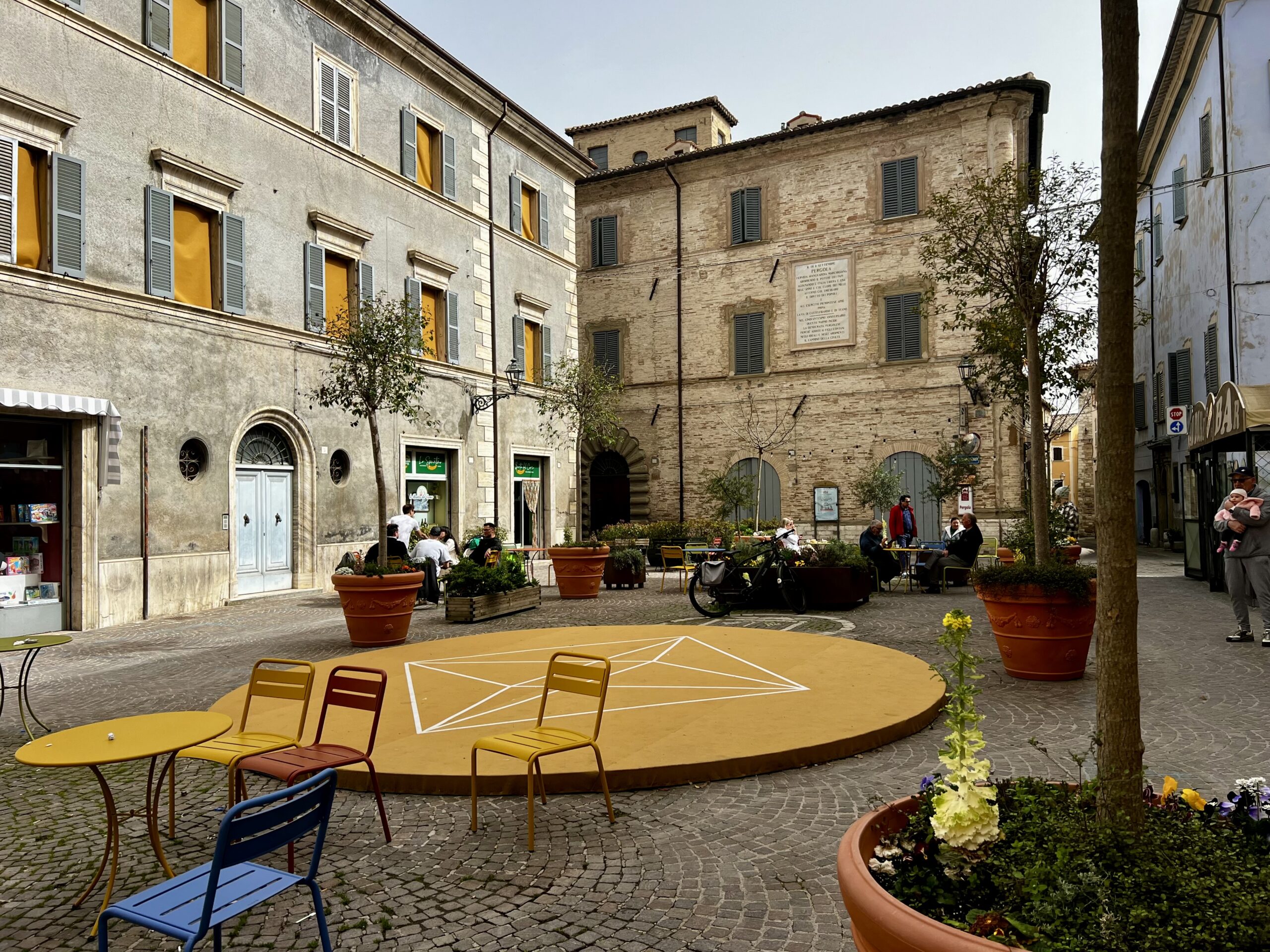
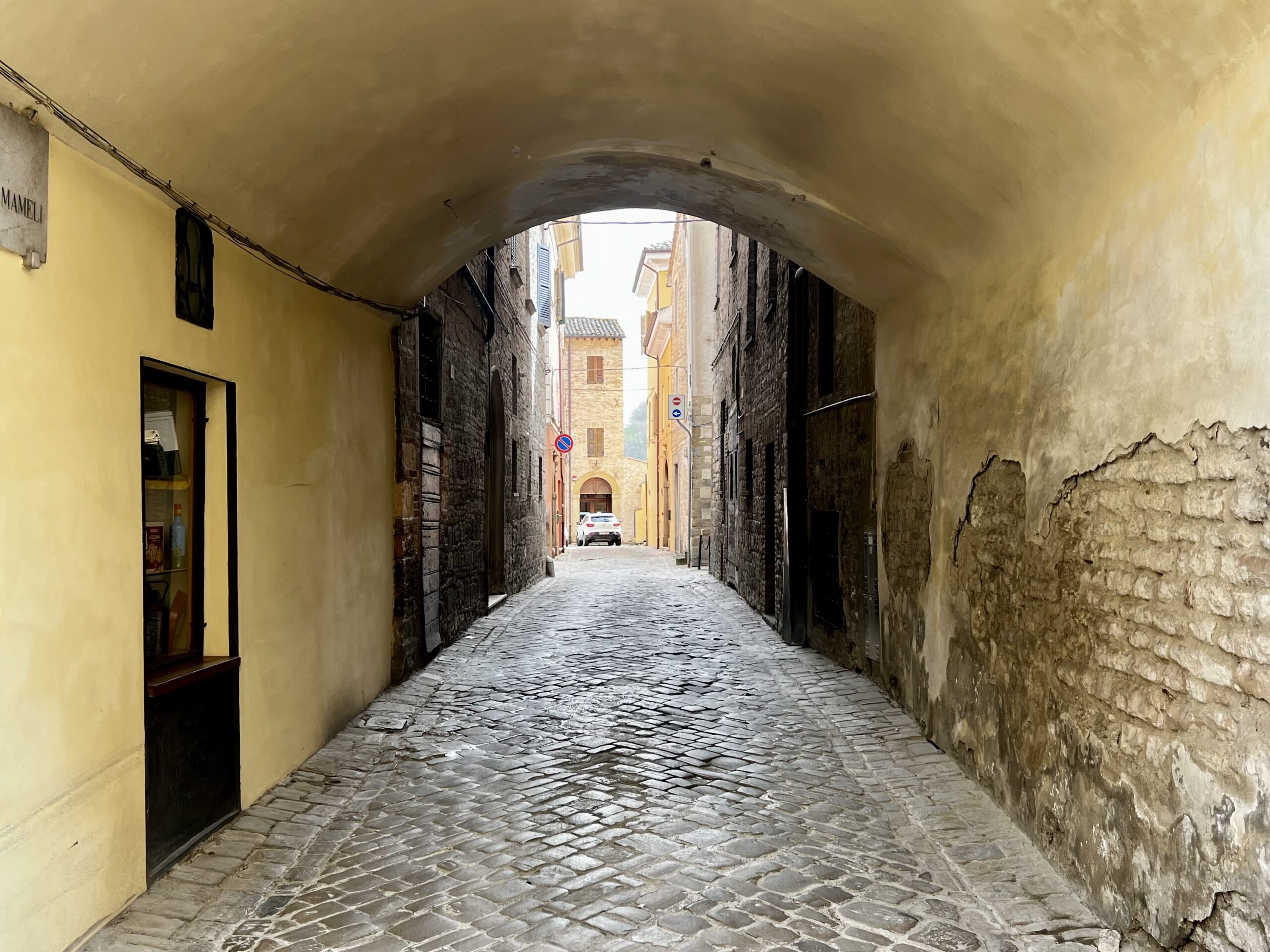
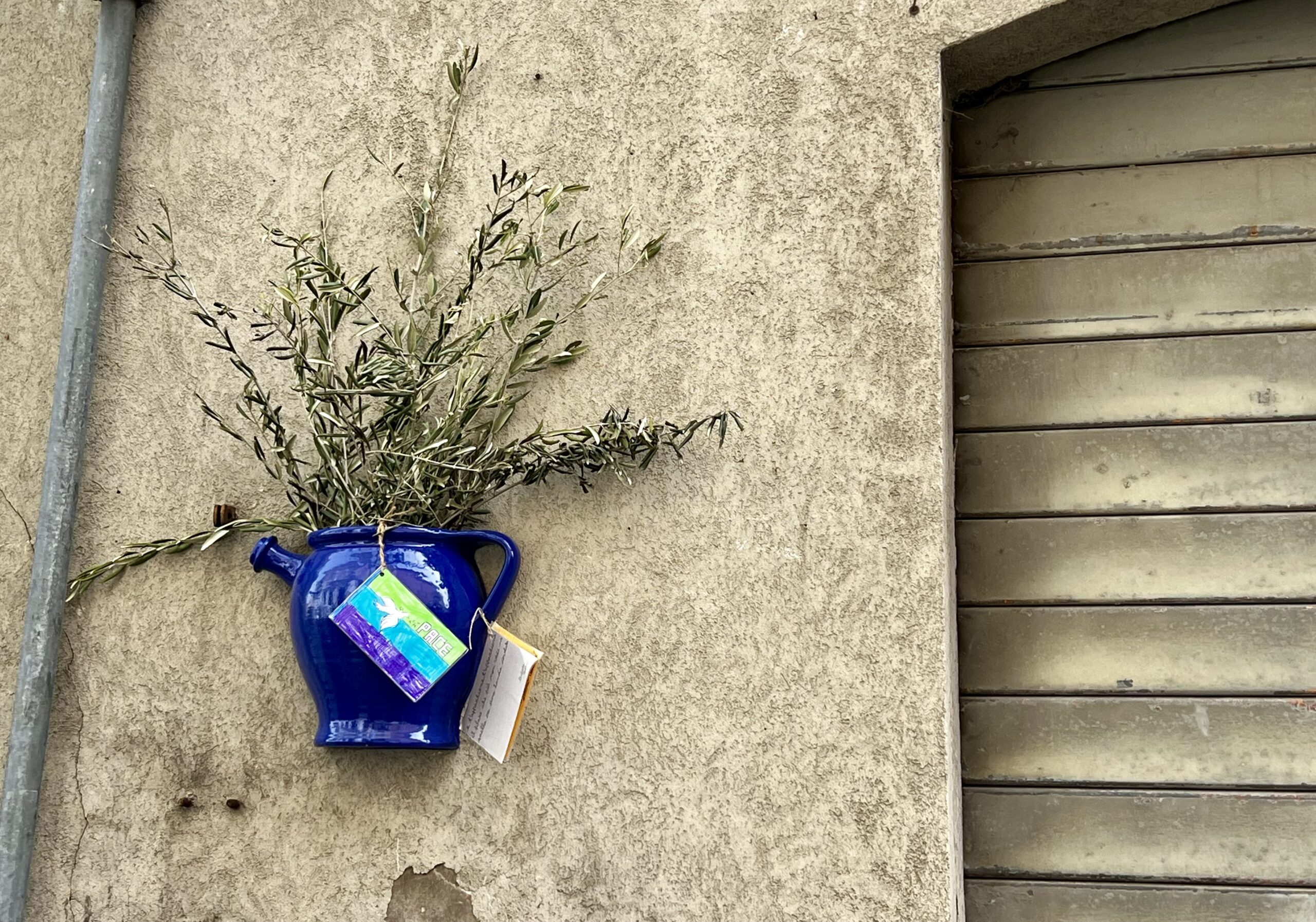
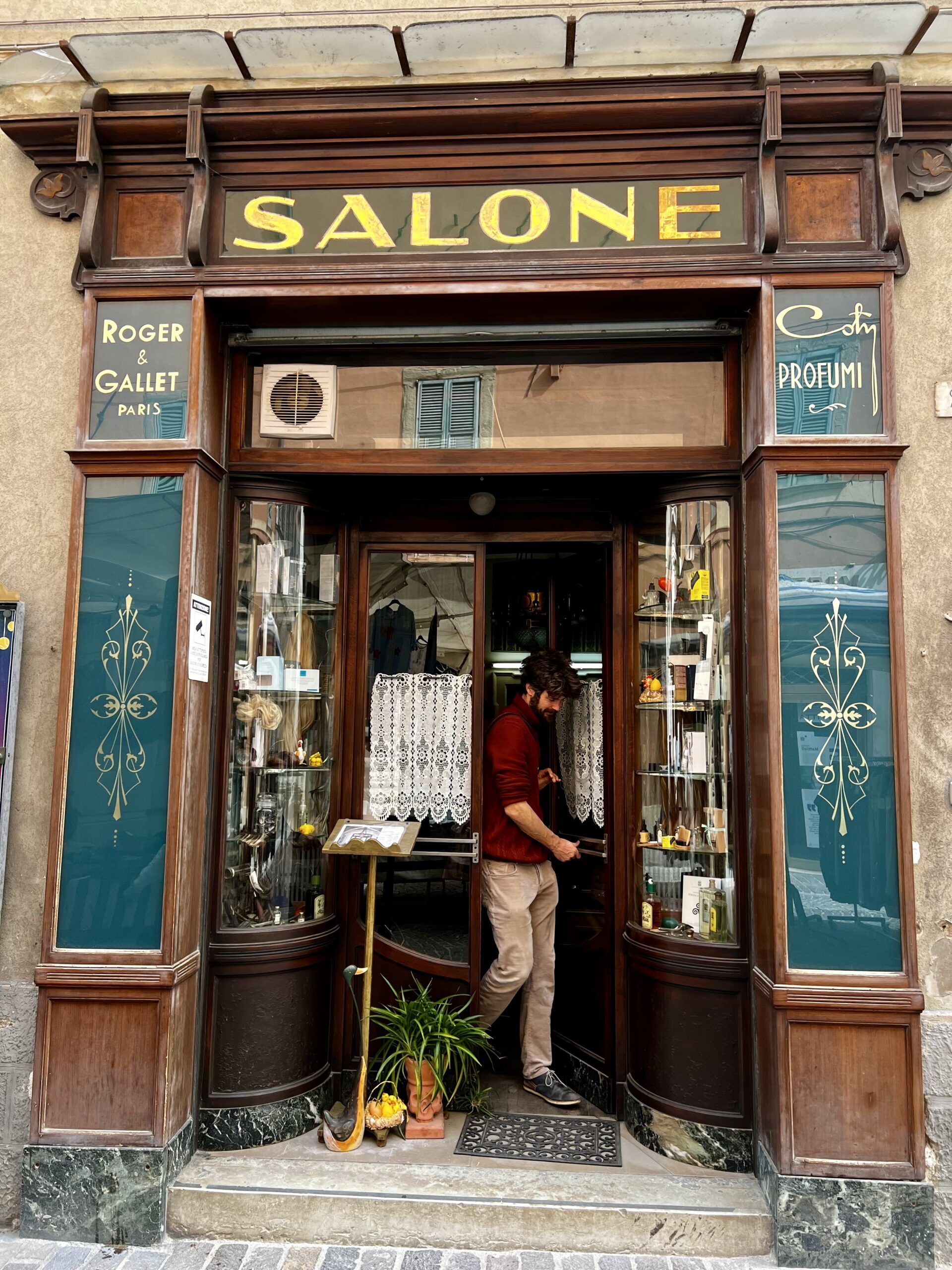
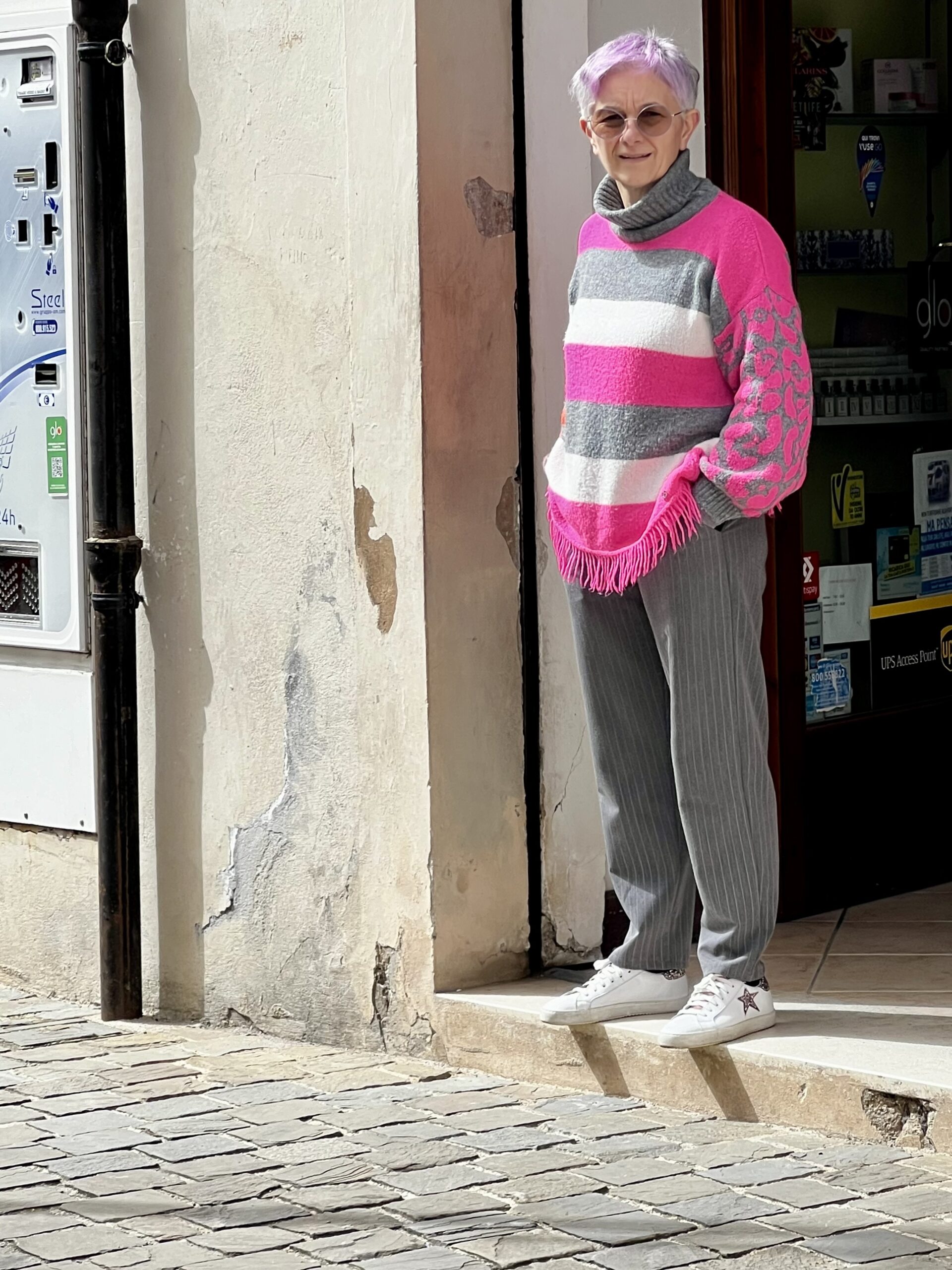
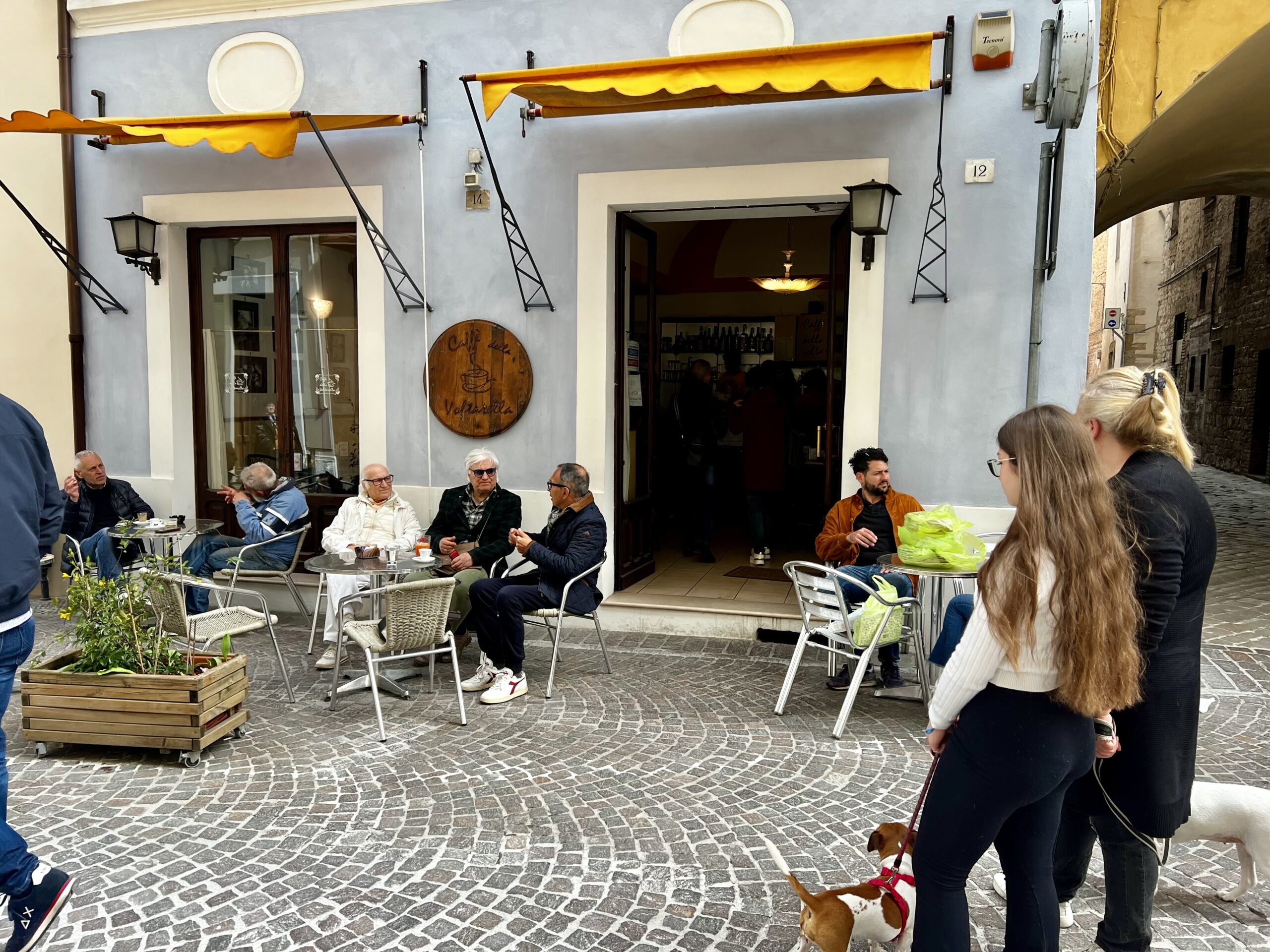
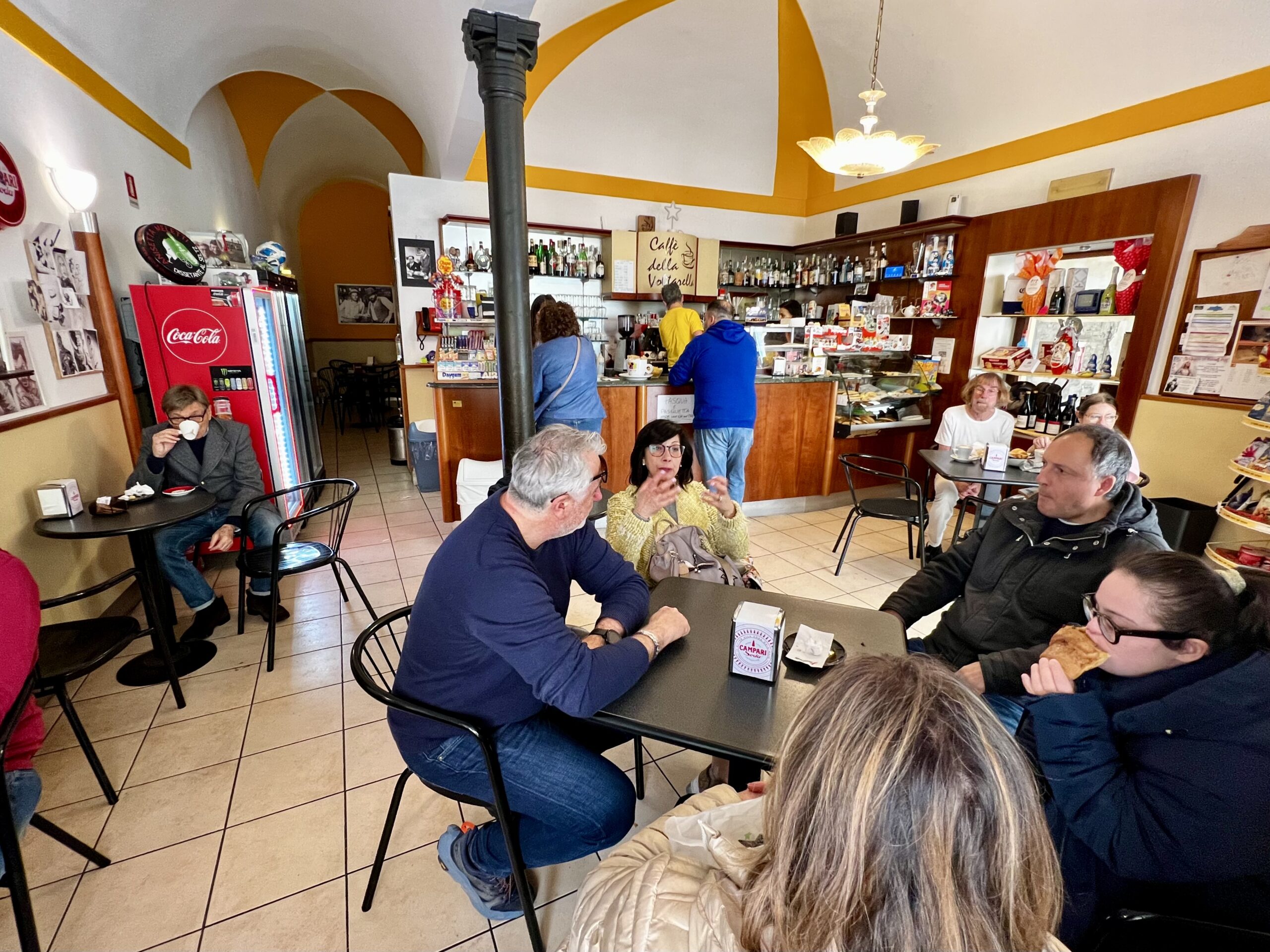
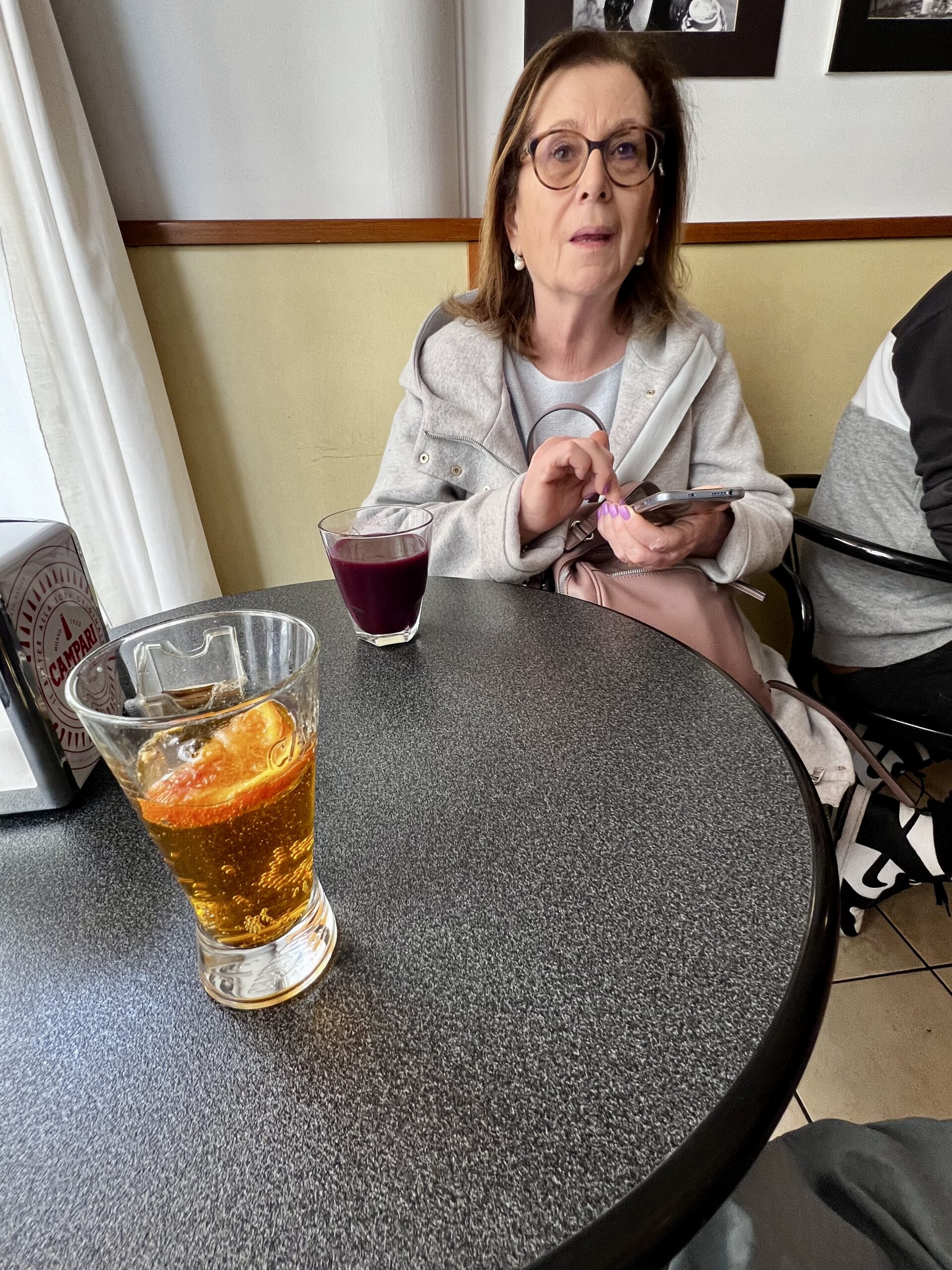
Pasta Anyone?
You do not walk away hungry from the Paradiso restaurant just outside Serra. We always have leftovers to take home, especially pasta. Robert was curious about how much pasta they cook for each person. The answer was 200 grams (7 ounces), nearly one half pound!
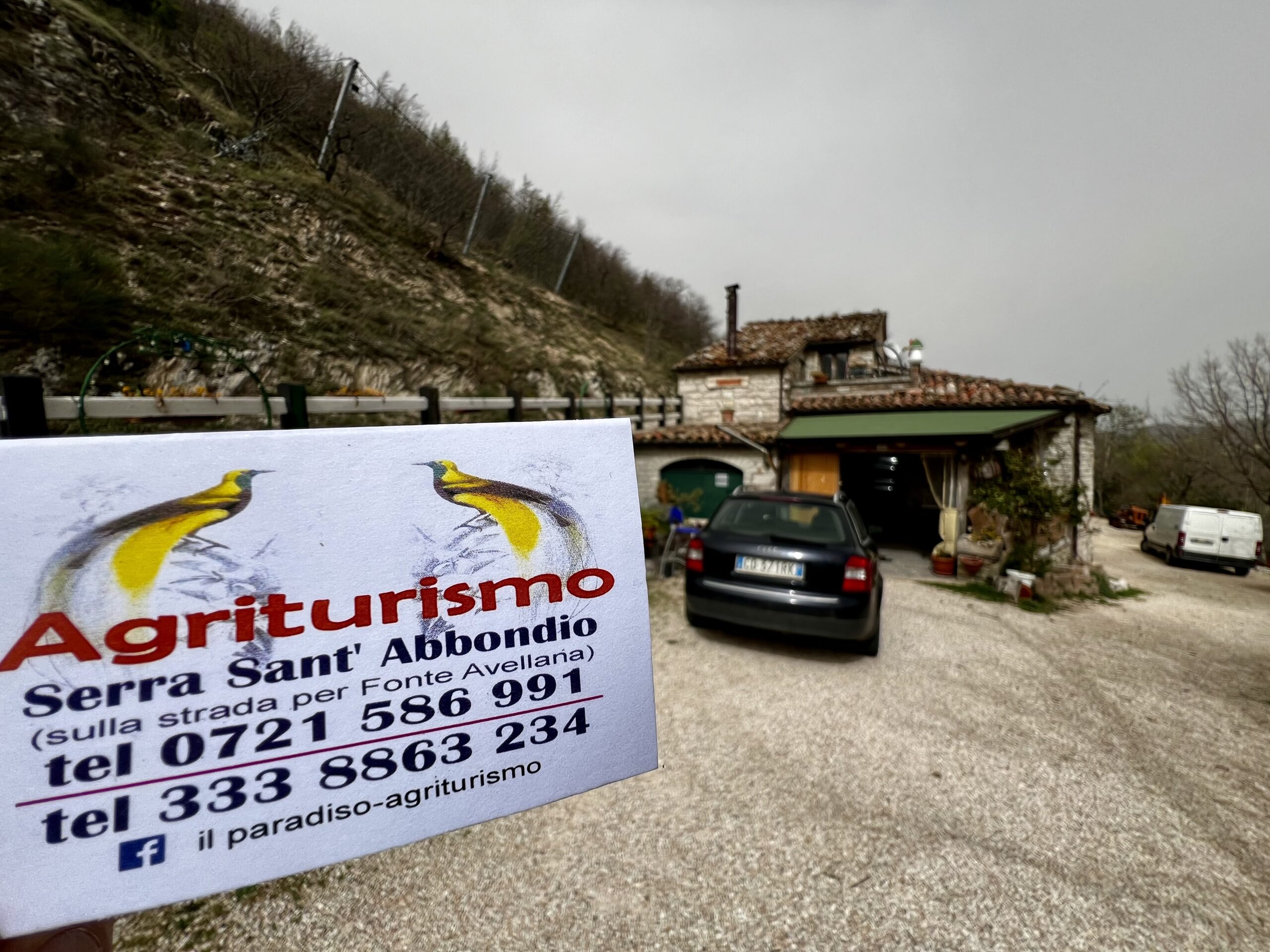
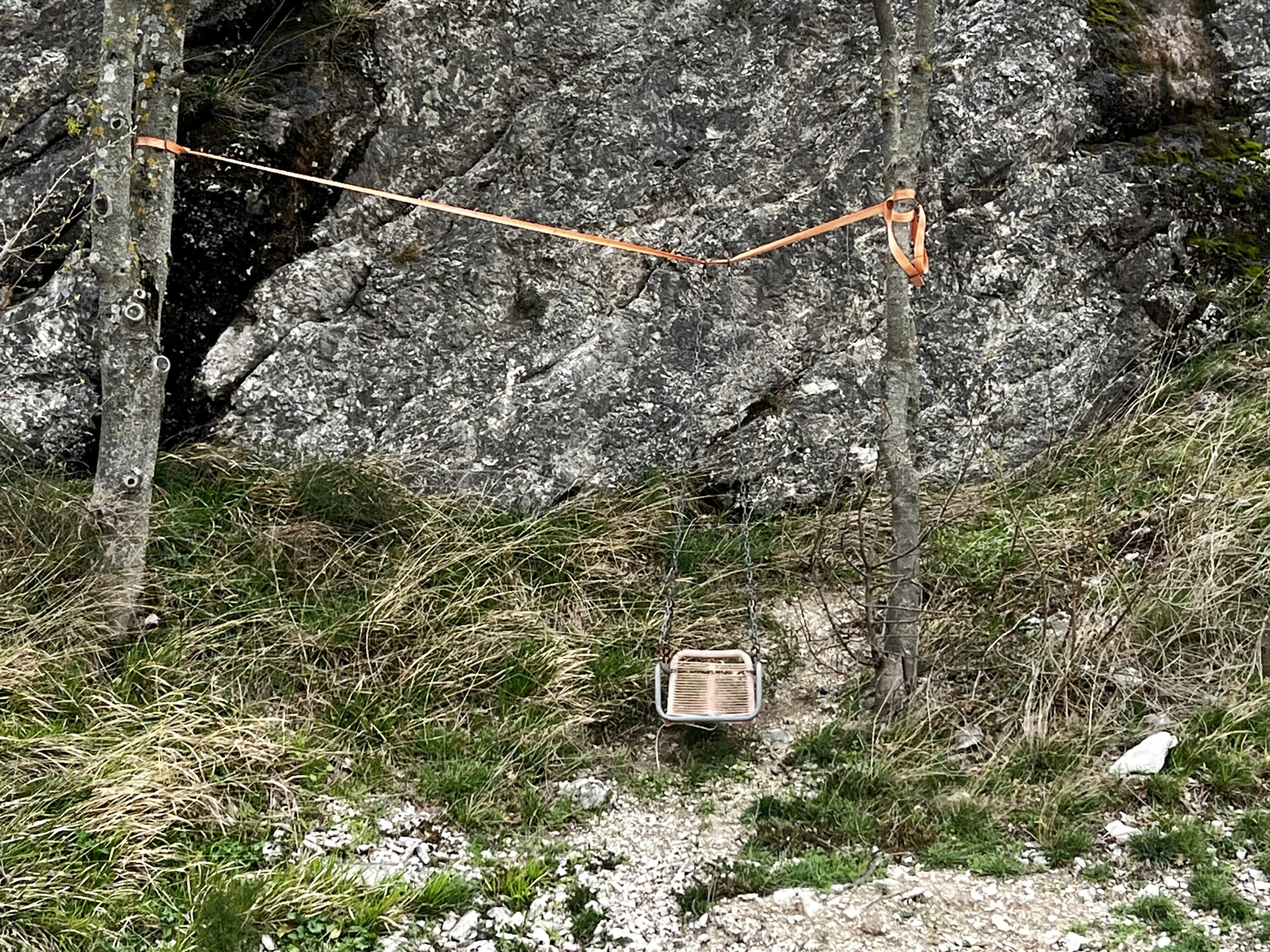
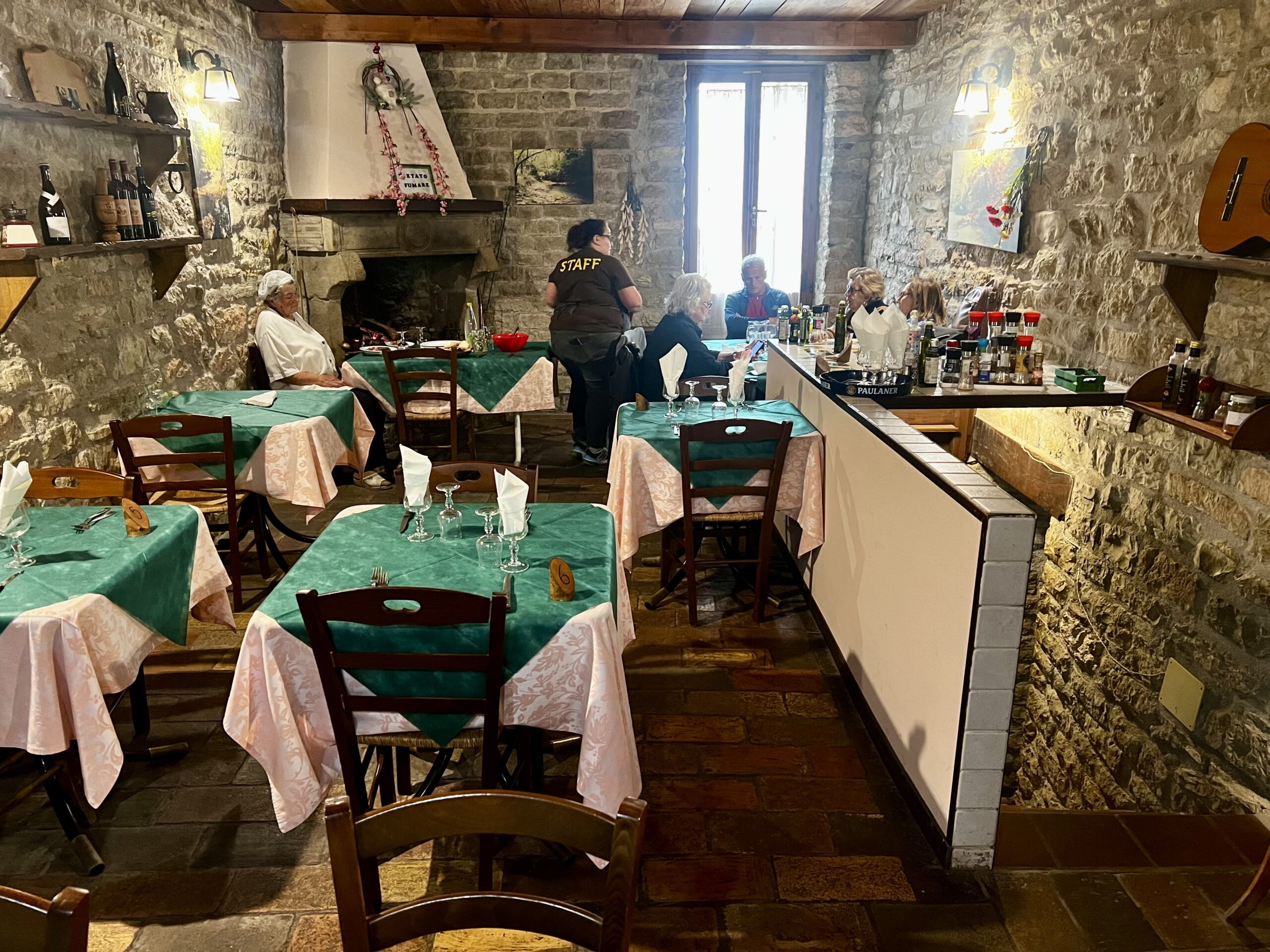
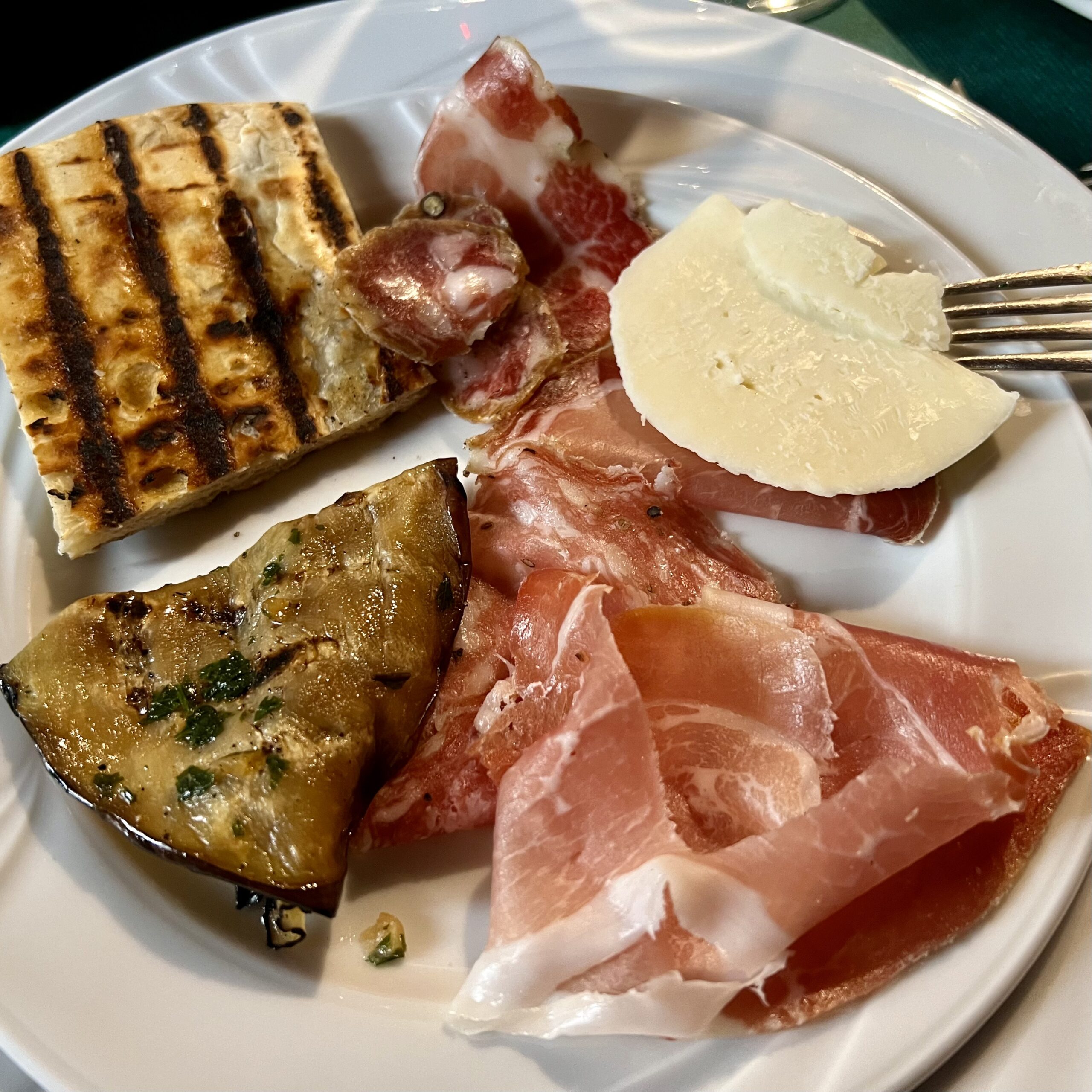
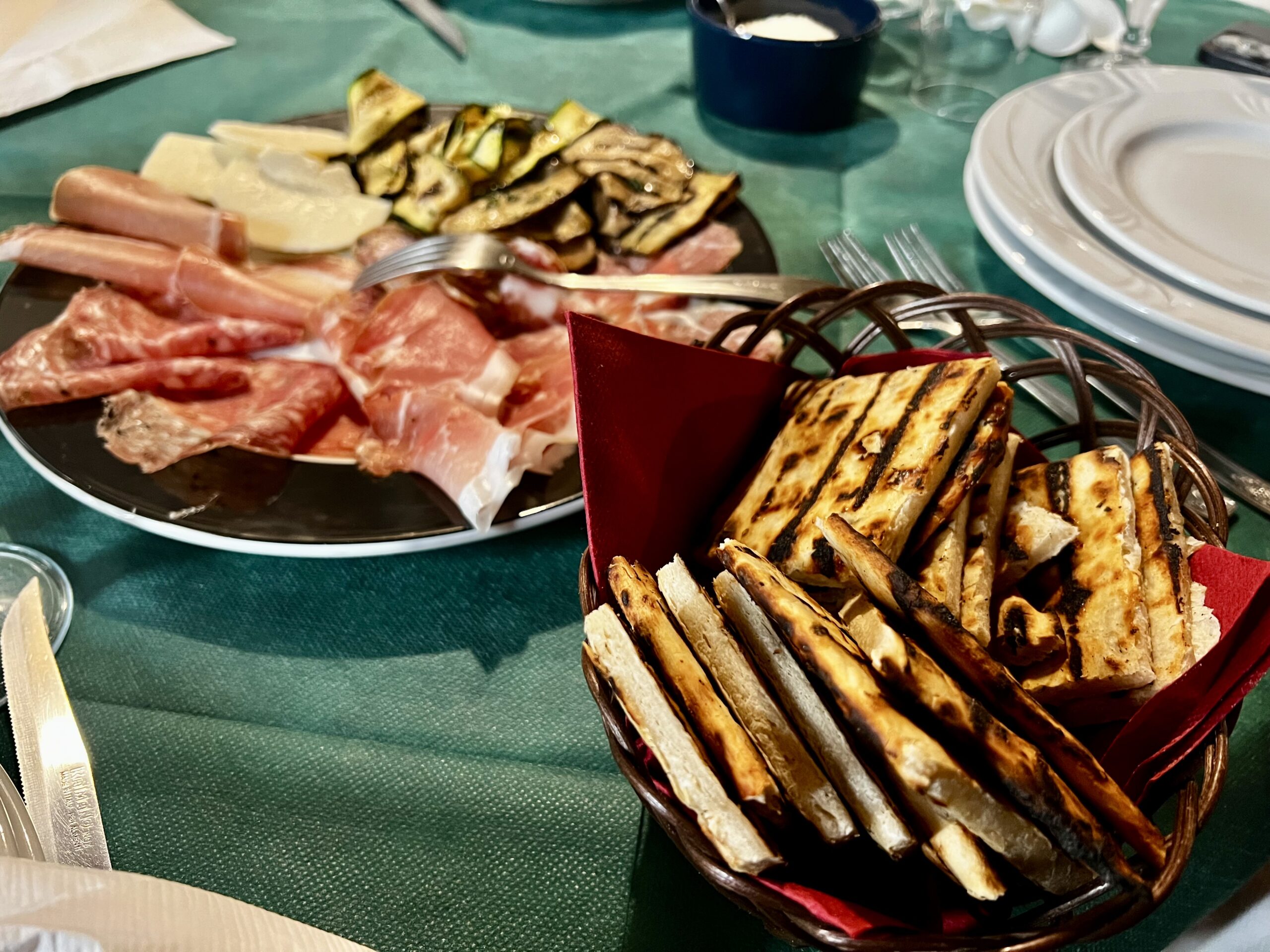
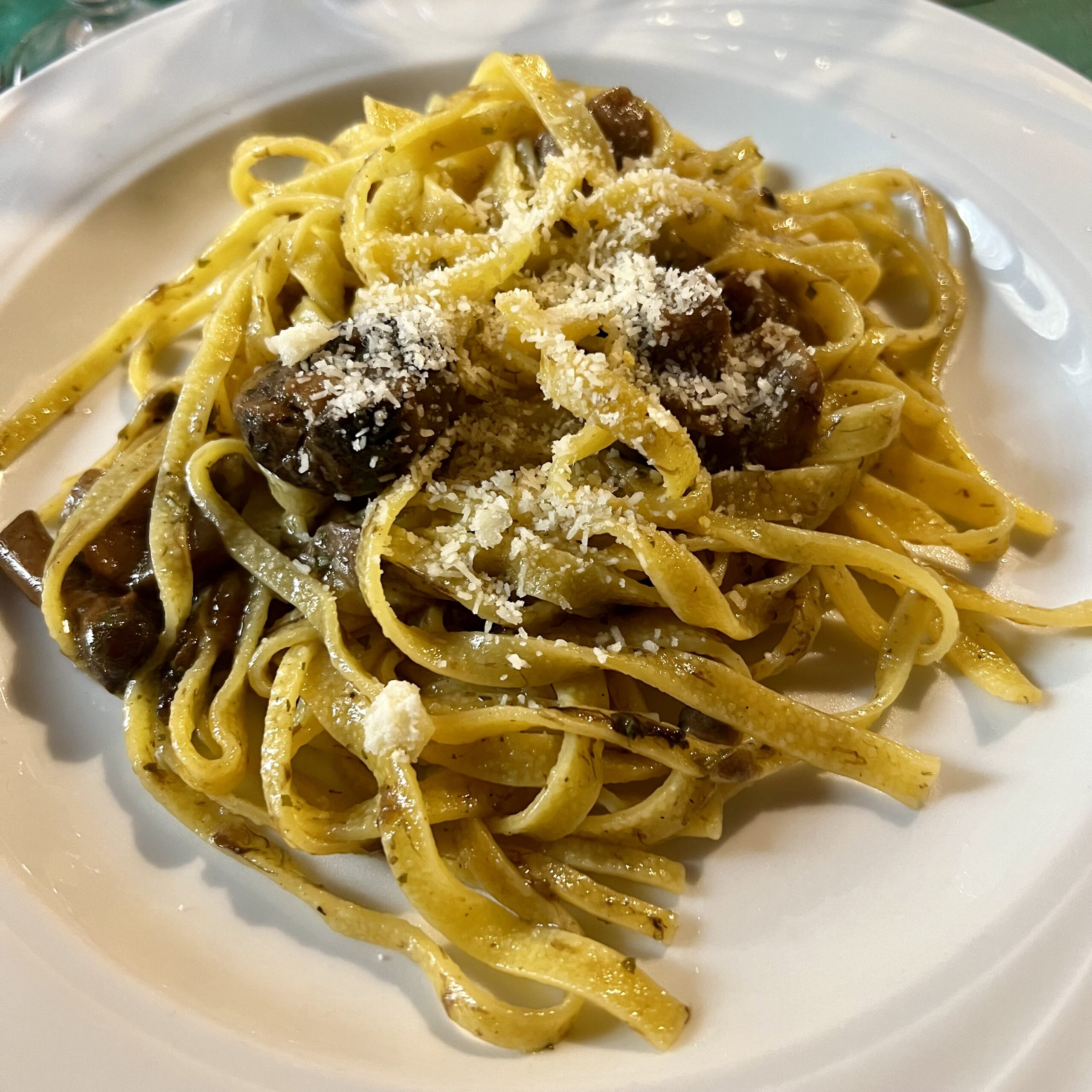
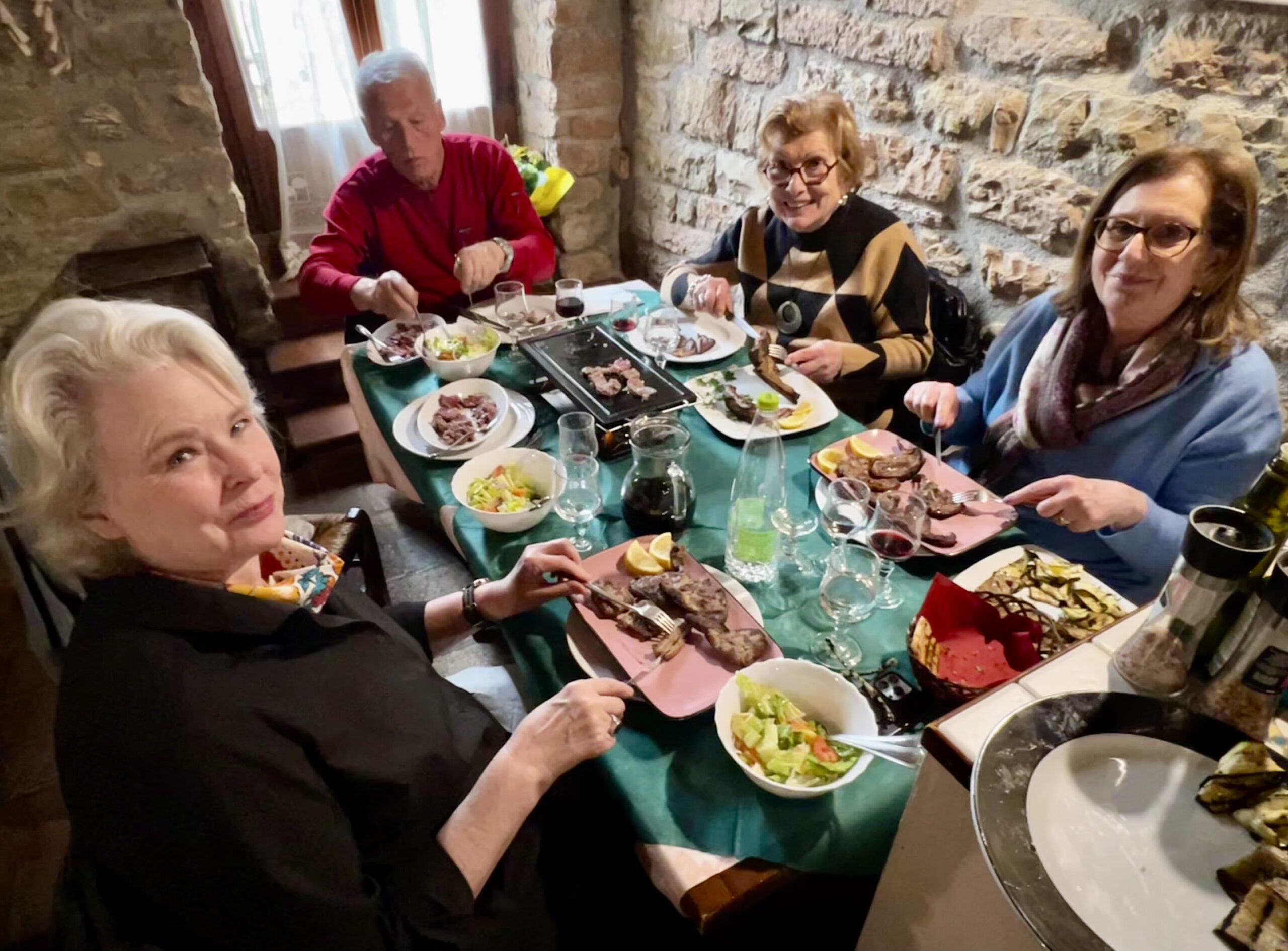
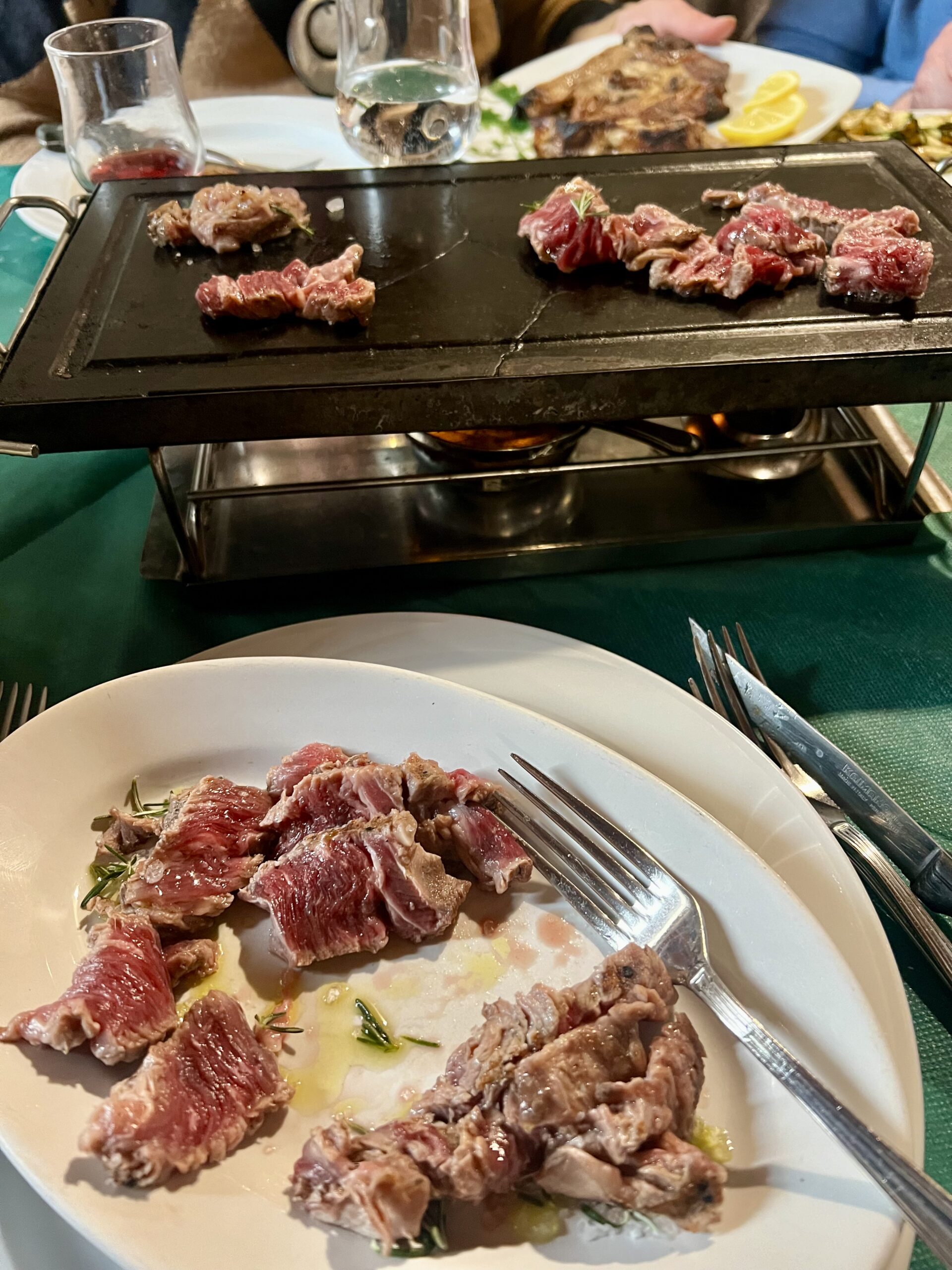
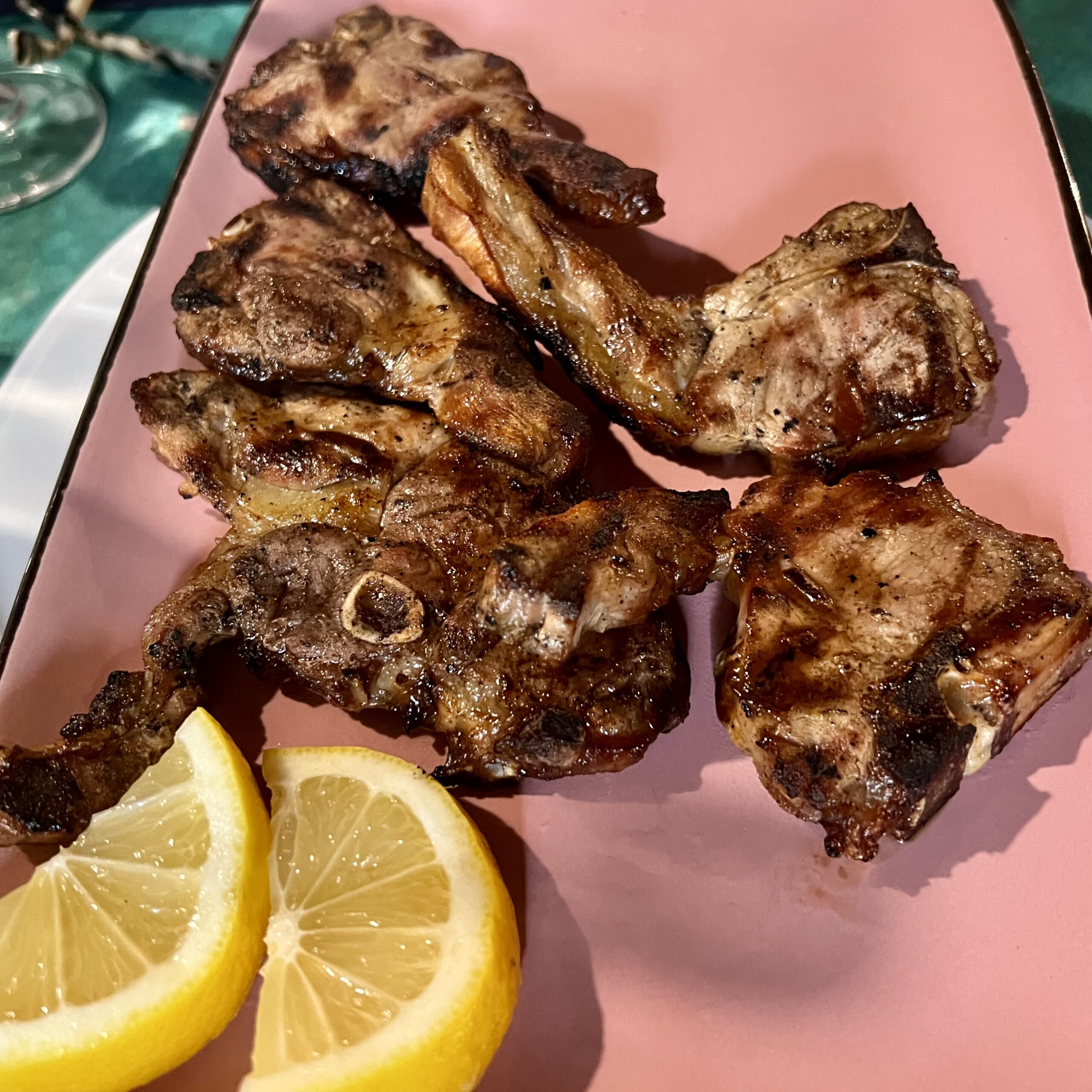
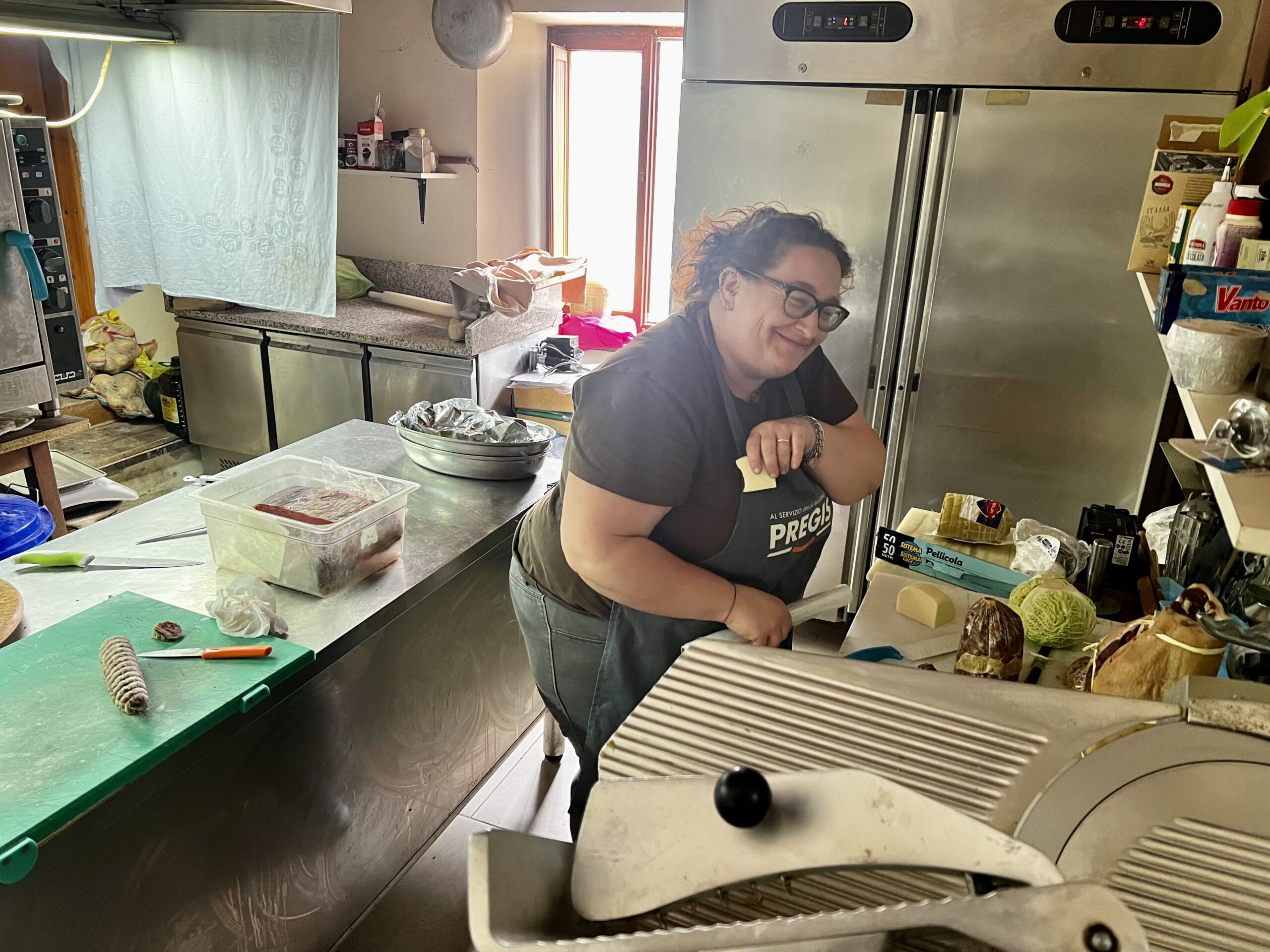
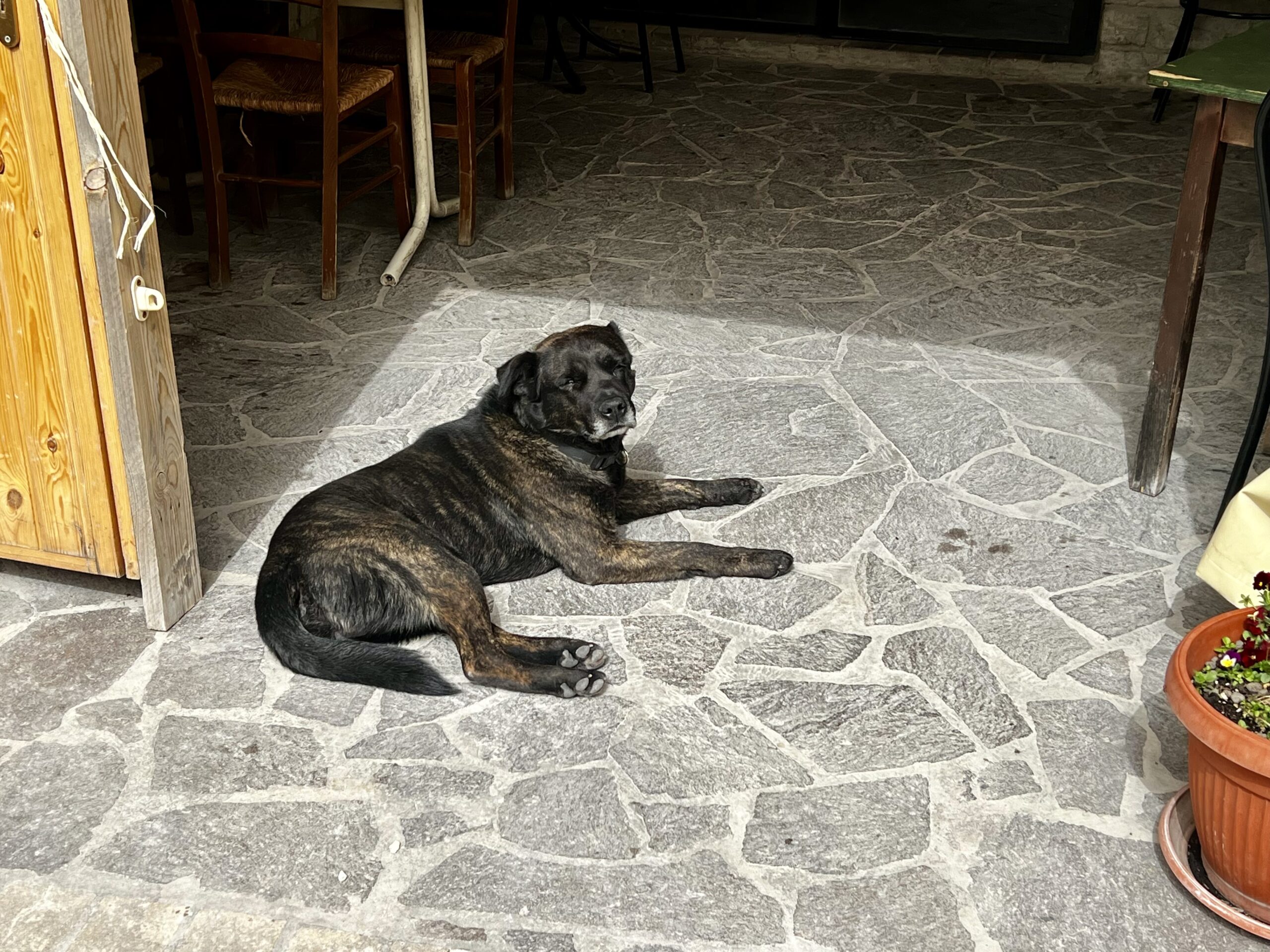
Fonte Avellana
After lunch we took a short drive to Fonte Avellana, a monastery dating back to 900 AD that we visit on every trip. It lies deep in the mountains surrounded by wooded slopes. Its name comes from the many springs in the area (earthquake country) and the hazelnut trees that populate the woods. Dante Alighieri refers to it in the Divine Comedy and may have stayed here during part of his exile from Florence. Robert is always impressed by the simplicity of the monastery and the religious artwork.
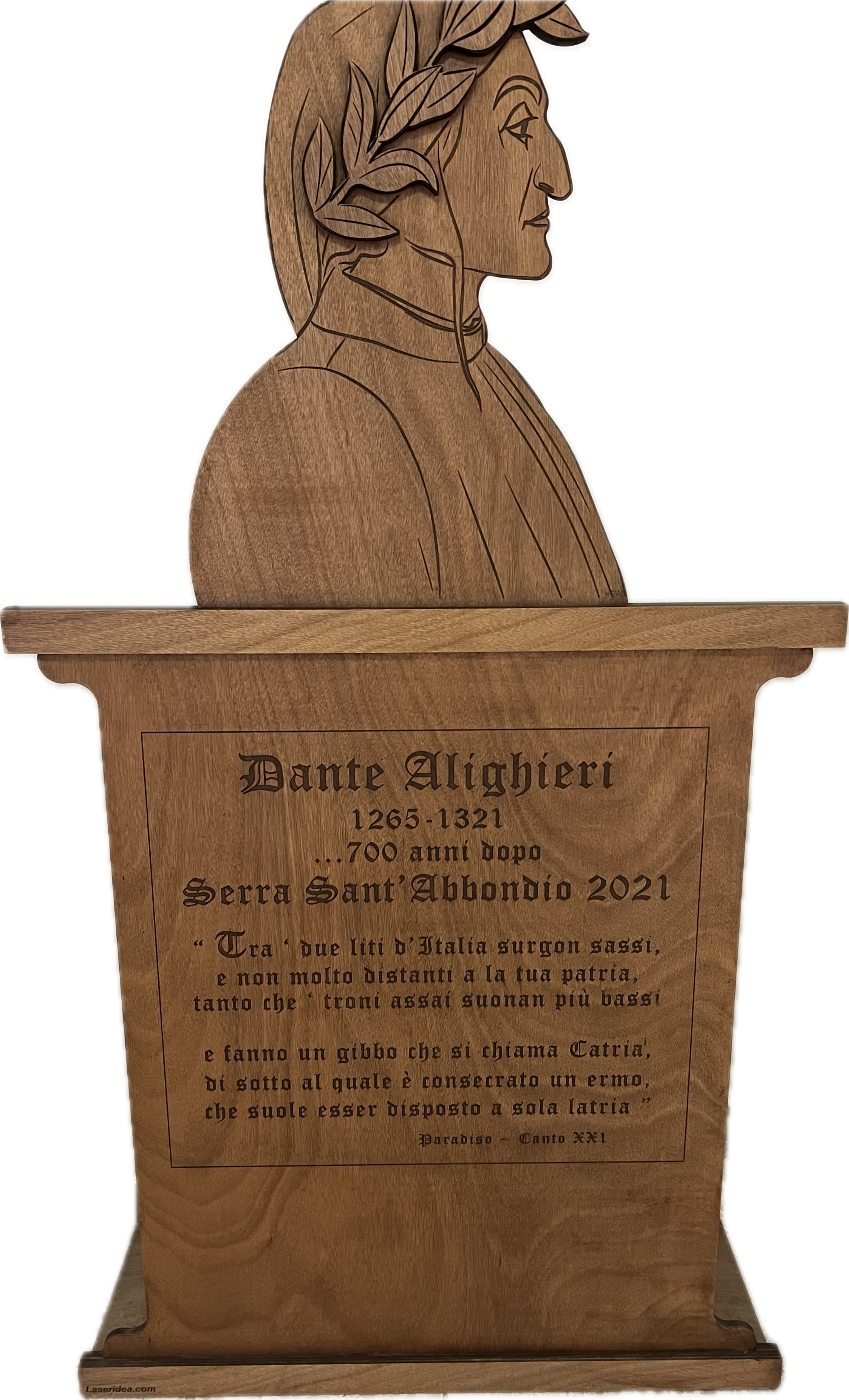
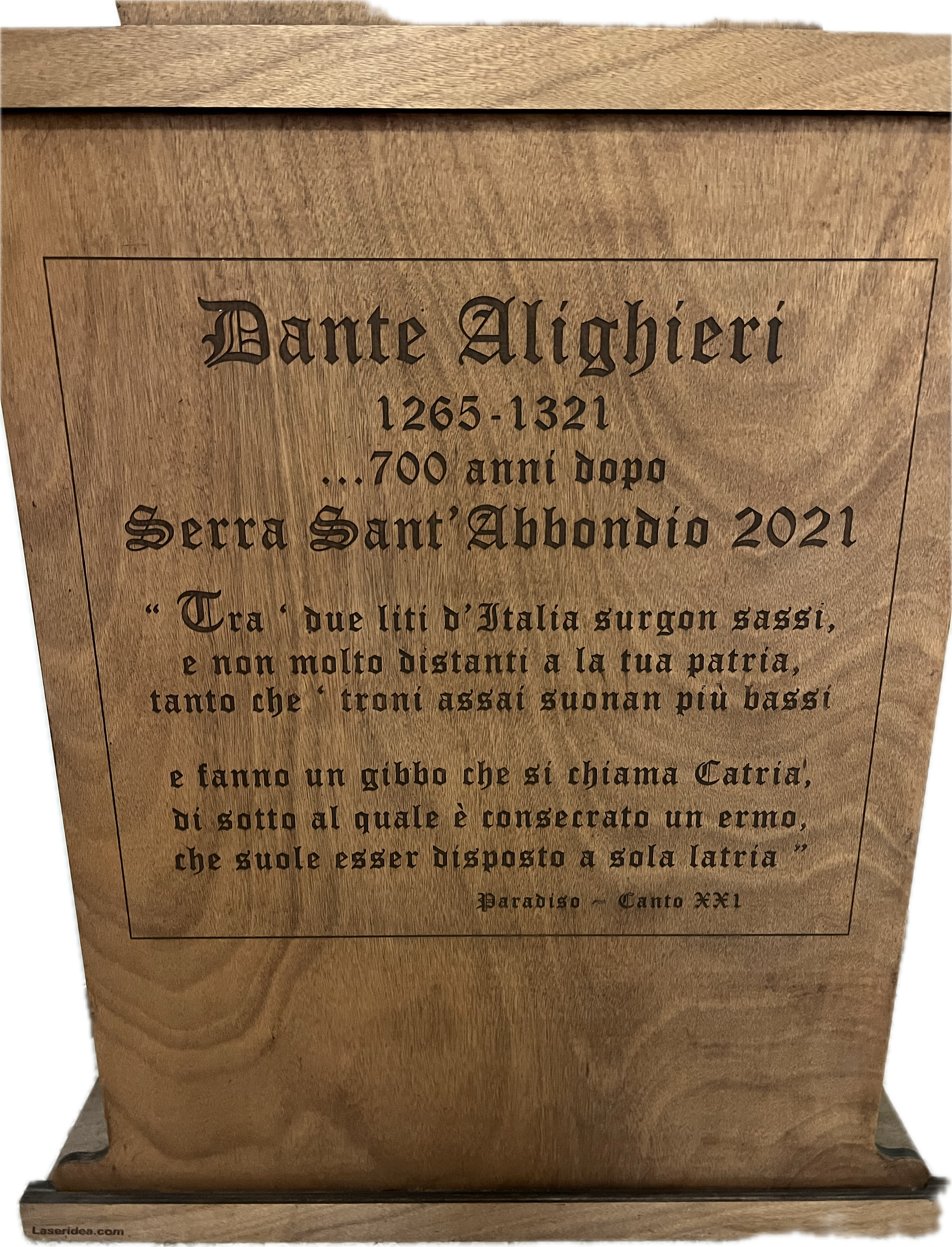
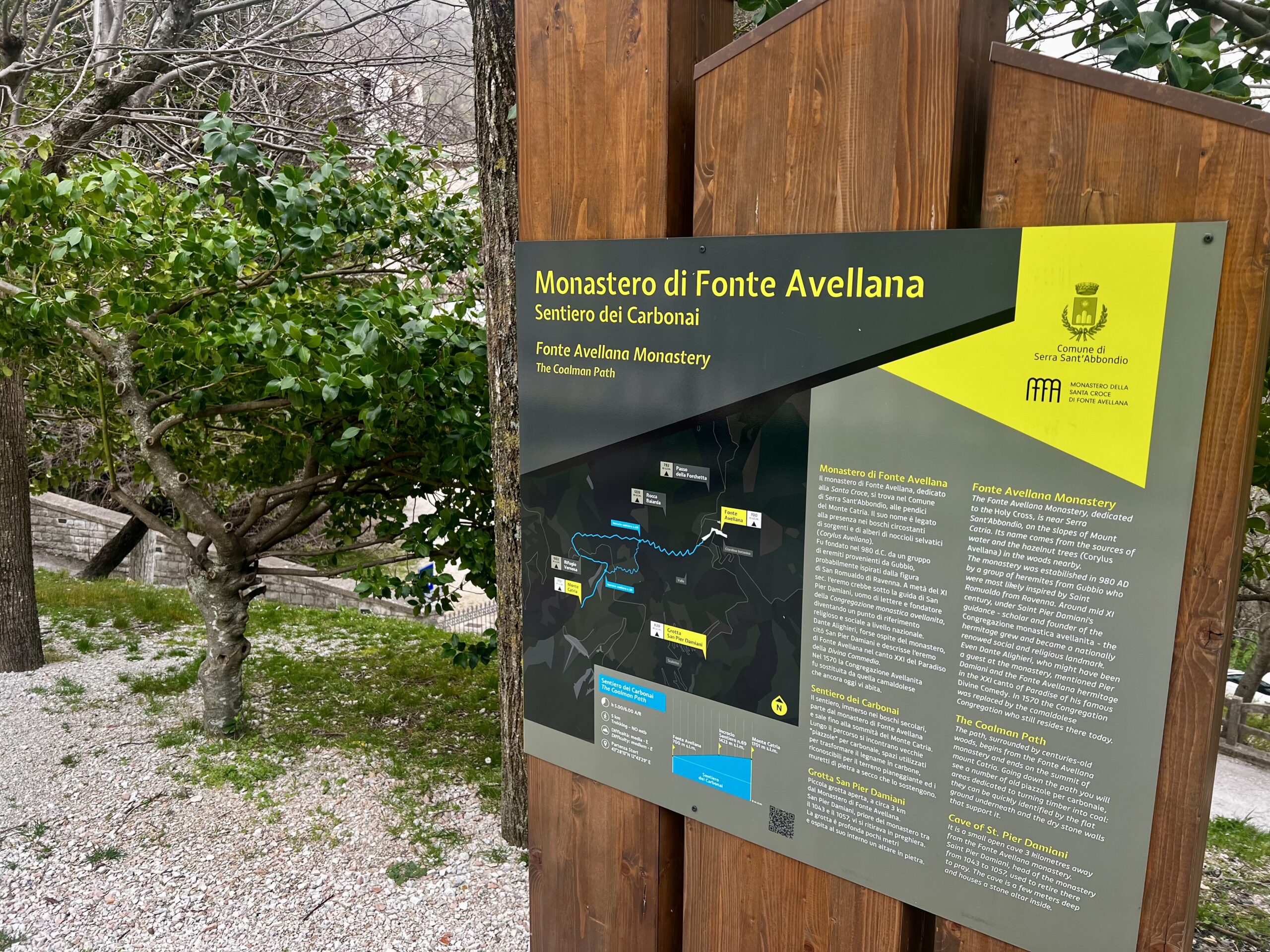
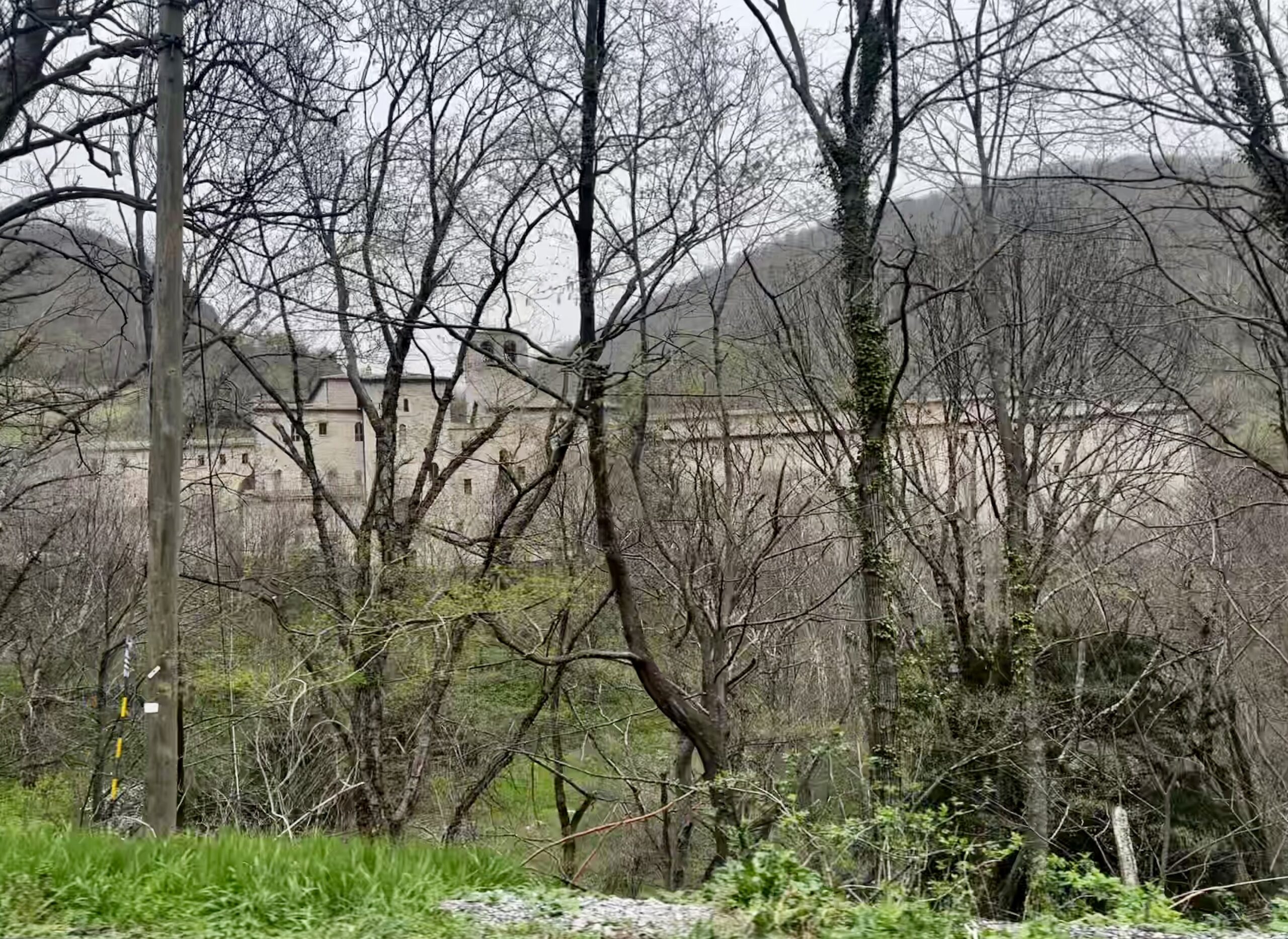
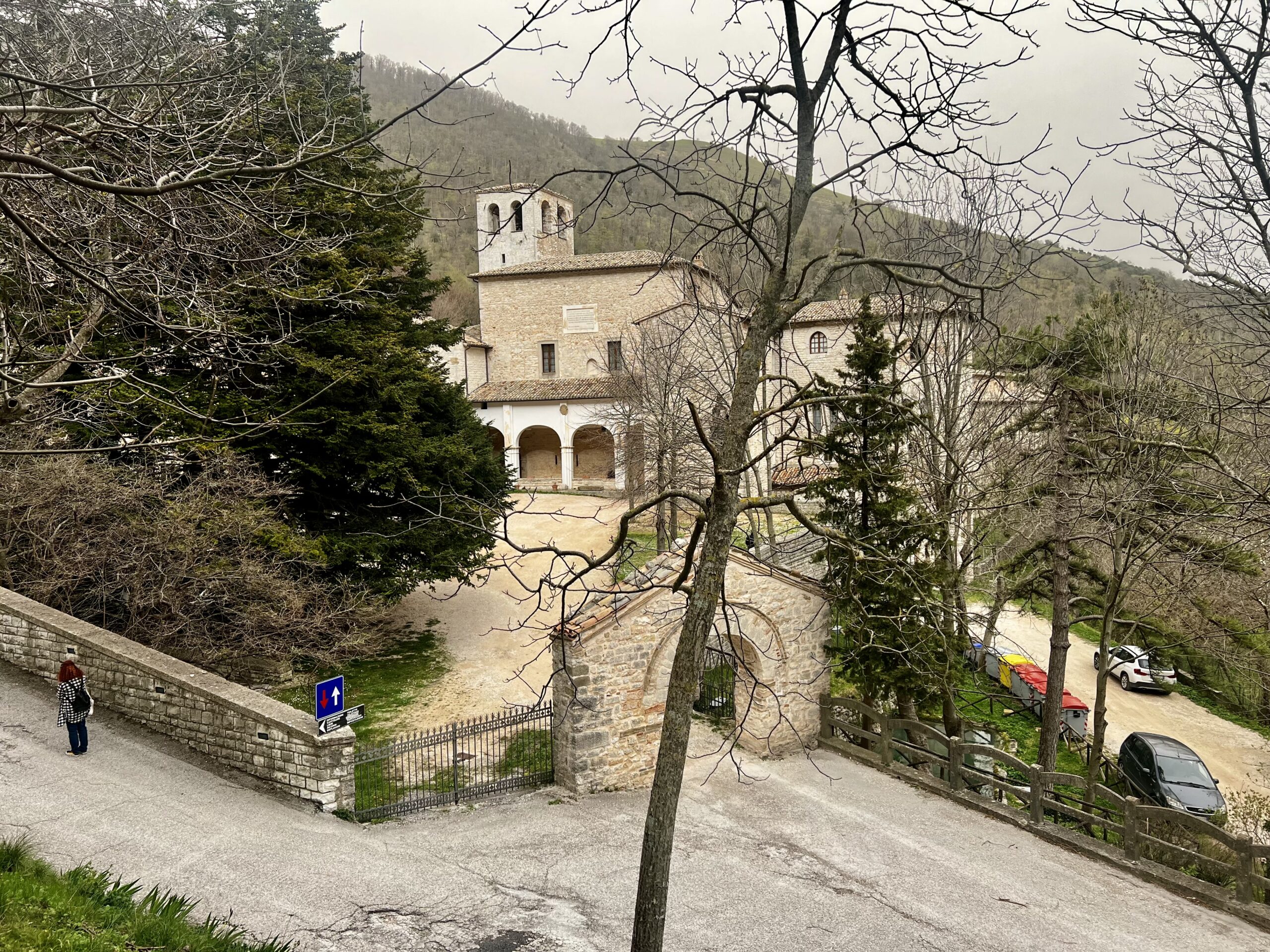
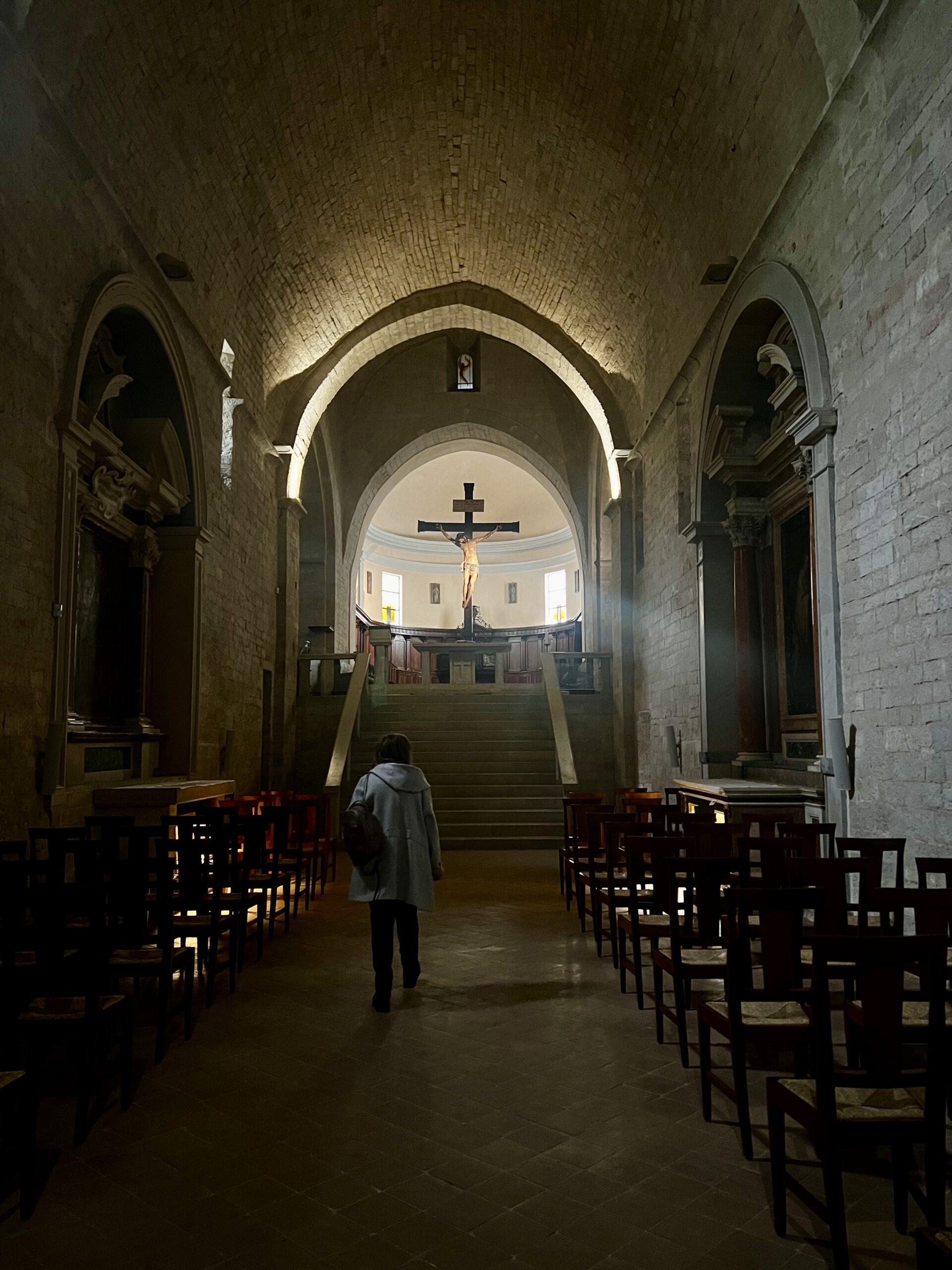
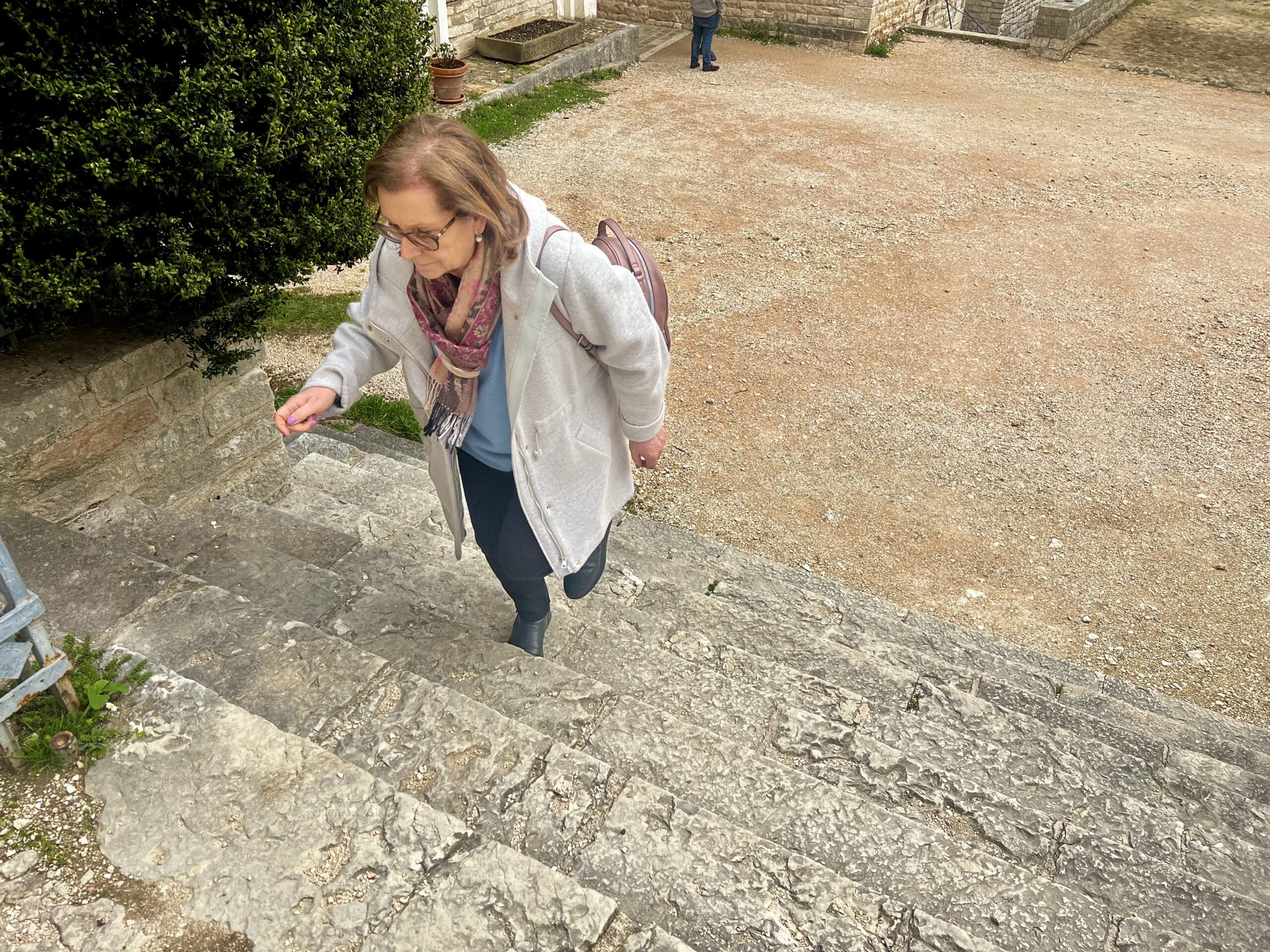
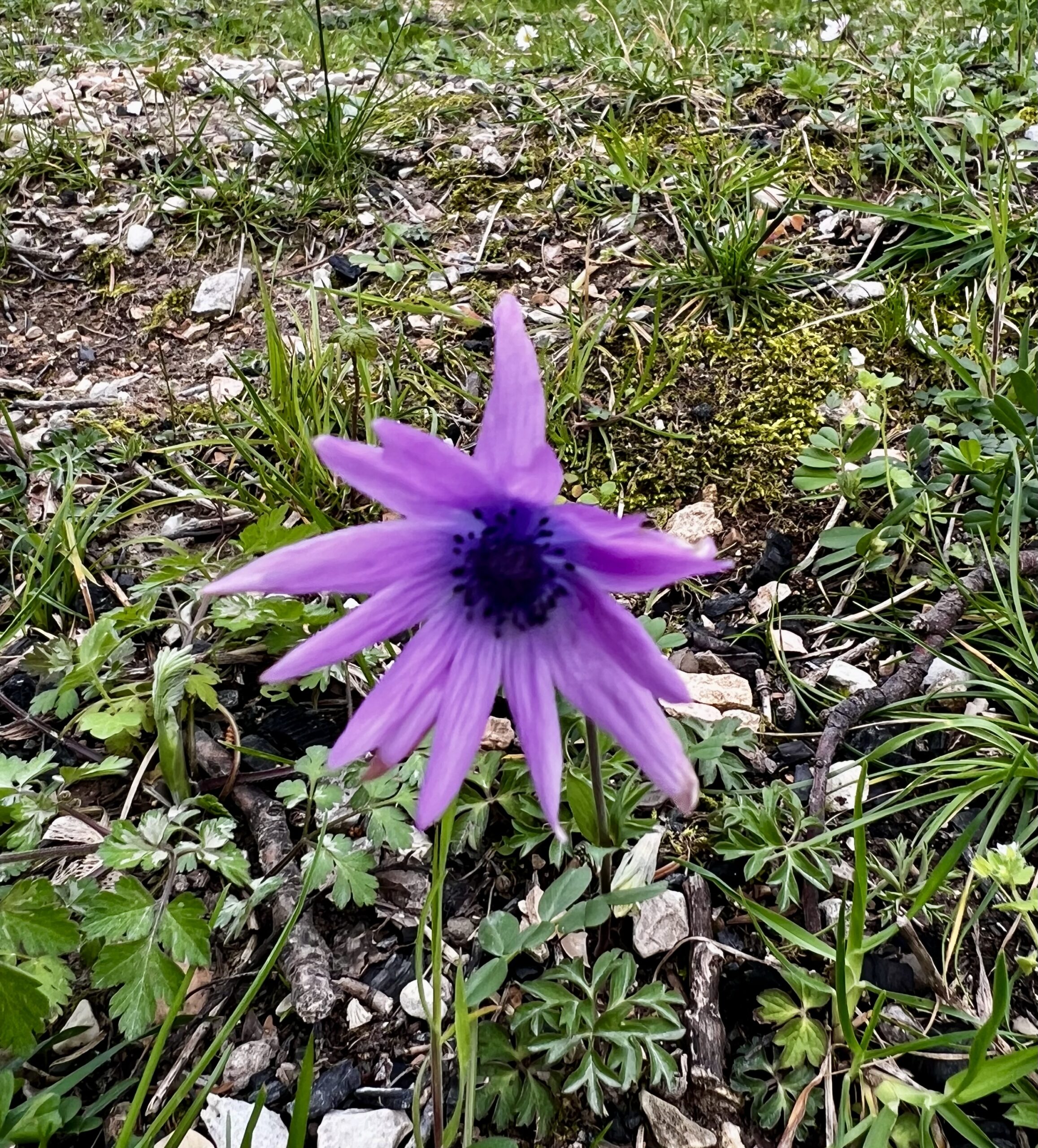
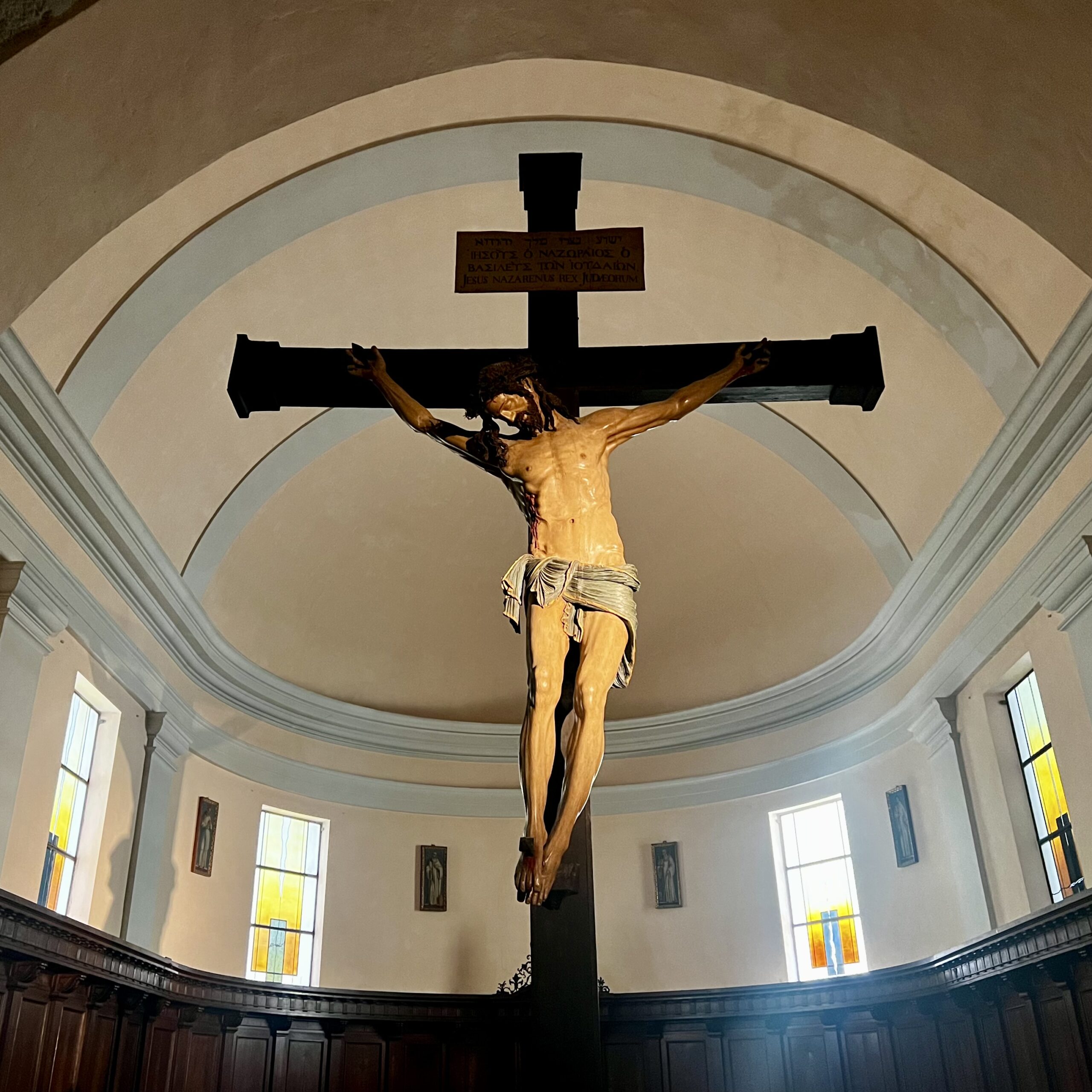
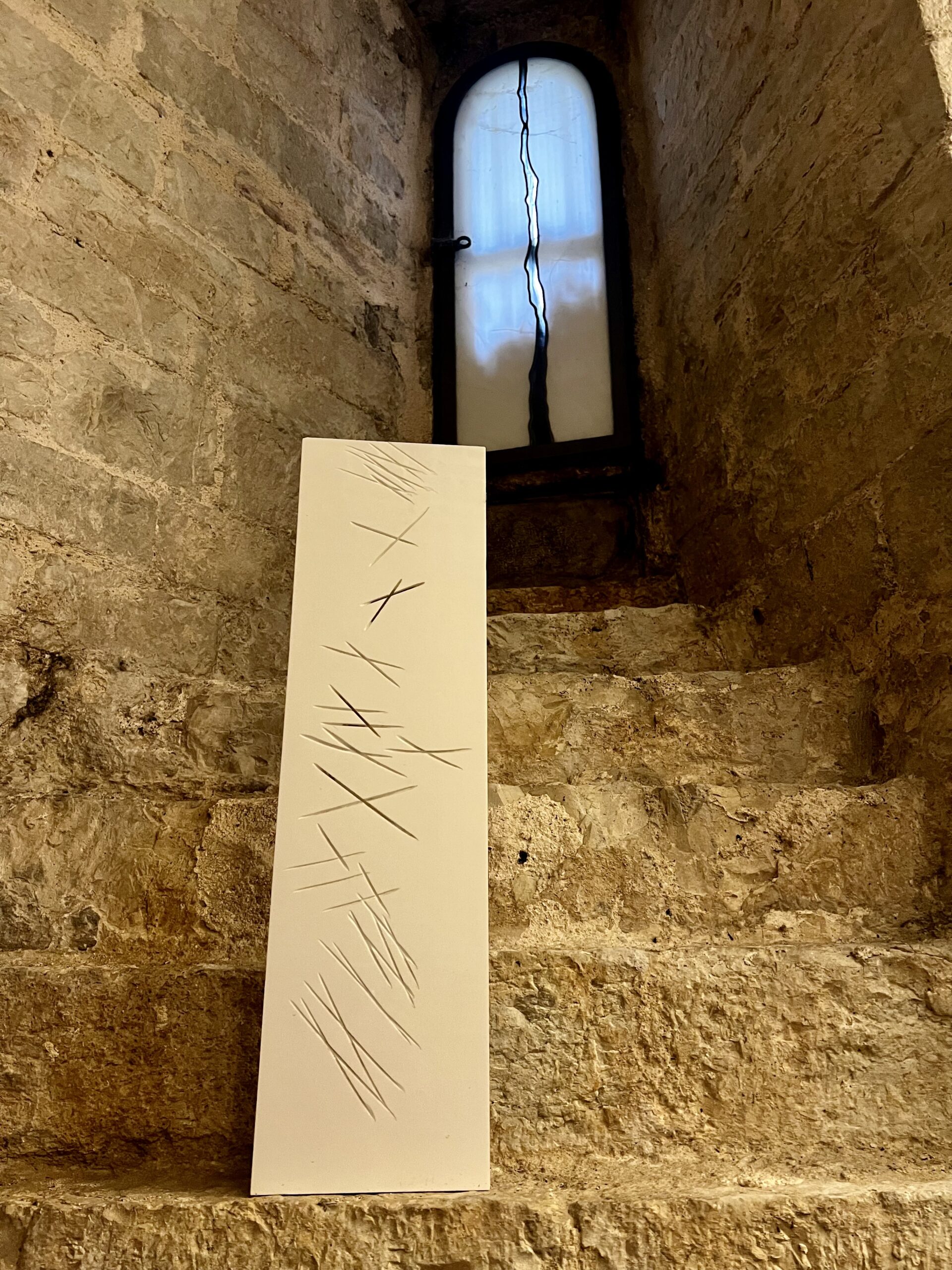
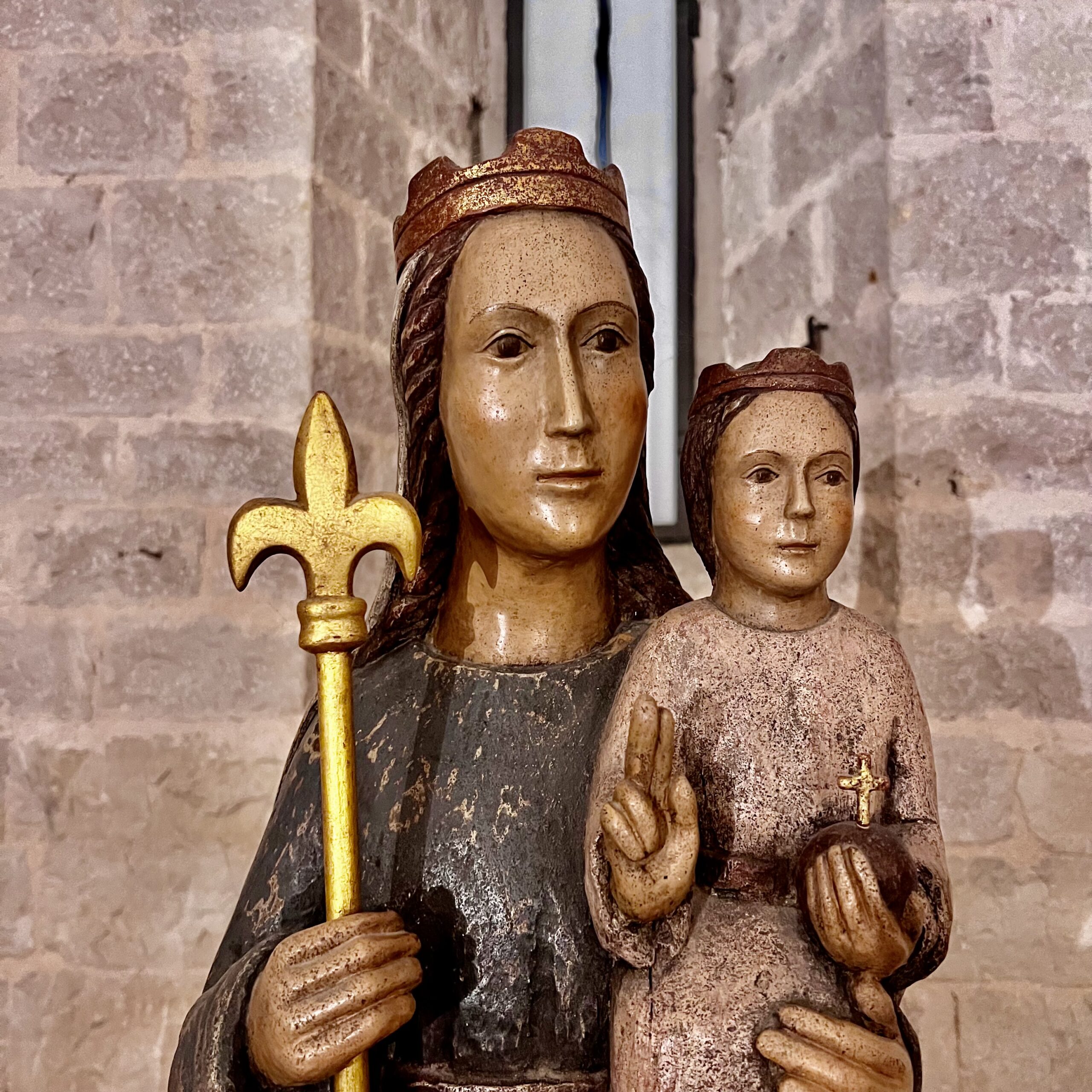
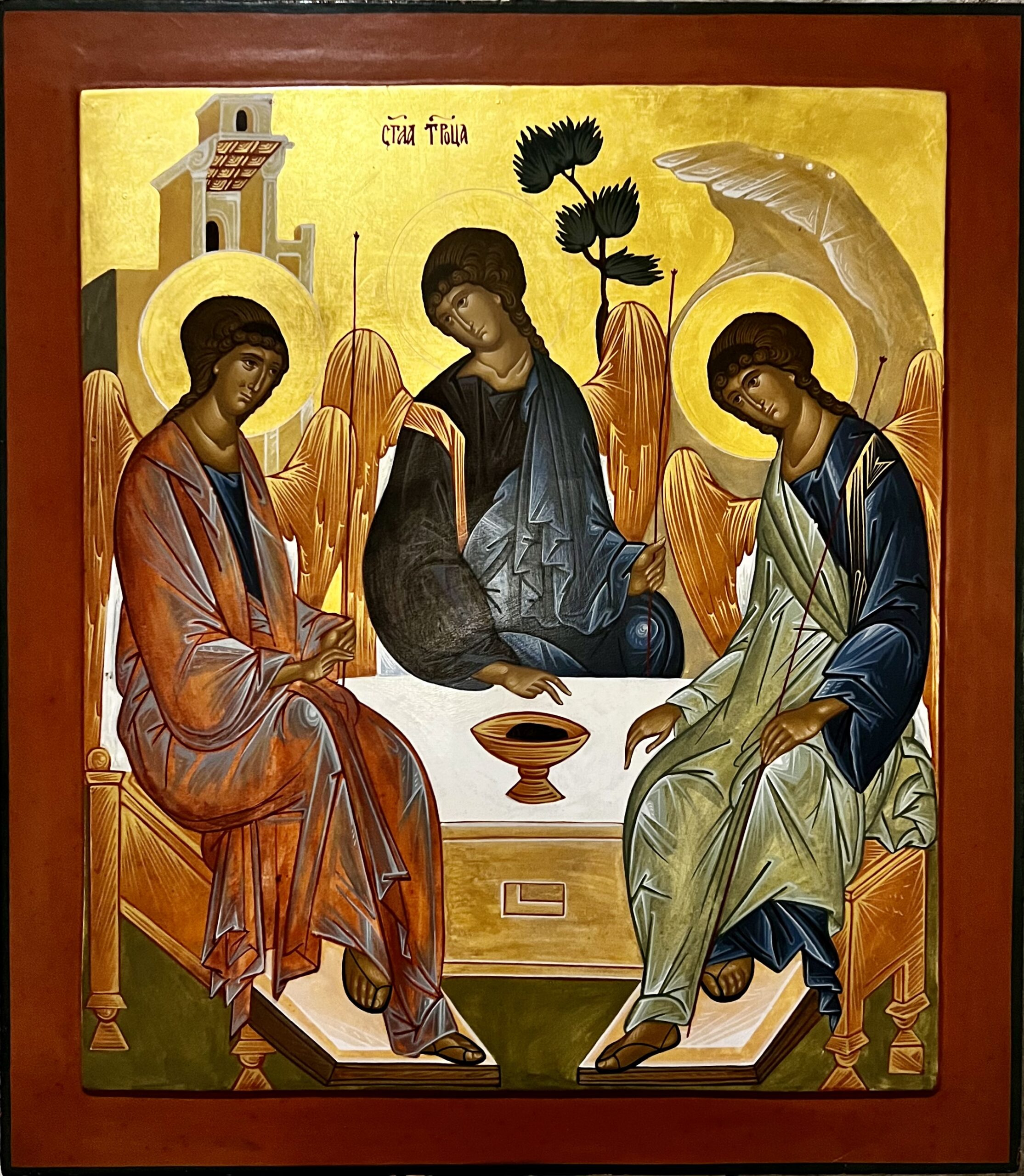
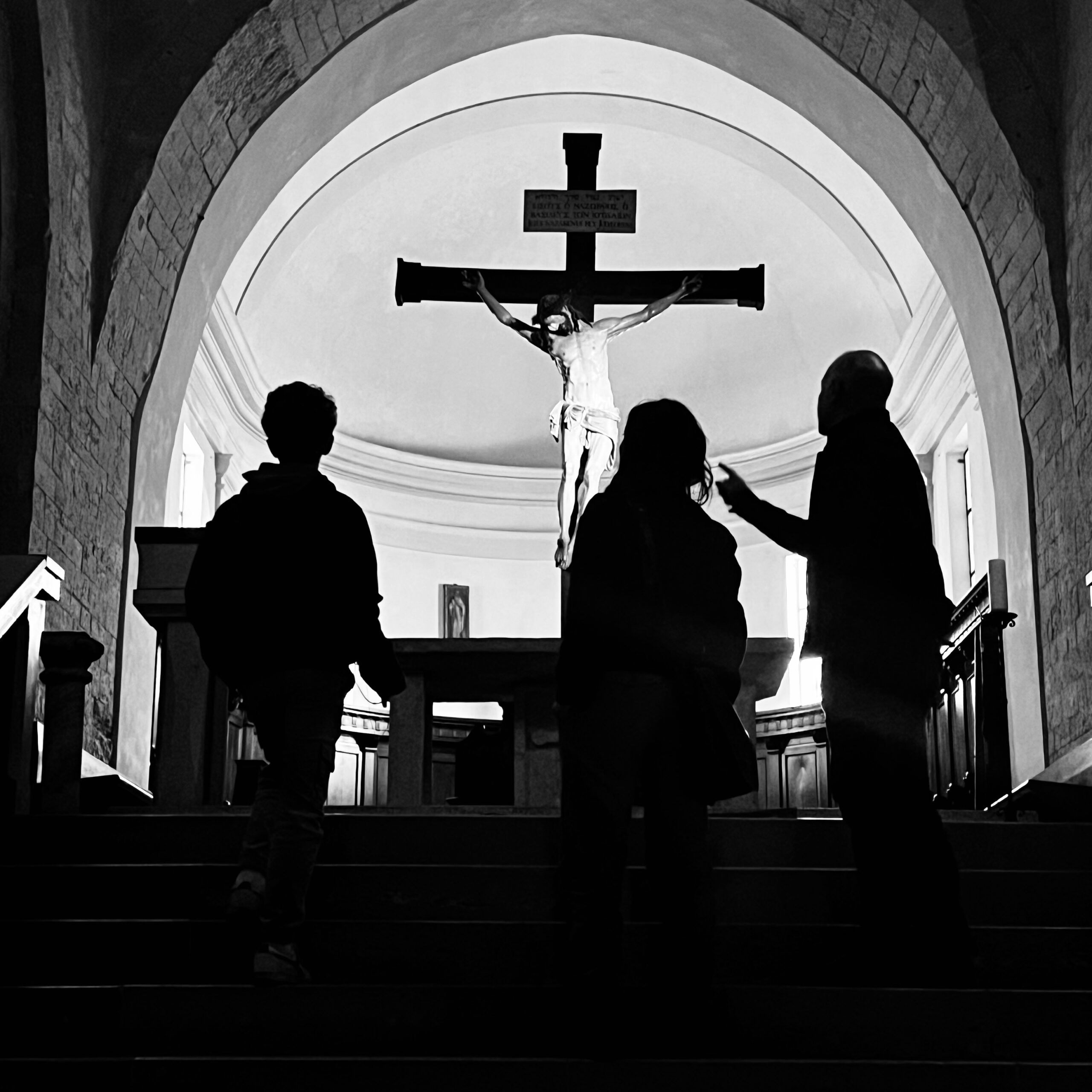
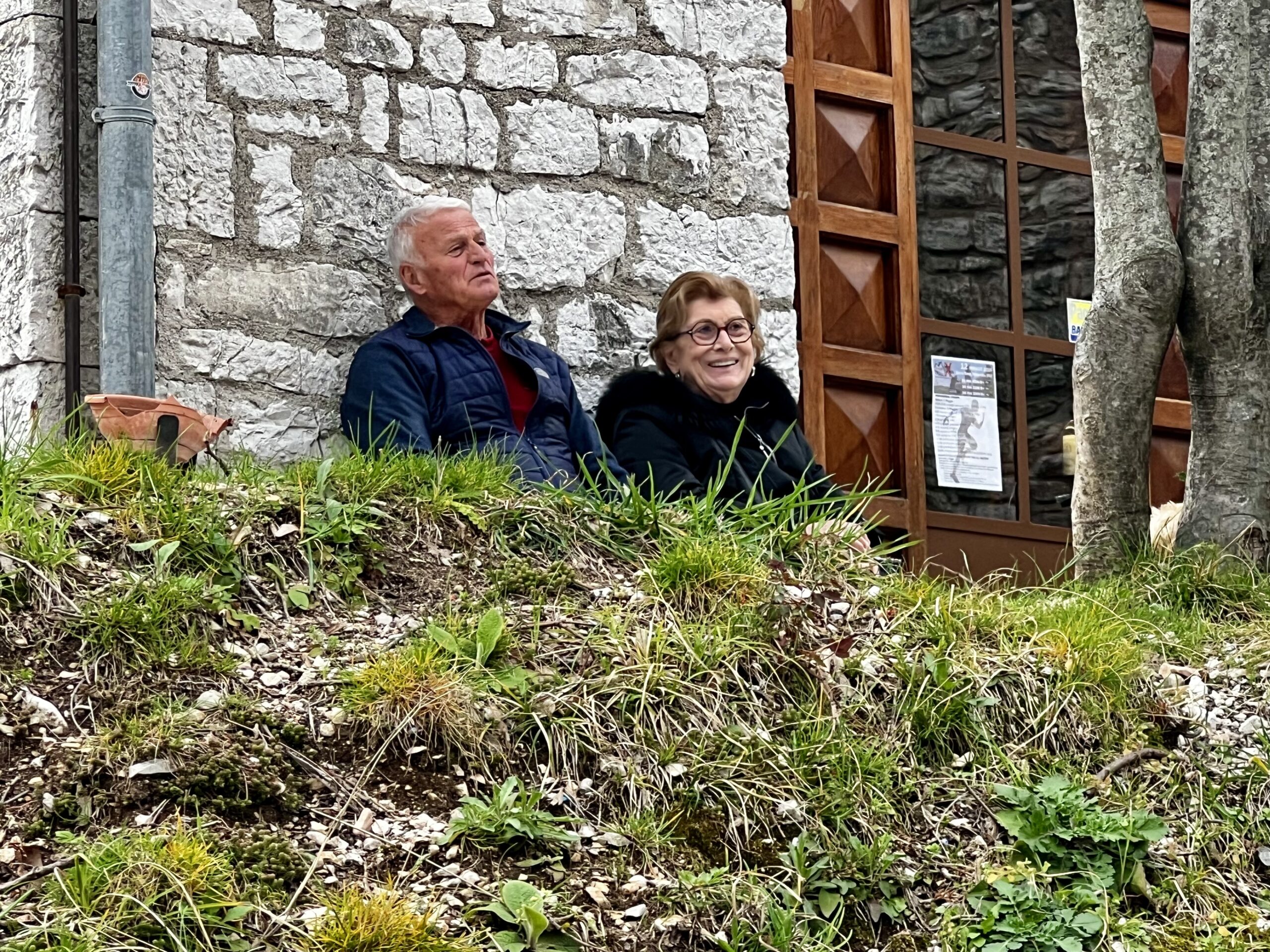
Gola del Furlo
This dramatic gap through the mountains is on the Via Flaminia at a gorge along the Candigliano River. Etruscans built a tunnel here, and the Roman emperor Vespasian (69-79 AD) carved out a larger one. The name comes from the Latin forulum—small hole. The Goths enlarged it in the 6th century for the passage of their military but the Romans prevailed. The Lombards destroyed fortifications around 570. It was little used after that. Modern tunnels now bypass the old one, but the park along the river is beautiful and attracts many visitors.
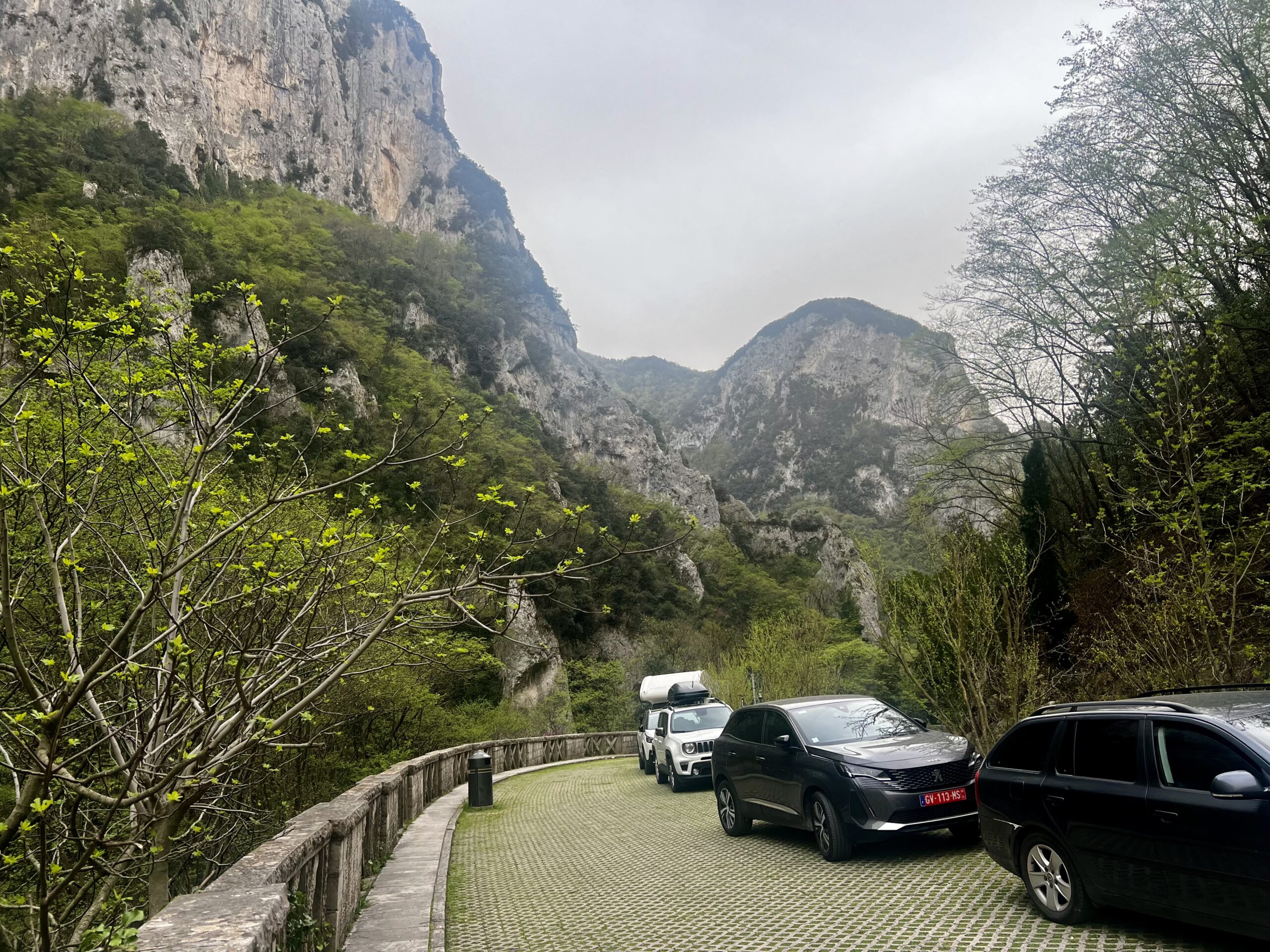
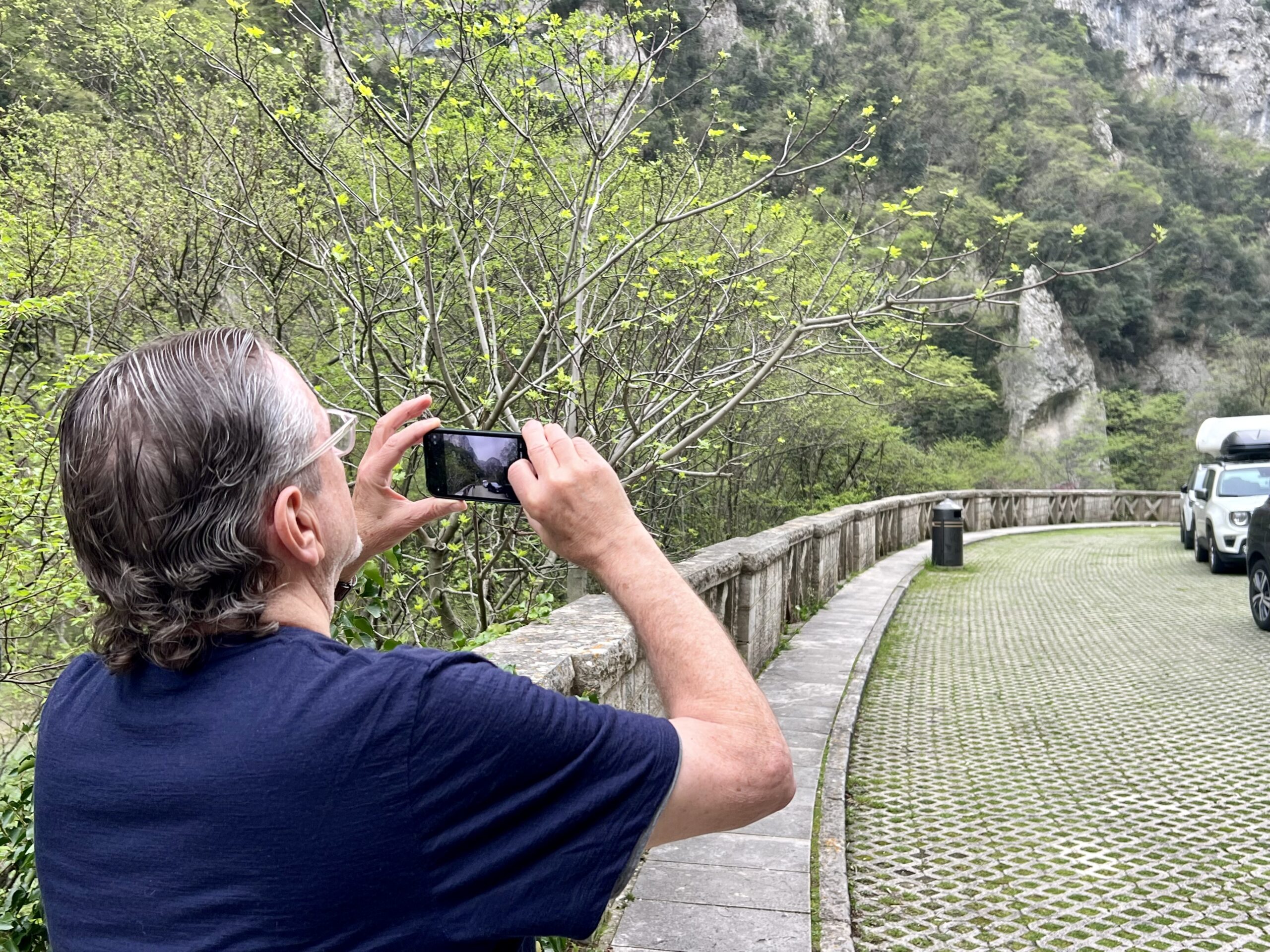
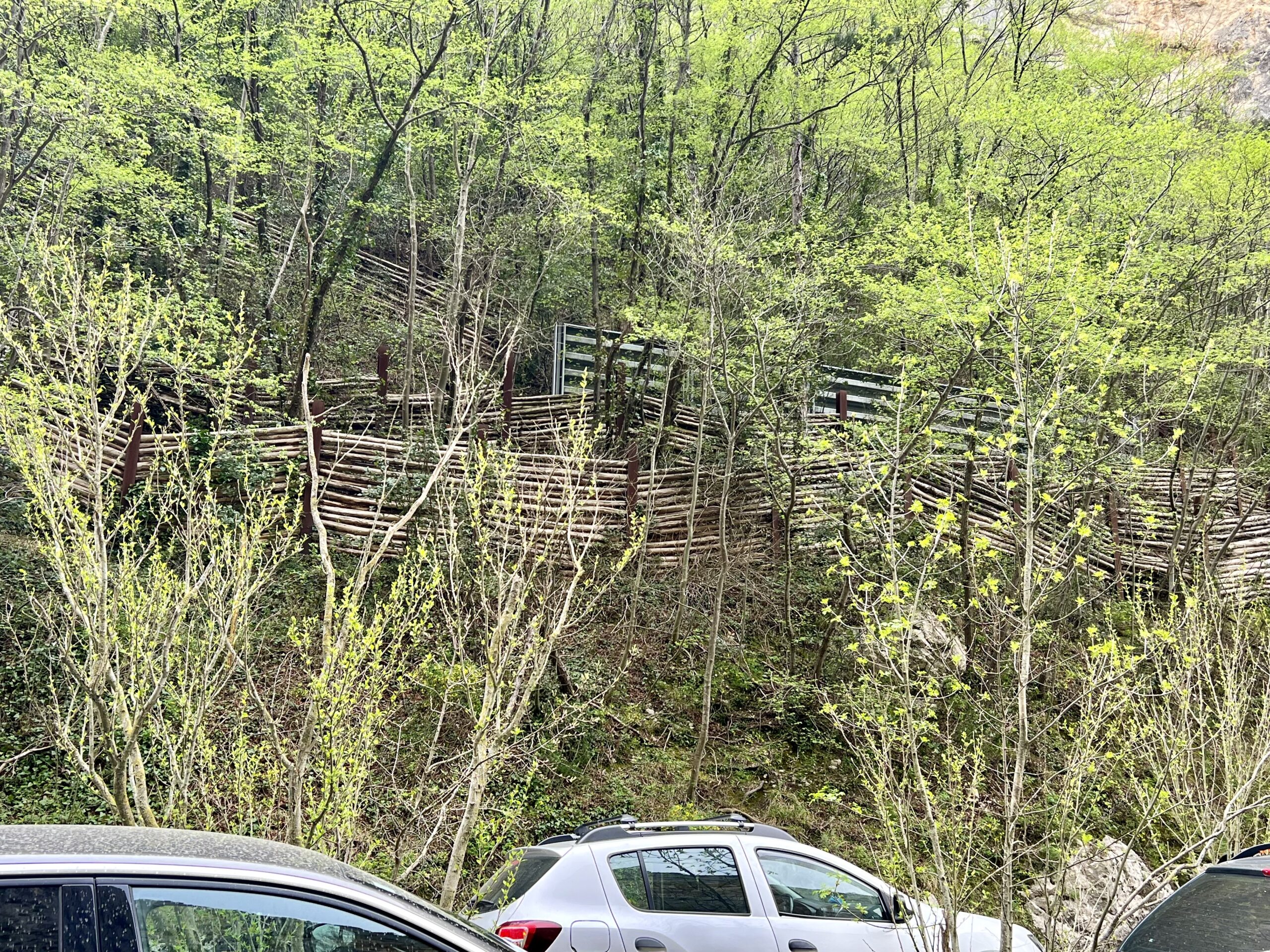
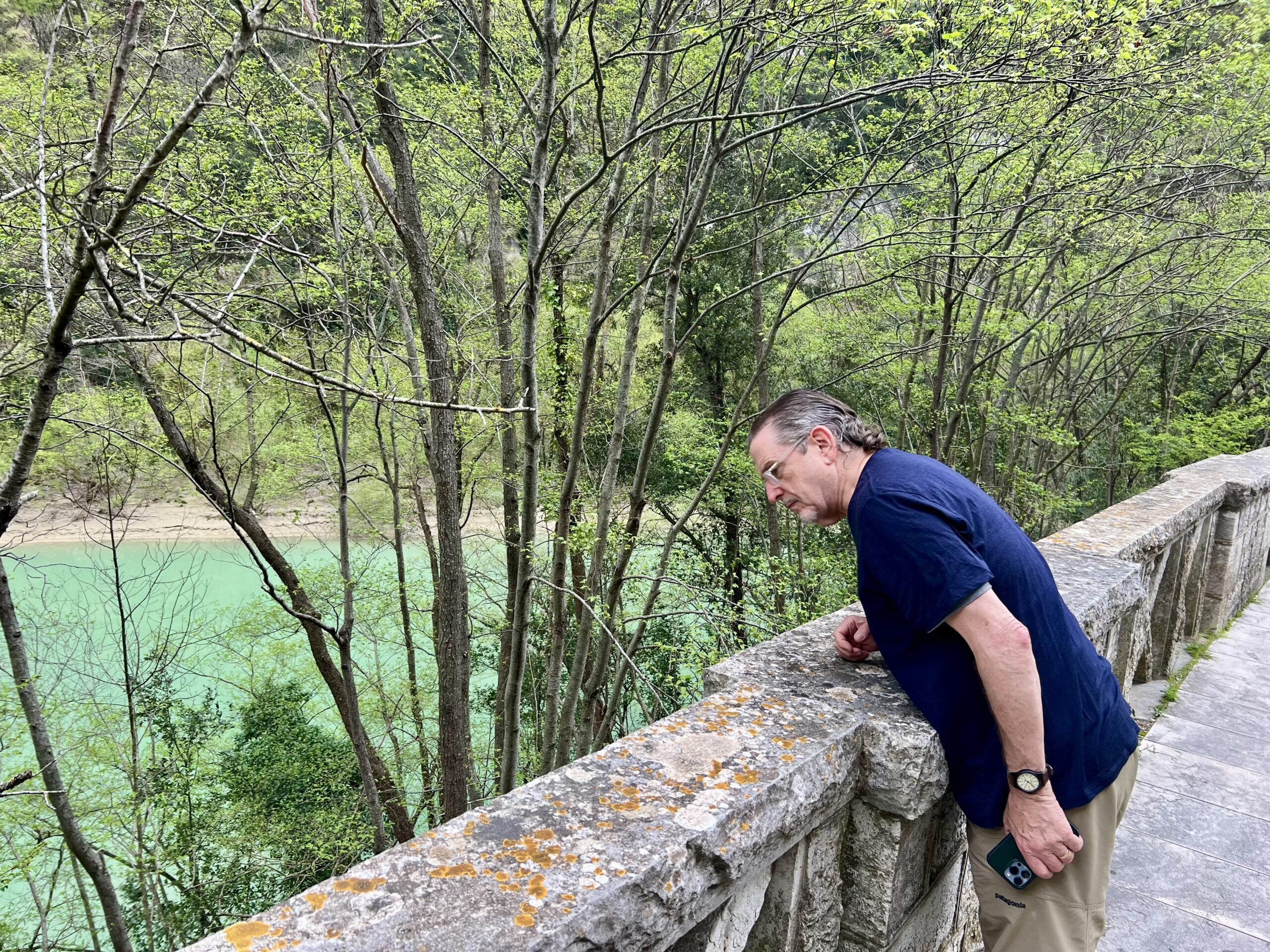
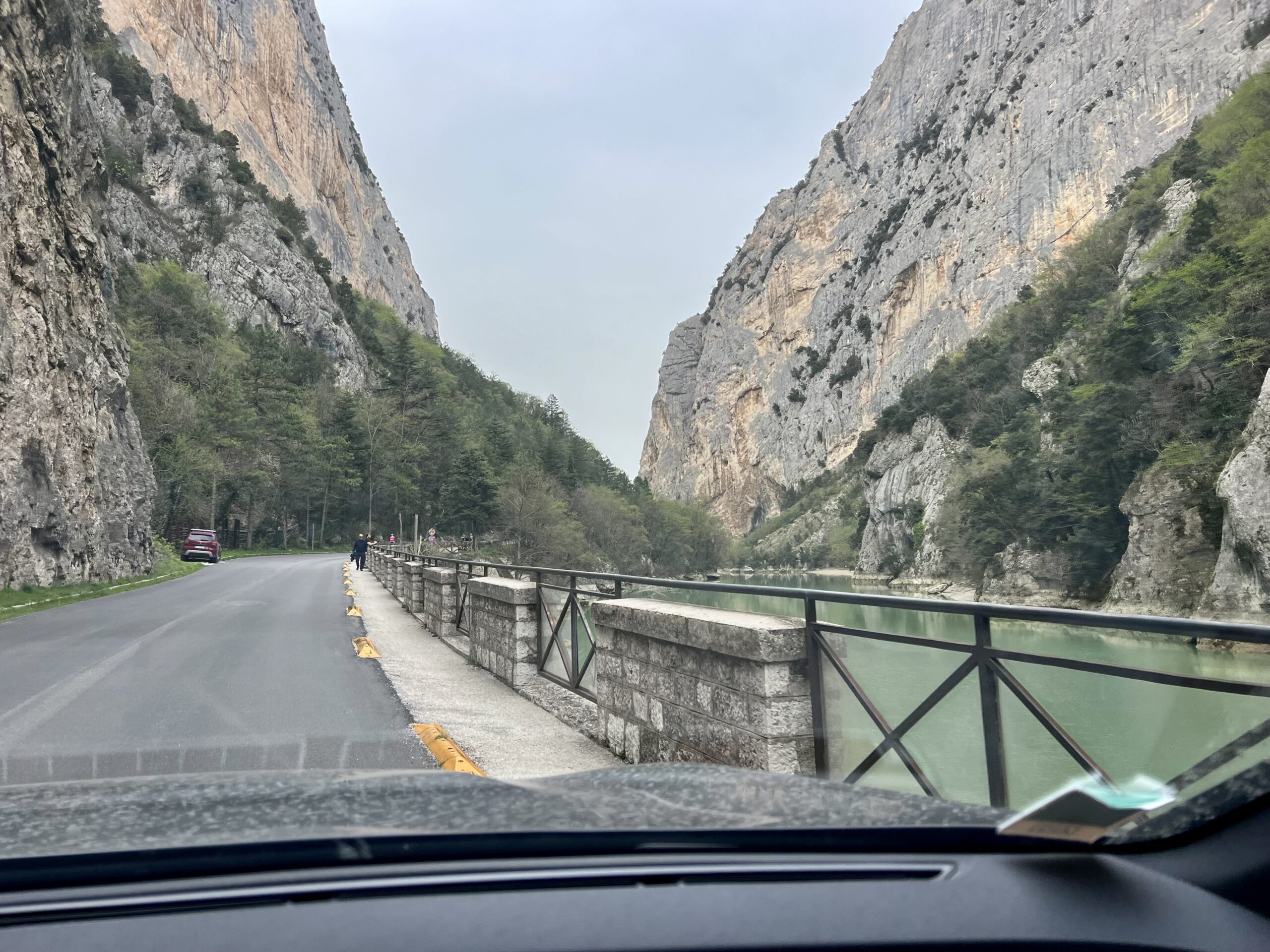
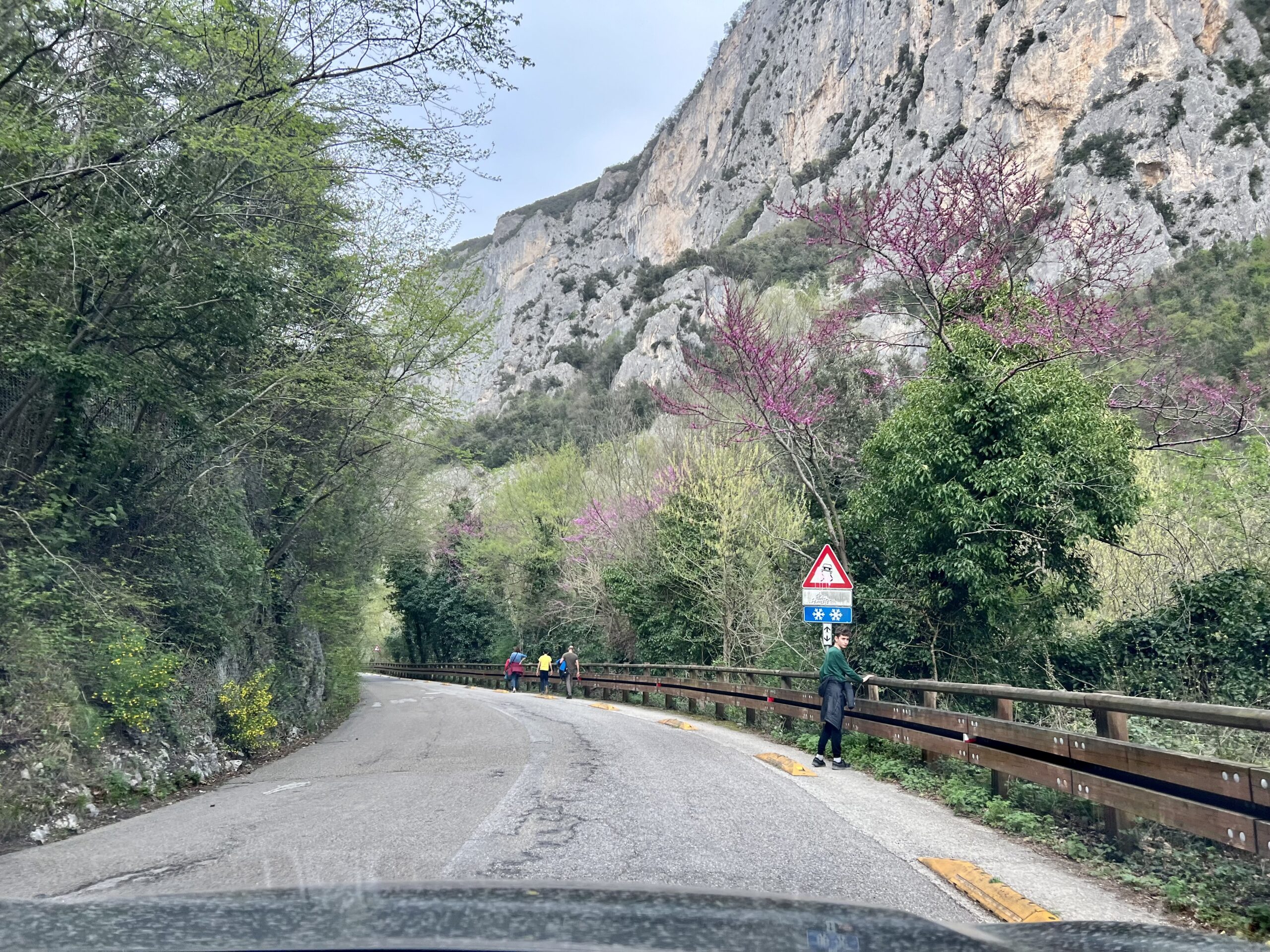
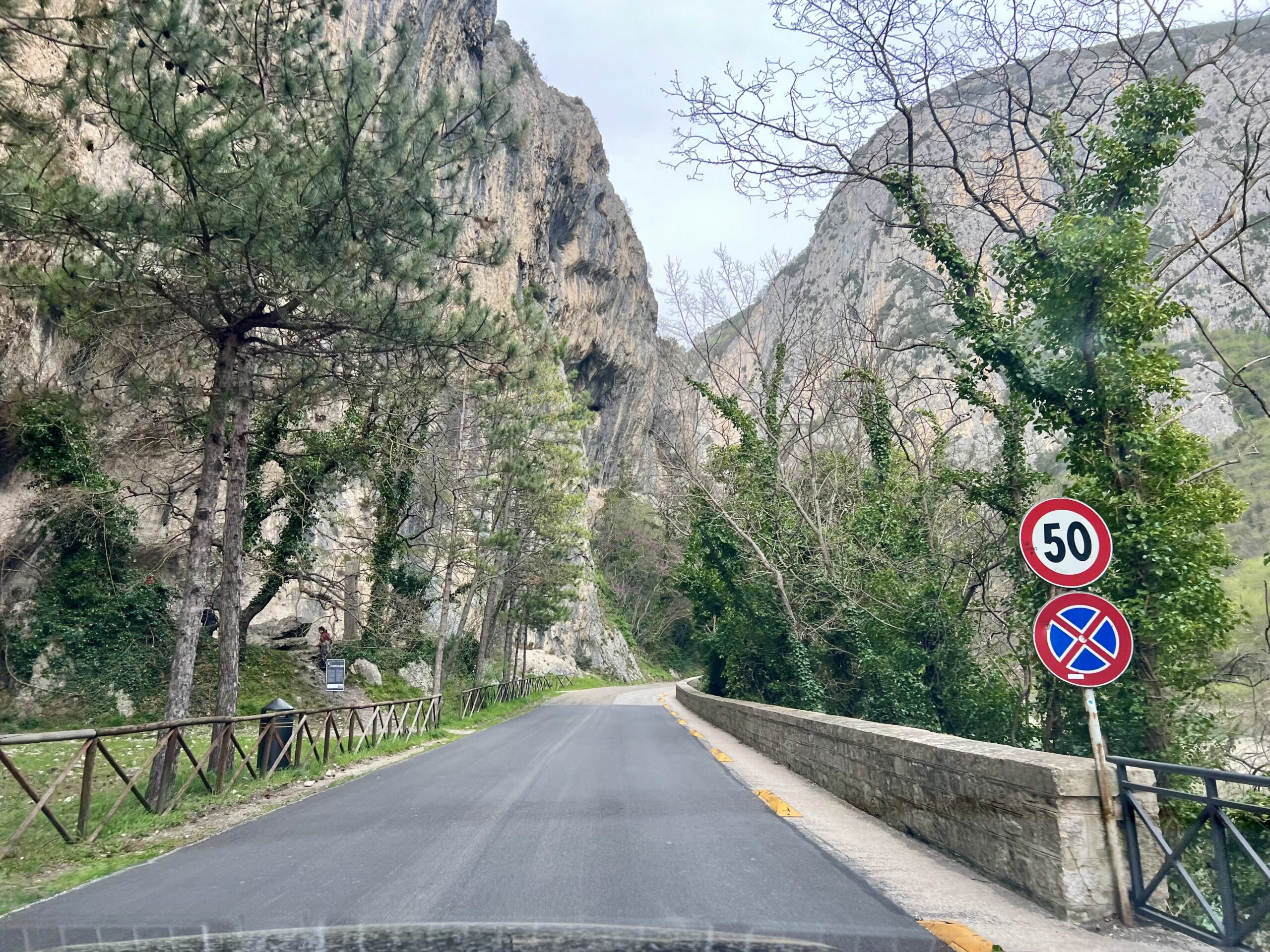
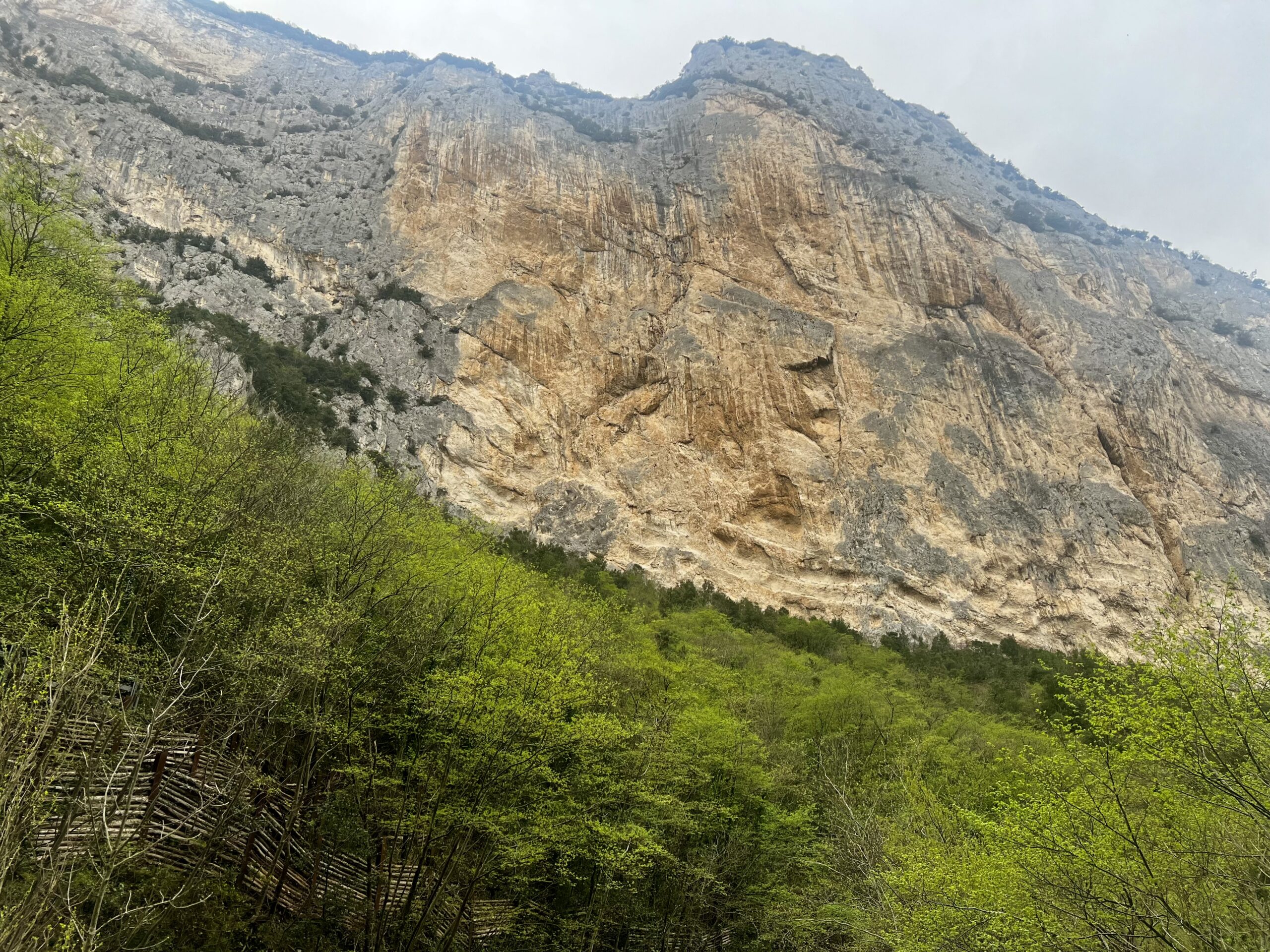
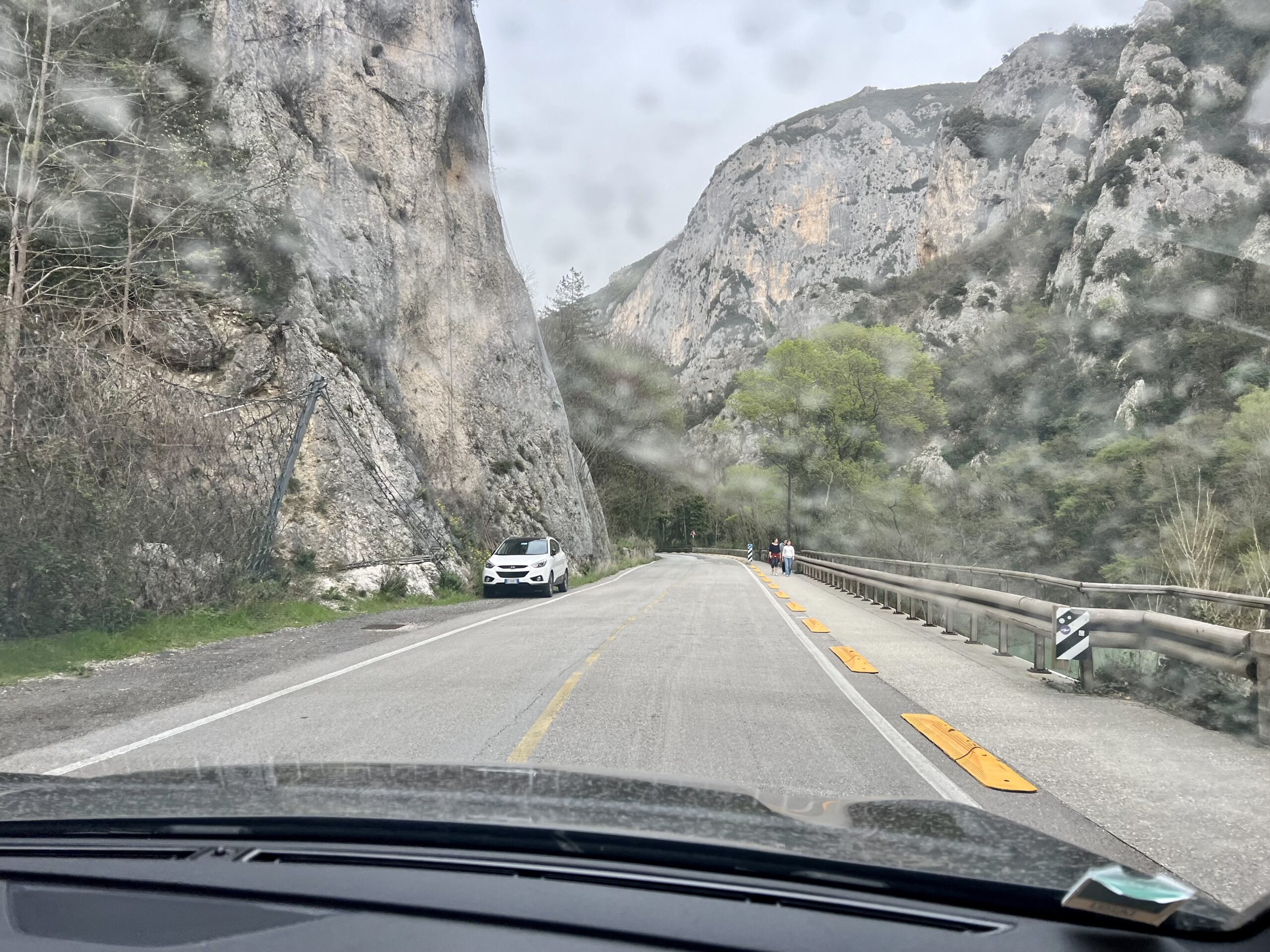
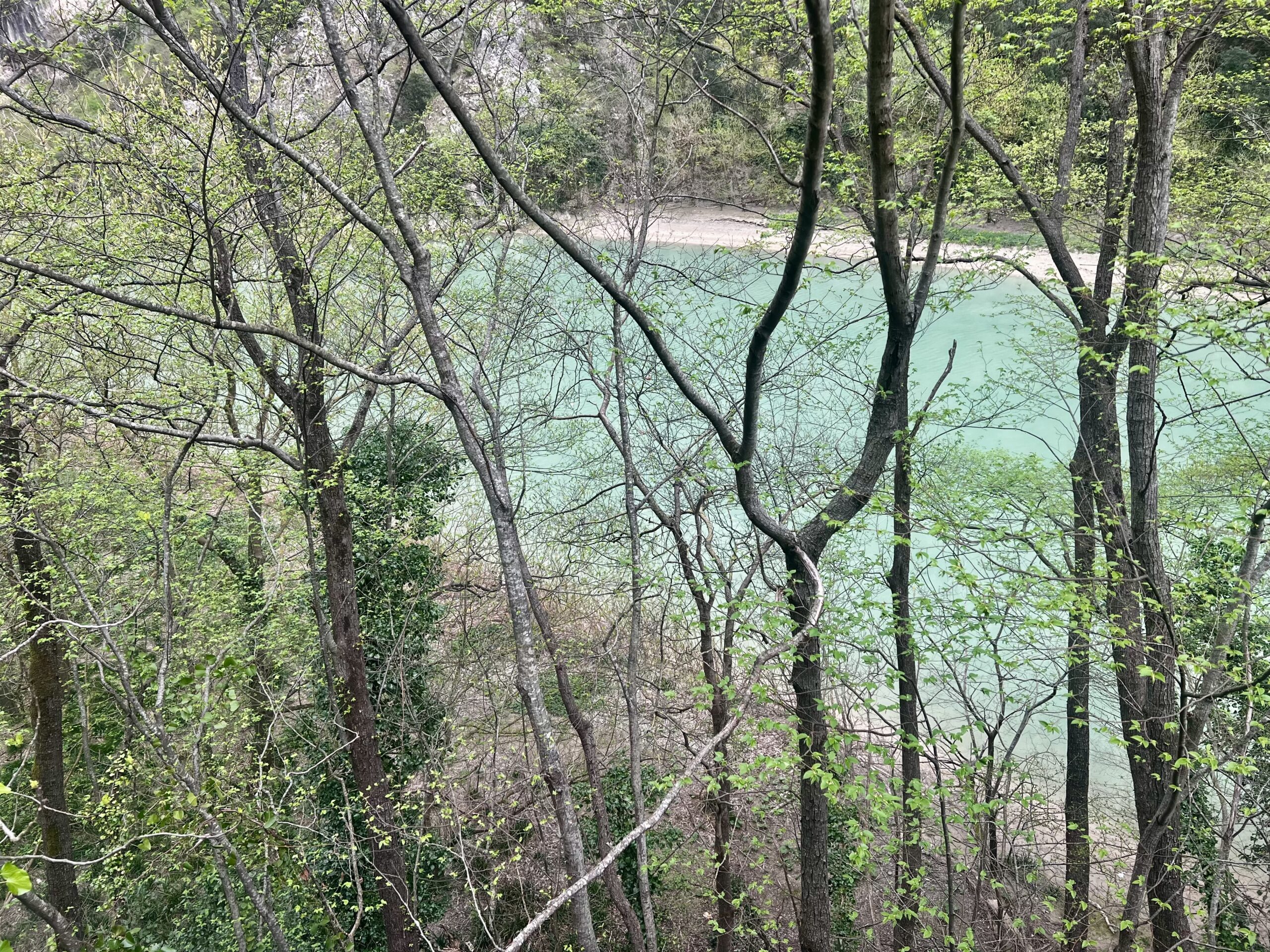
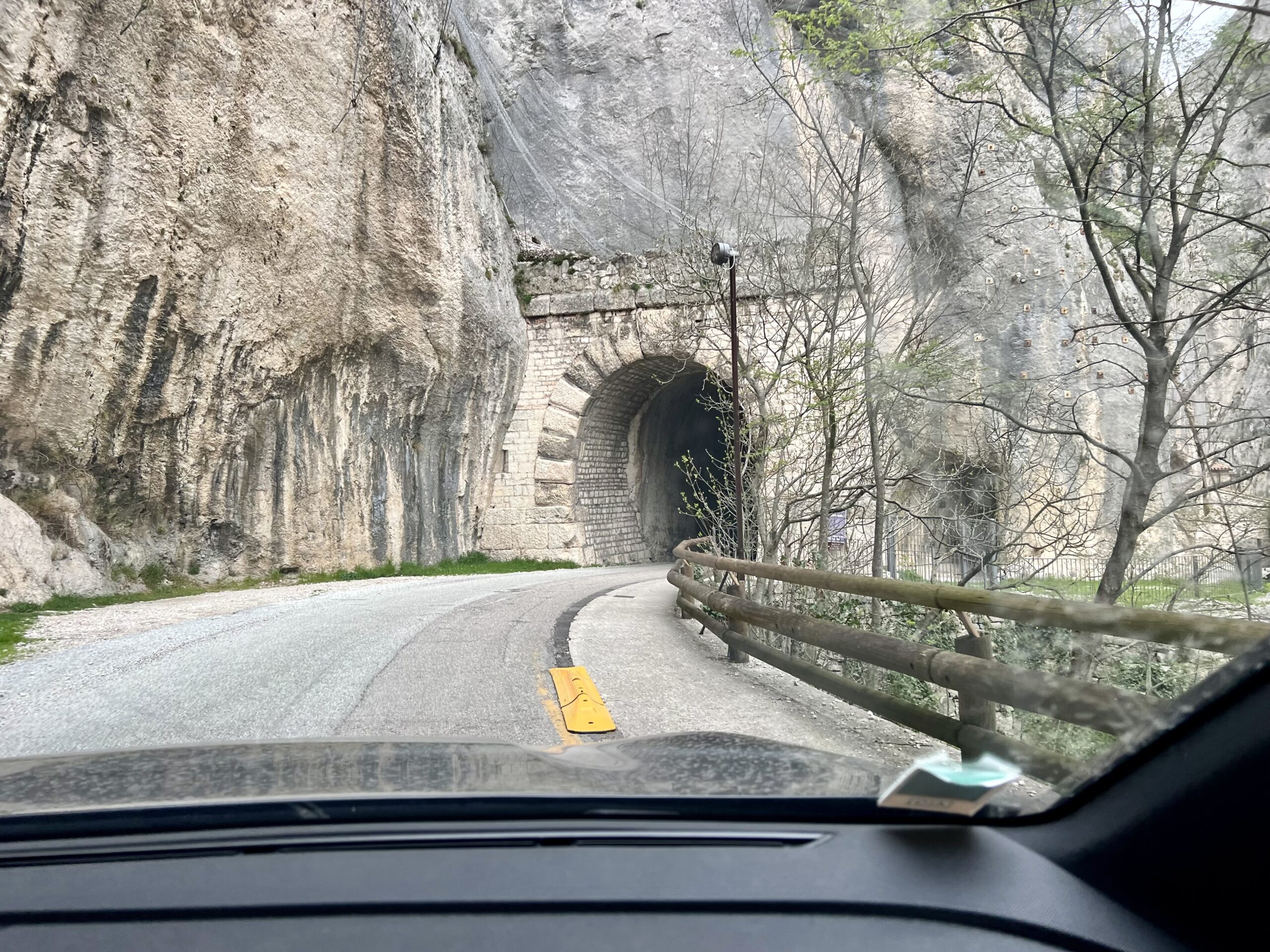
One More Dinner!
Adriana managed to squeeze in one more dinner at the family home before Luciana and Dario returned to Rome. Nena, a neighbor a few houses away, made the gnocchi for us. No egg in the recipe. Robert’s kind of cook!
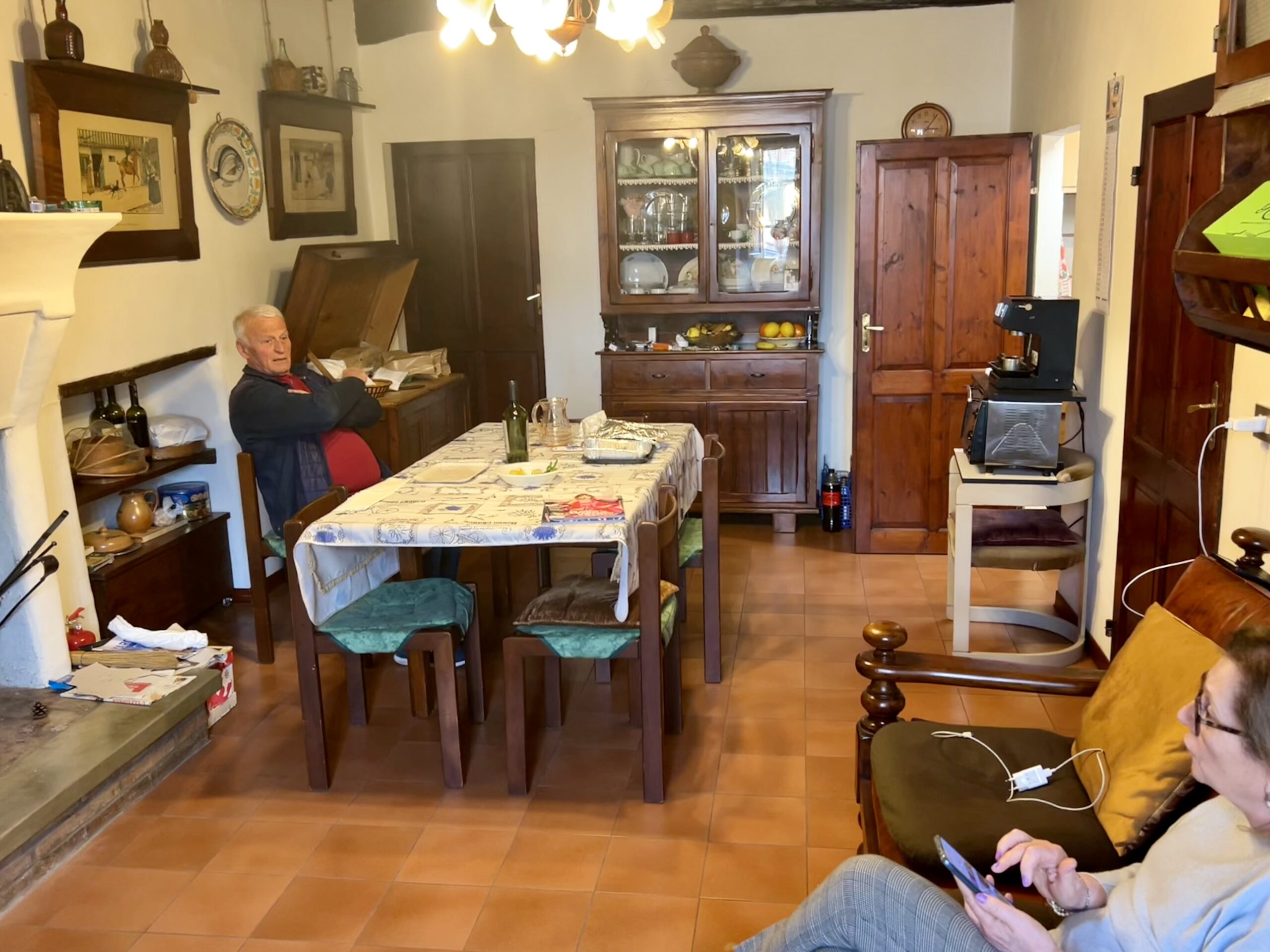
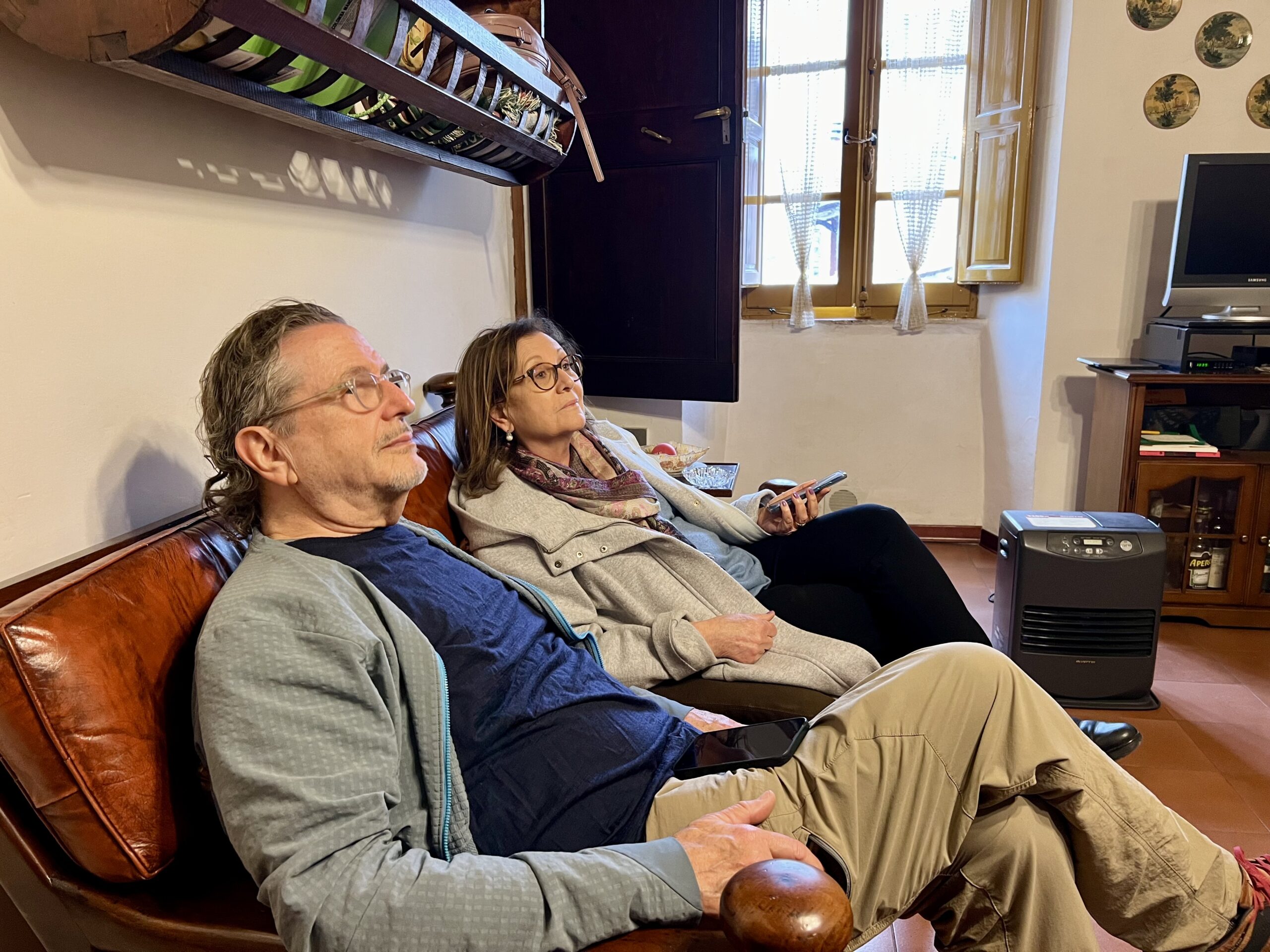
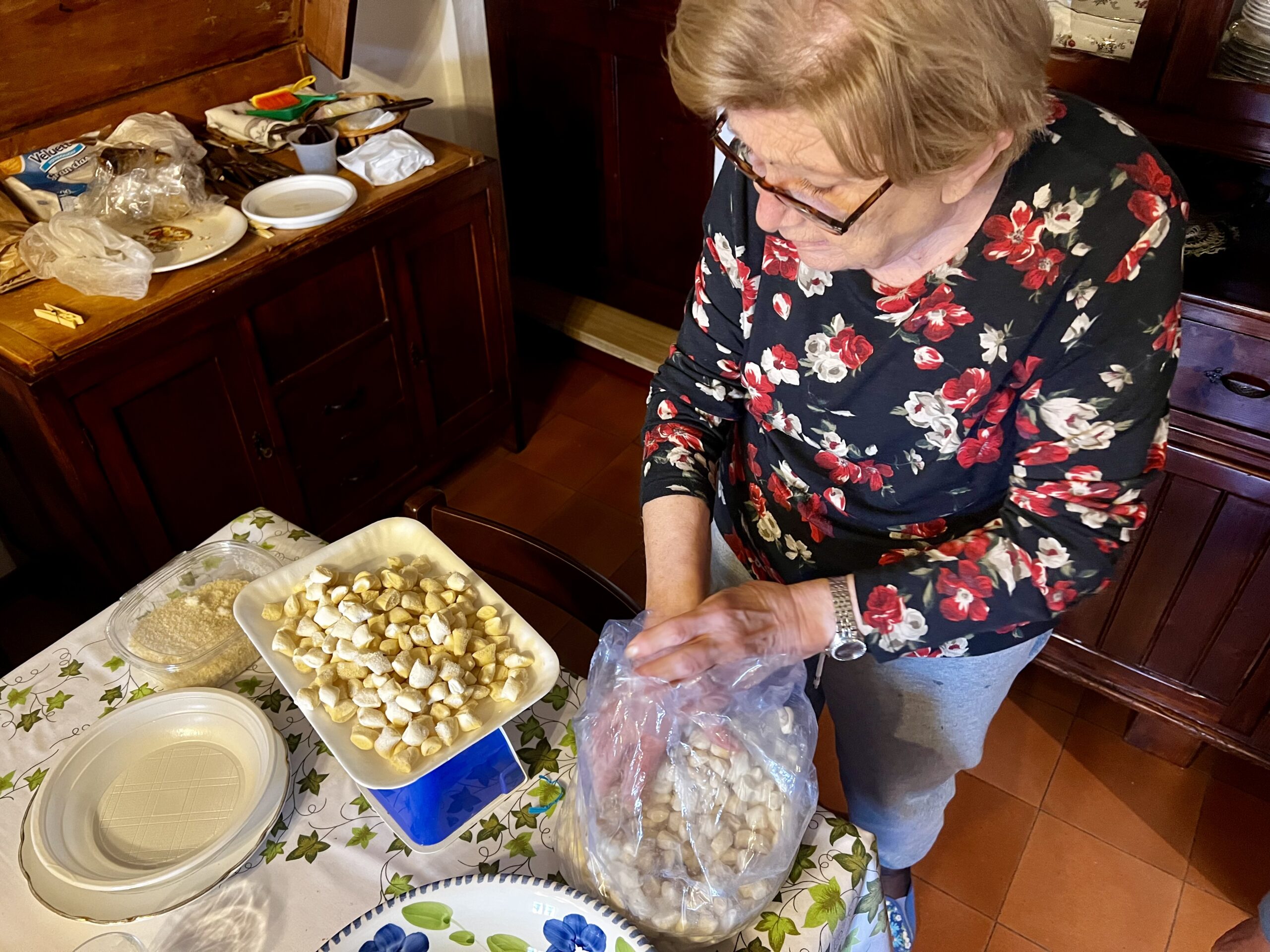
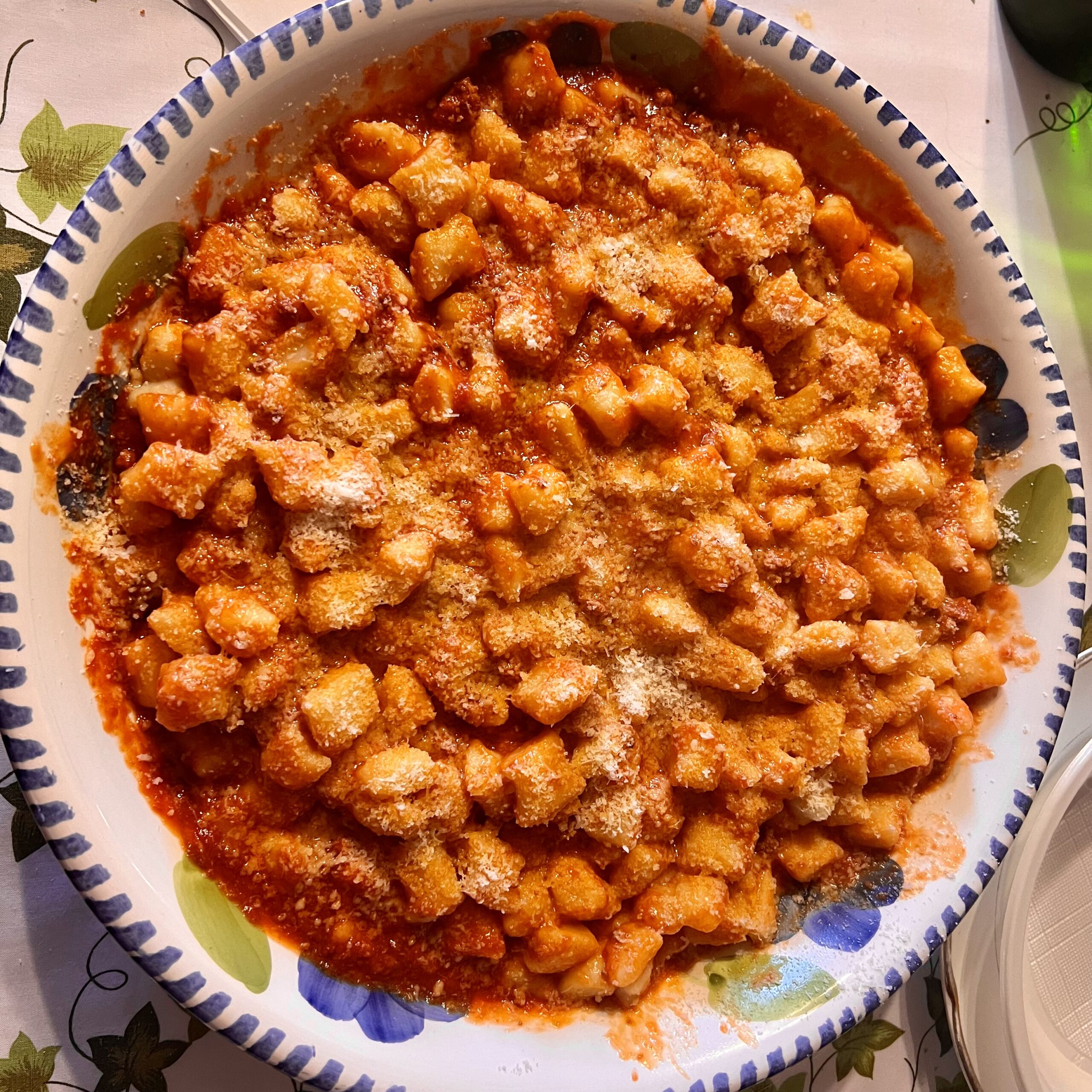
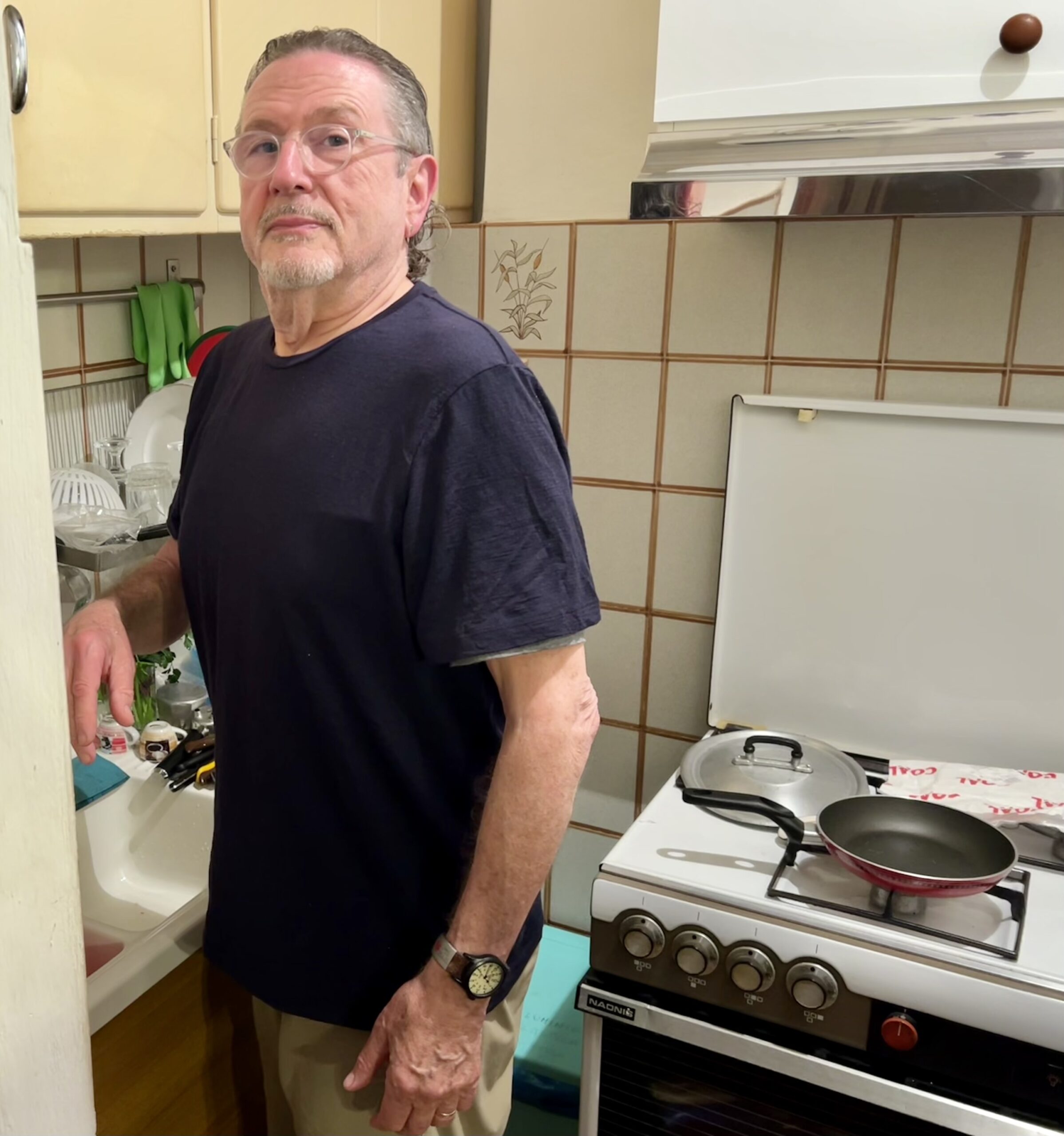
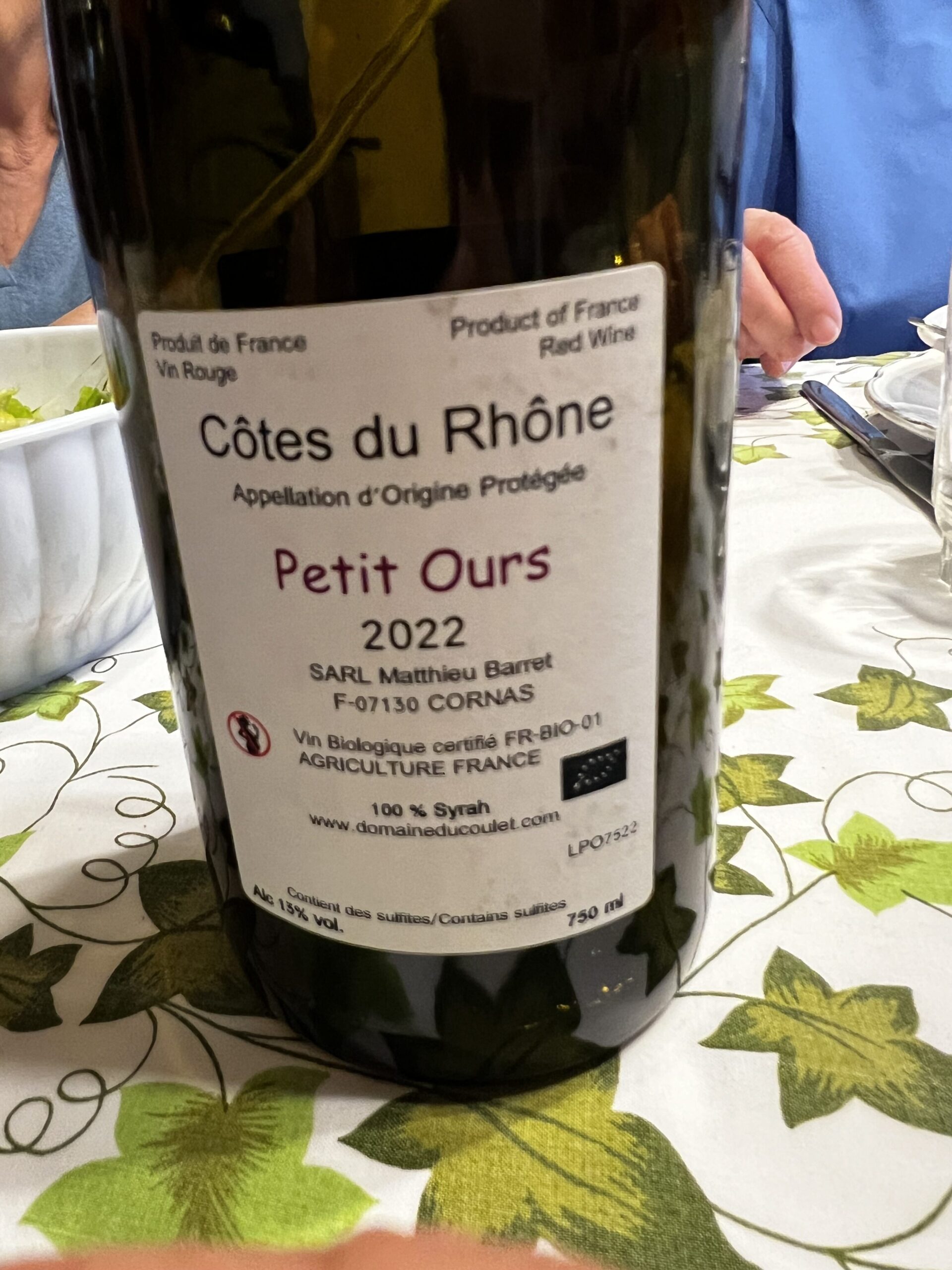
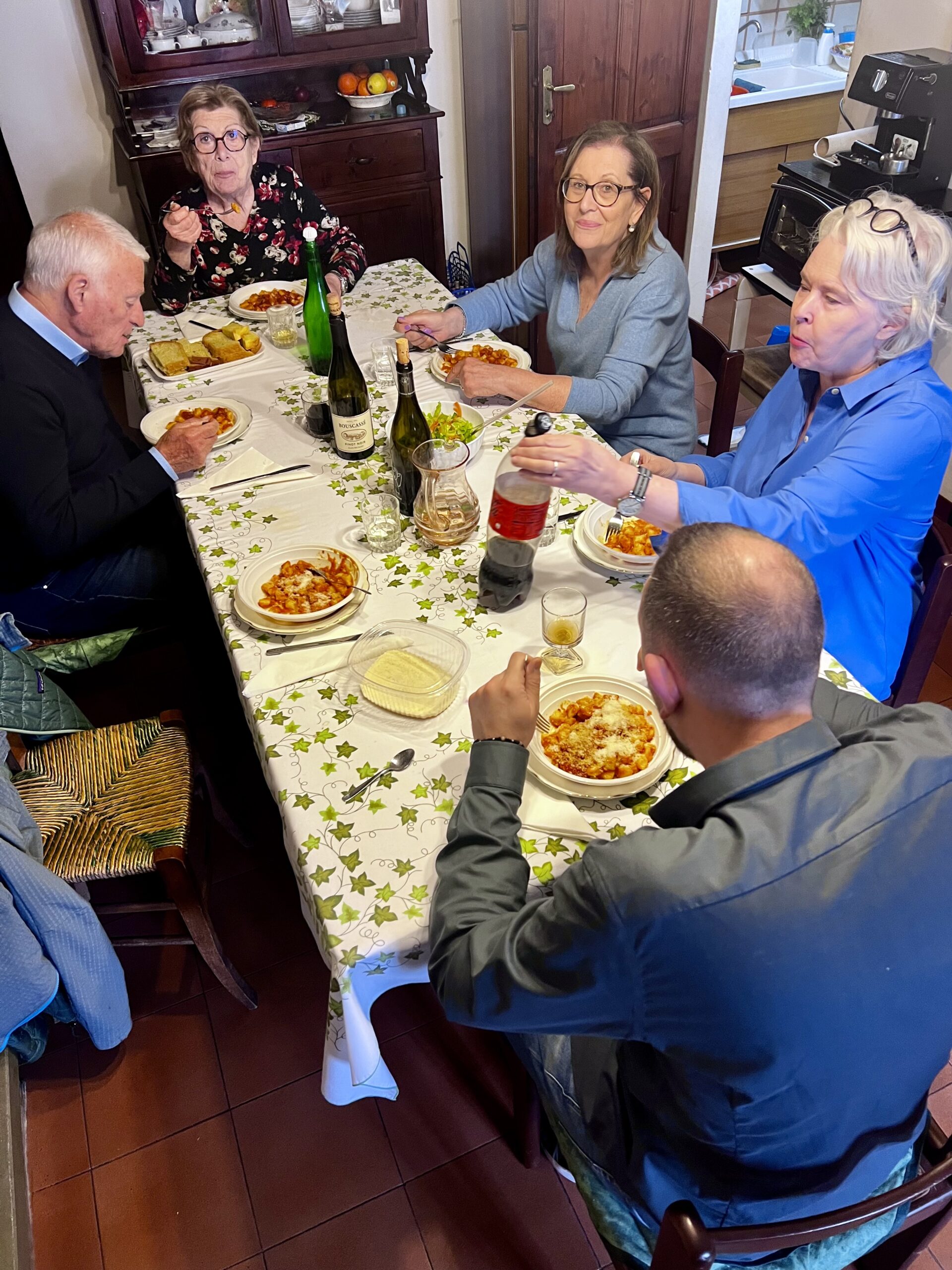
Montavio
We had a Sunday afternoon free to explore and we randomly chose Montavio as a destination because Robert said The lettering on the map isn’t too big or too little. After an hour drive, we were delighted to see an spectacular intact fortress designed by Francesco Giorgio de Martini, the same architect who designed the fort at Serra. We also visited a quaint town theater and had a drink.
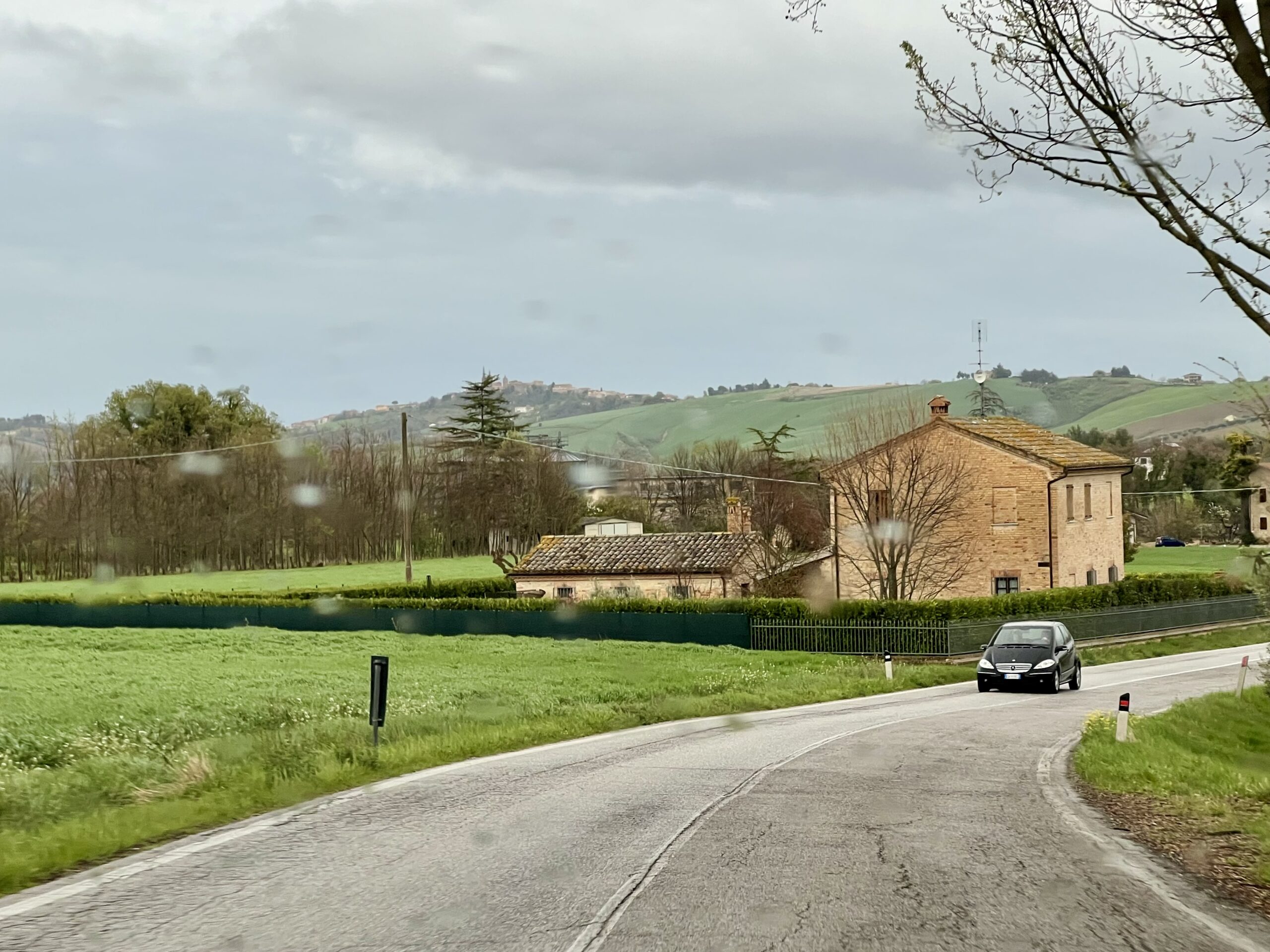
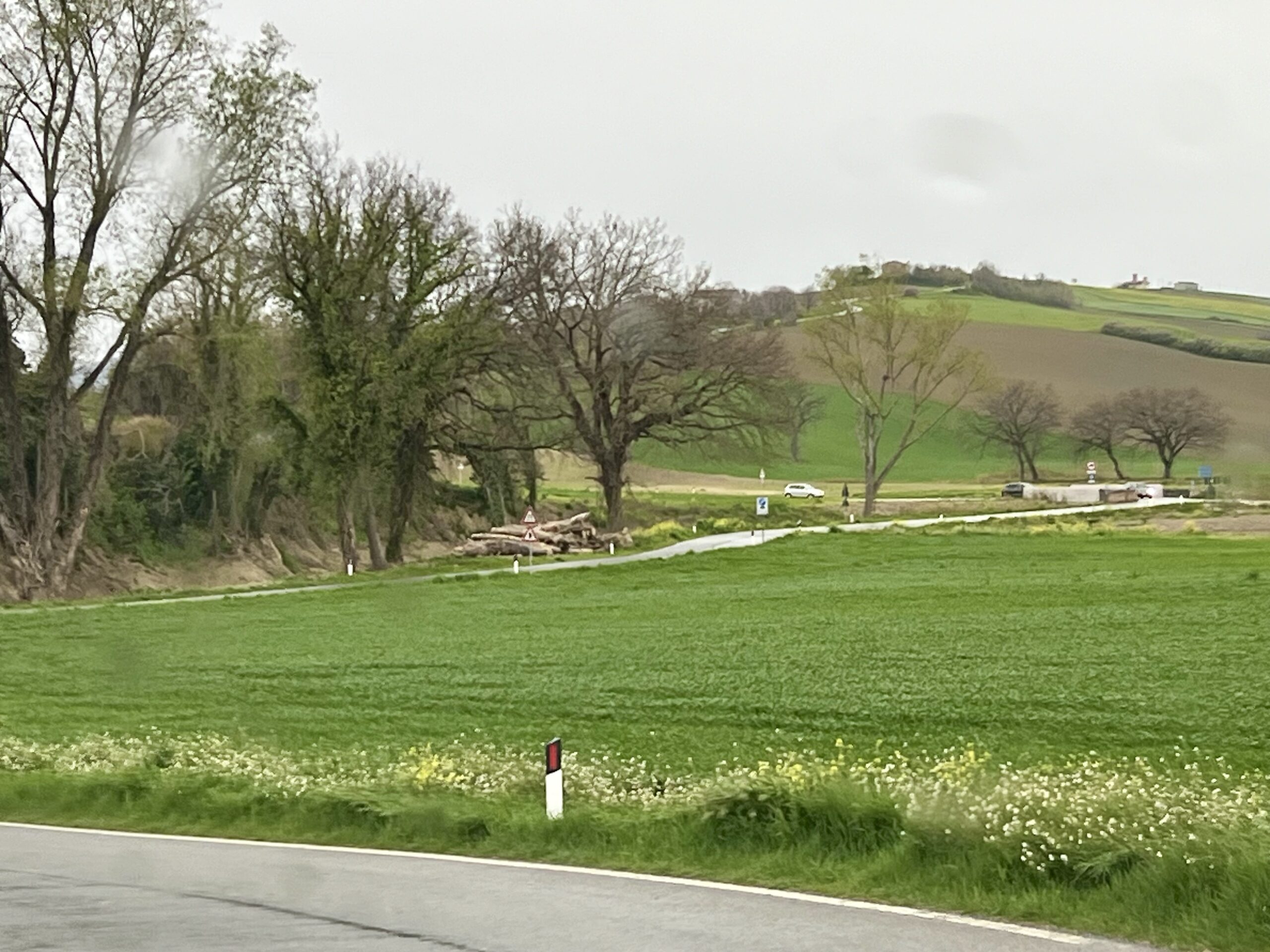
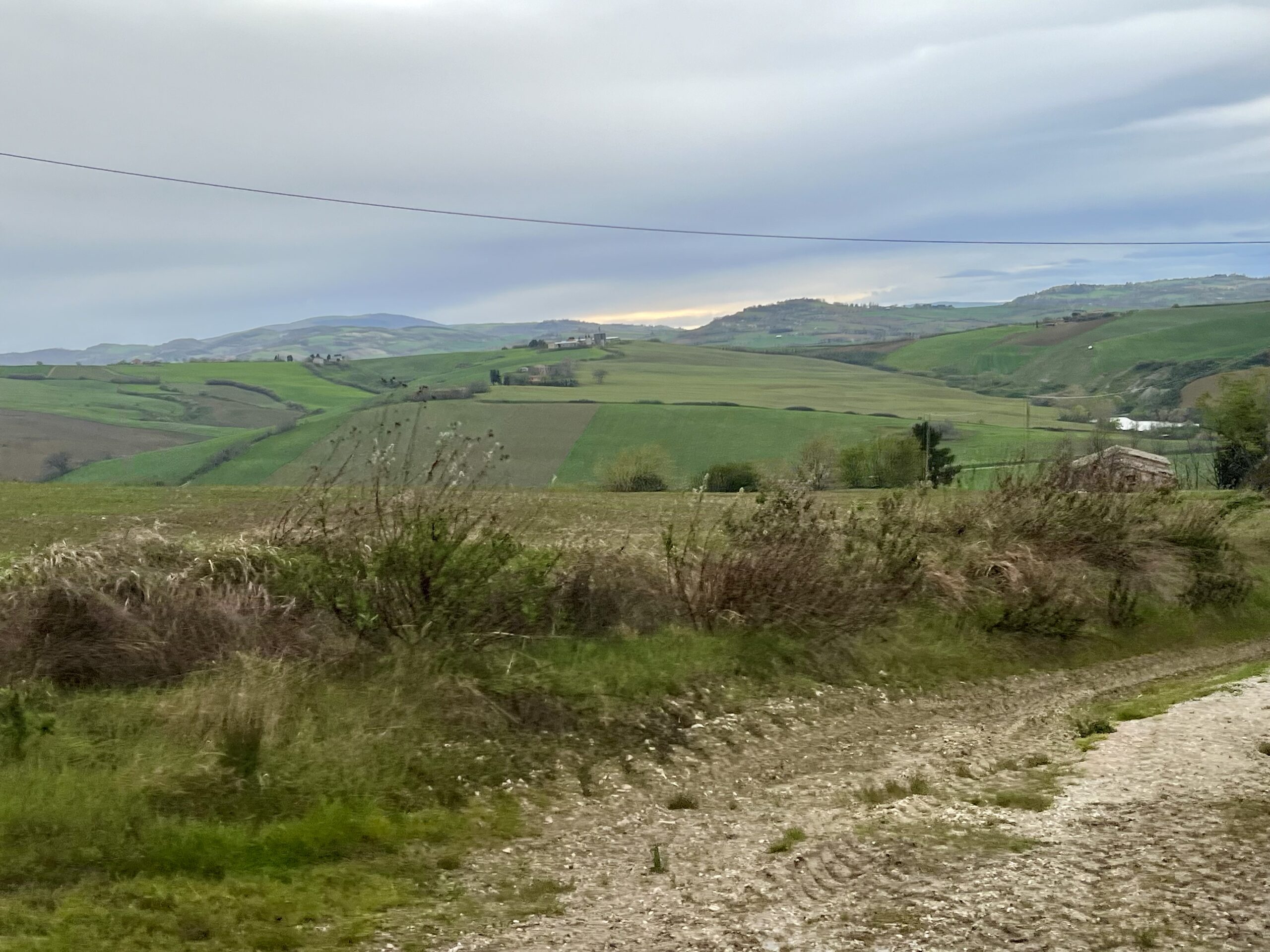
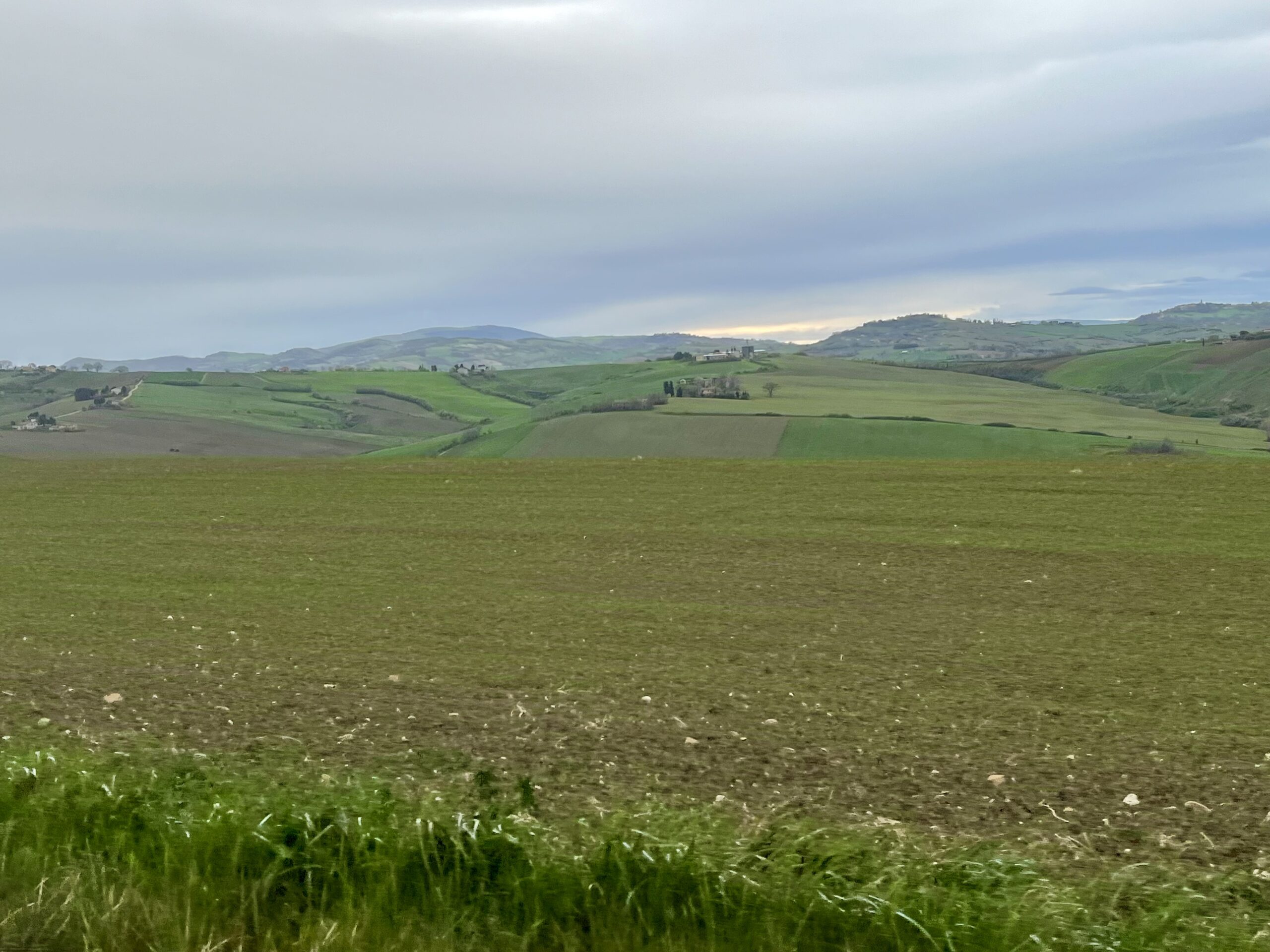
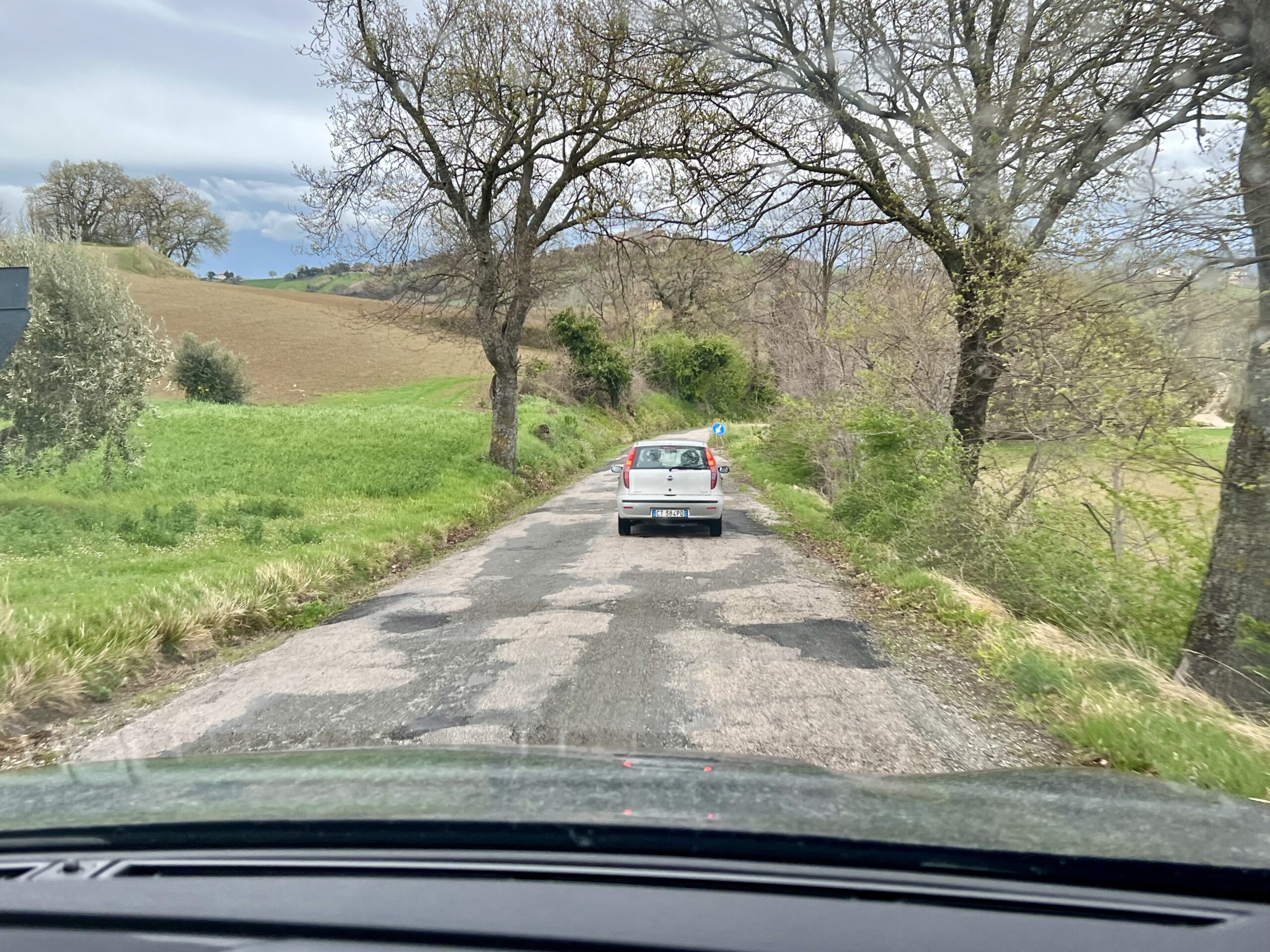
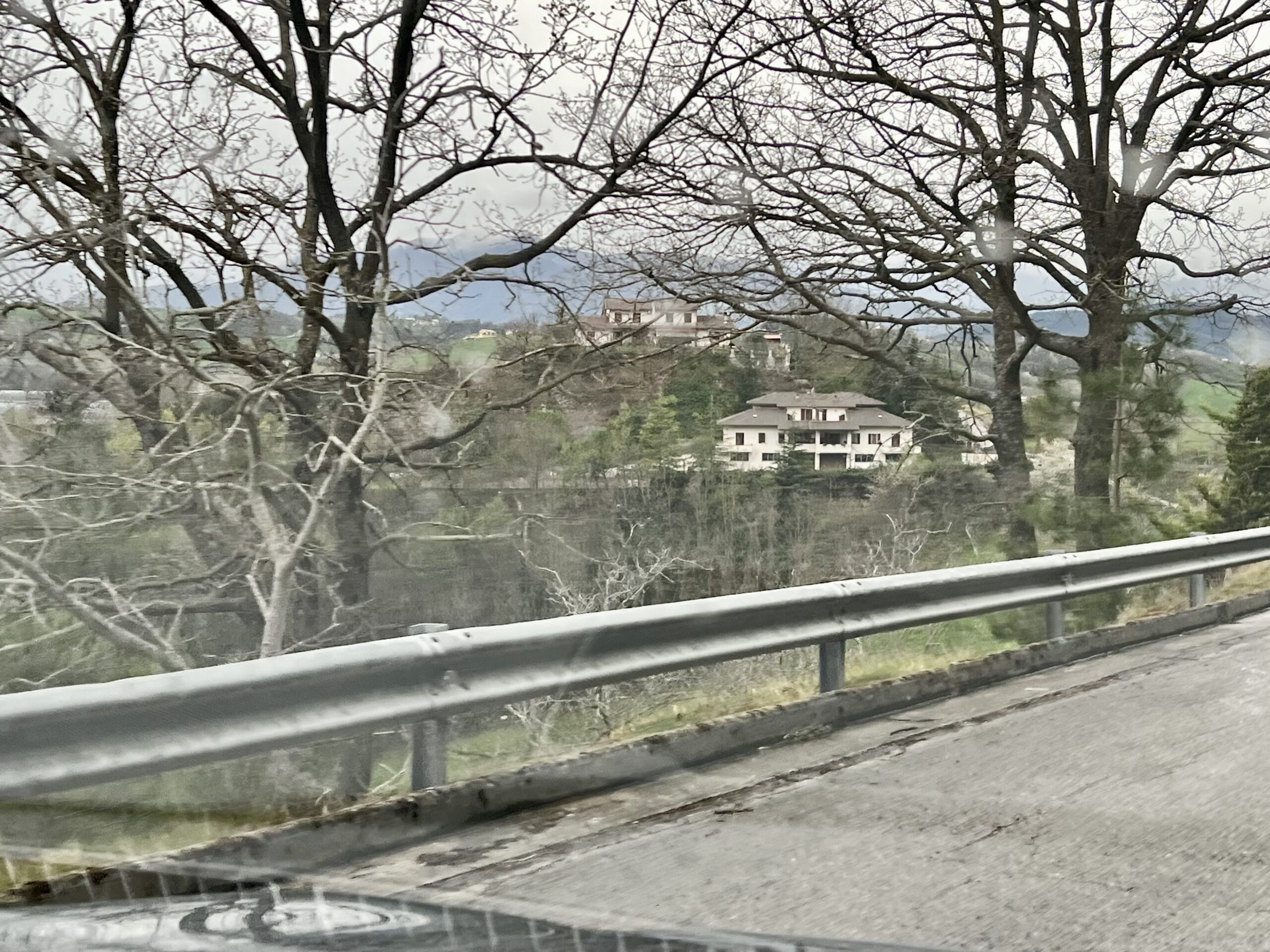
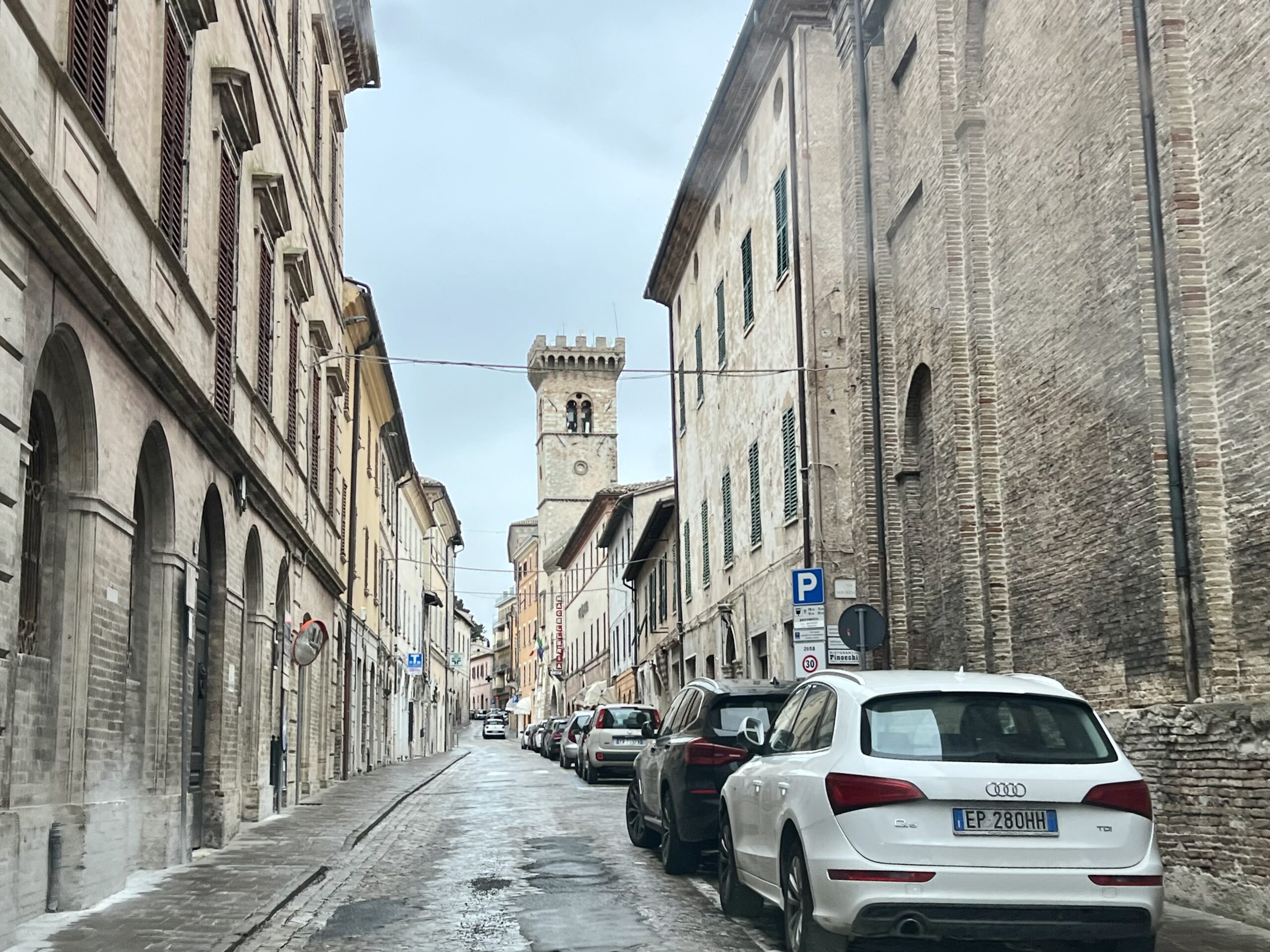
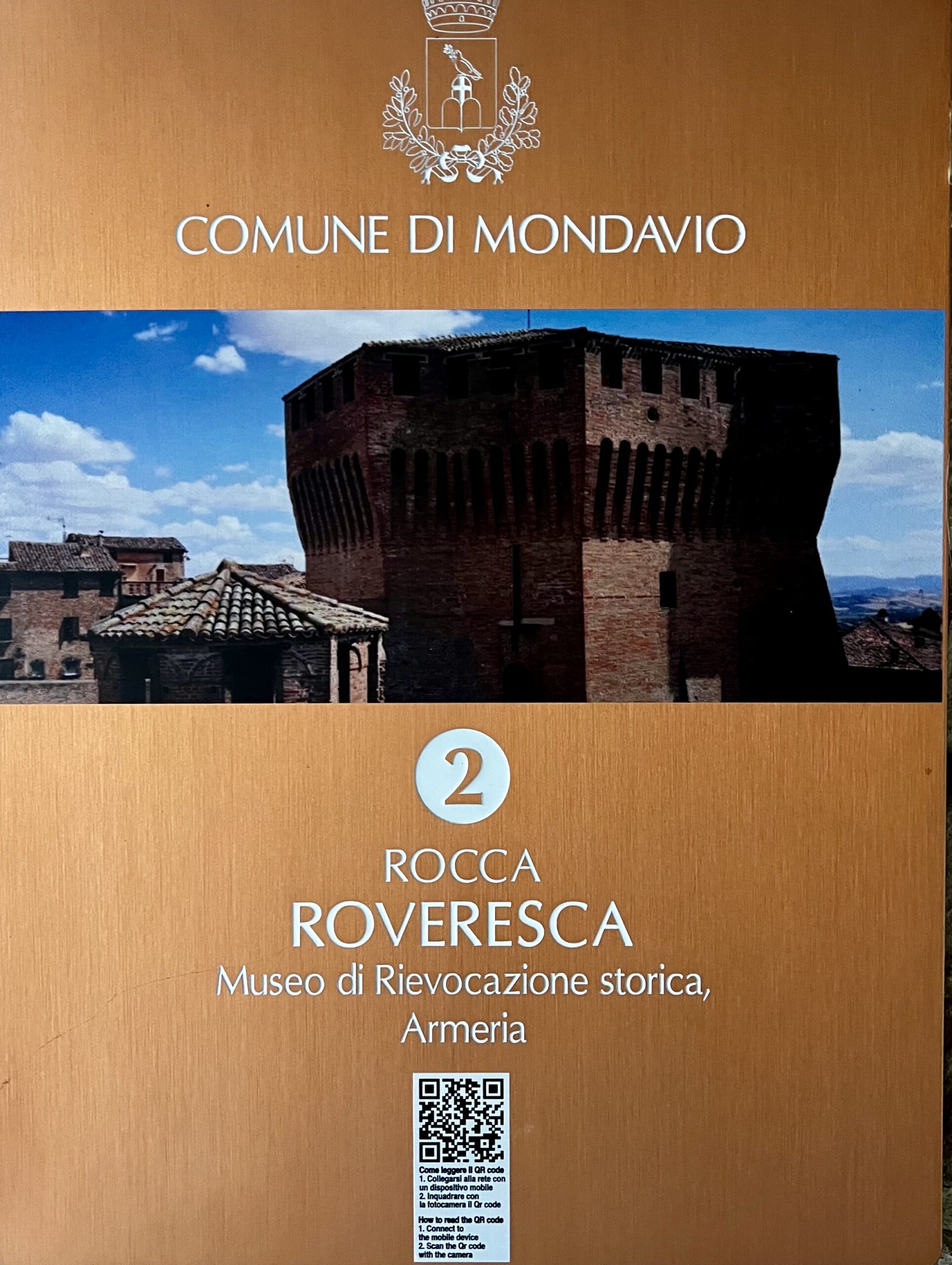
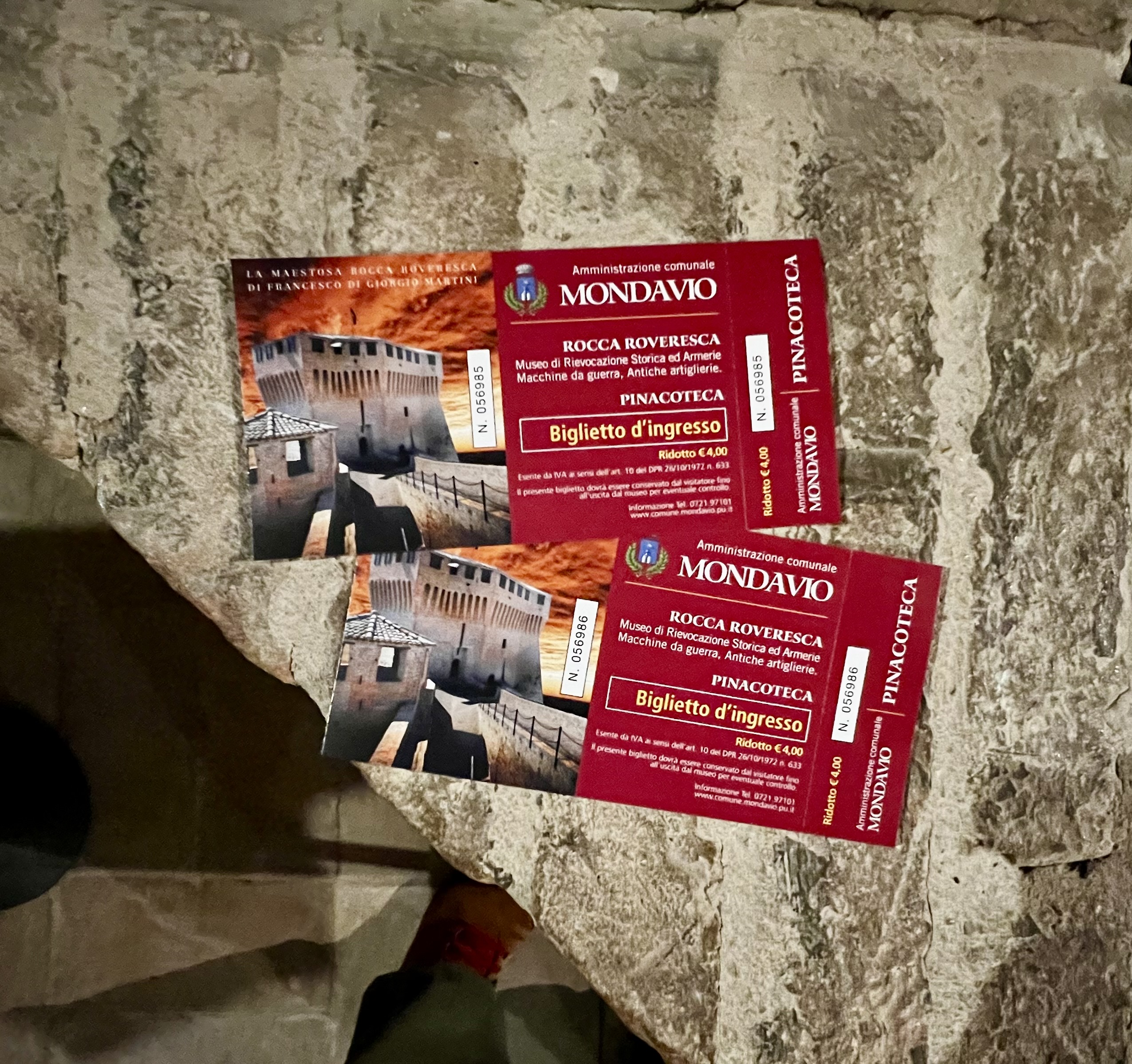
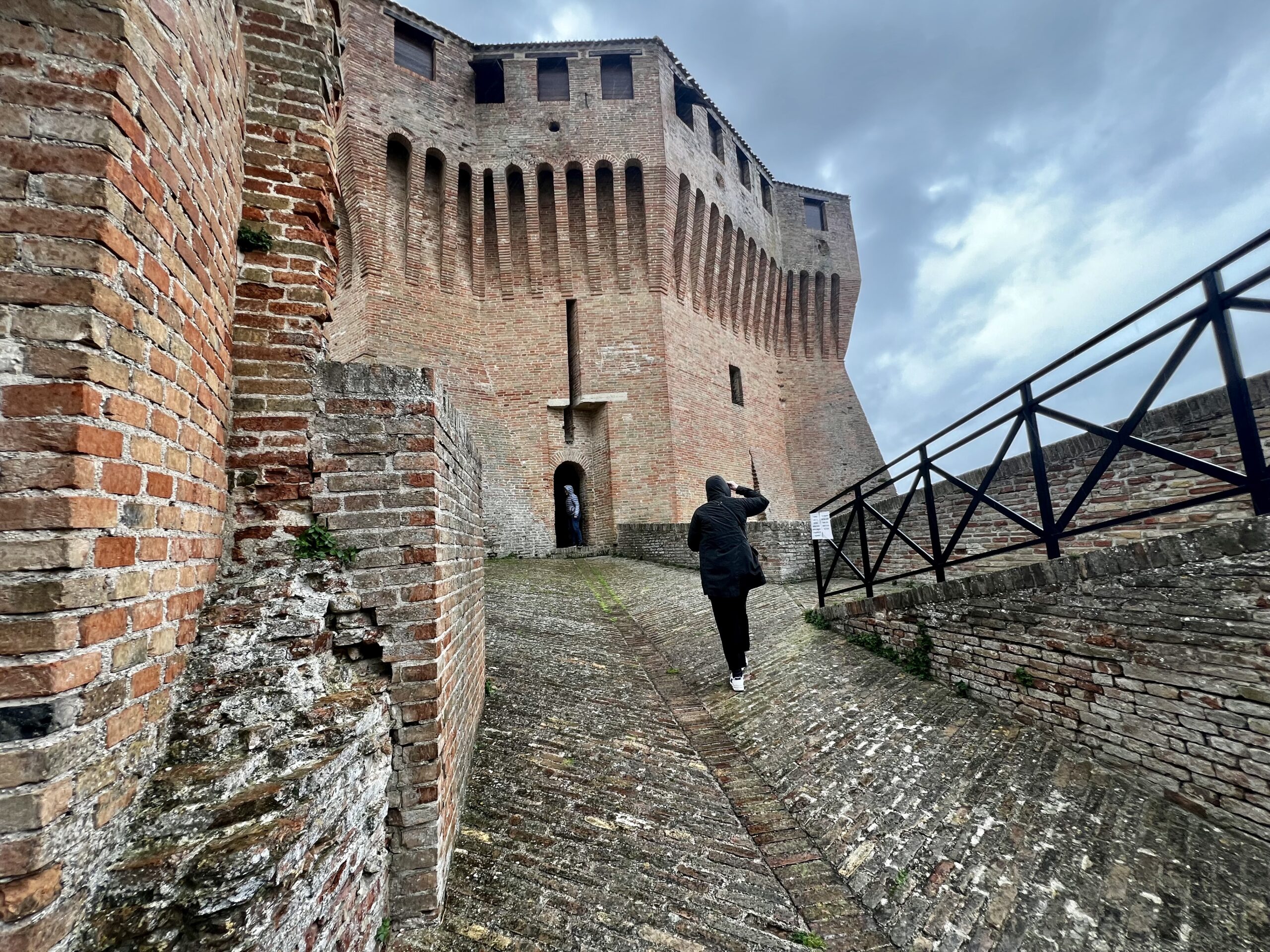
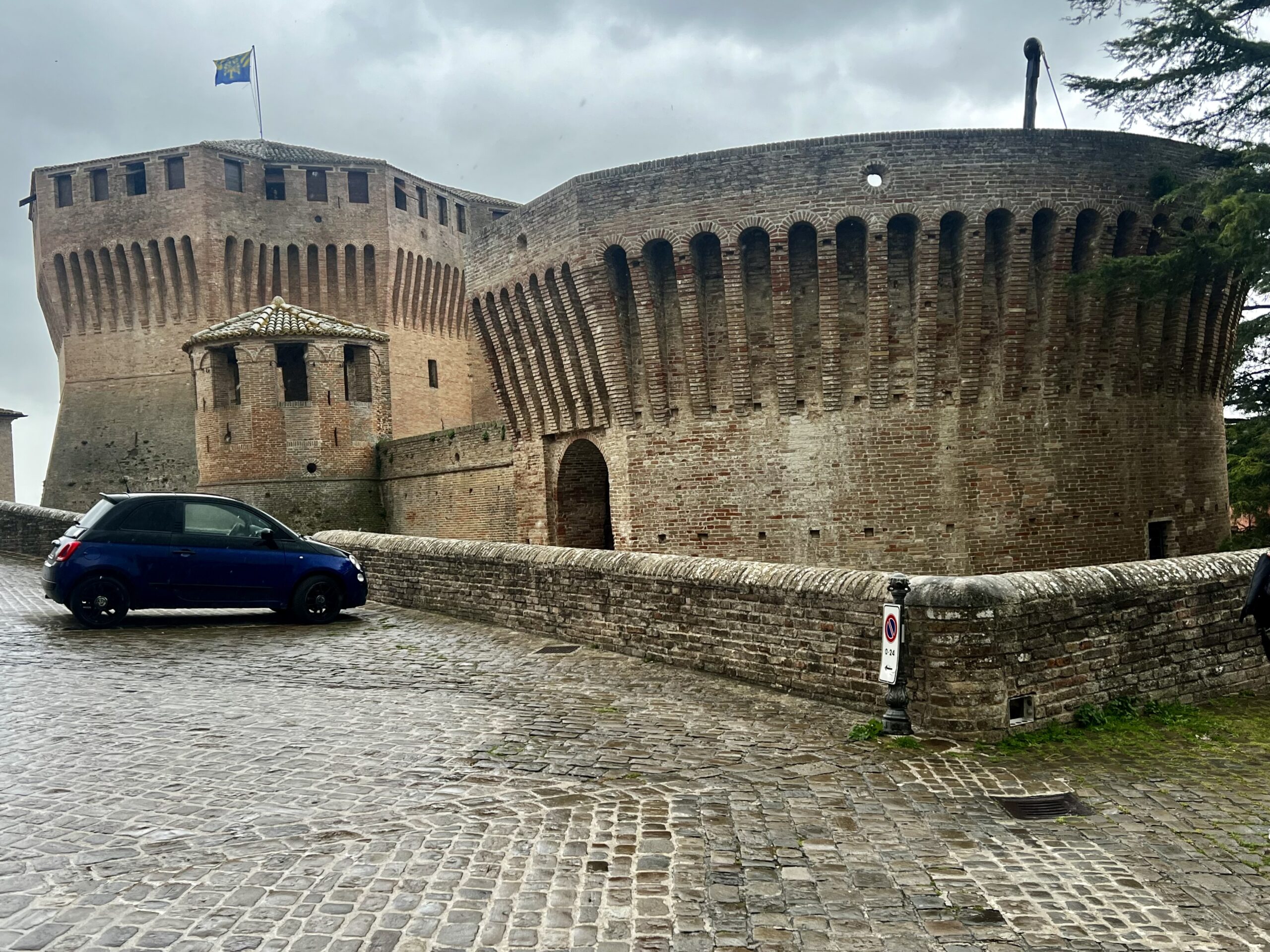
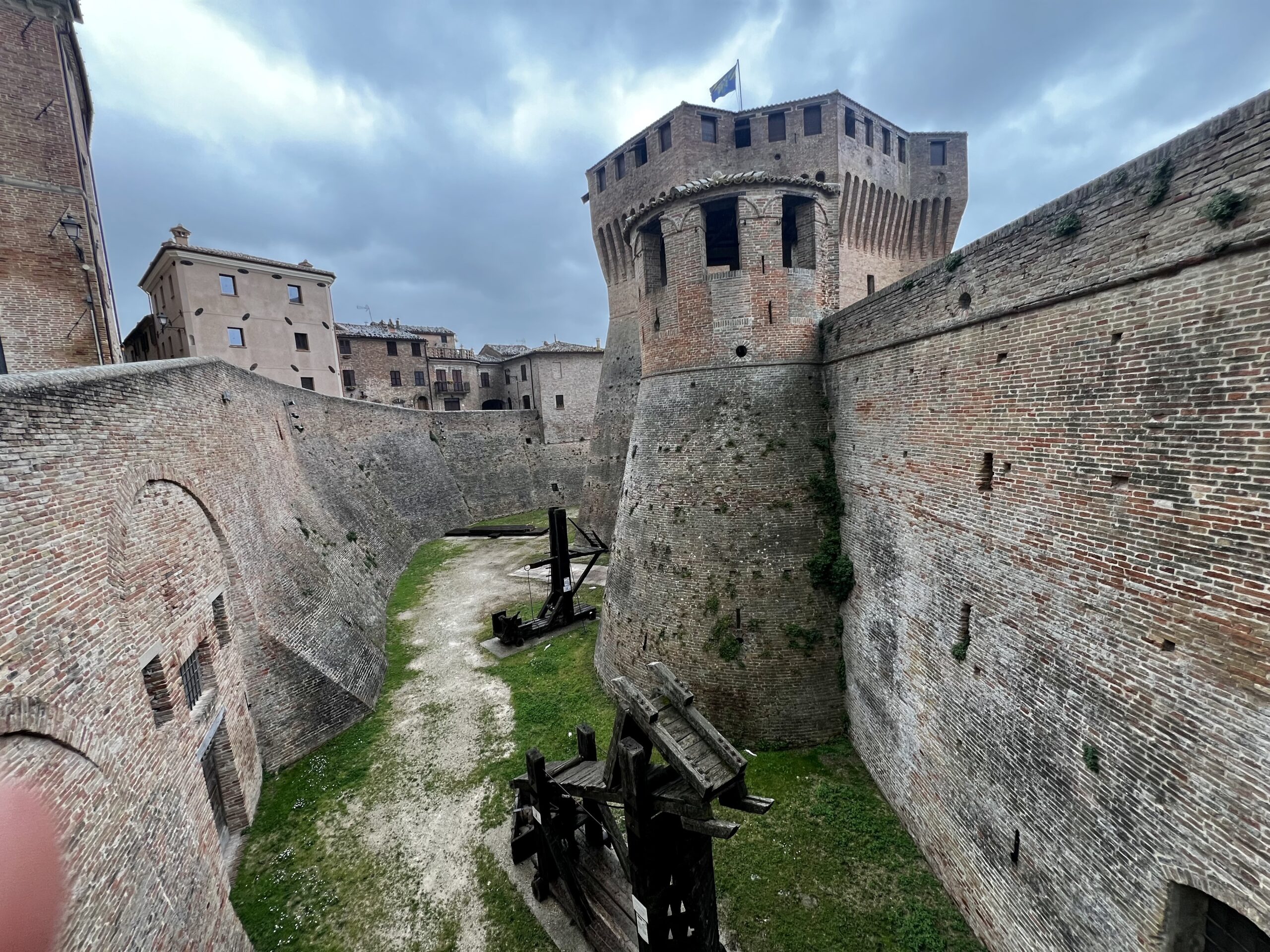
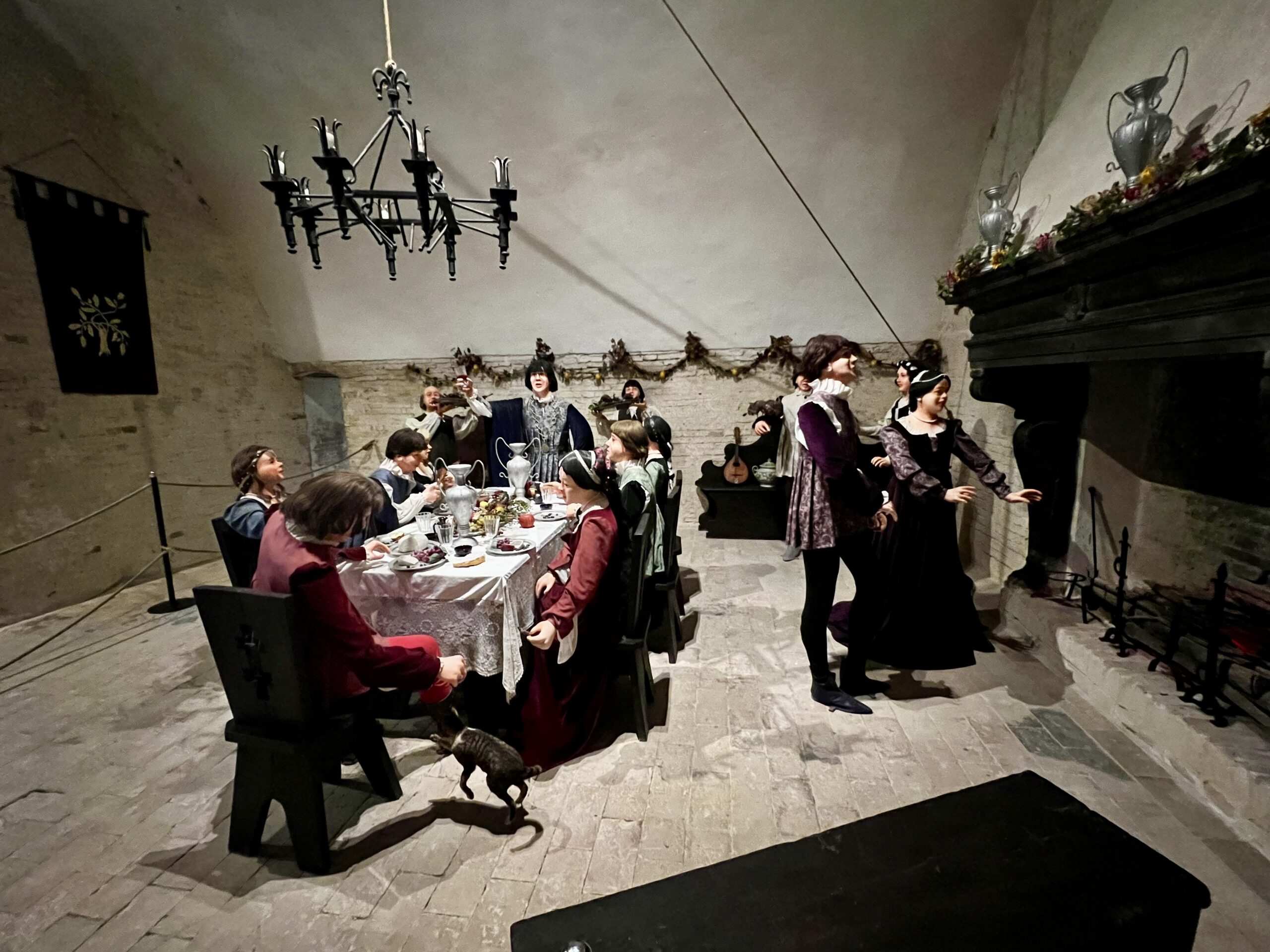
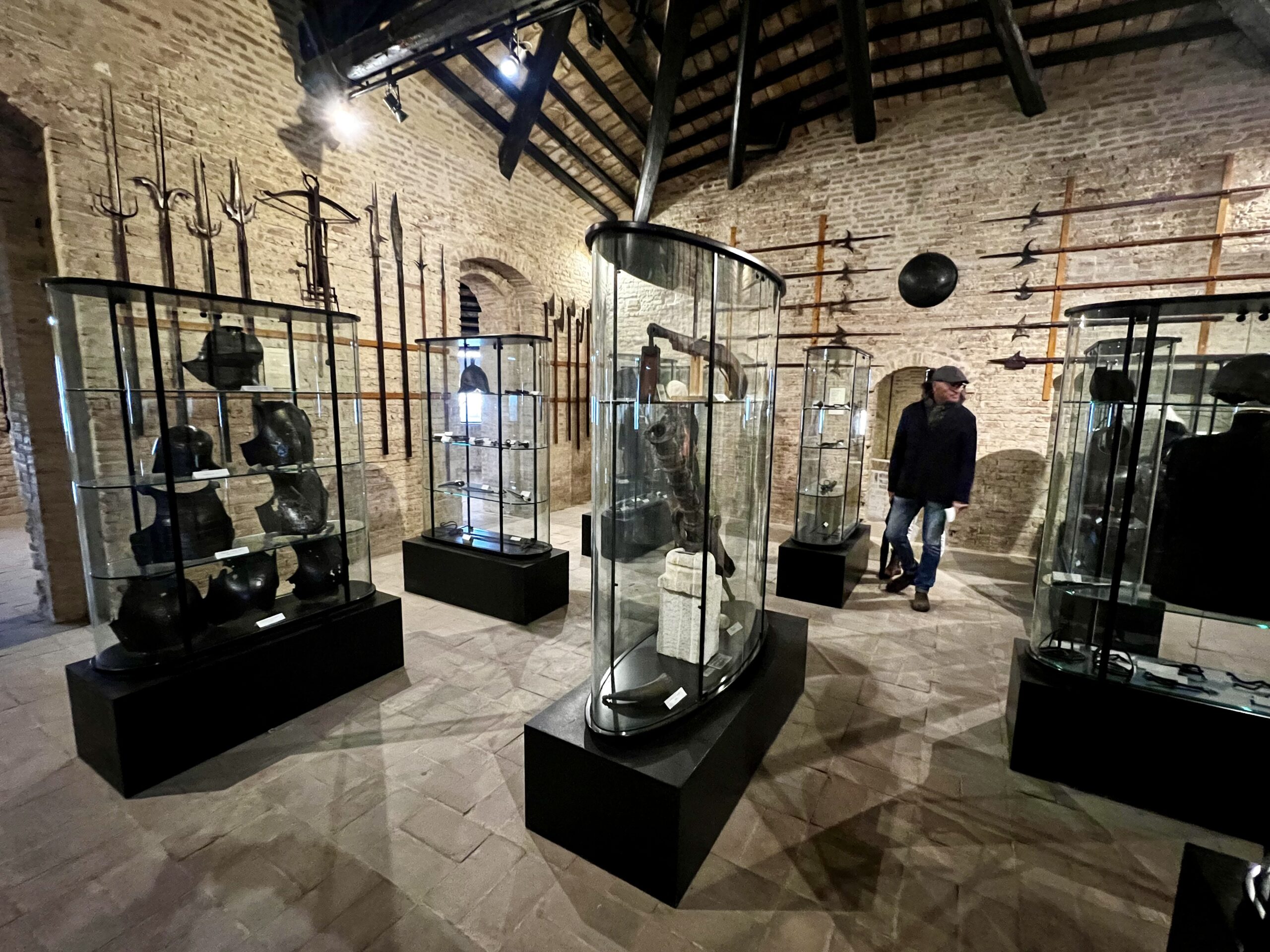
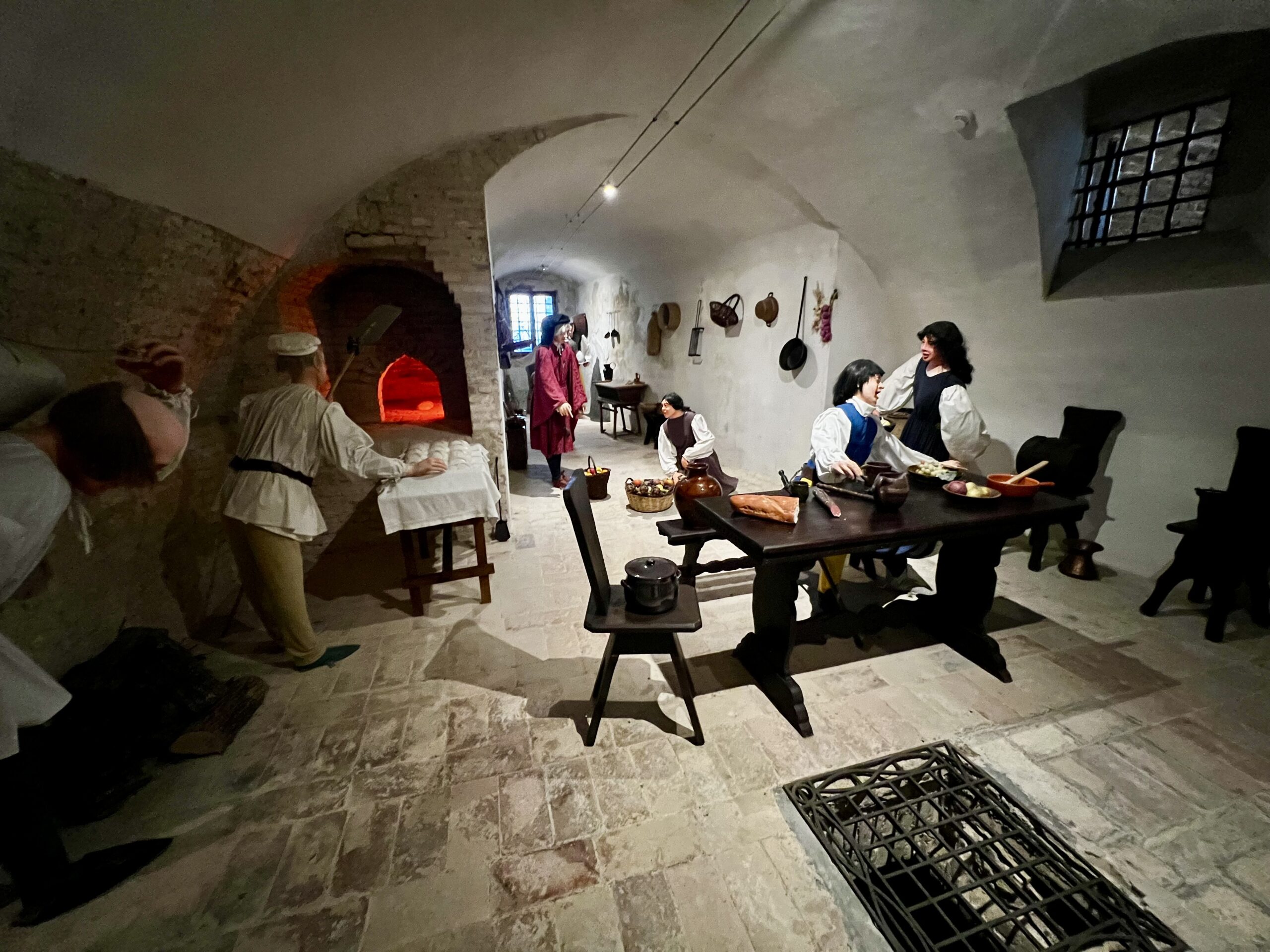

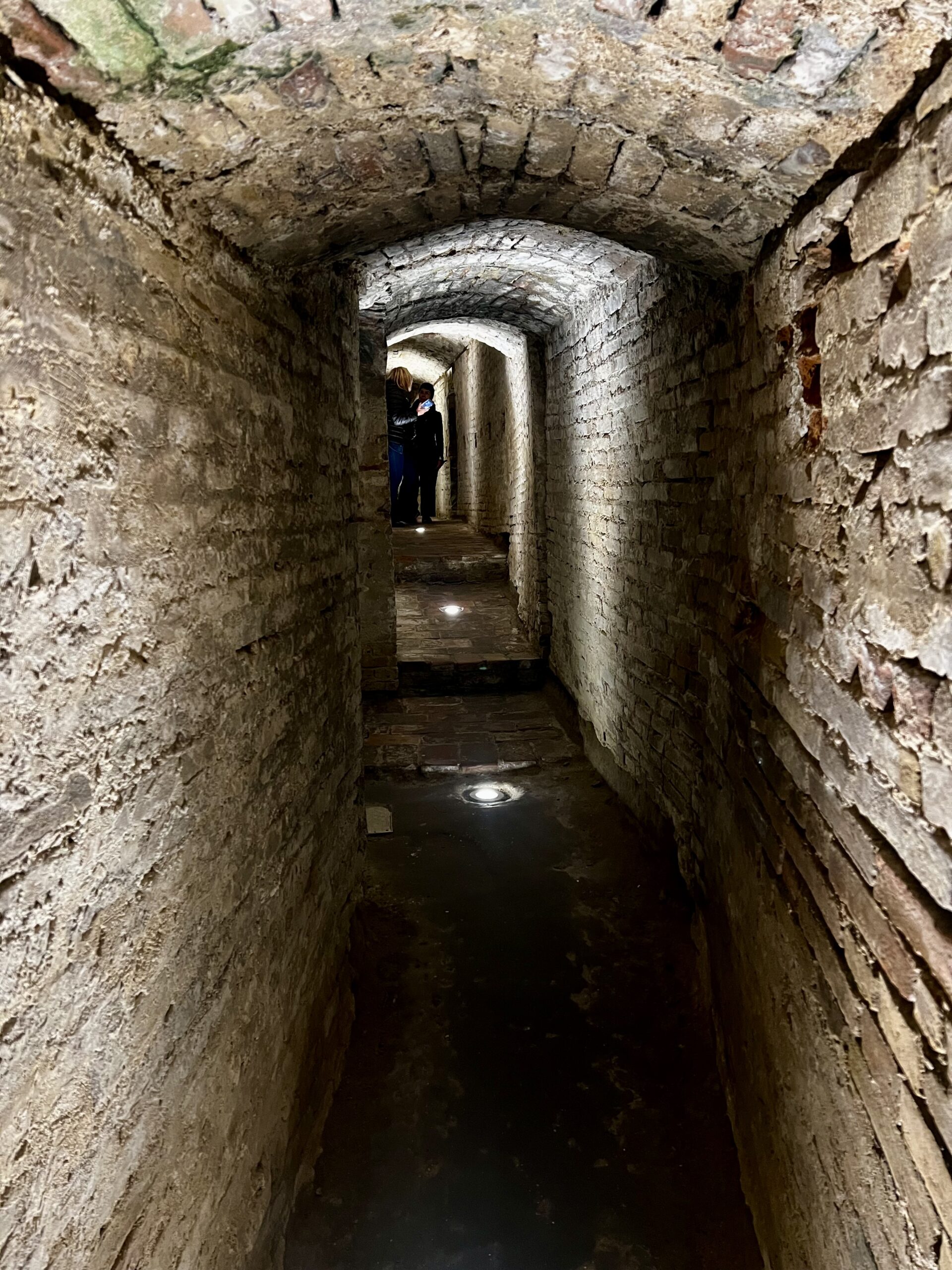
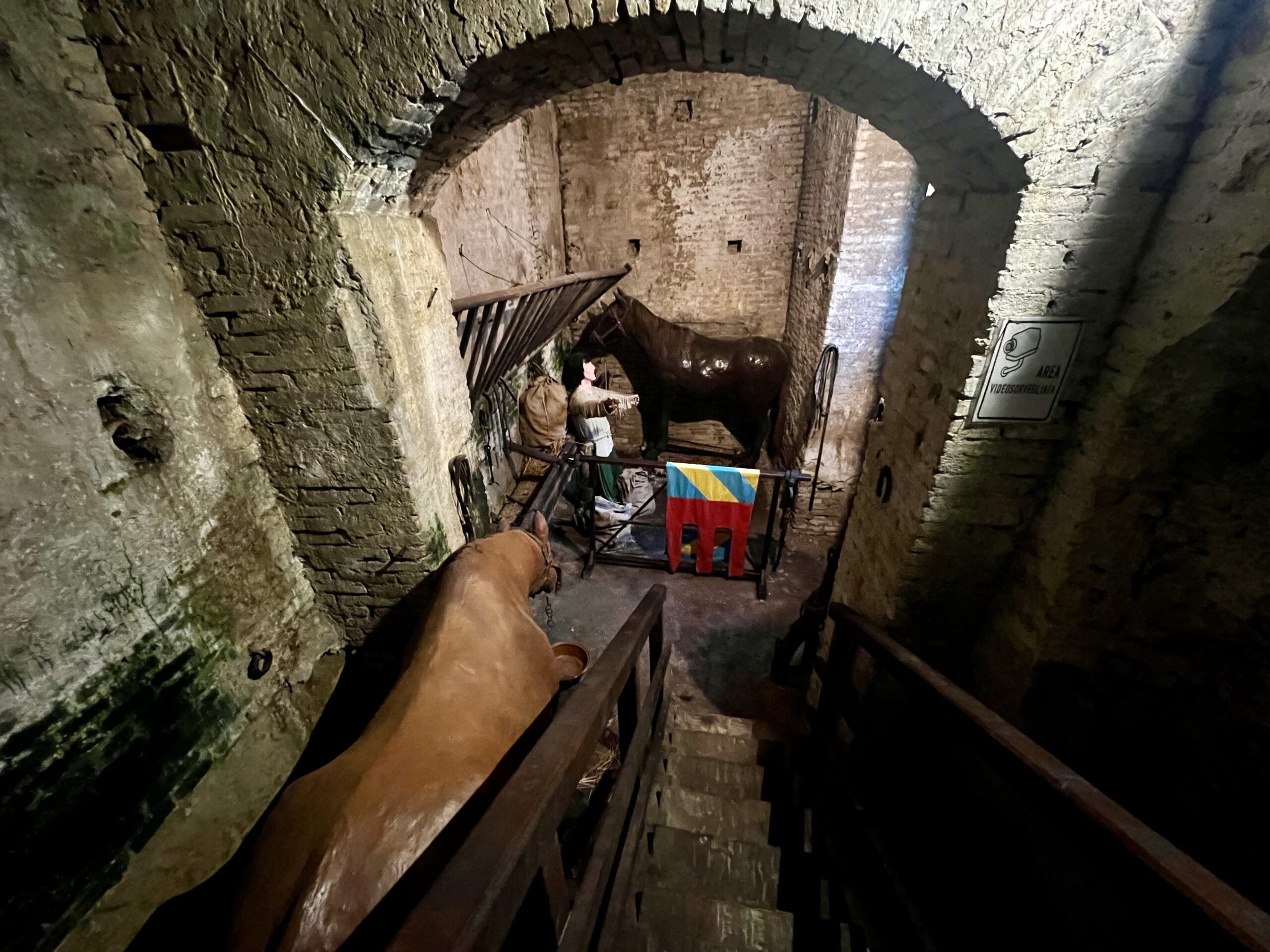
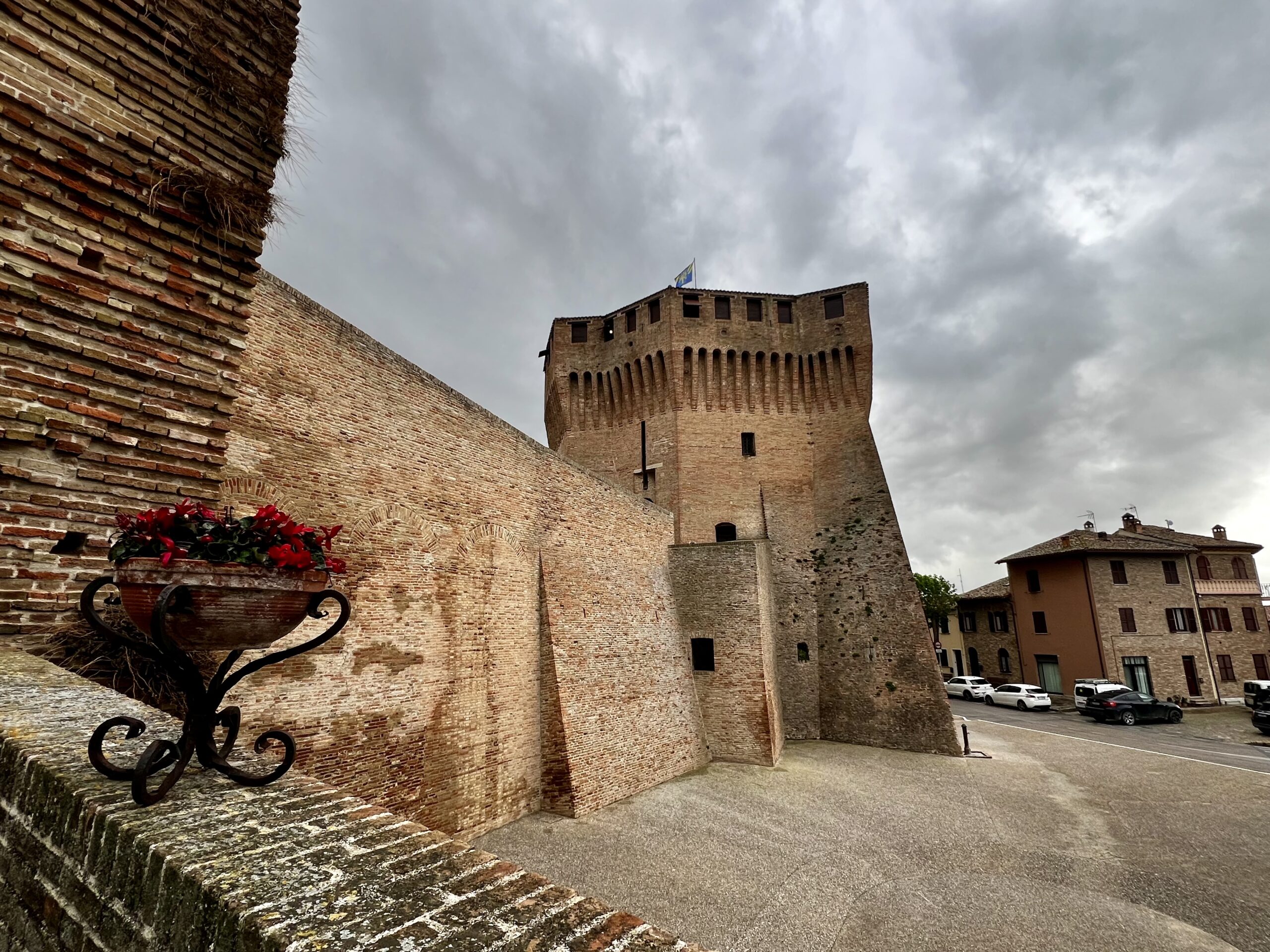
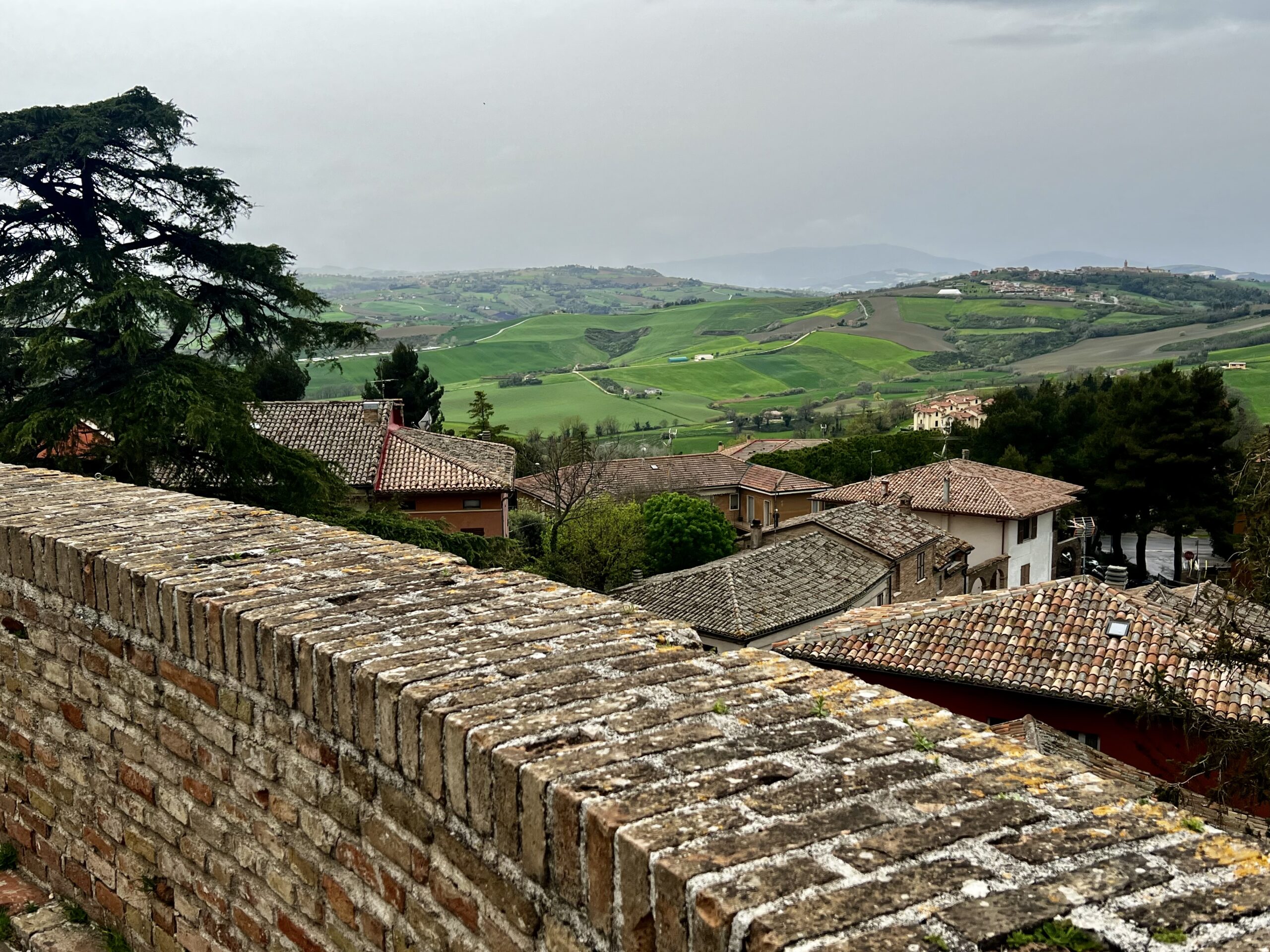
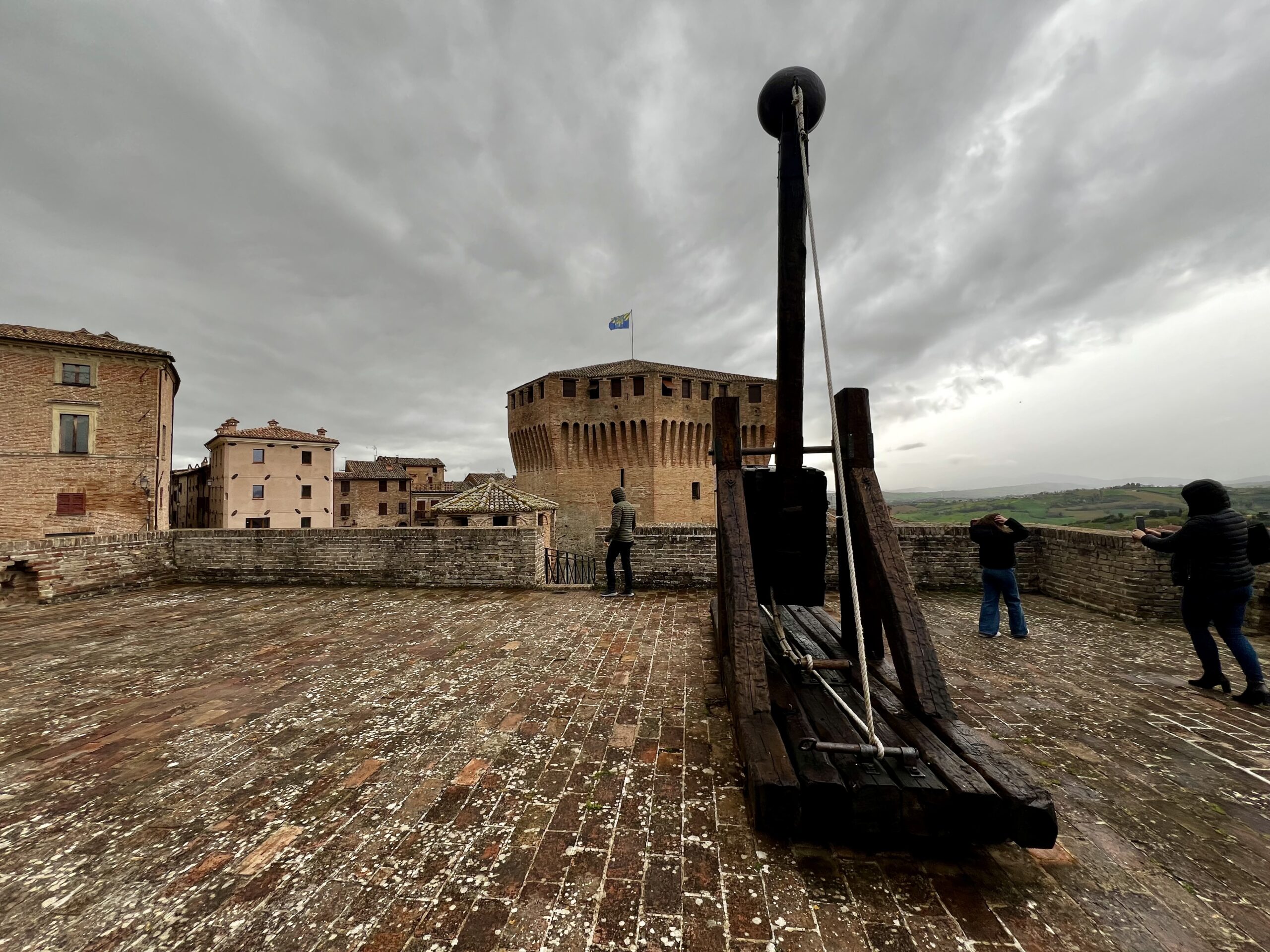
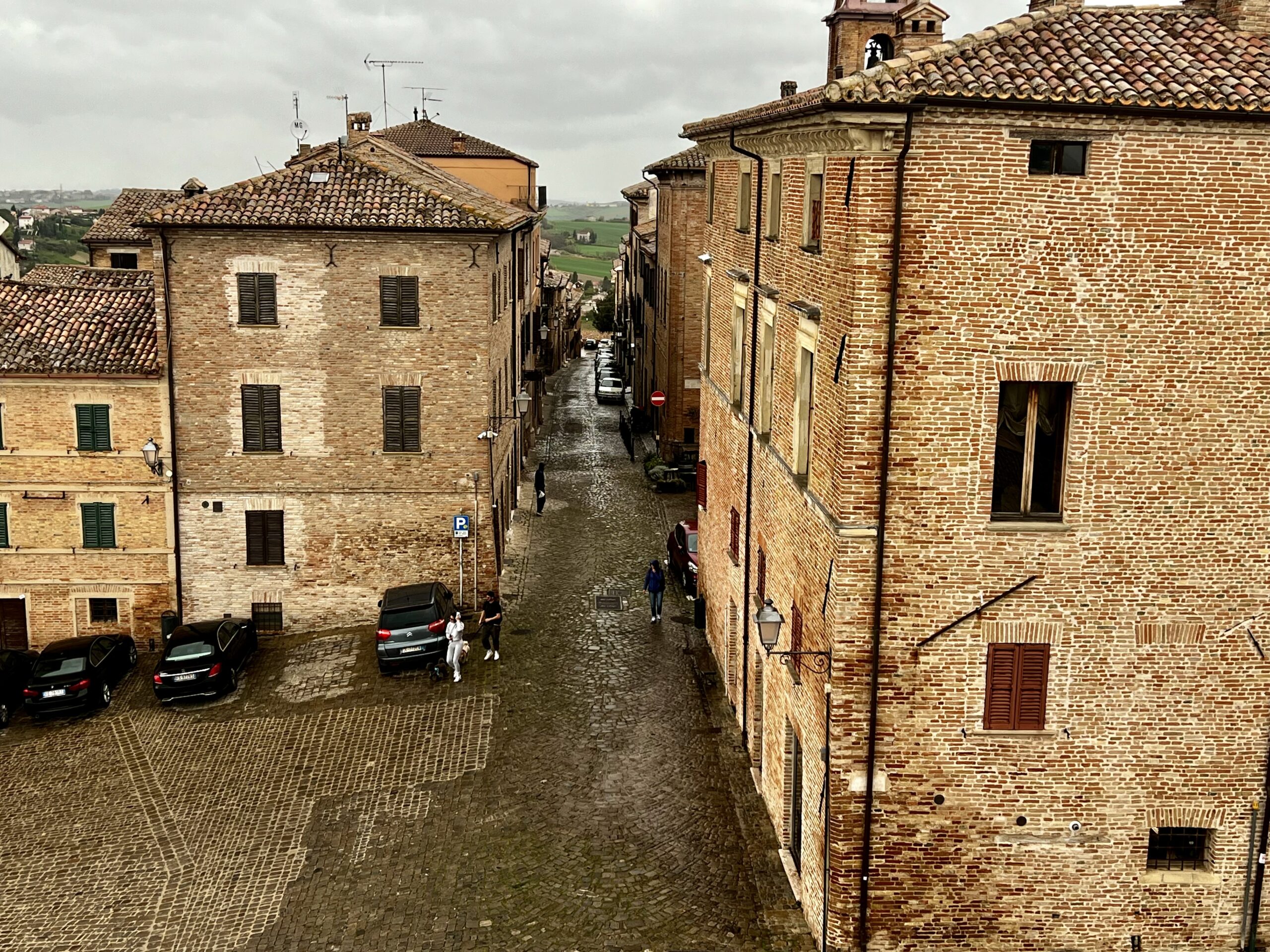
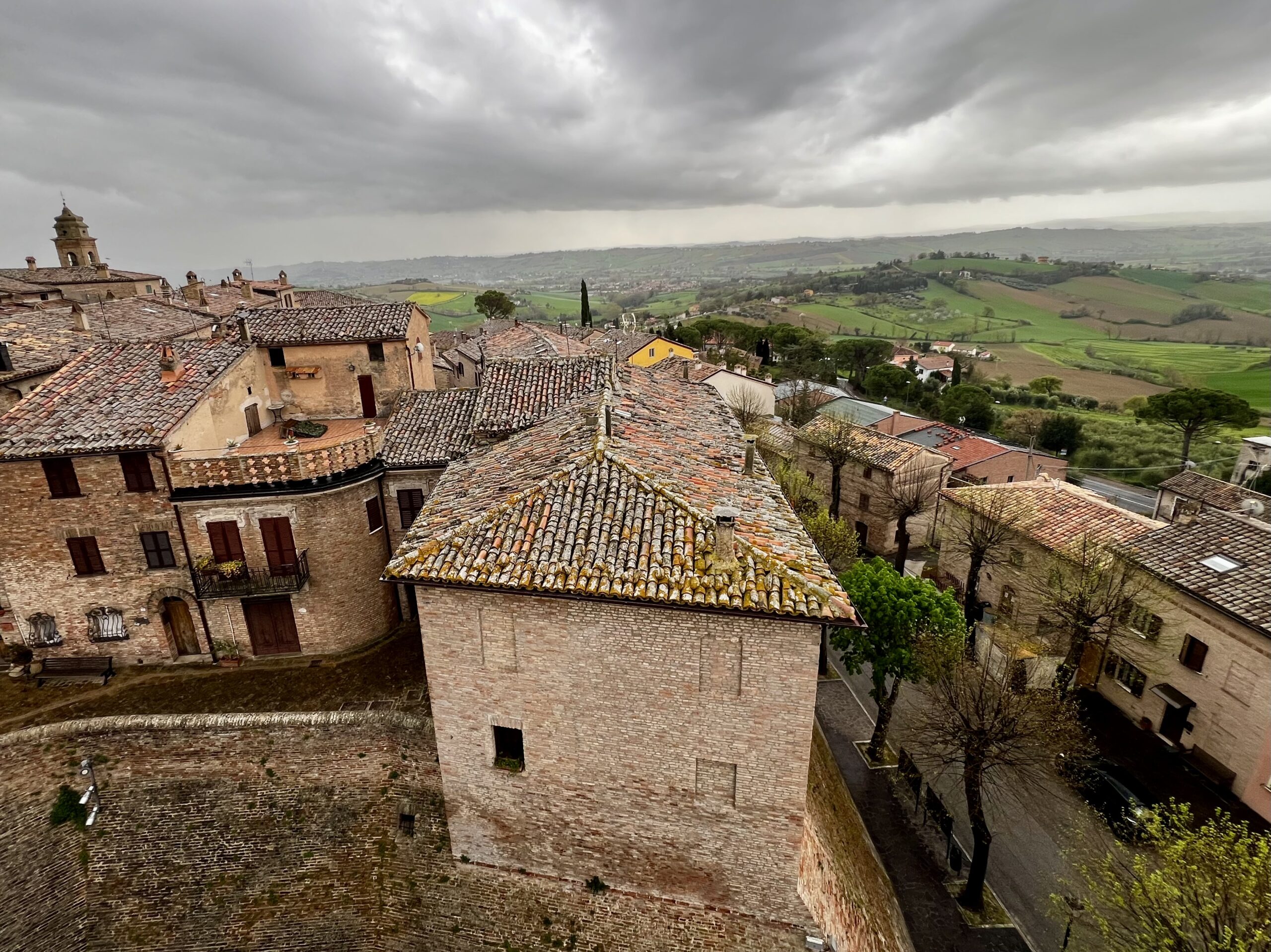
Apollo Theater
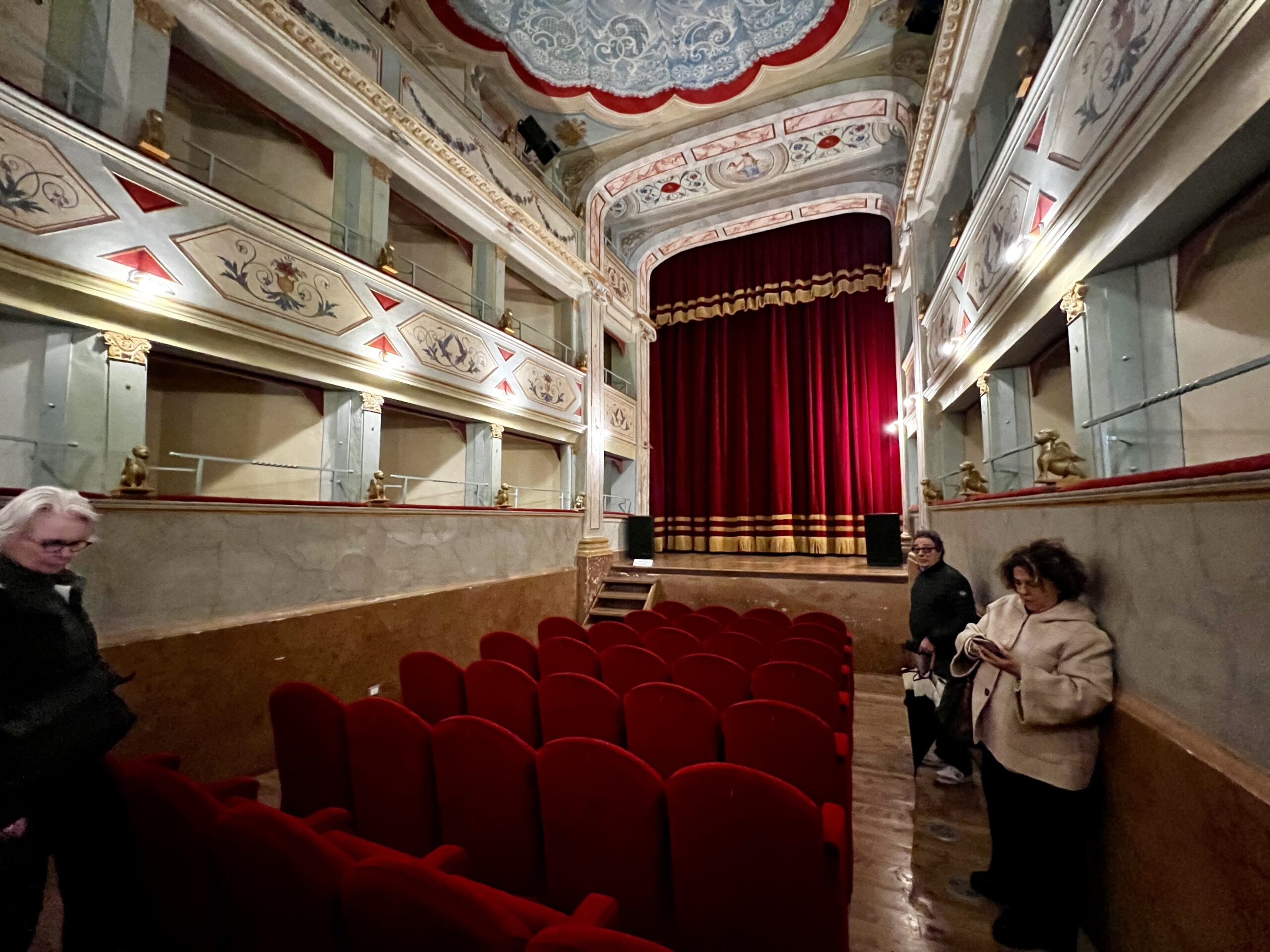
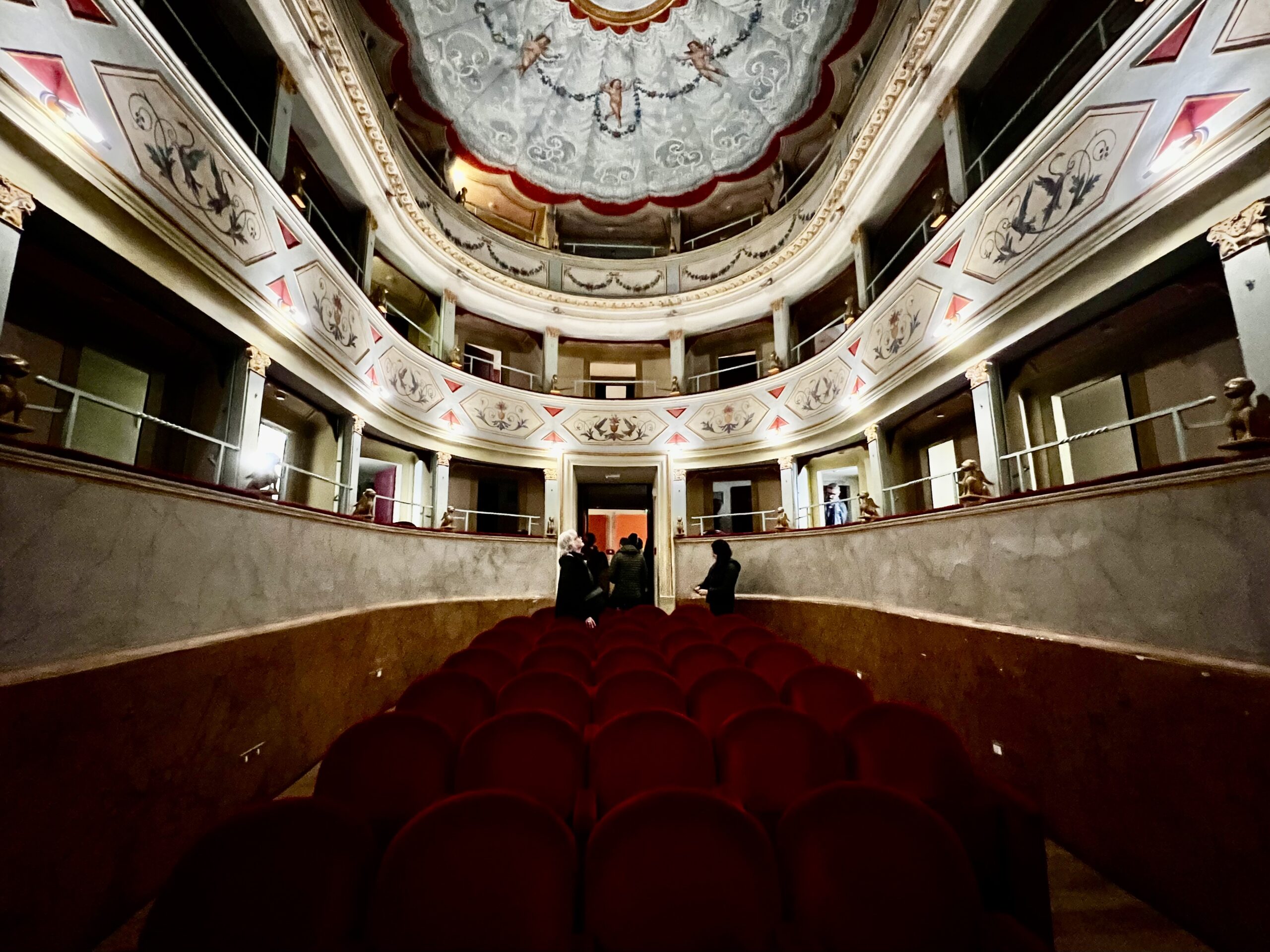
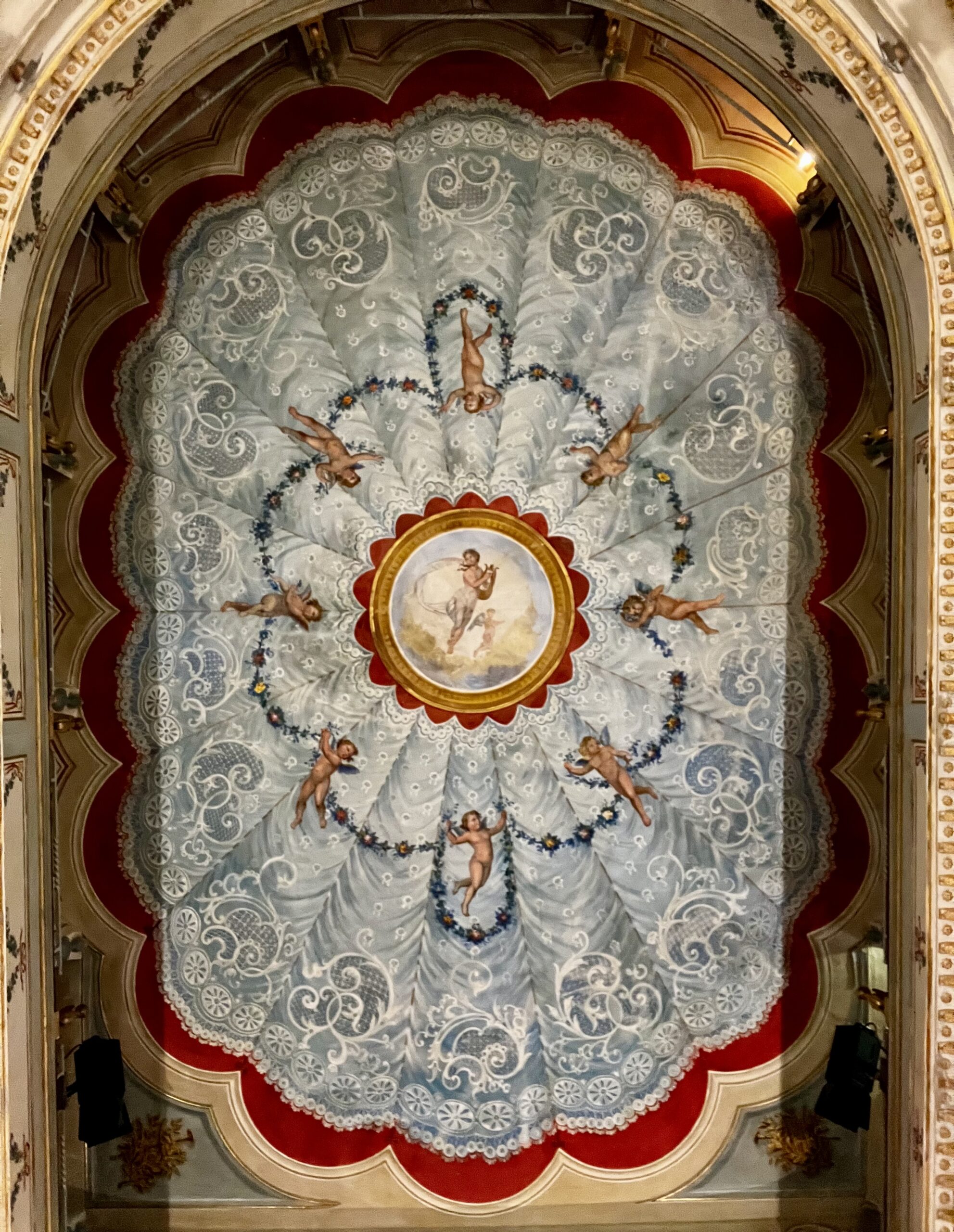
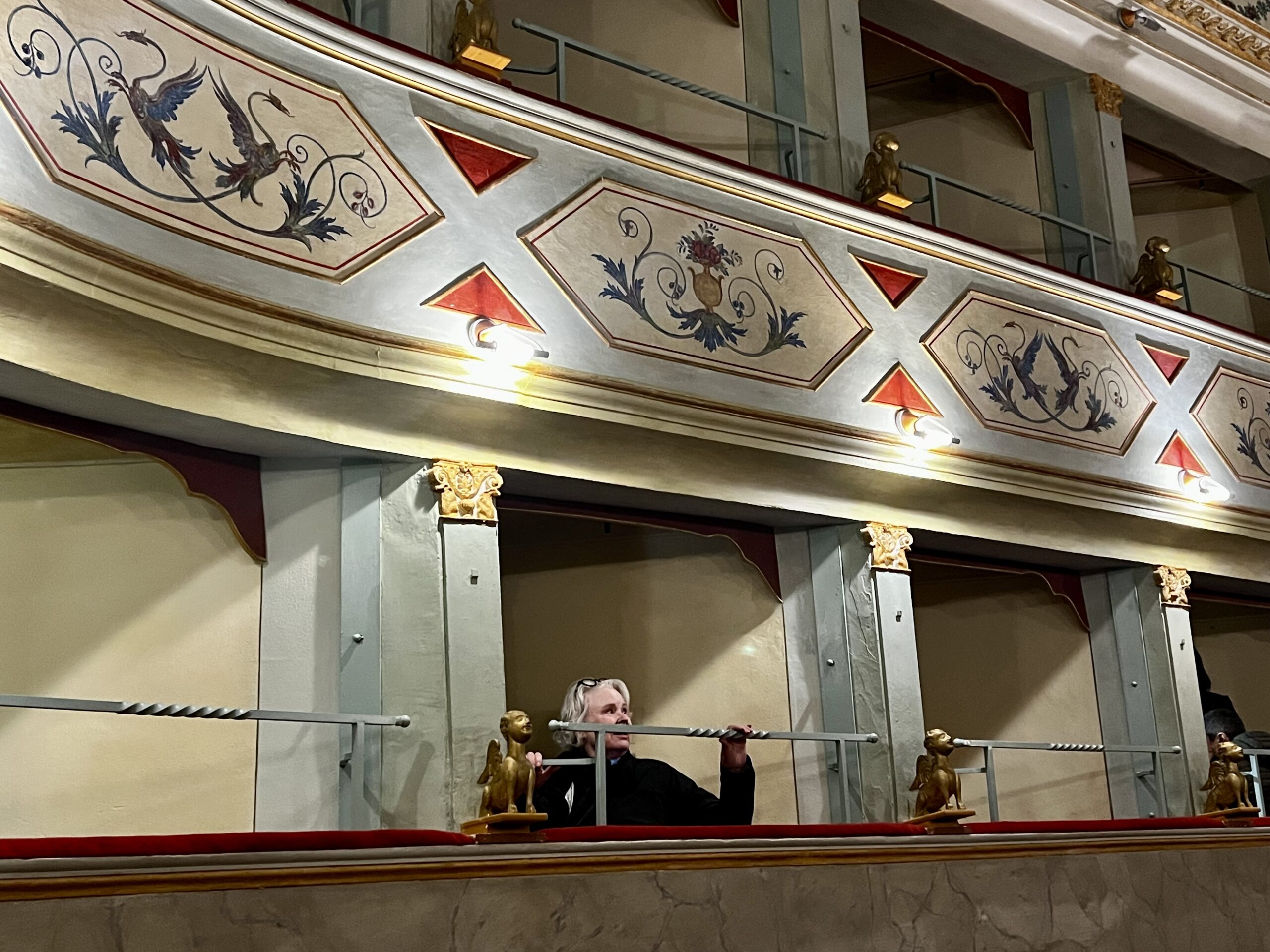
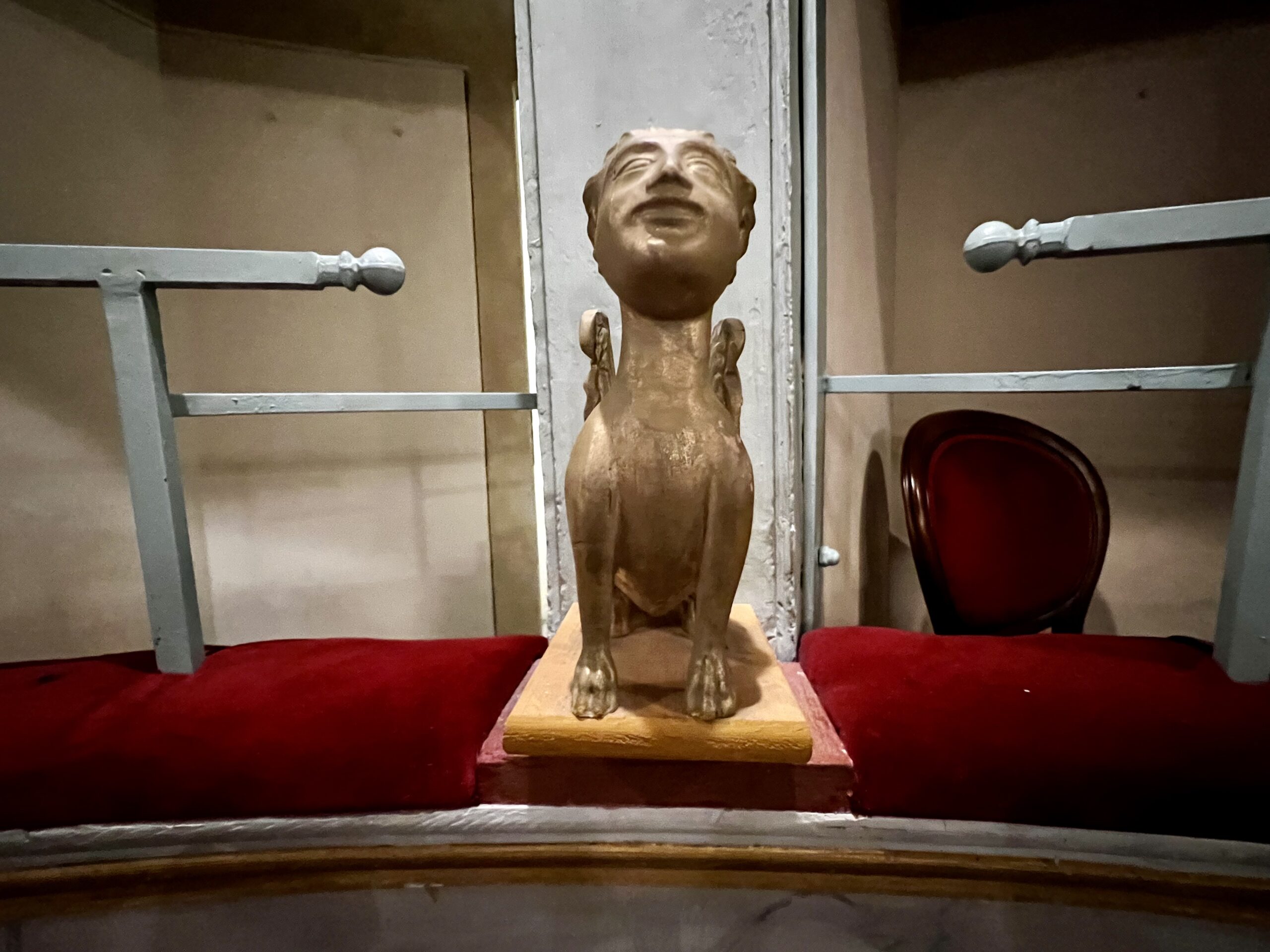
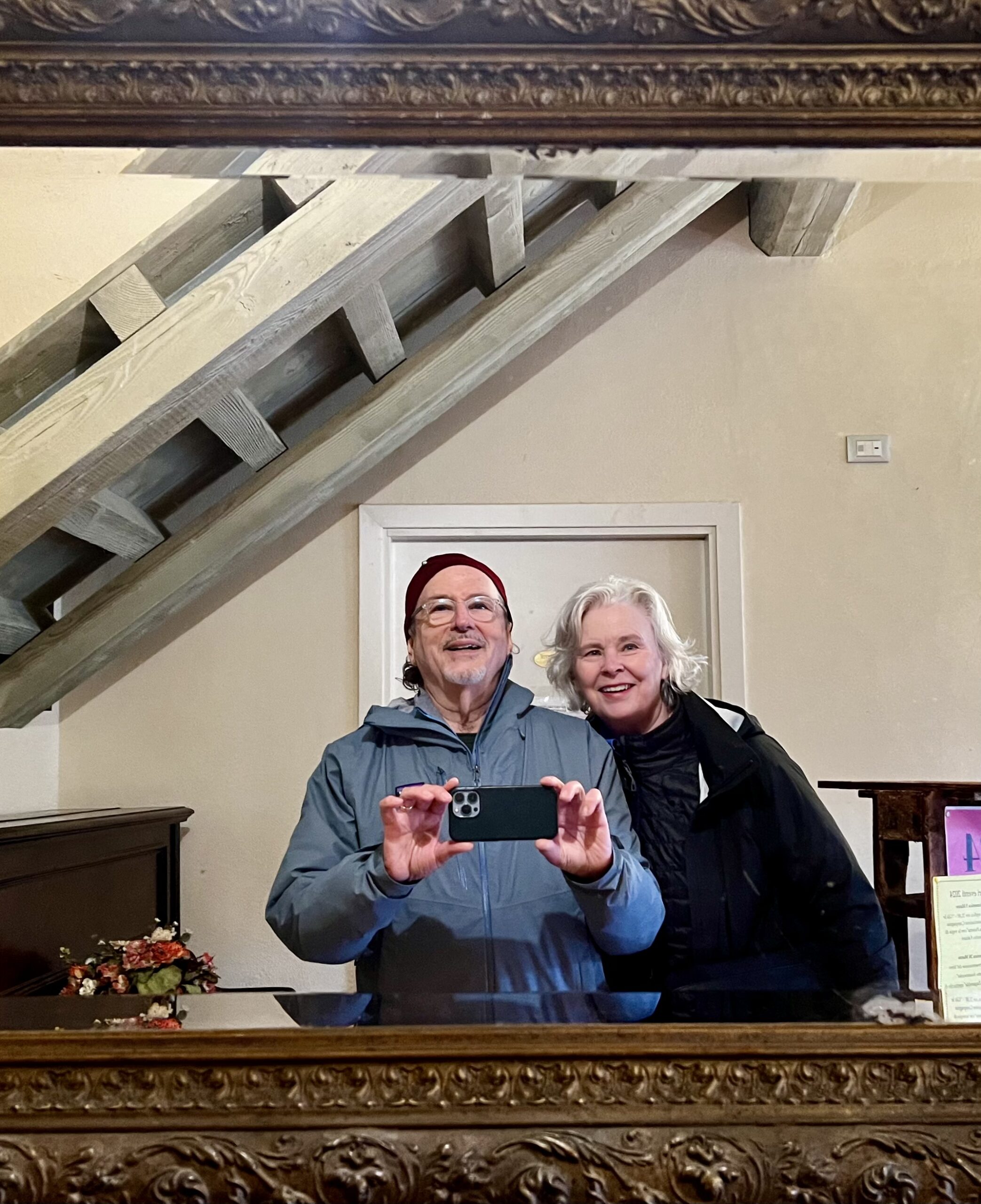
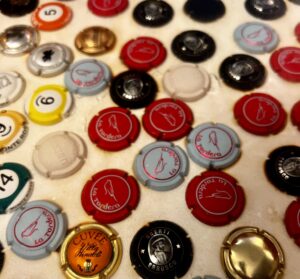
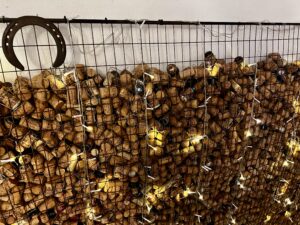
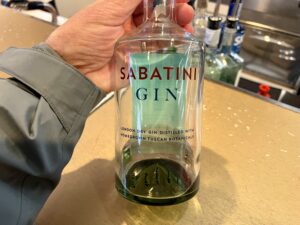
Last Evening in Serra
Adriana and Gino Secondo treated us to pizza in Frontone. The pizza there is very thin and very good!
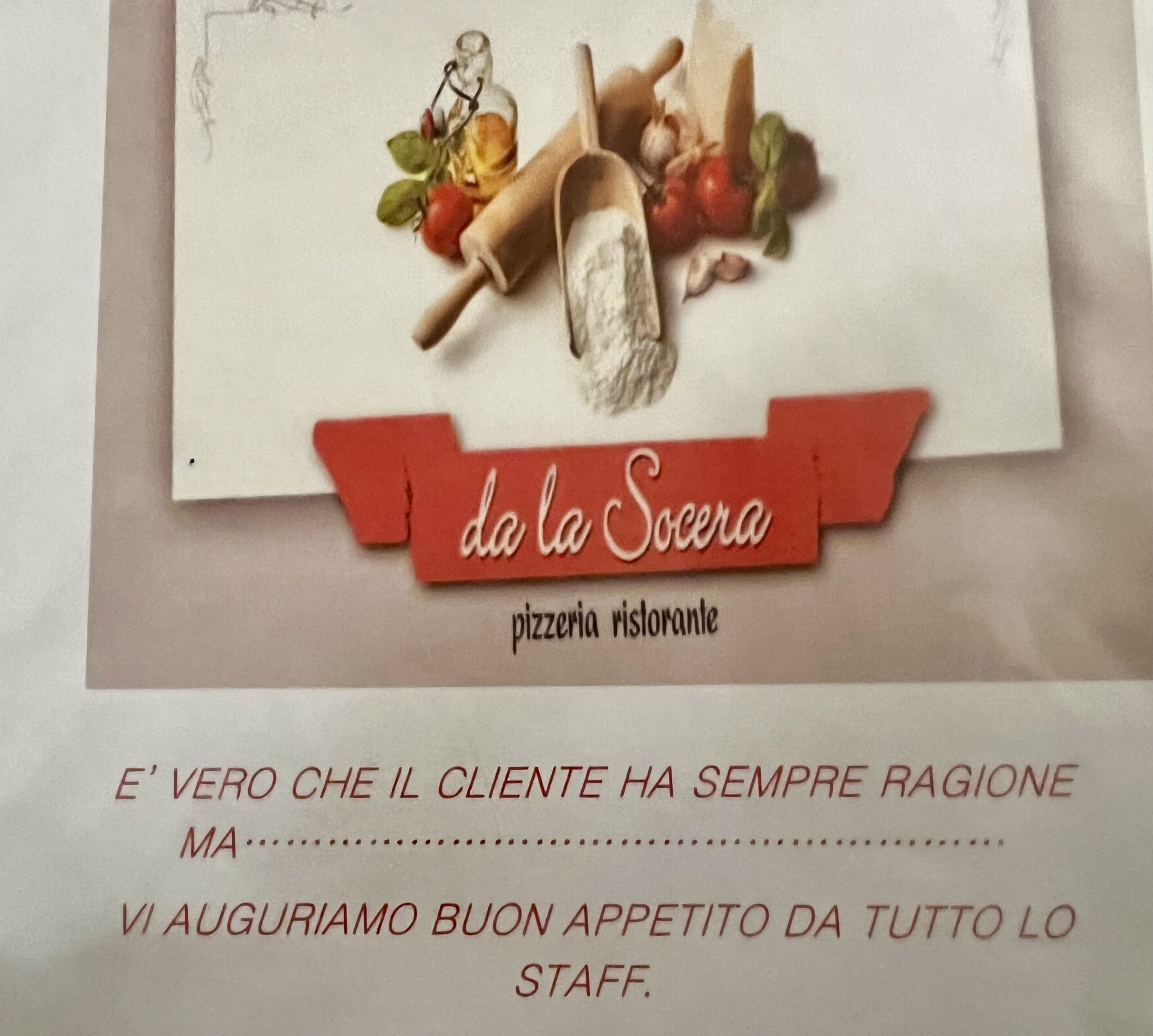
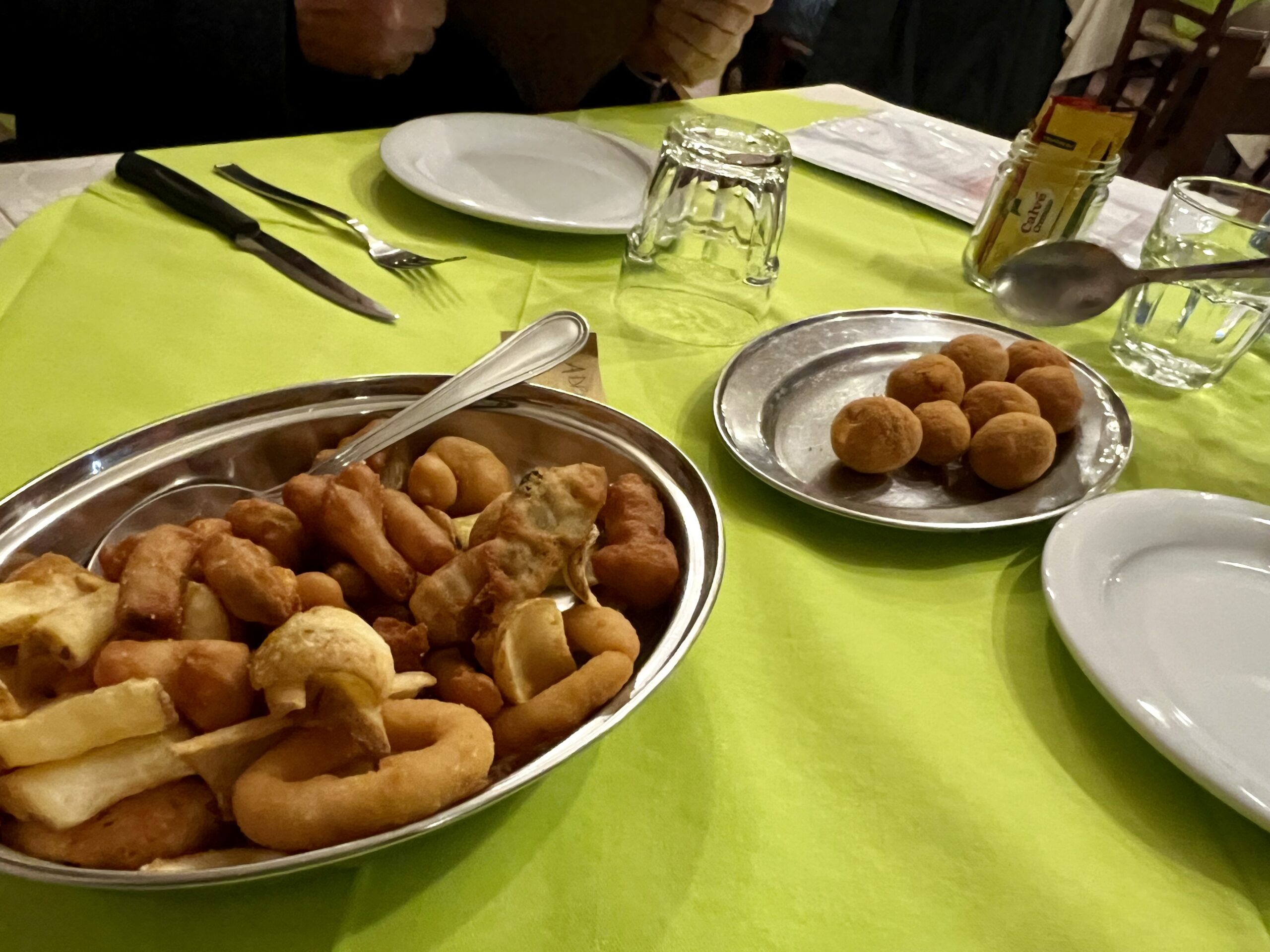
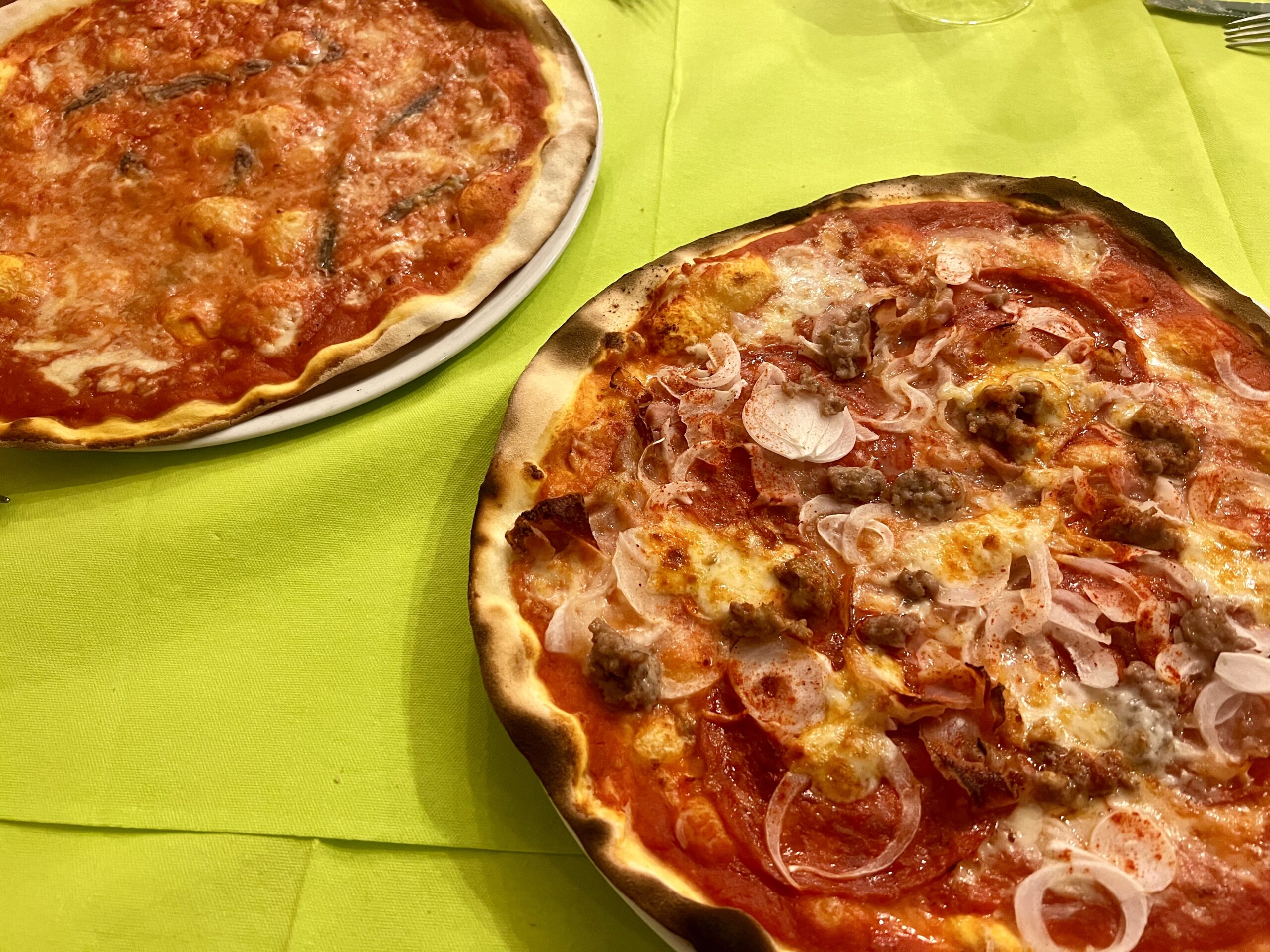
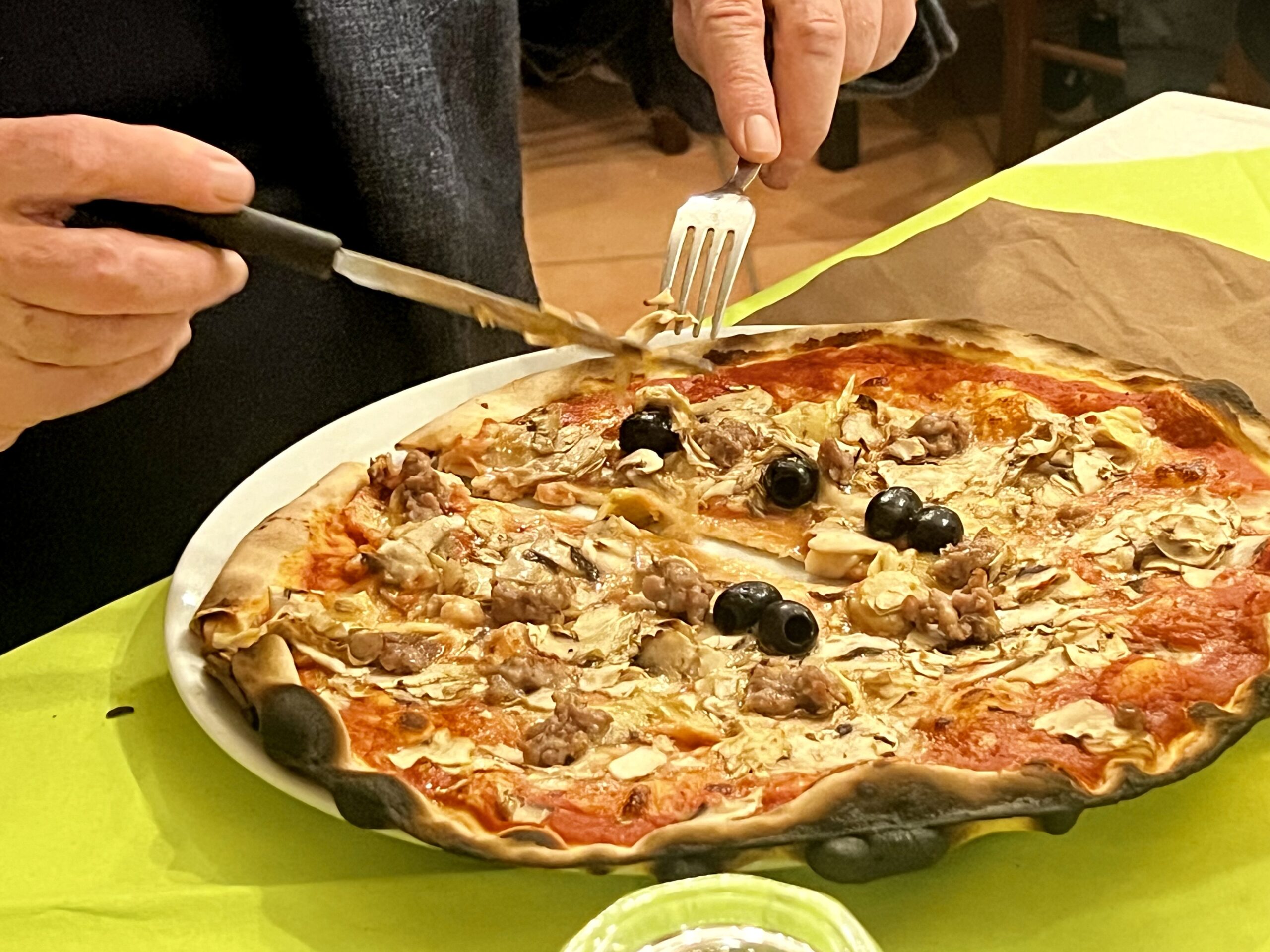
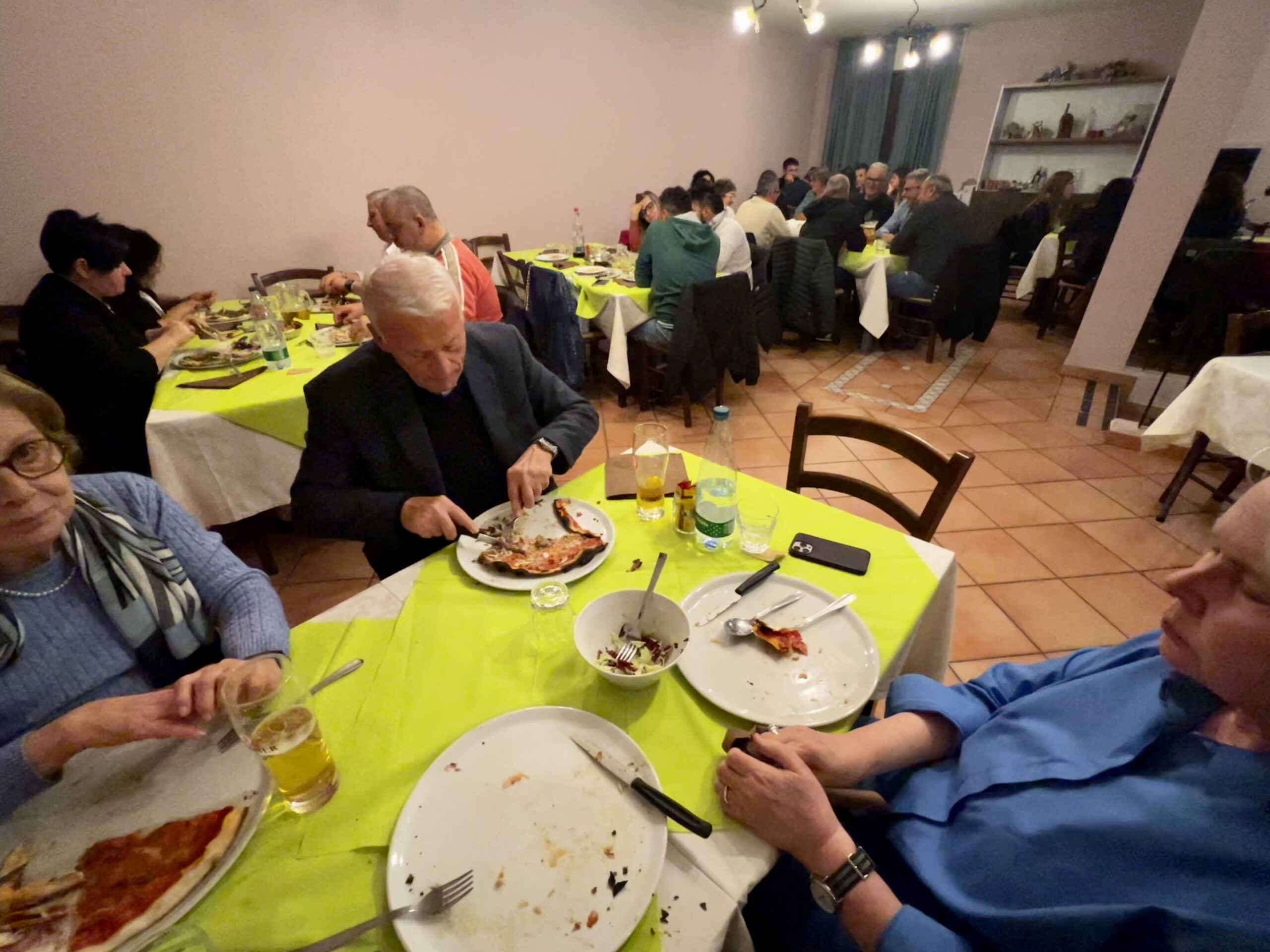
Next— Come Era Una Volta—Serra Sant’Abbondio a 1962
